Hyundai has been made its Santa Fe SUV since 2000. When it was first introduced, the Santa Fe was a compact crossover, but these days, its grown a bit closer to mid-size territory. Three generations have come and gone since the original 2001 model year, with the second-gen appearing at the Detroit Auto Show in 2006, and the third-gen debuting at the New York Auto Show in 2012. We last saw the Santa Fe in its refreshed third-gen form at the 2016 Chicago Auto Show, but now, there's a fourth-gen arriving to tempt buyers. Recently introduced at the Hyundai Motorstudio in Goyang, the 2019 Santa Fe brings with it a fresh exterior aesthetic, new gear in the interior, a premium cabin layout, extra passenger space, and a new eight-speed automatic transmission to boot.
All told, it's a solid lineup of features, but that's what you need these days keep pace with the horde of competition already out there. Hyundai doesn't seem too worried, though. The Santa Fe is the brand's best-selling SUV in the U.S. market, moving as many as 1.5 million units. Look for further SUV models from Hyundai in the future, but for now, read on to find out what makes the Santa Fe so desirable.
Continue reading to learn more about the 2019 Hyundai Santa Fe.
2019 Hyundai Santa Fe
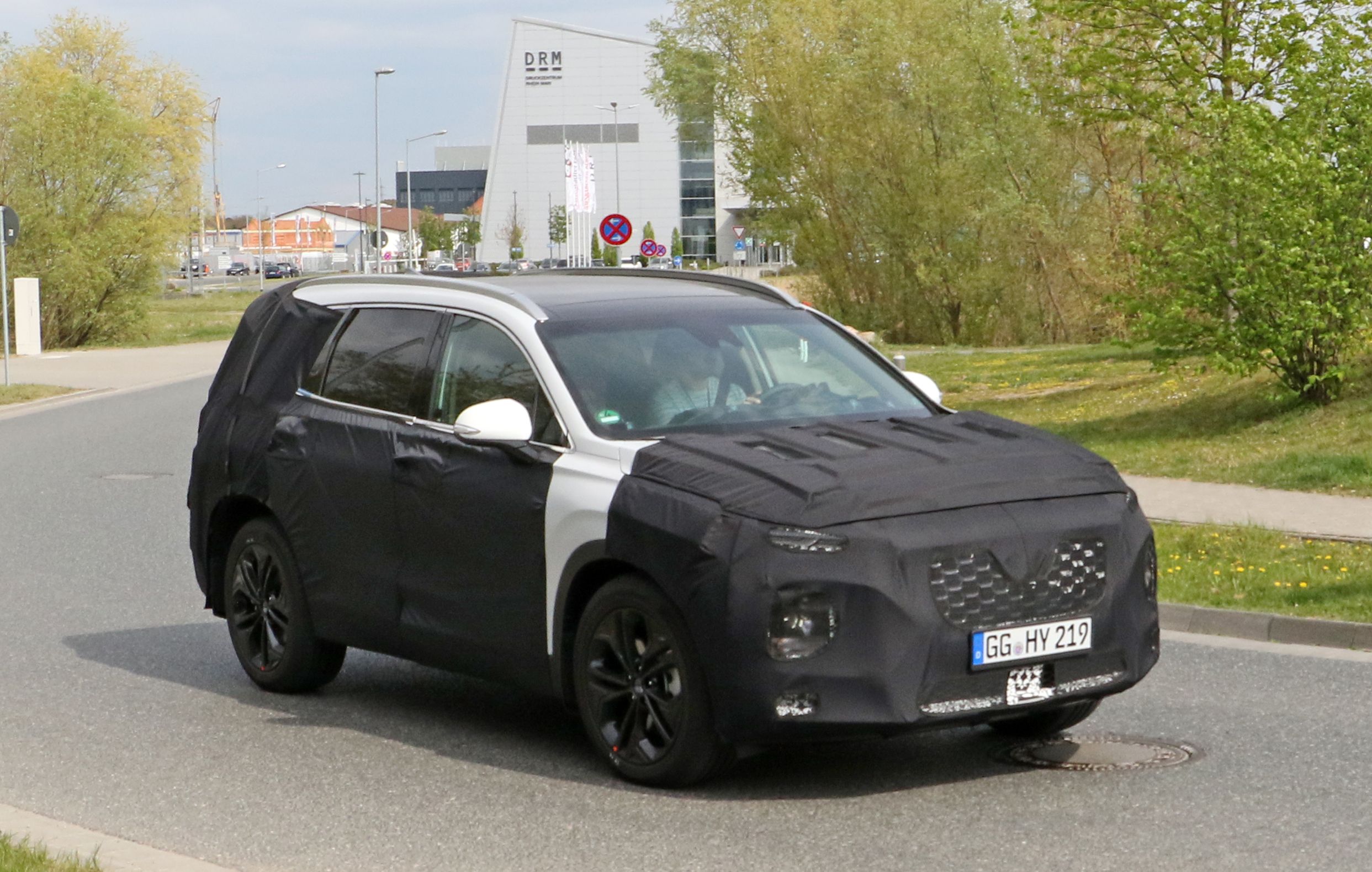

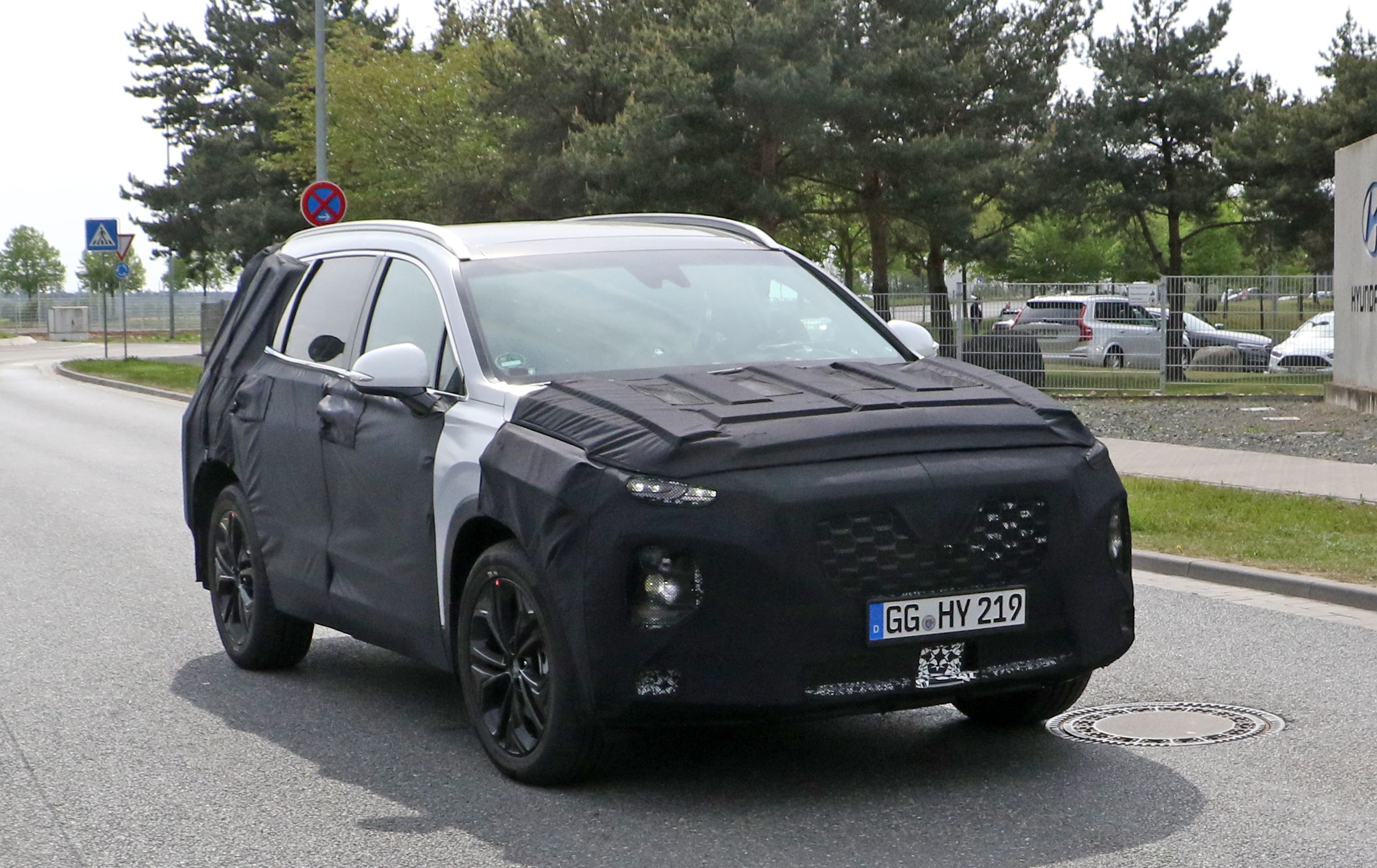
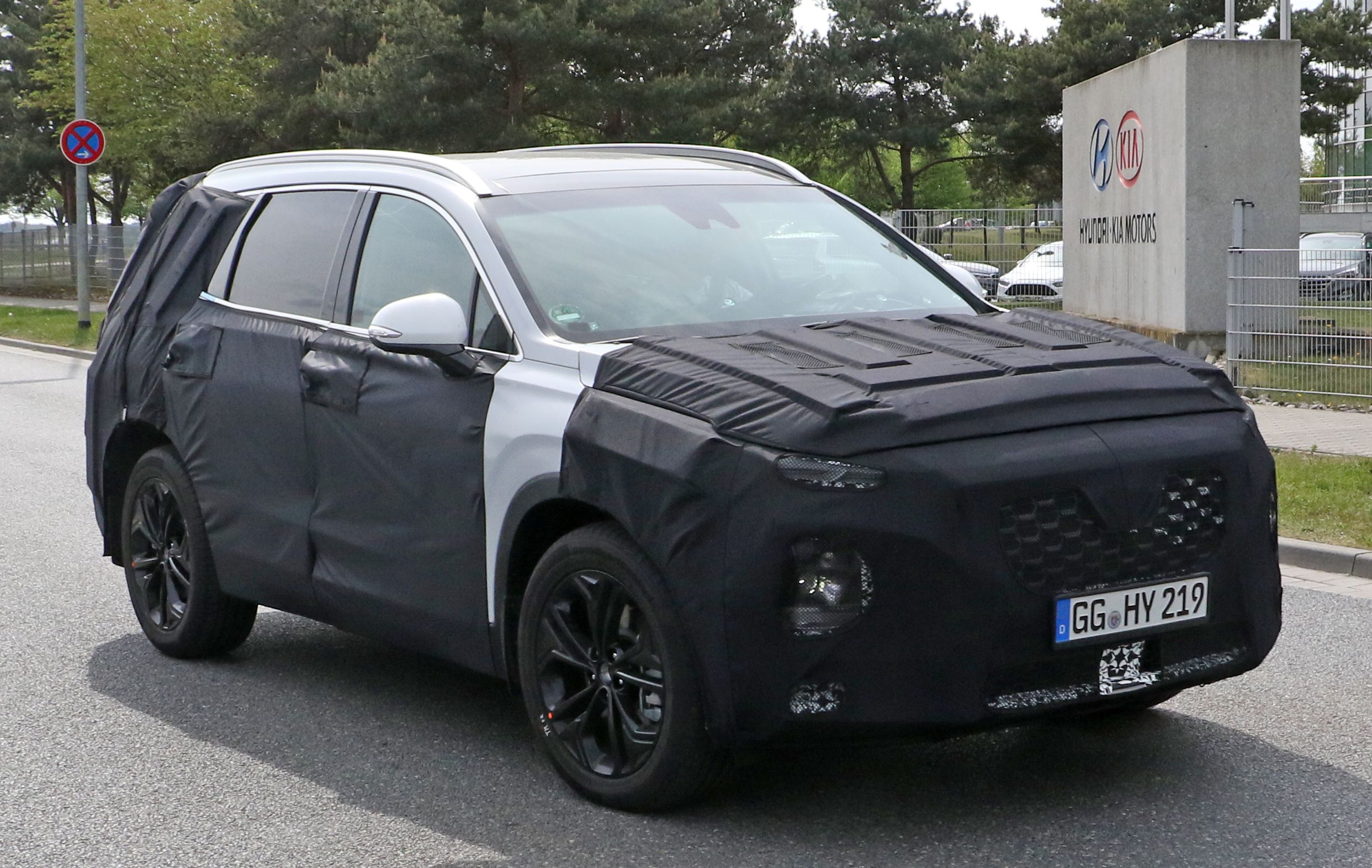
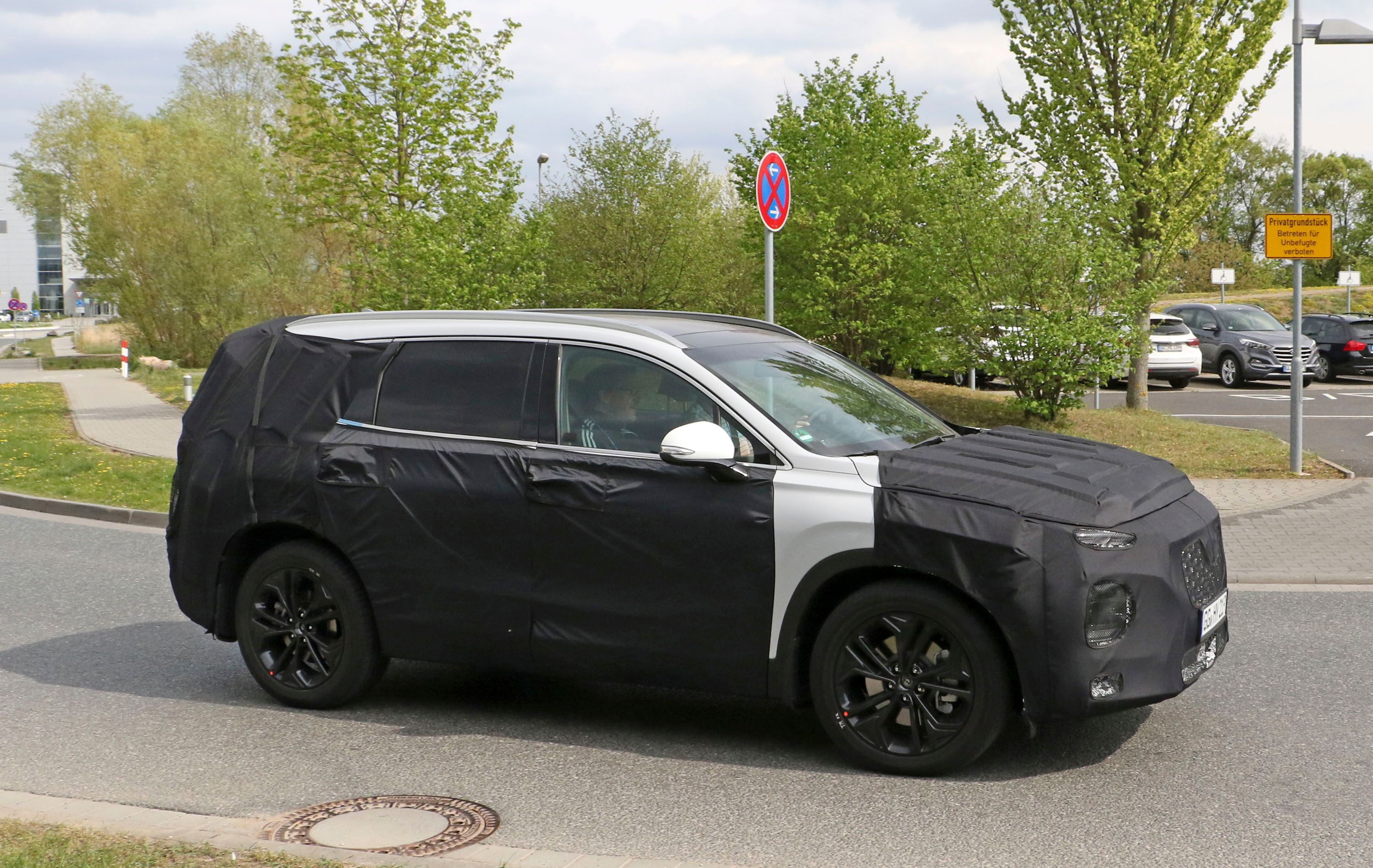
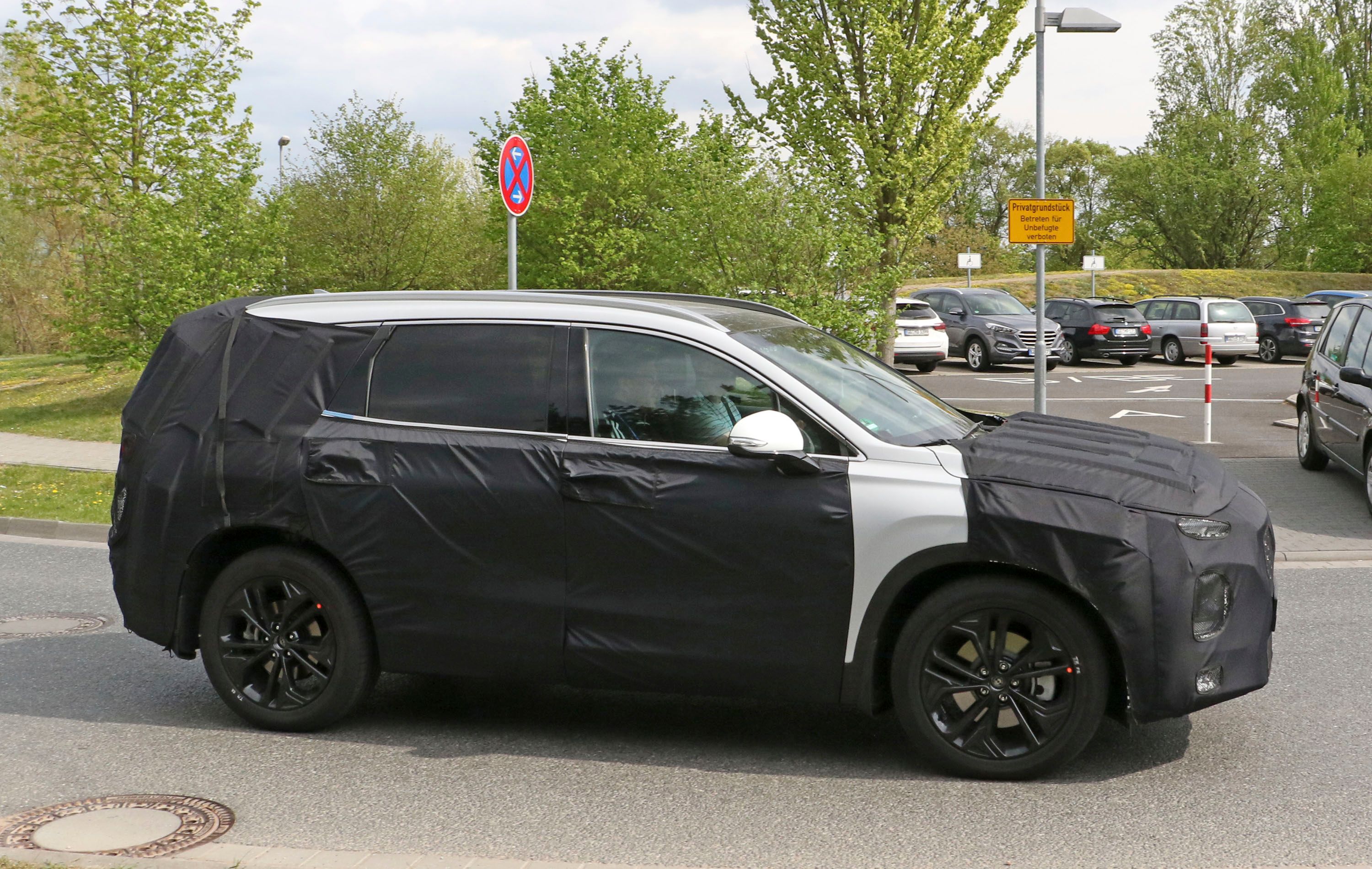
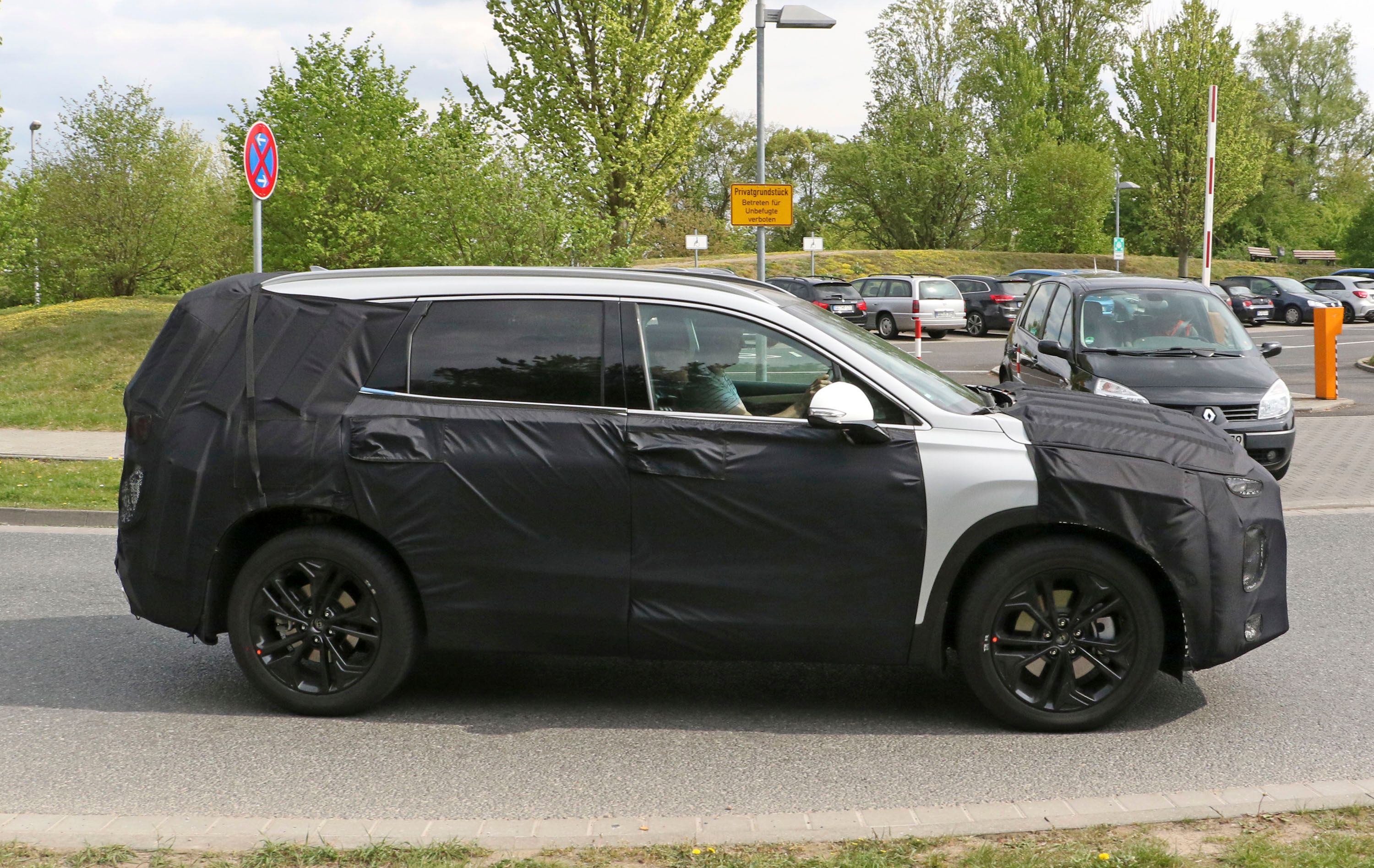
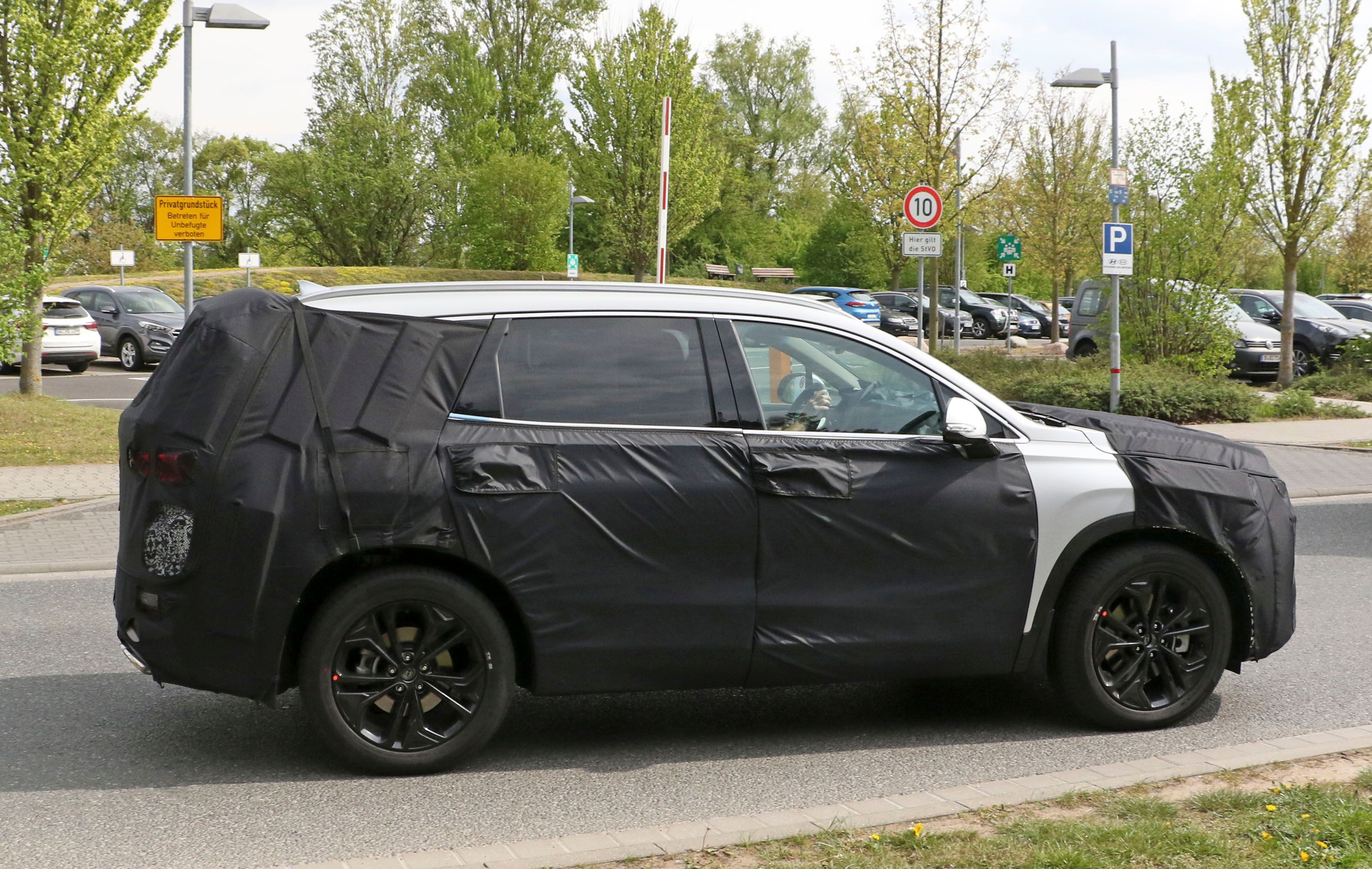
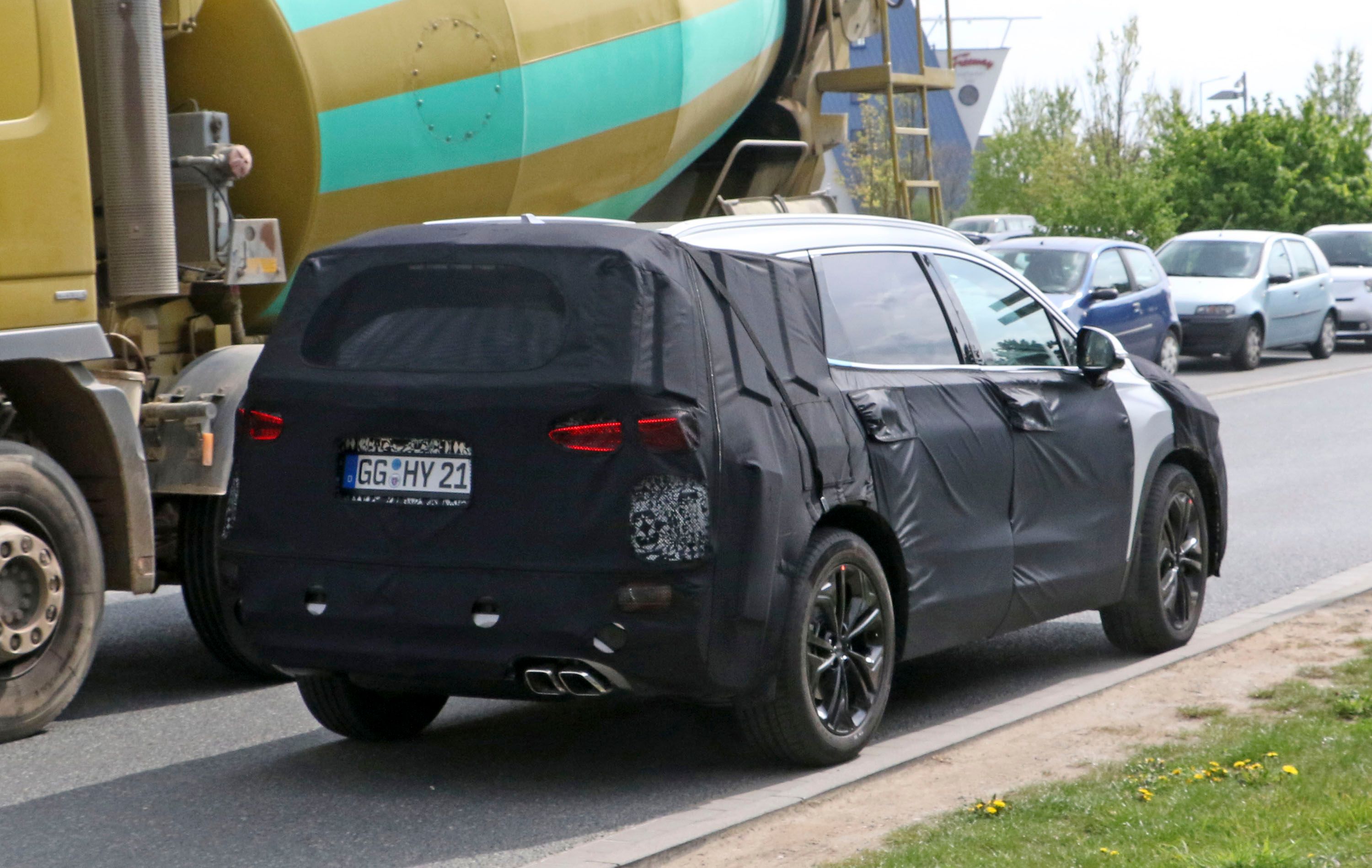
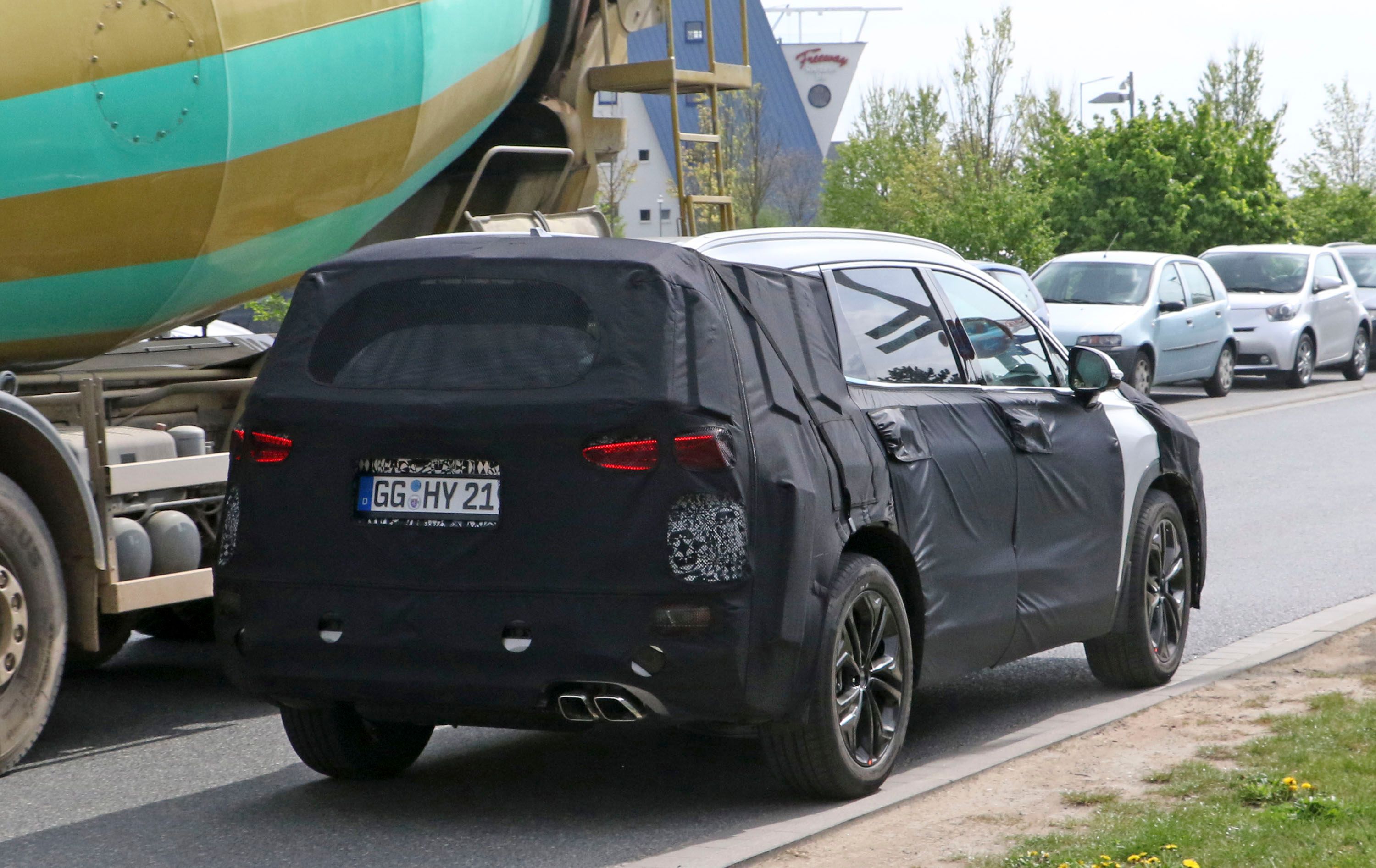
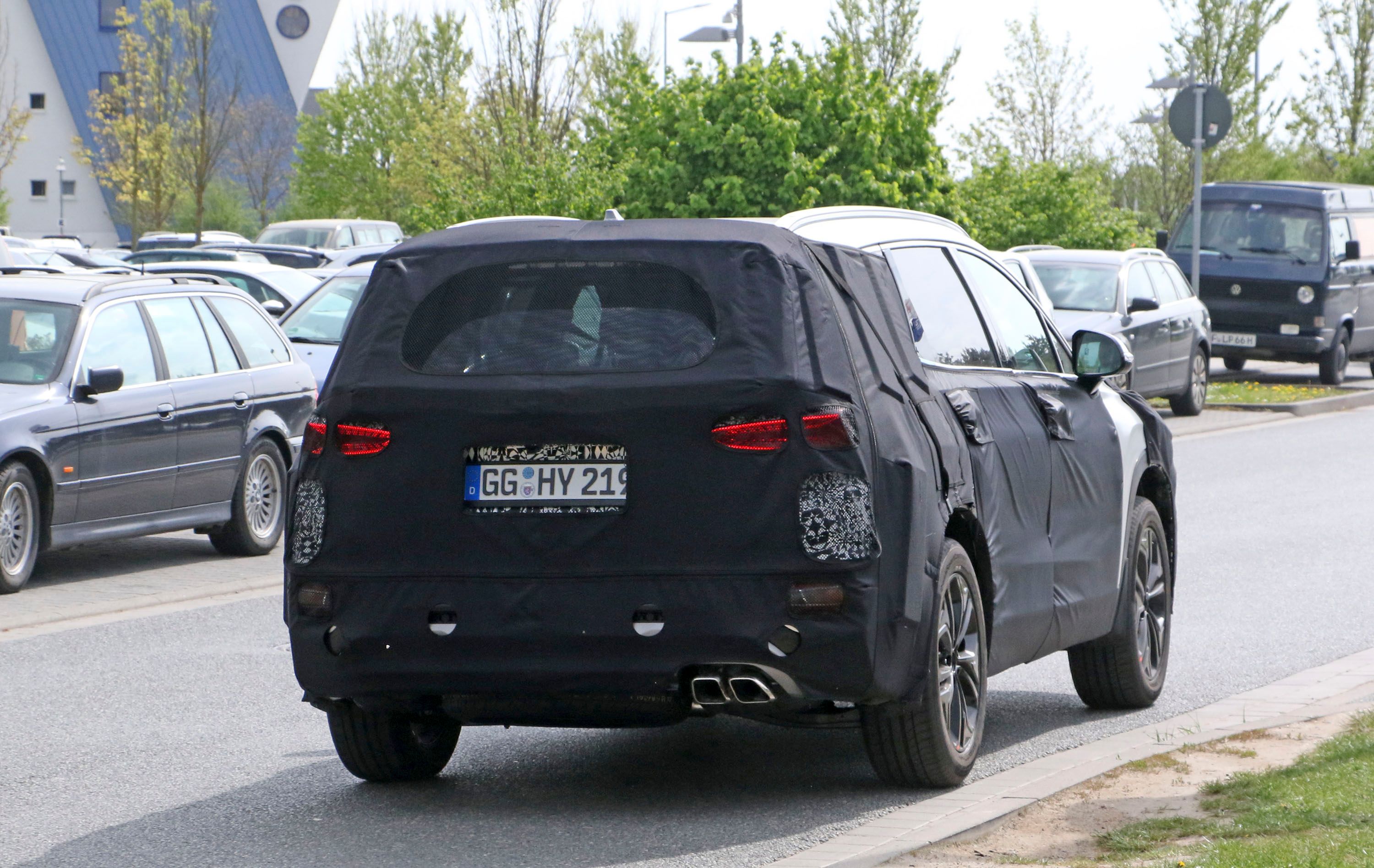
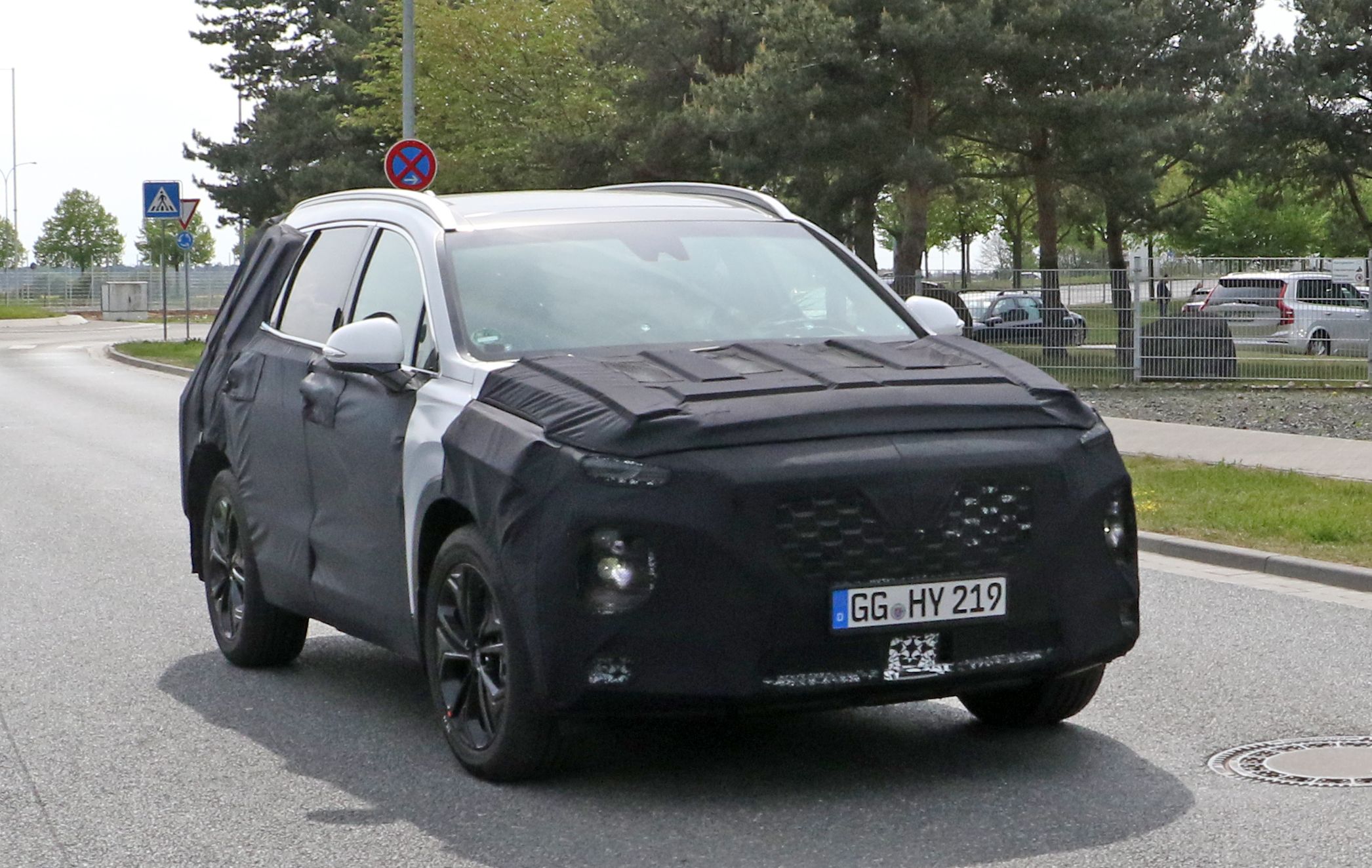
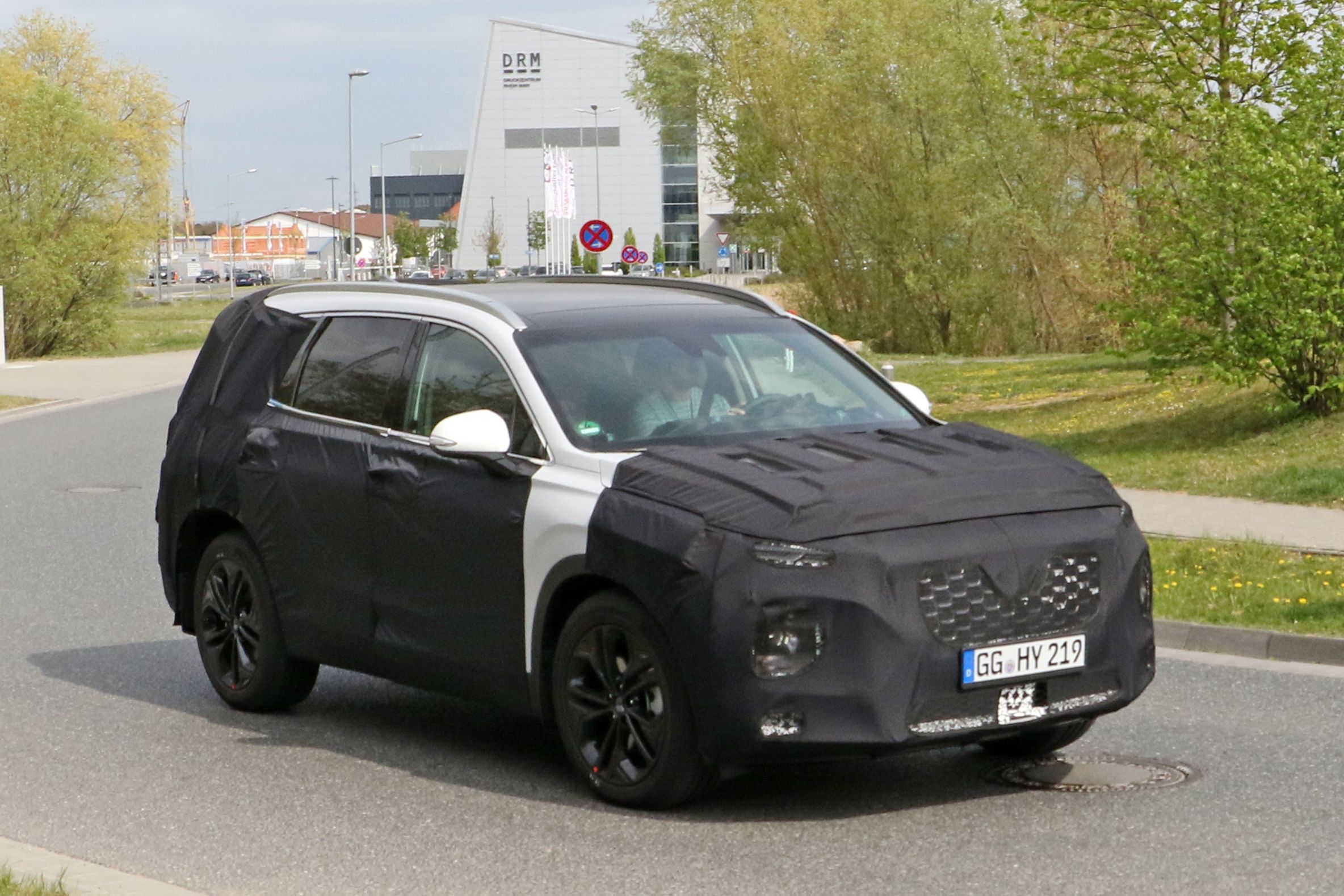
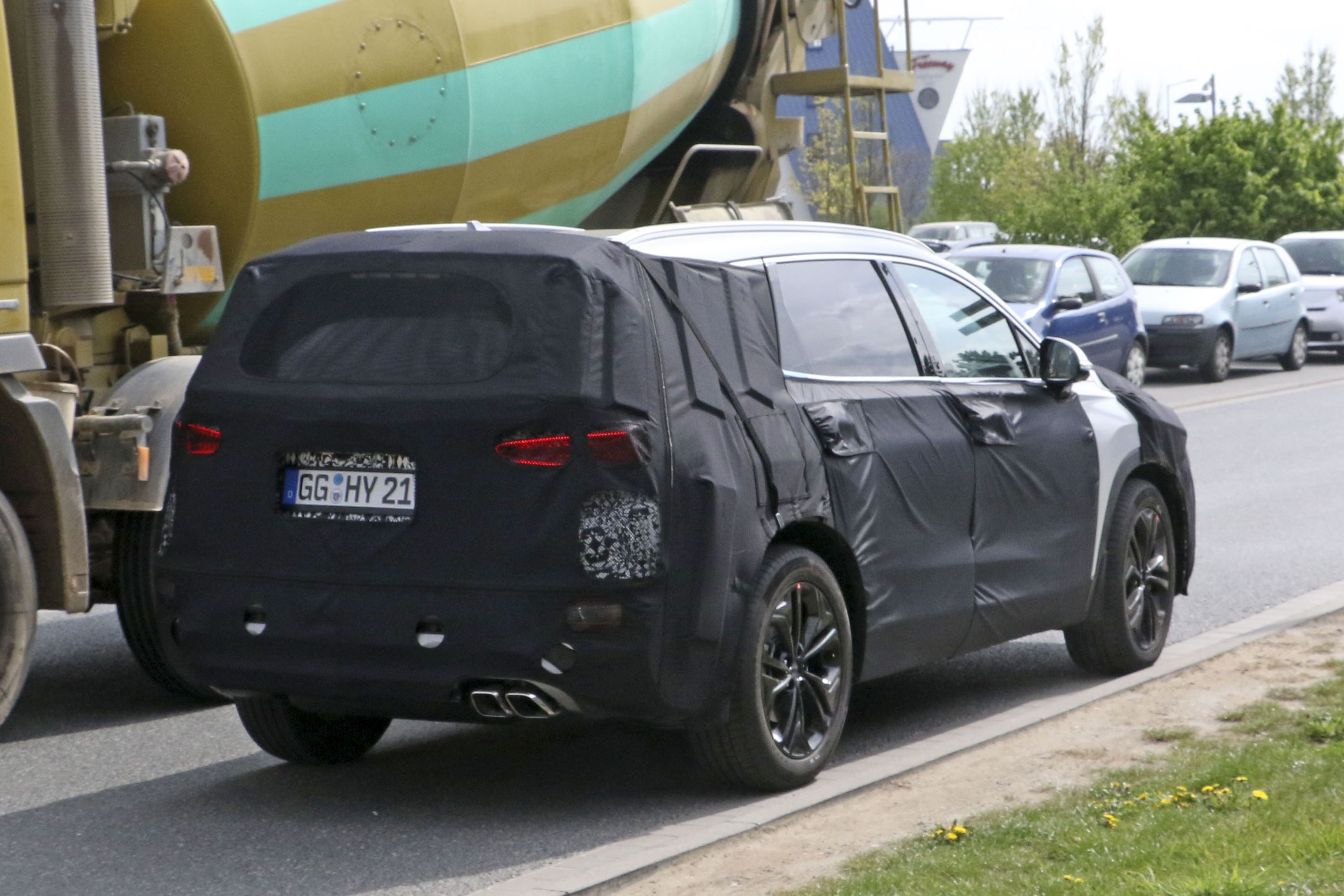
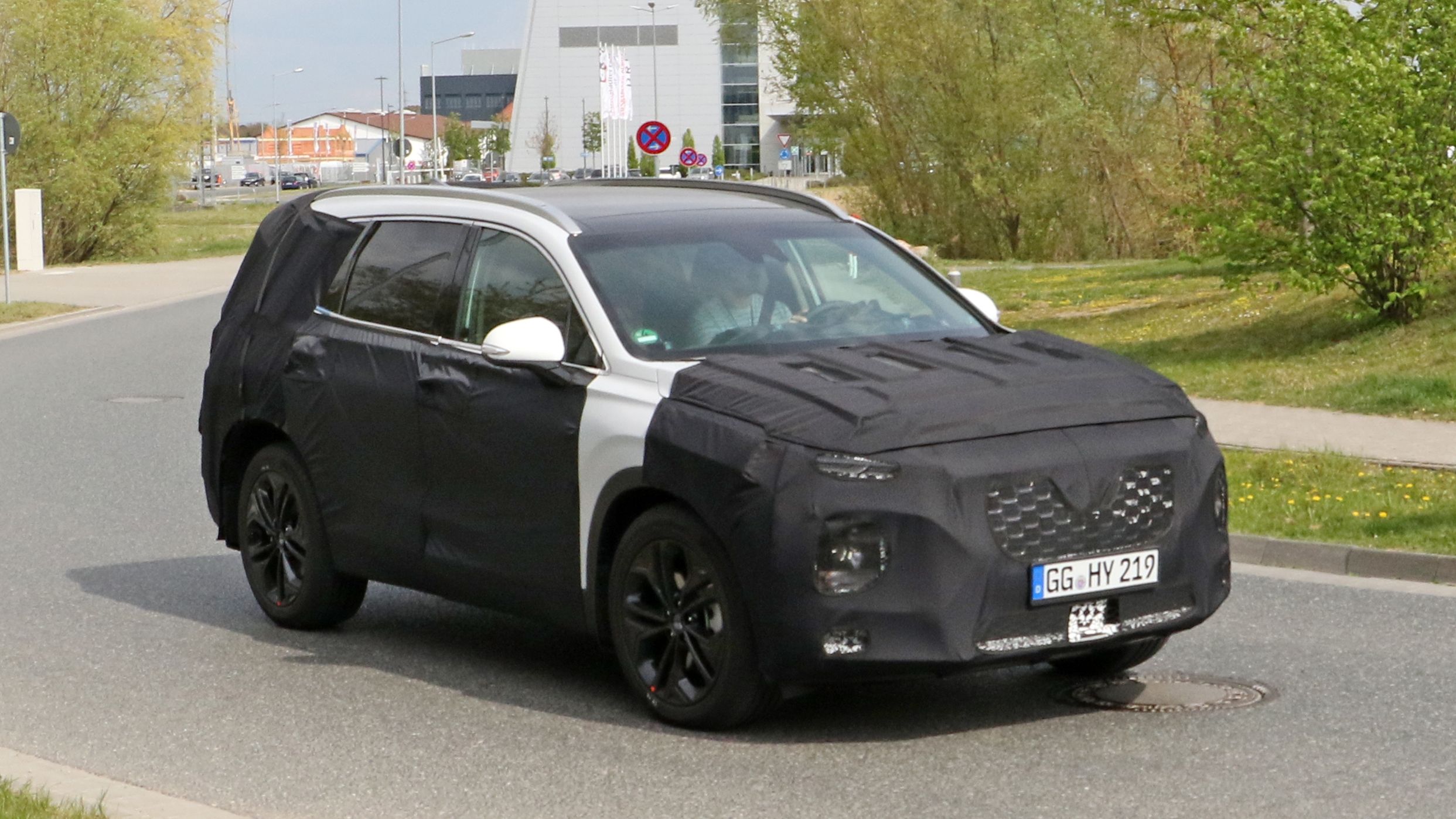
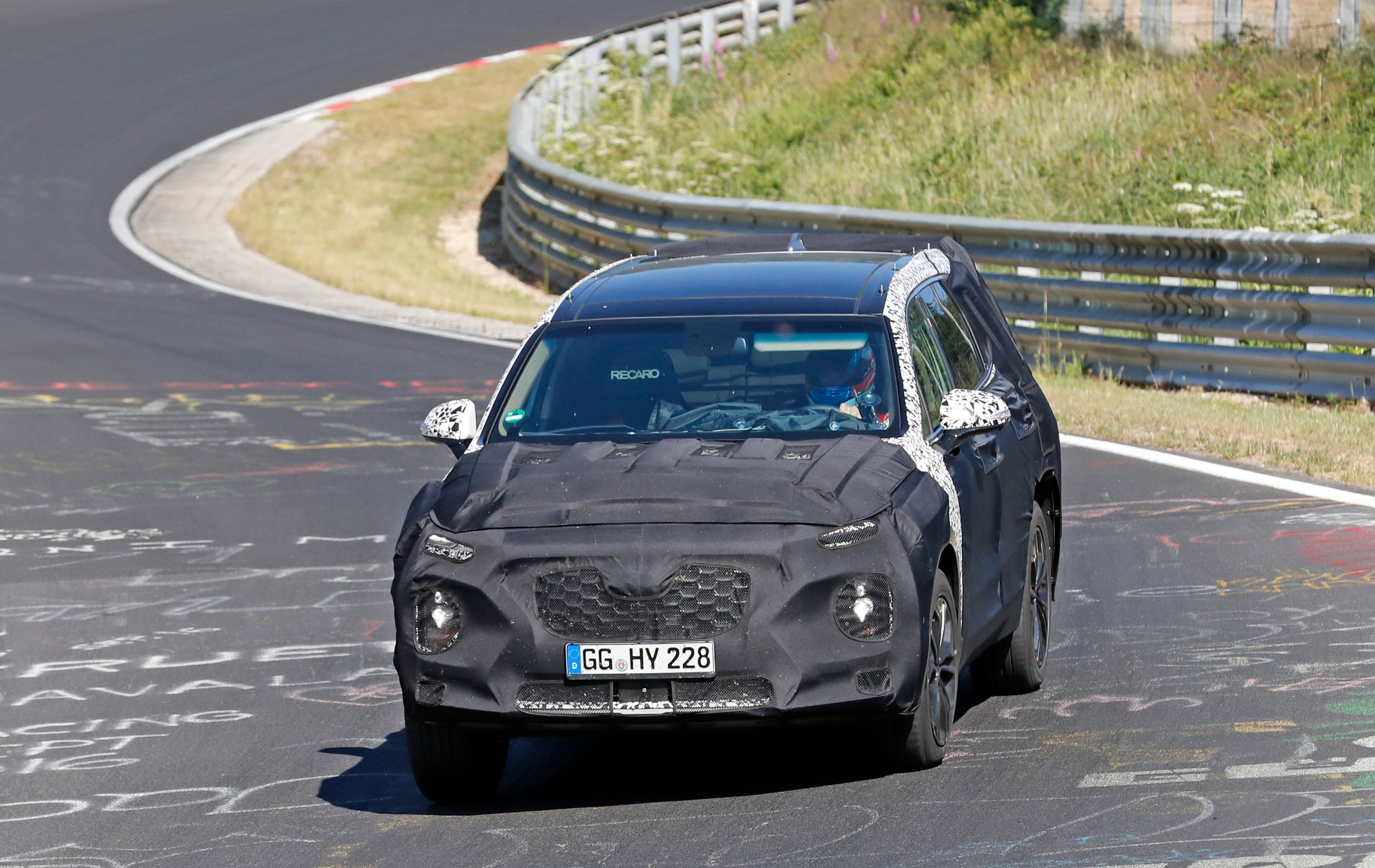
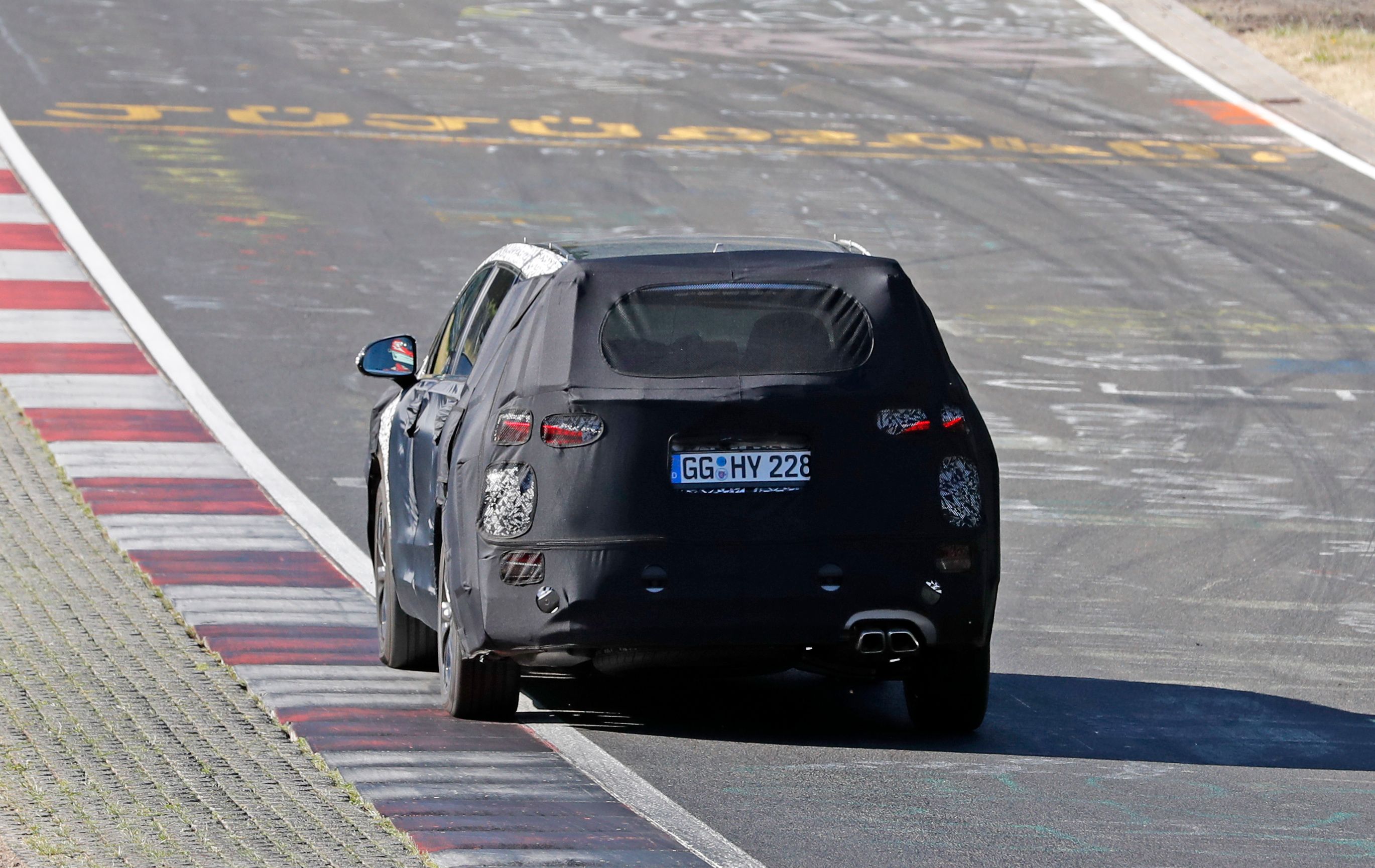
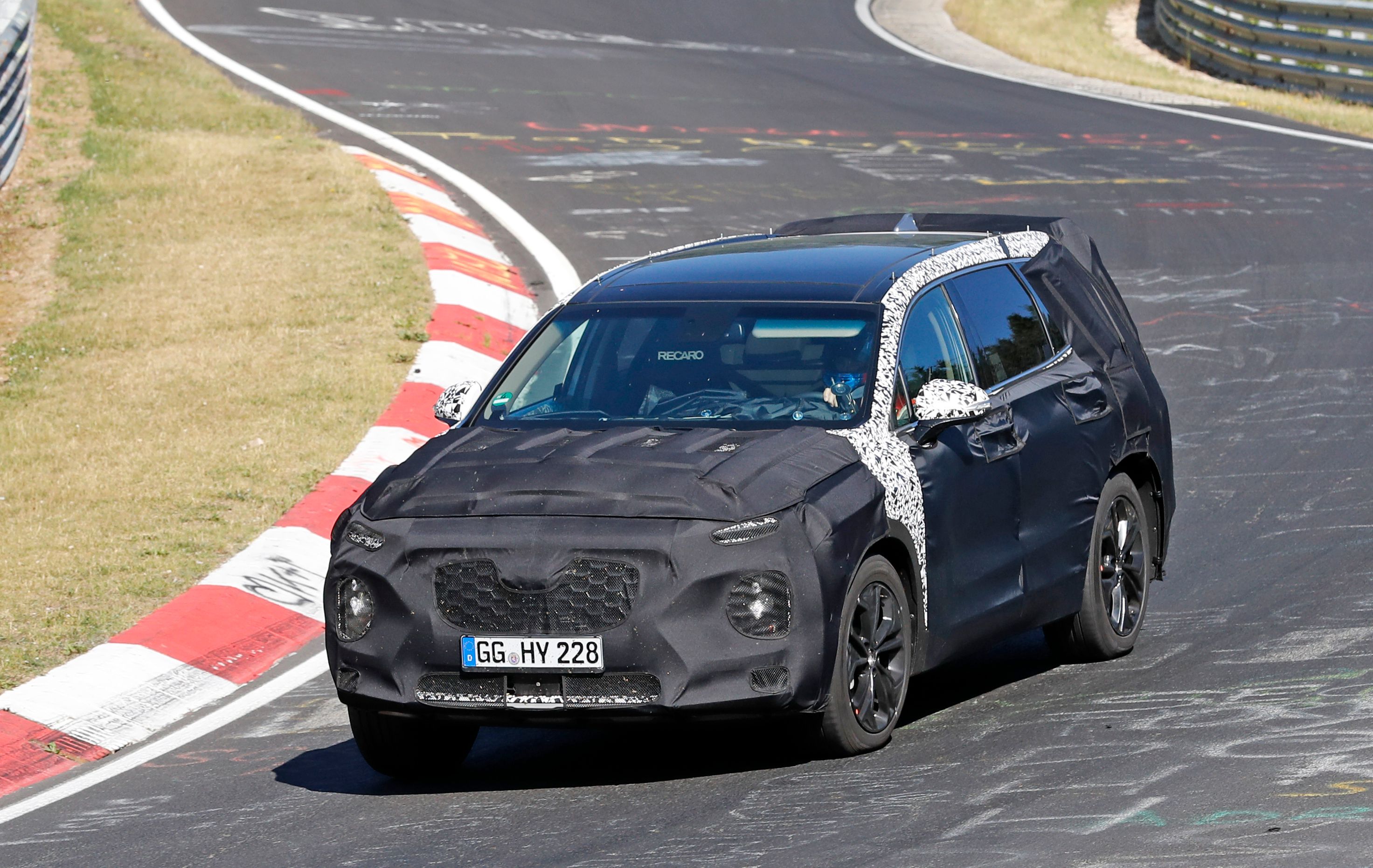
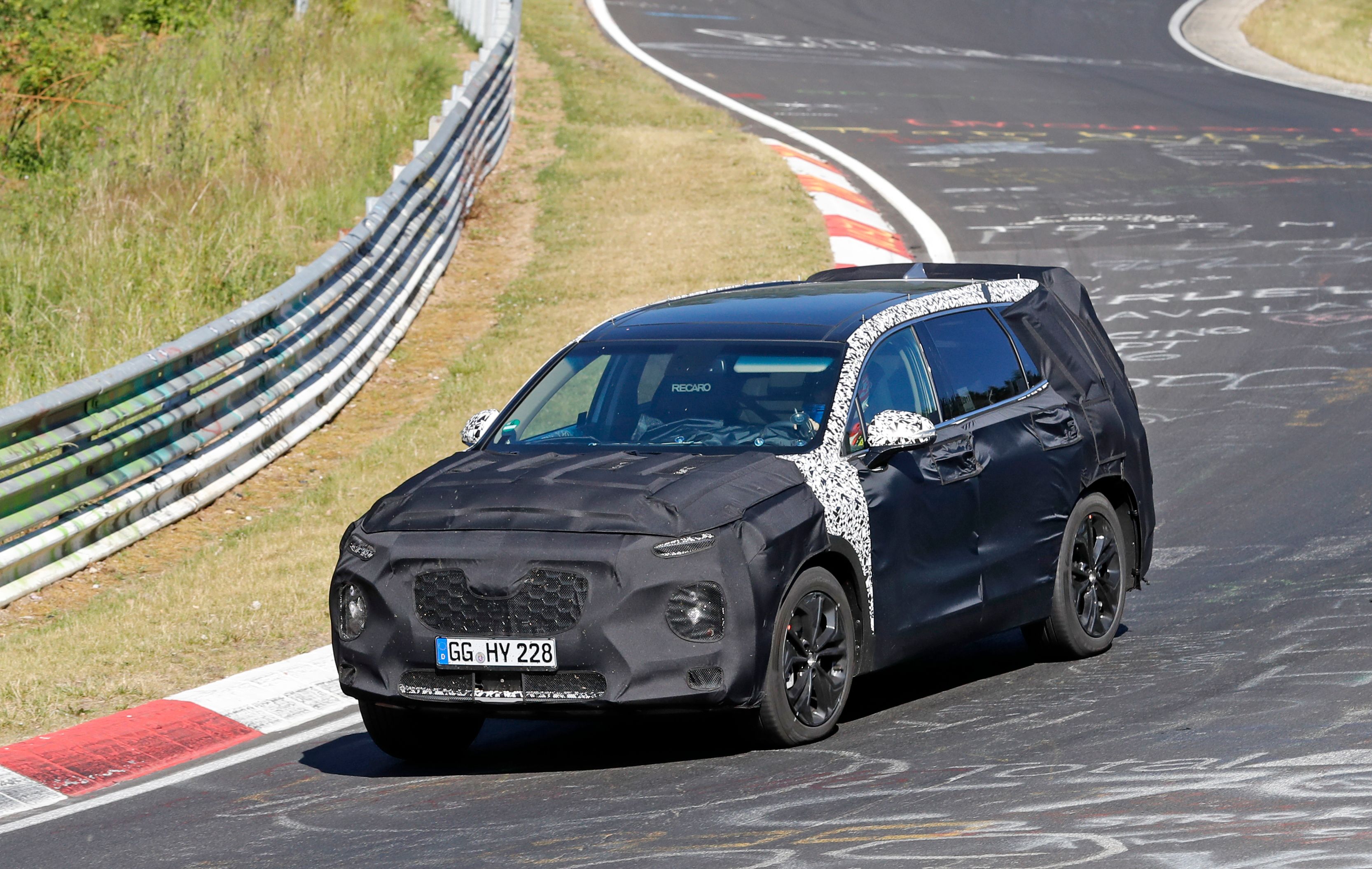
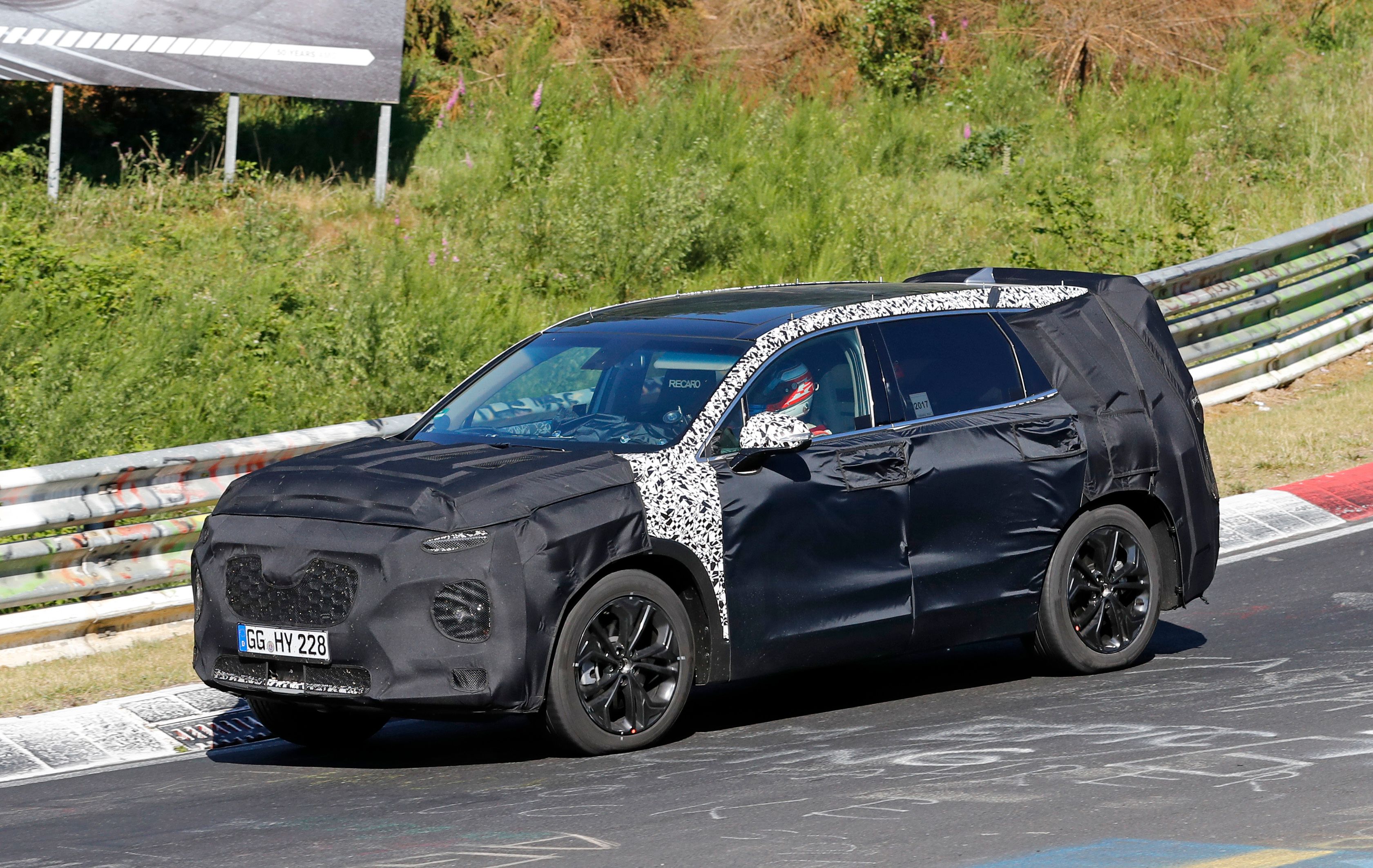
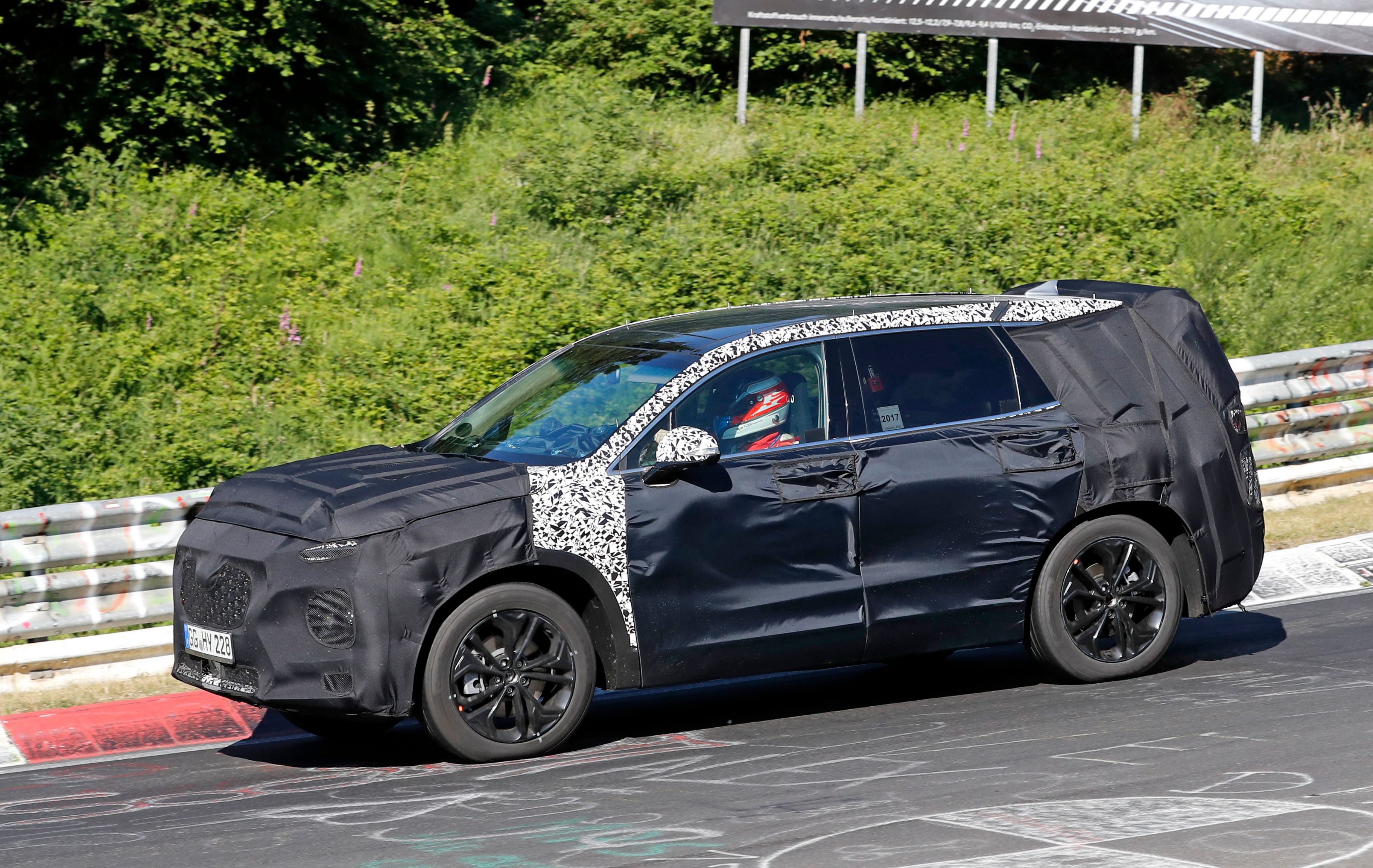
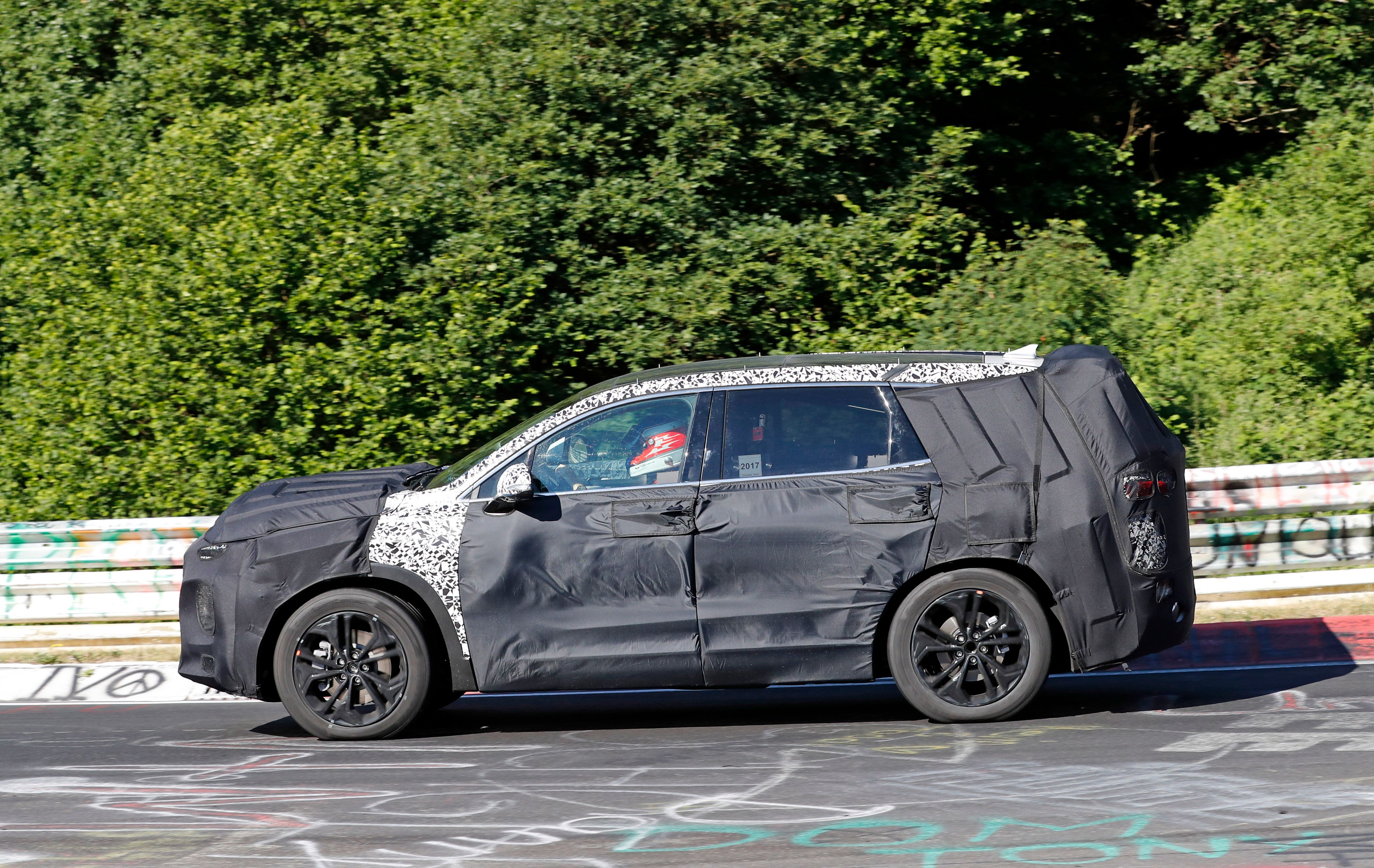
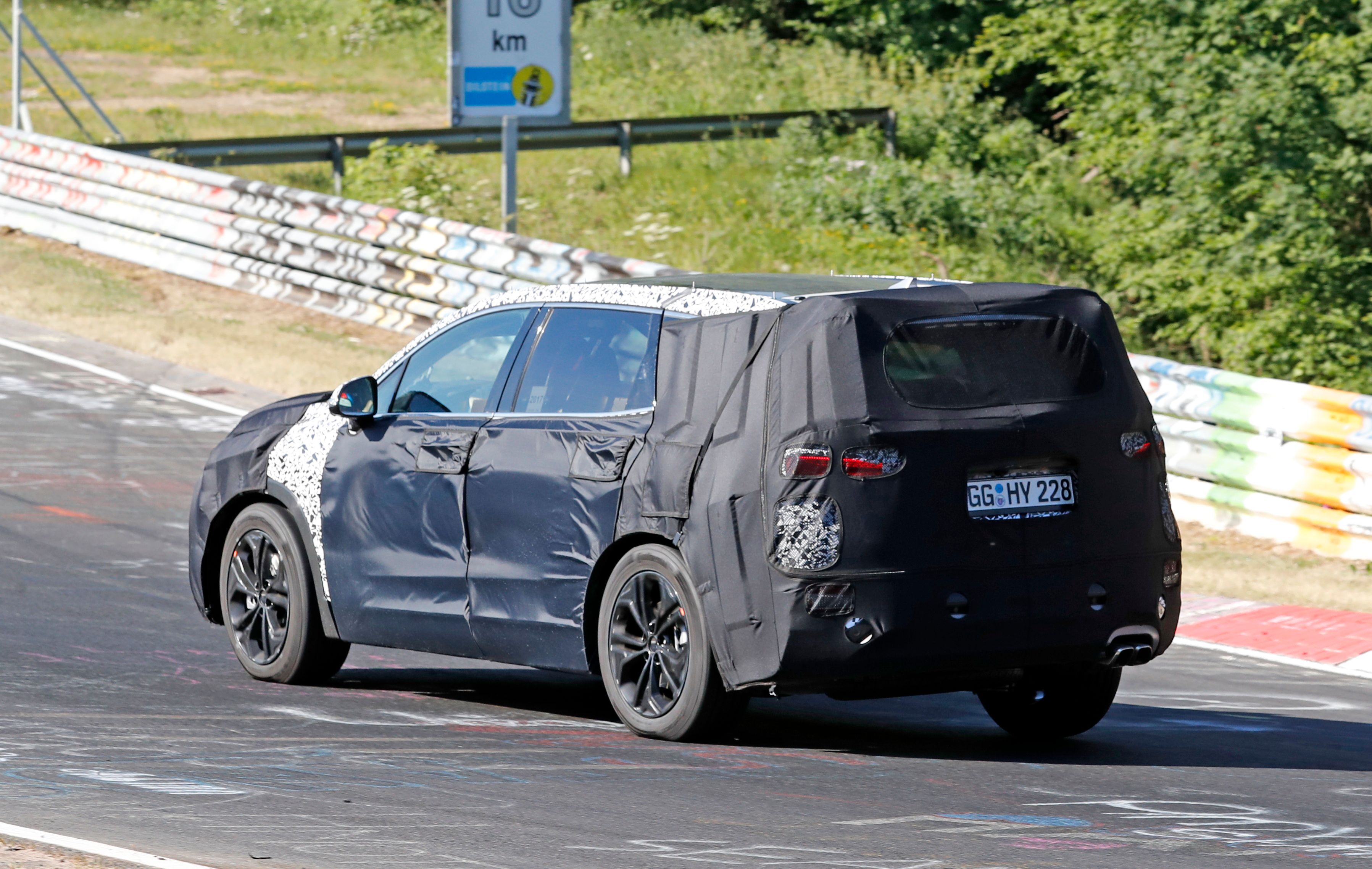
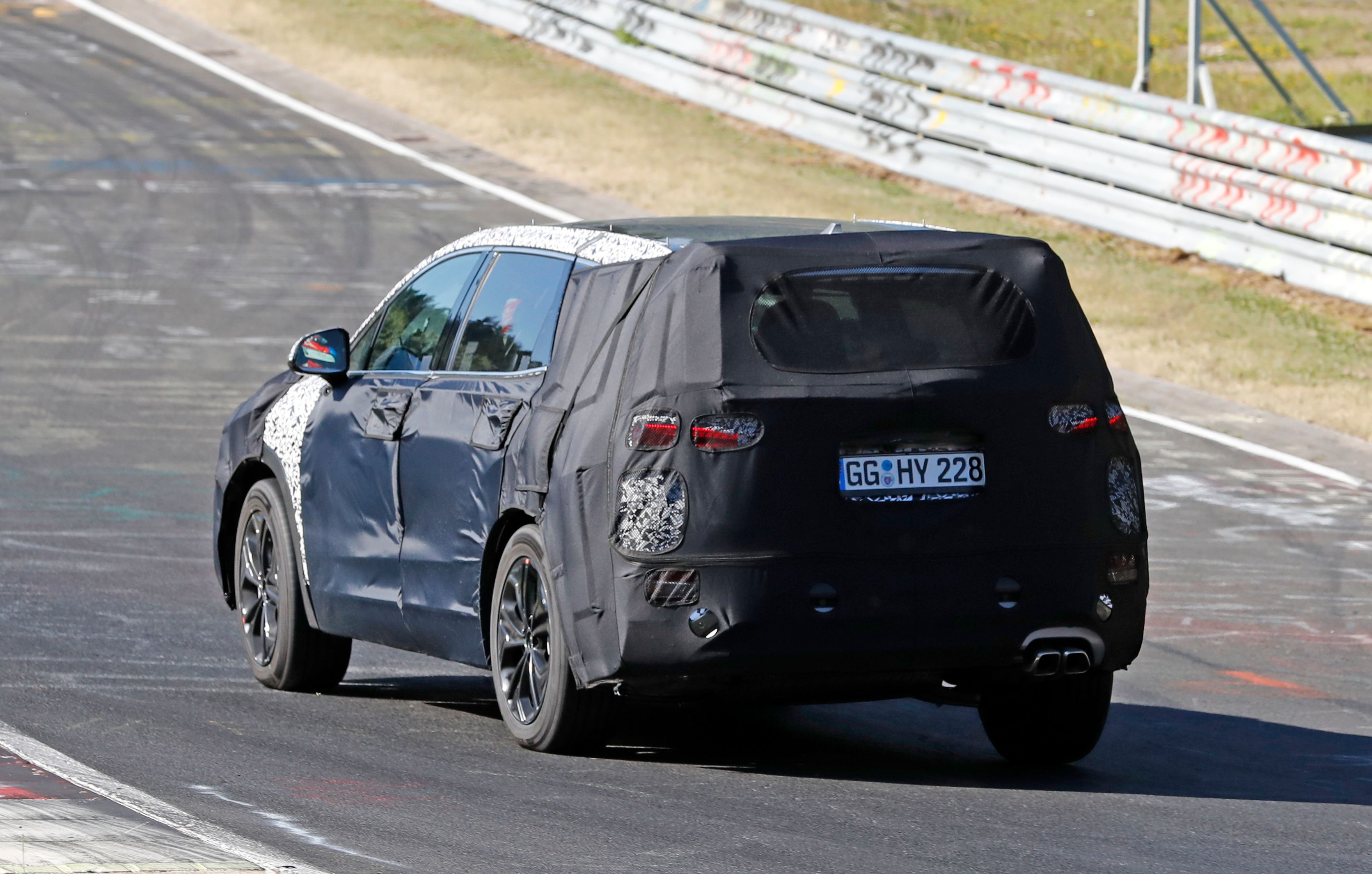
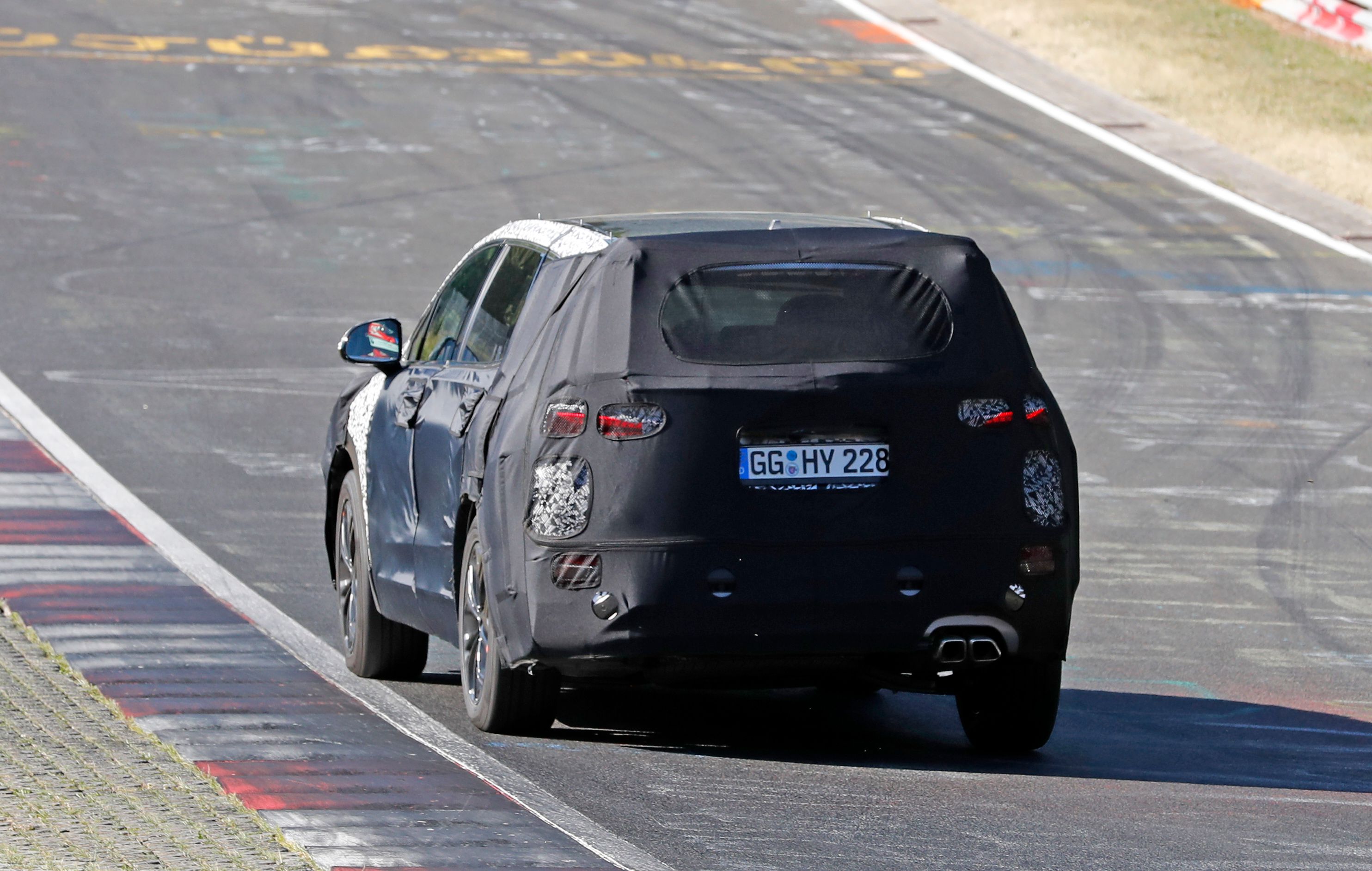










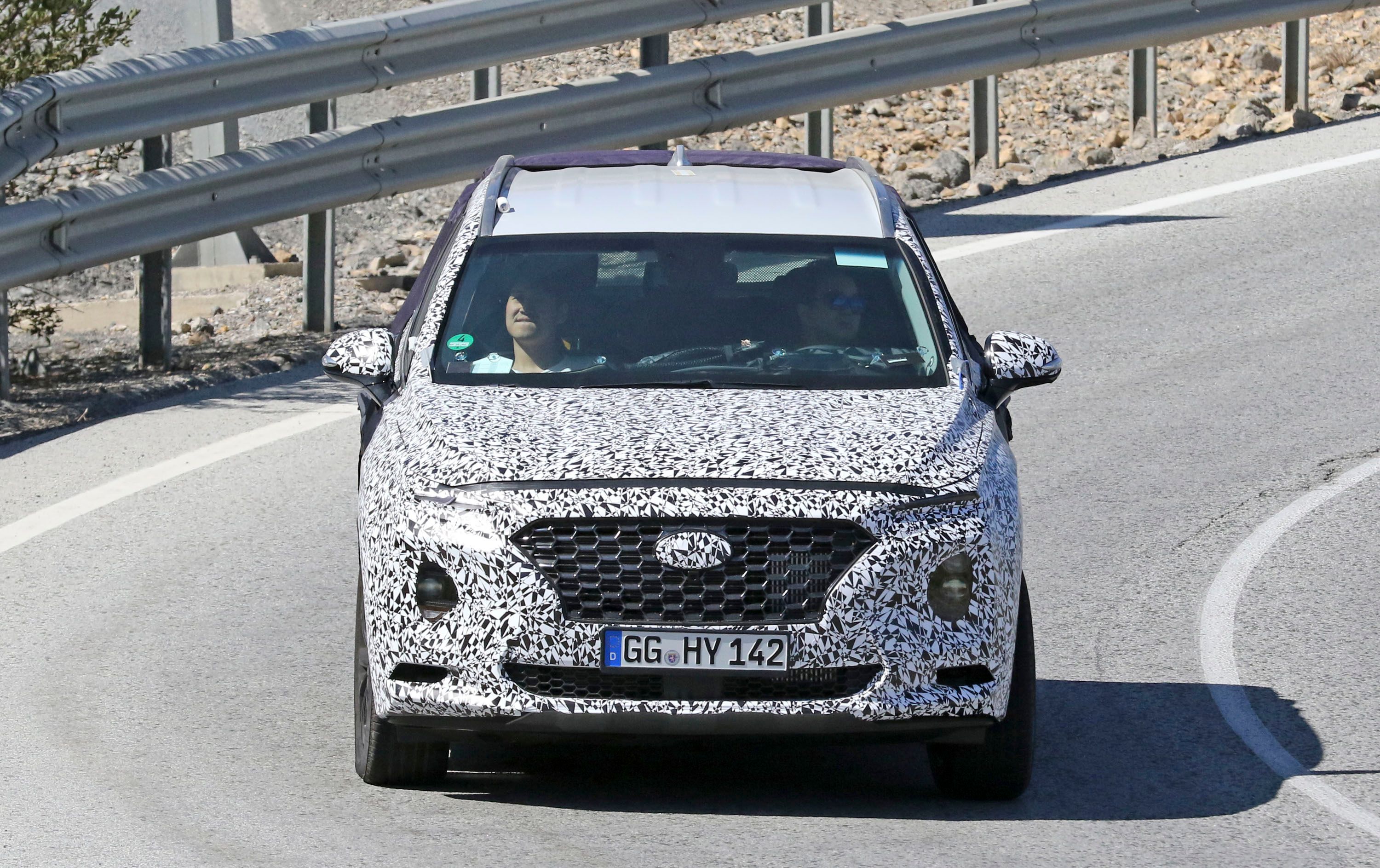
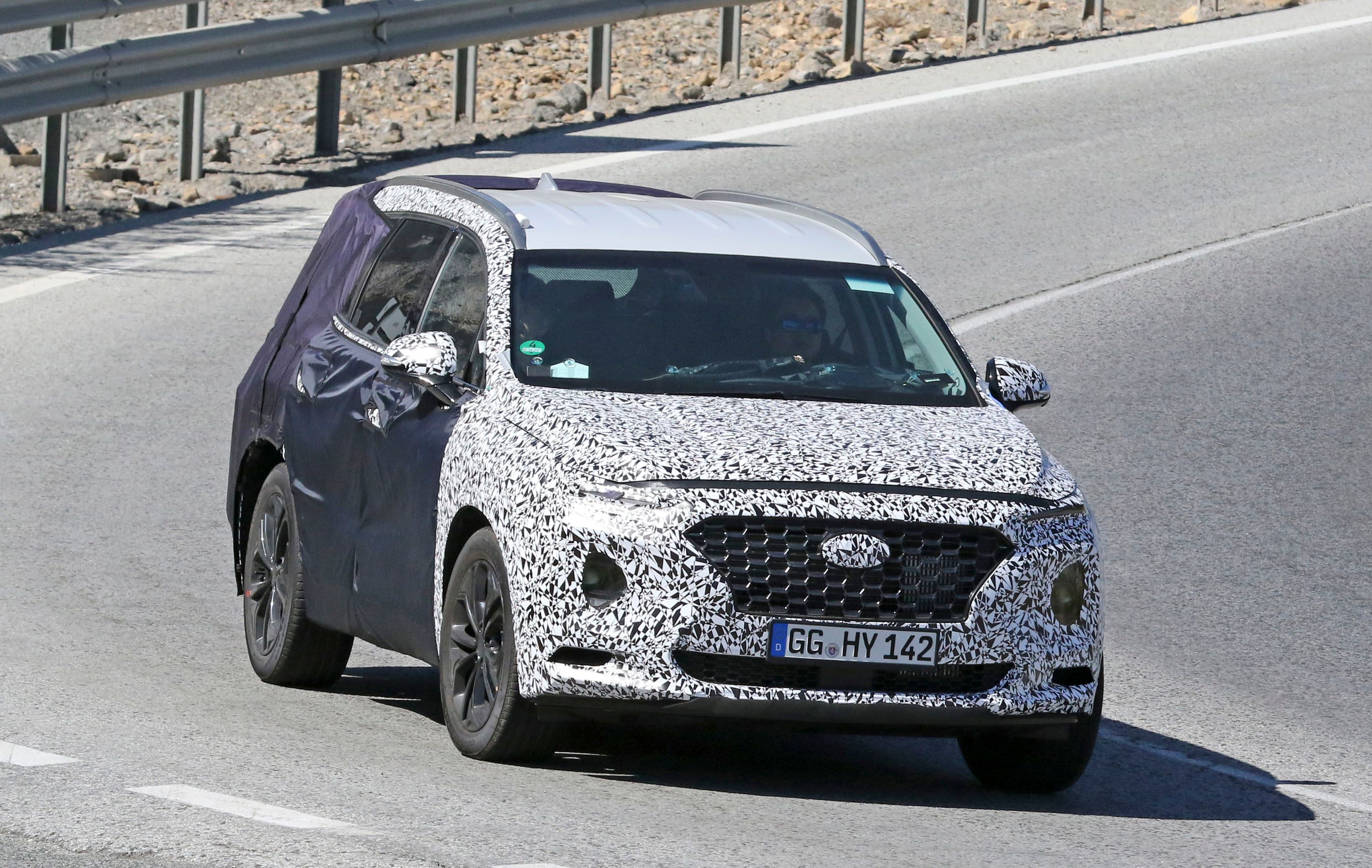
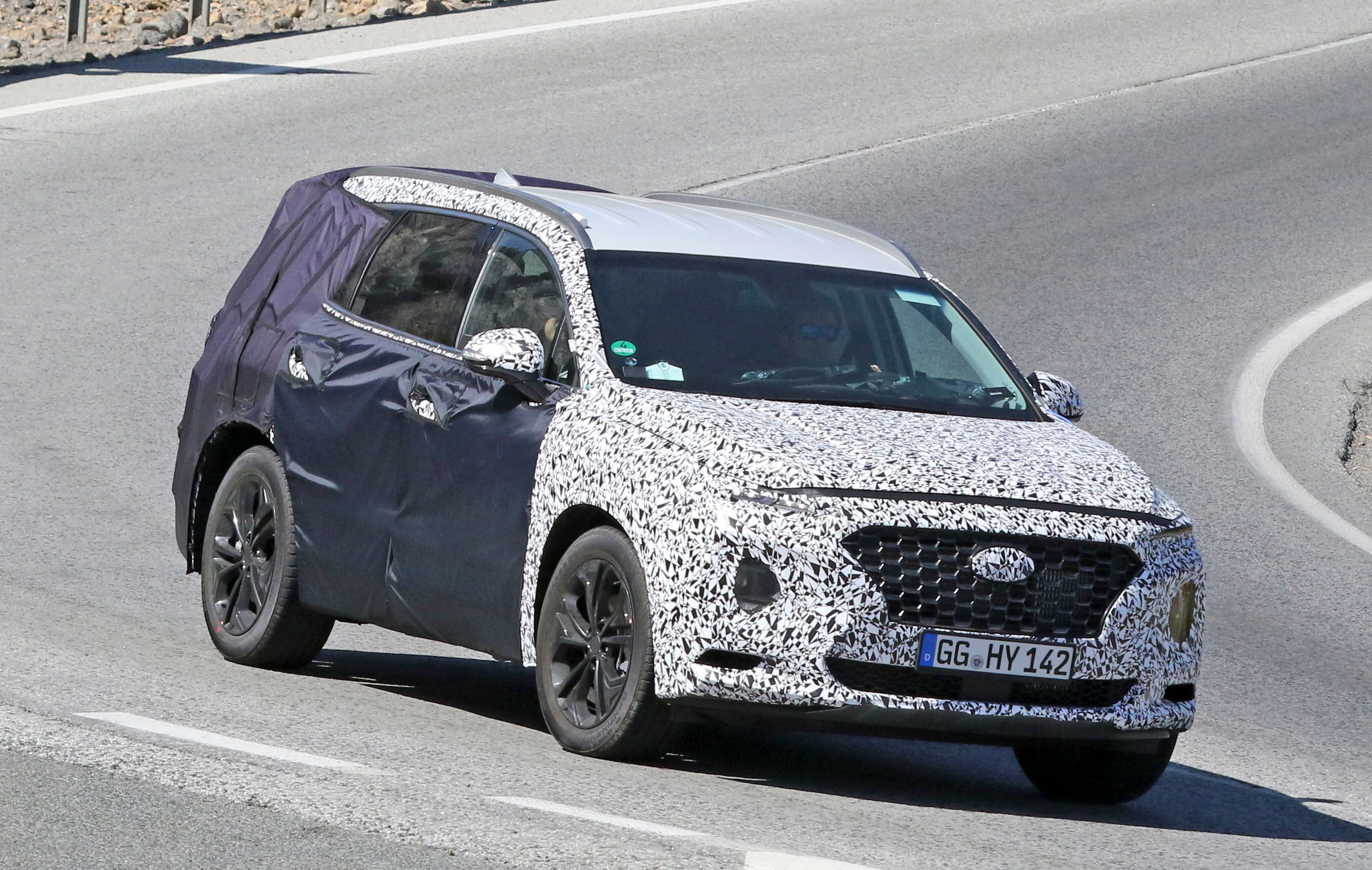
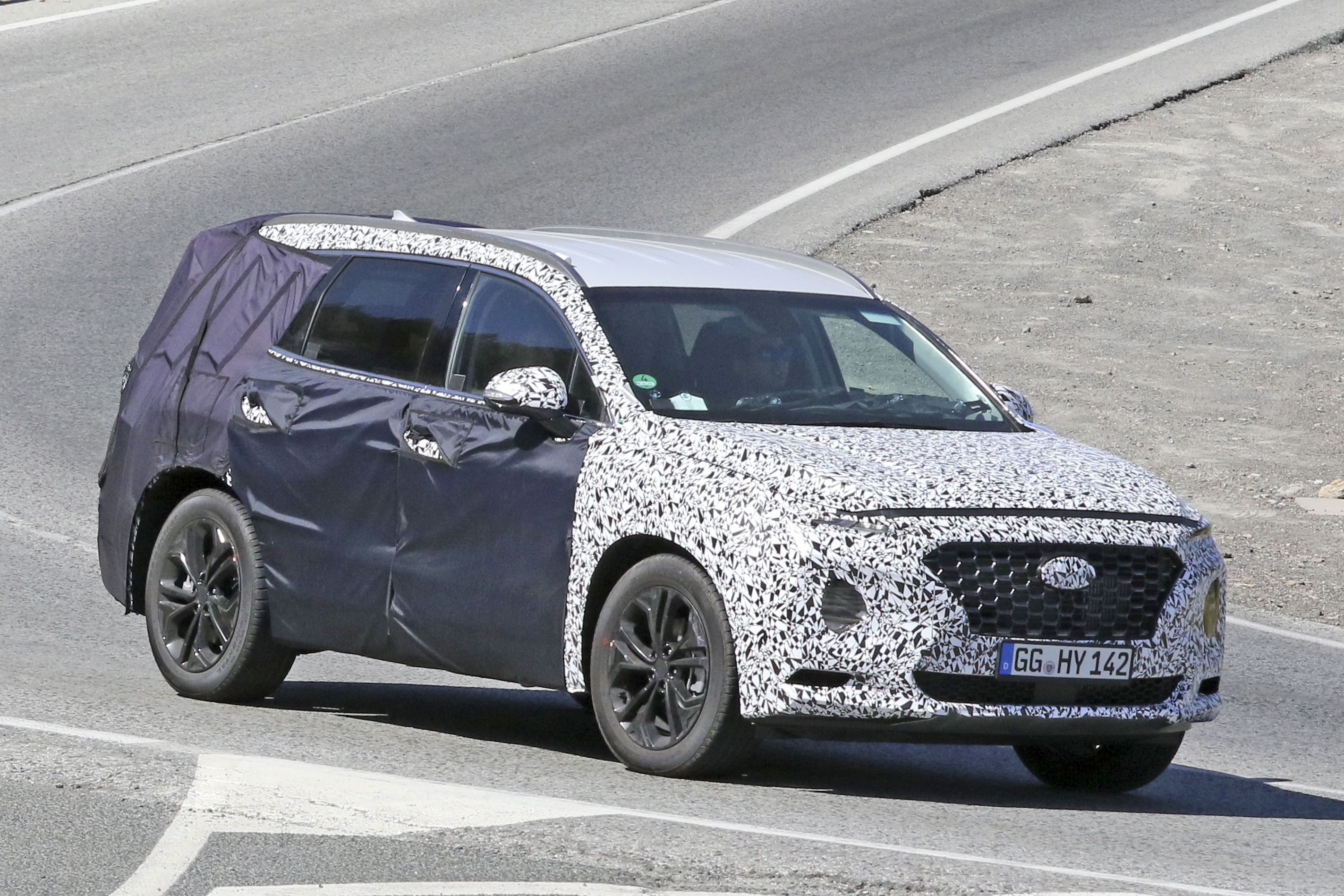














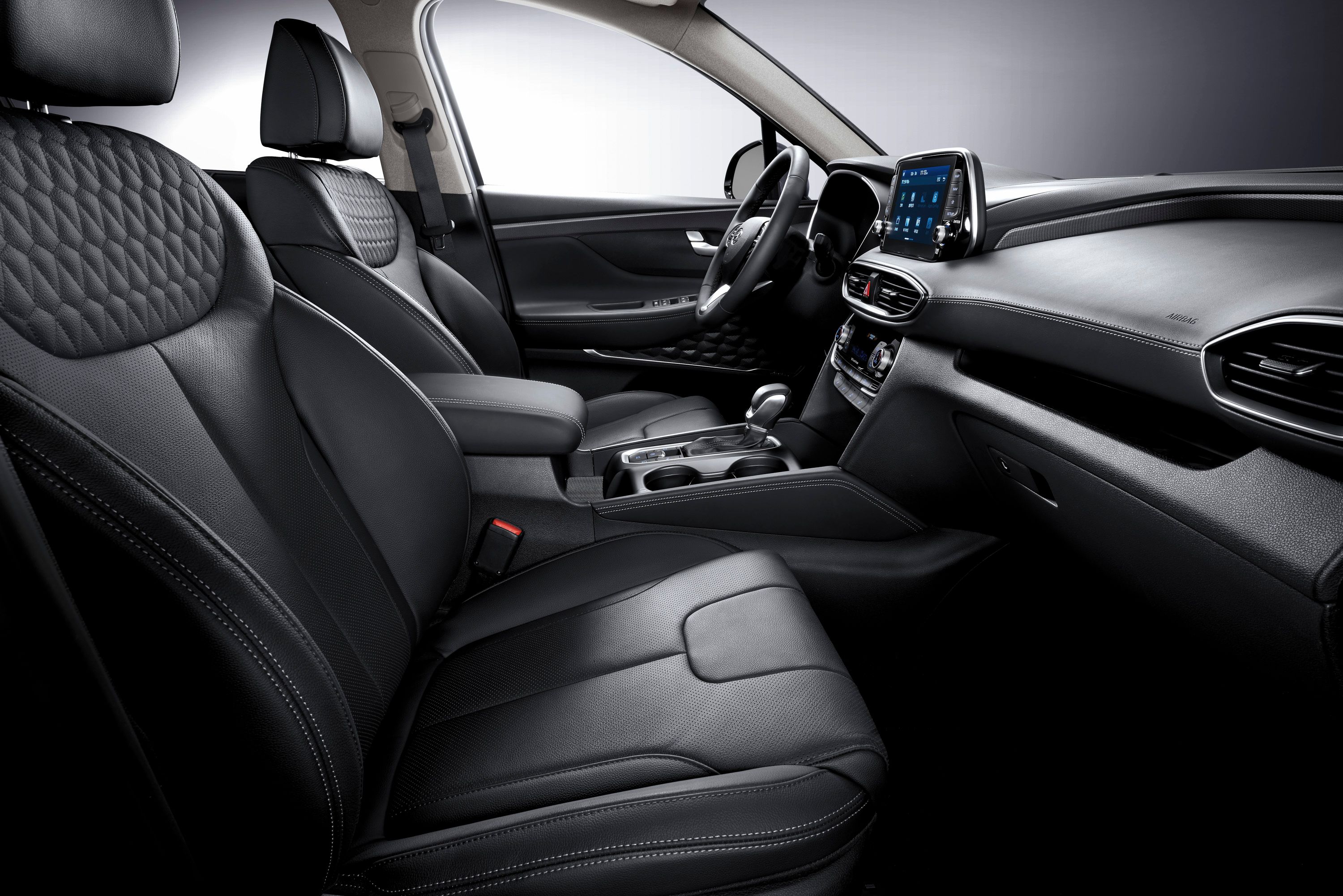
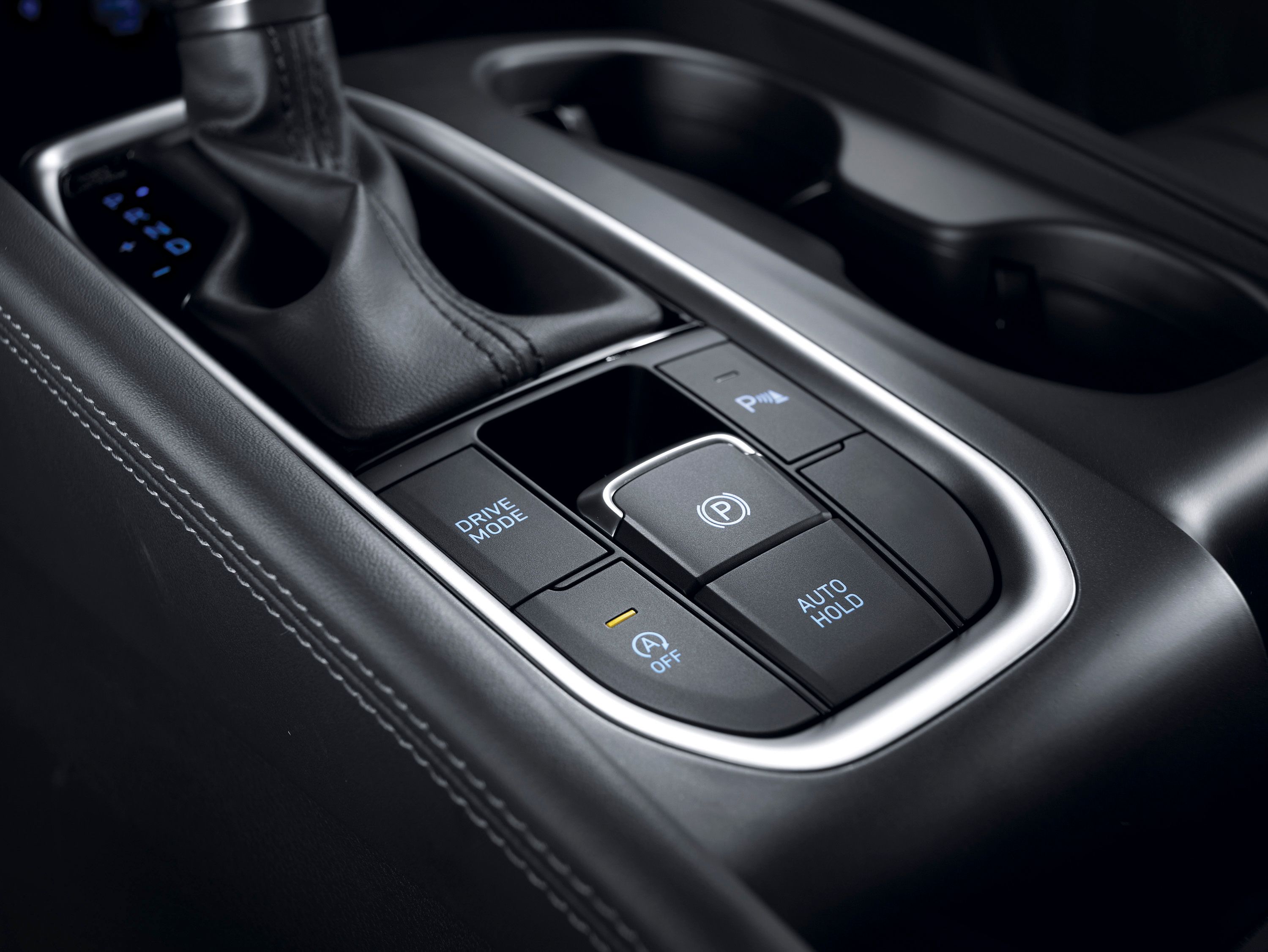
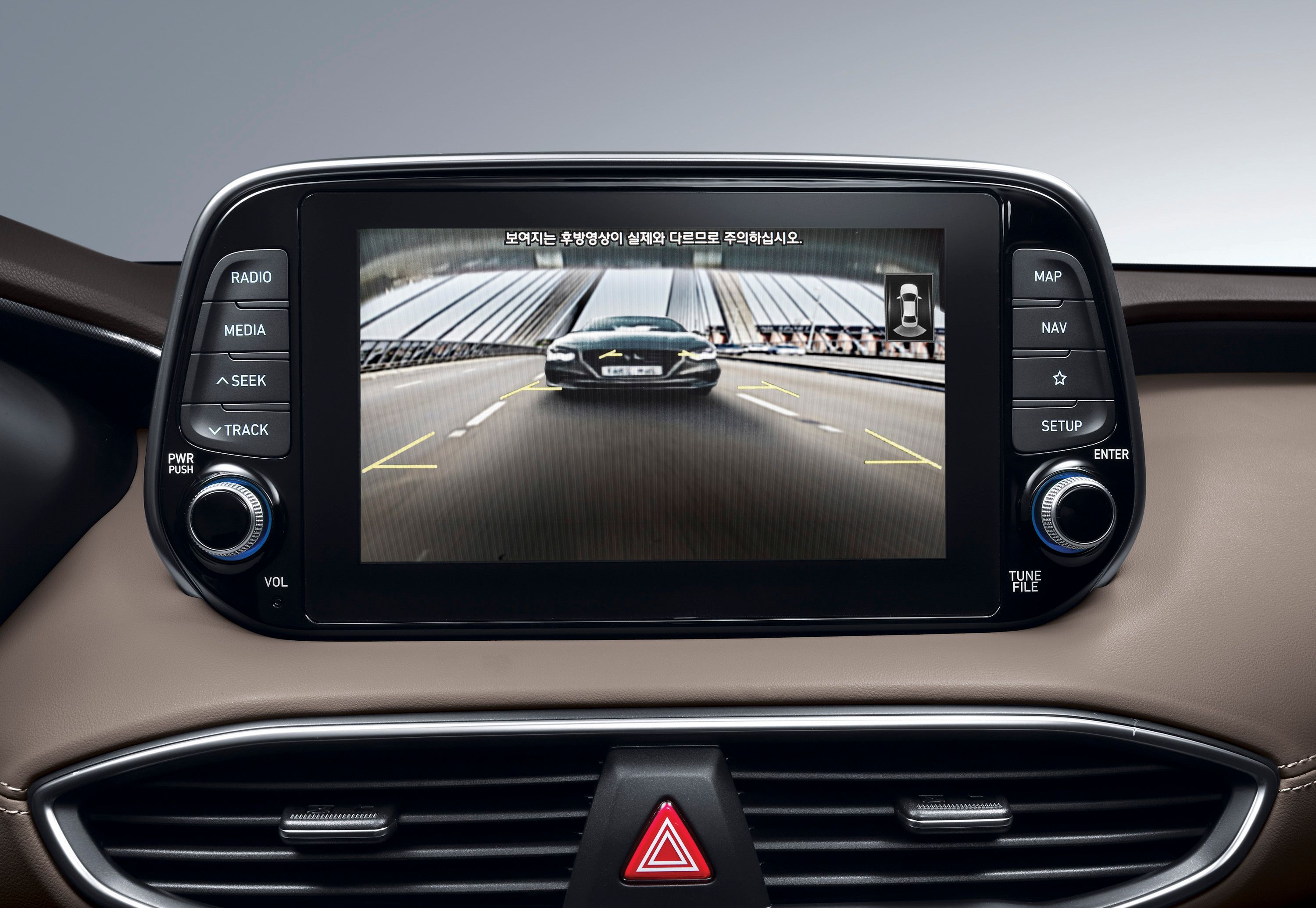
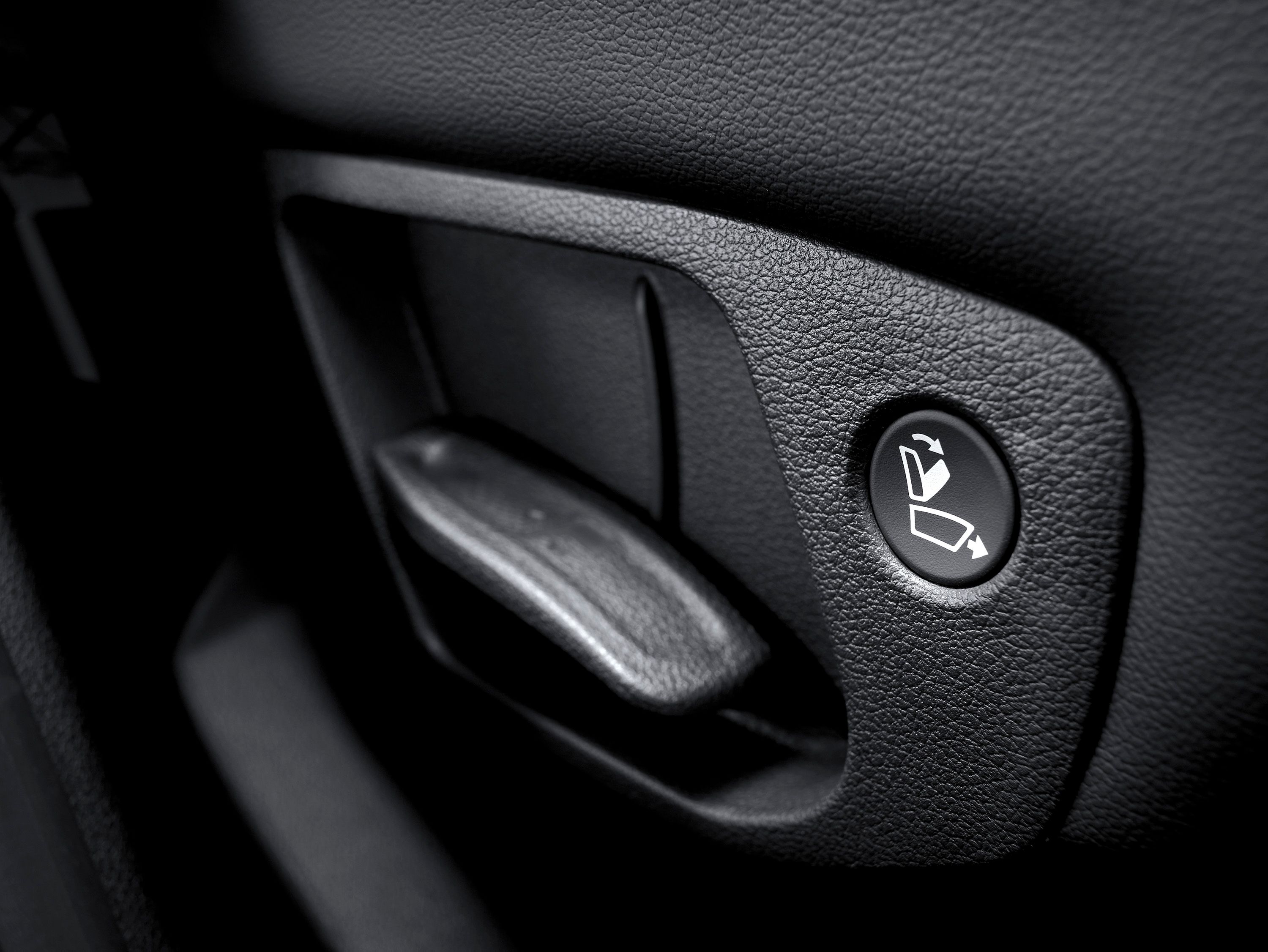
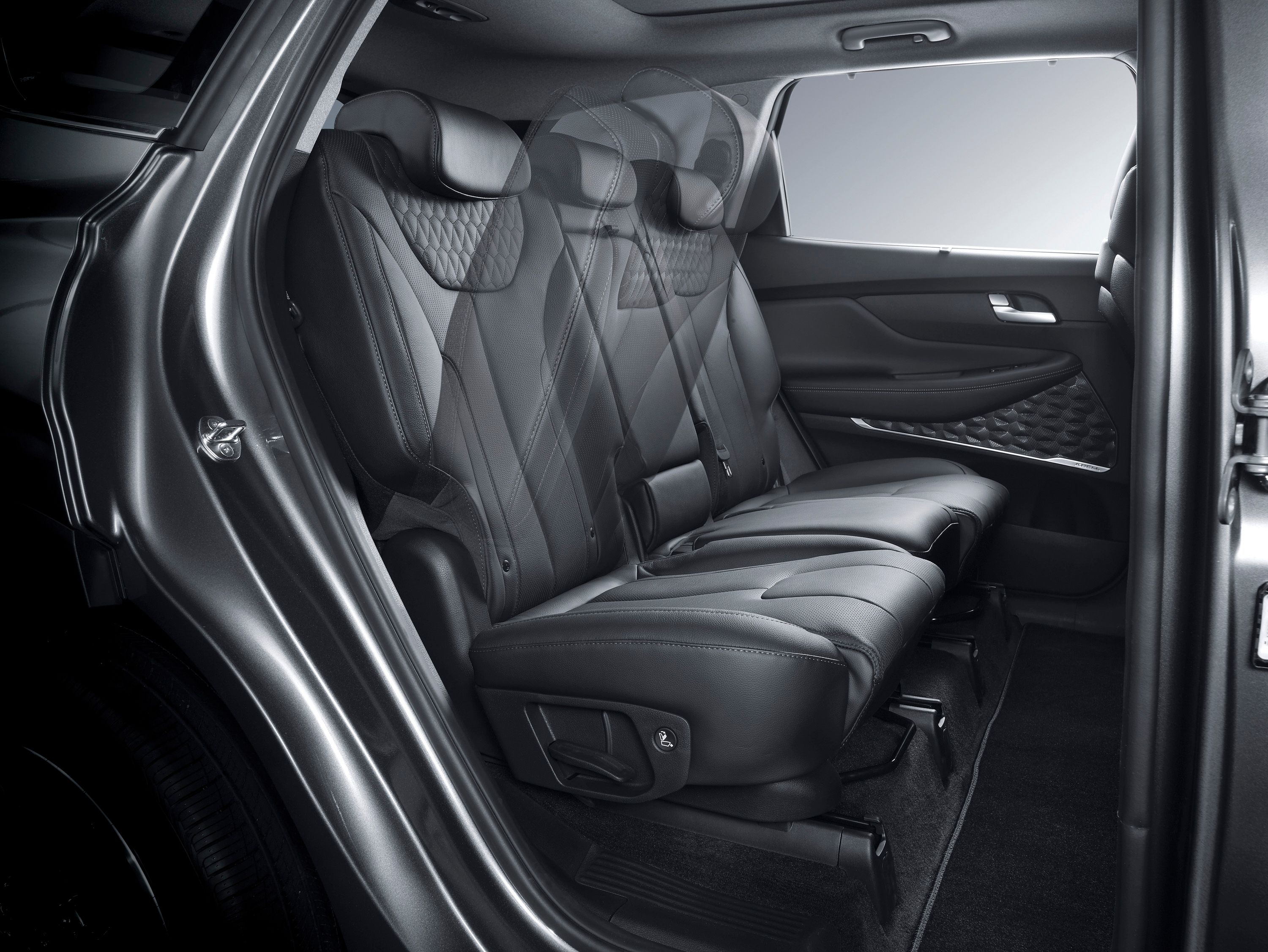
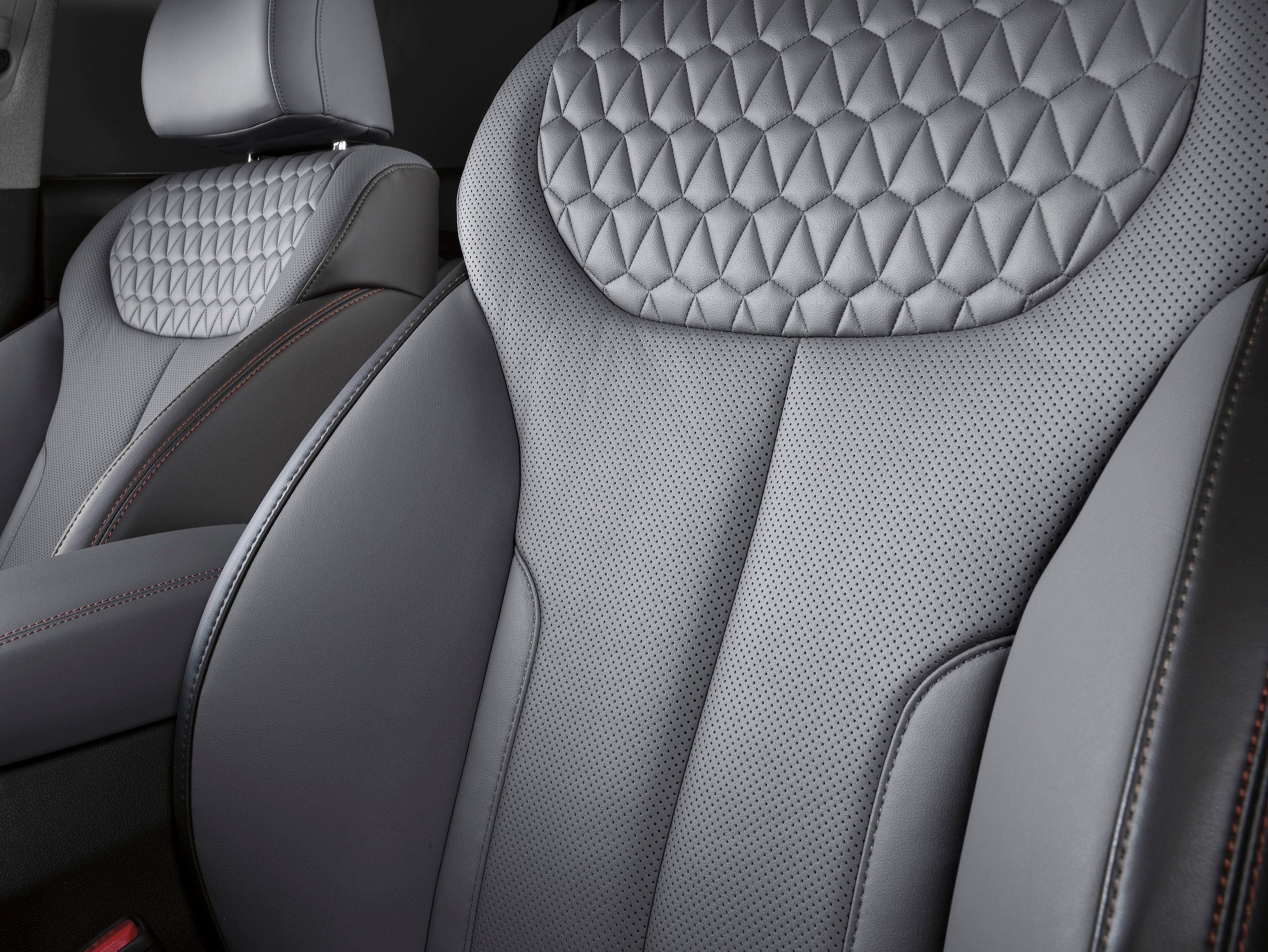
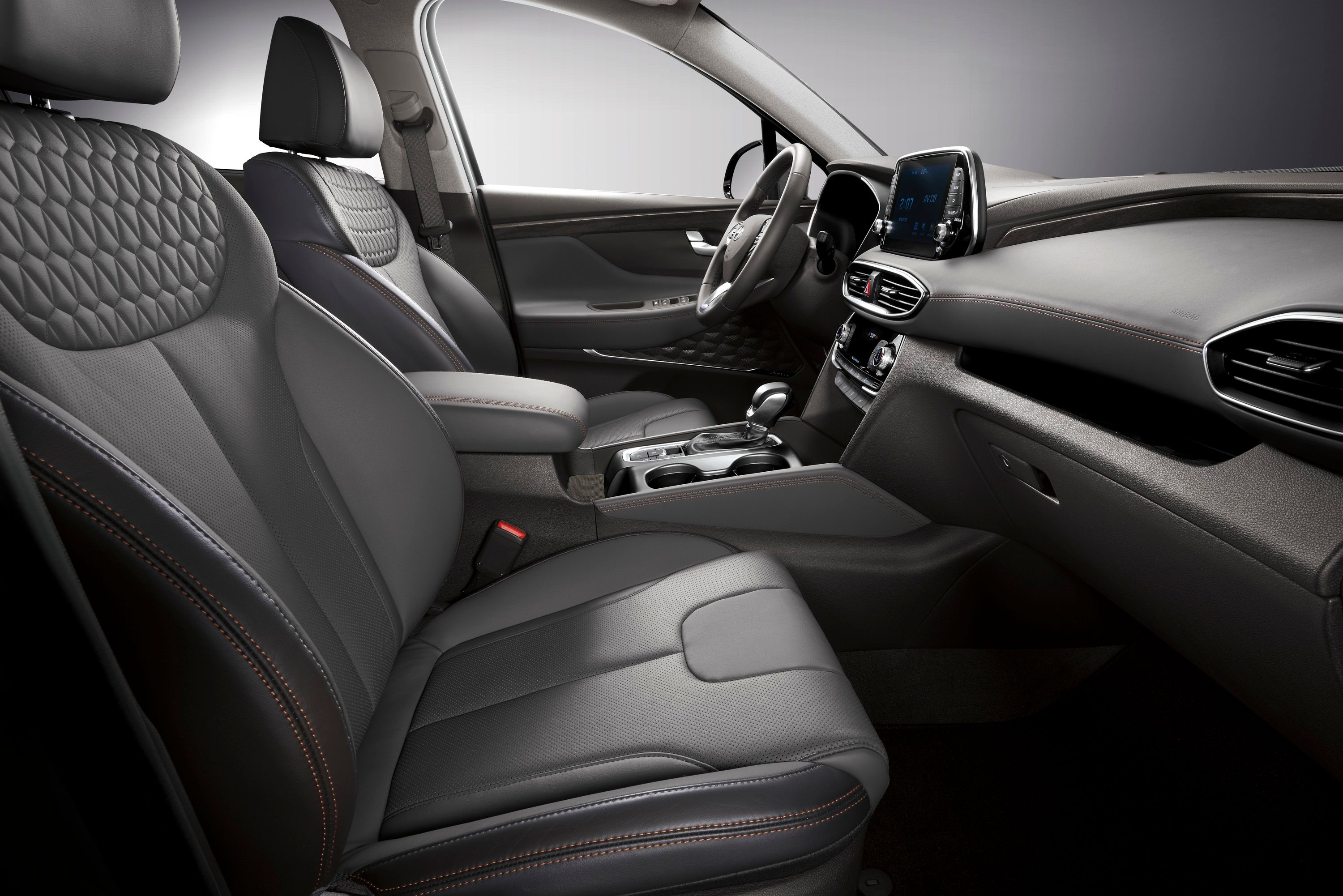
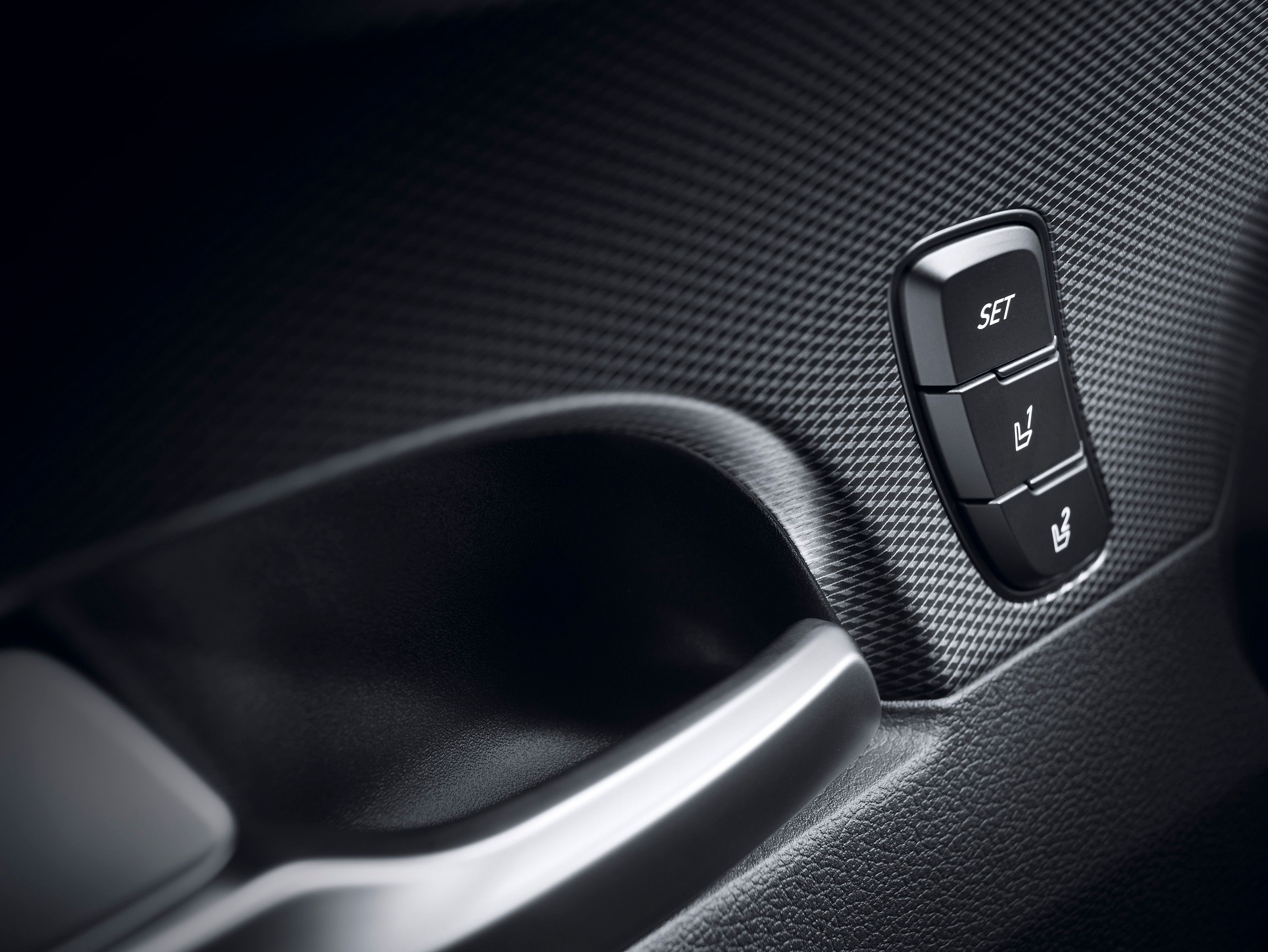
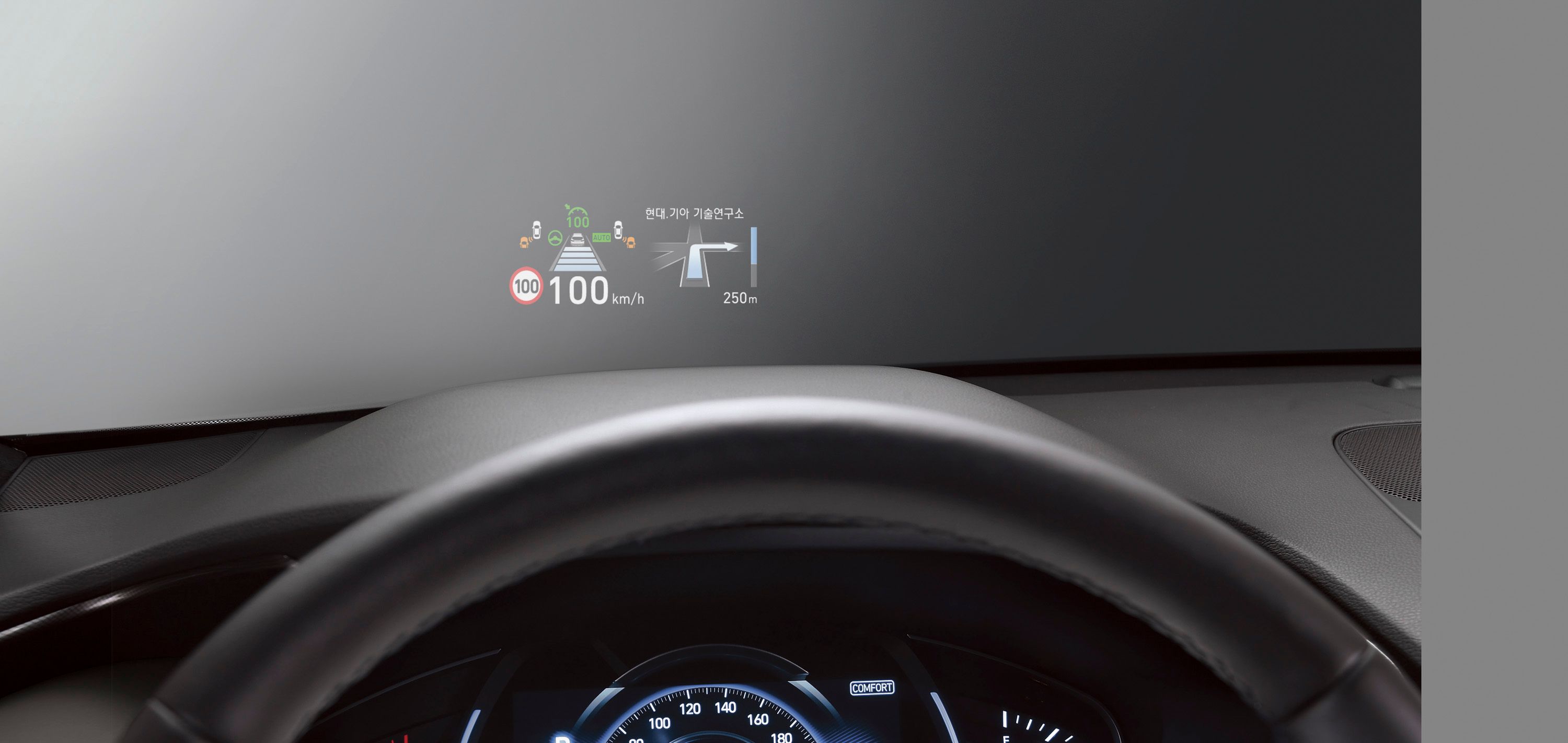
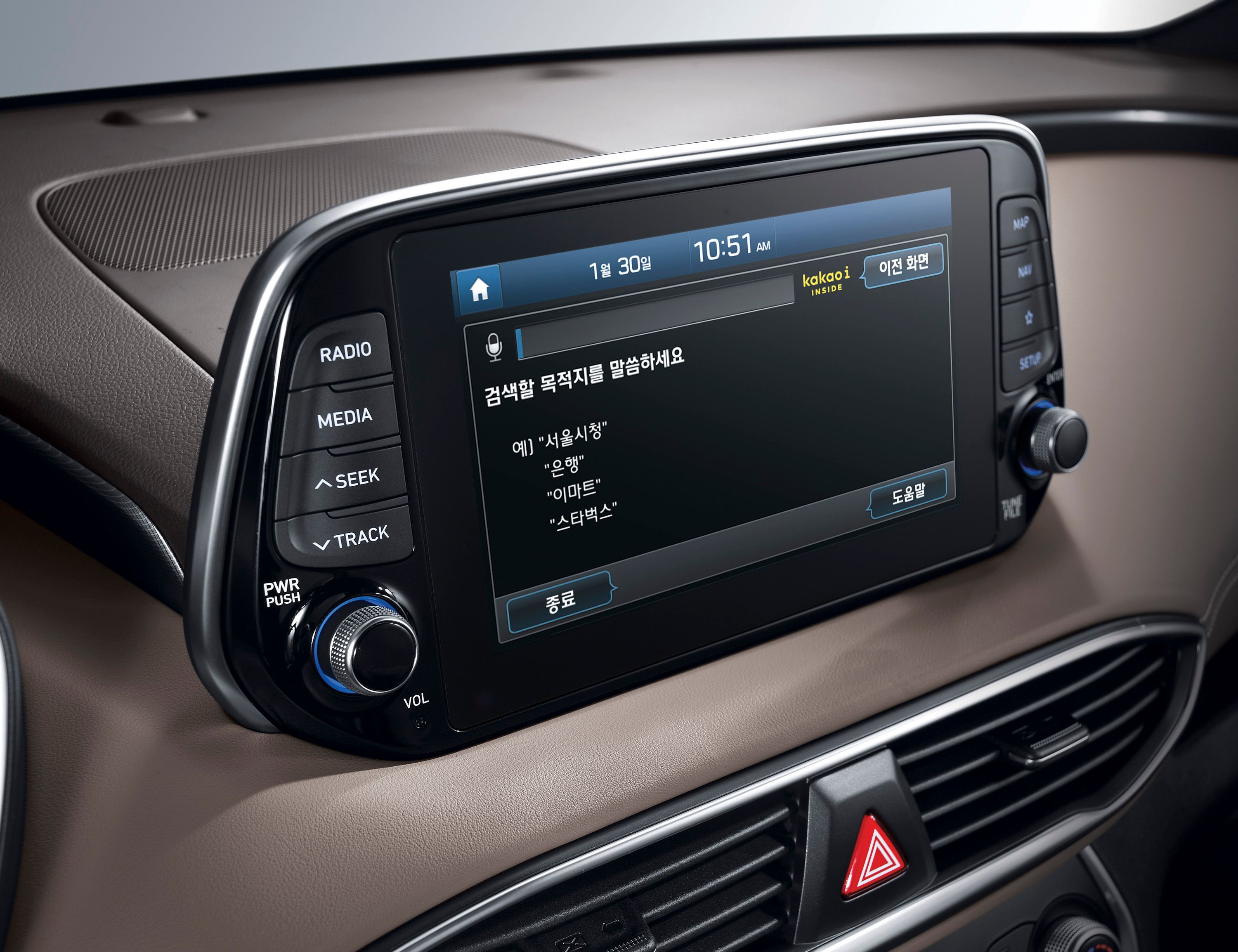
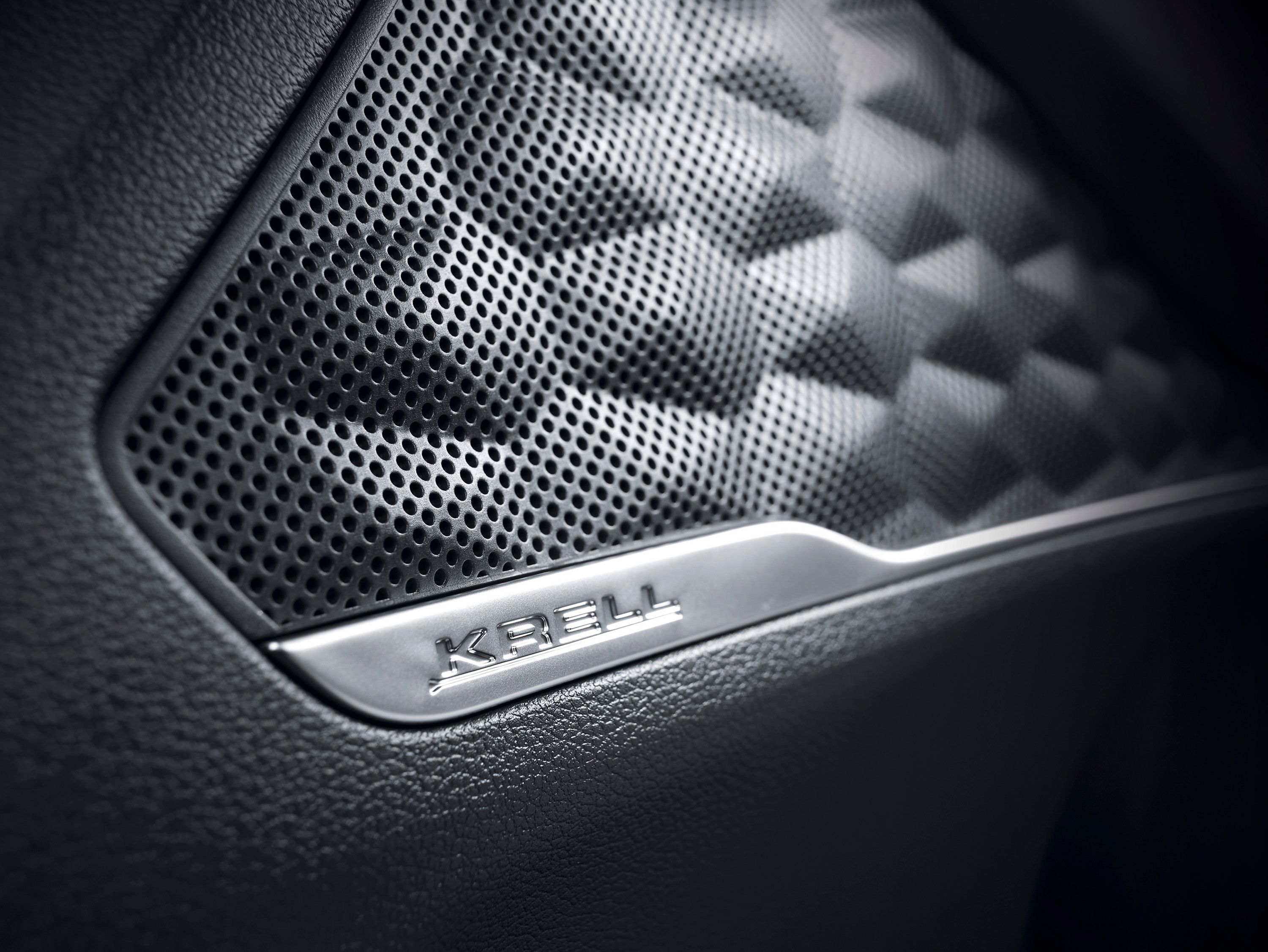
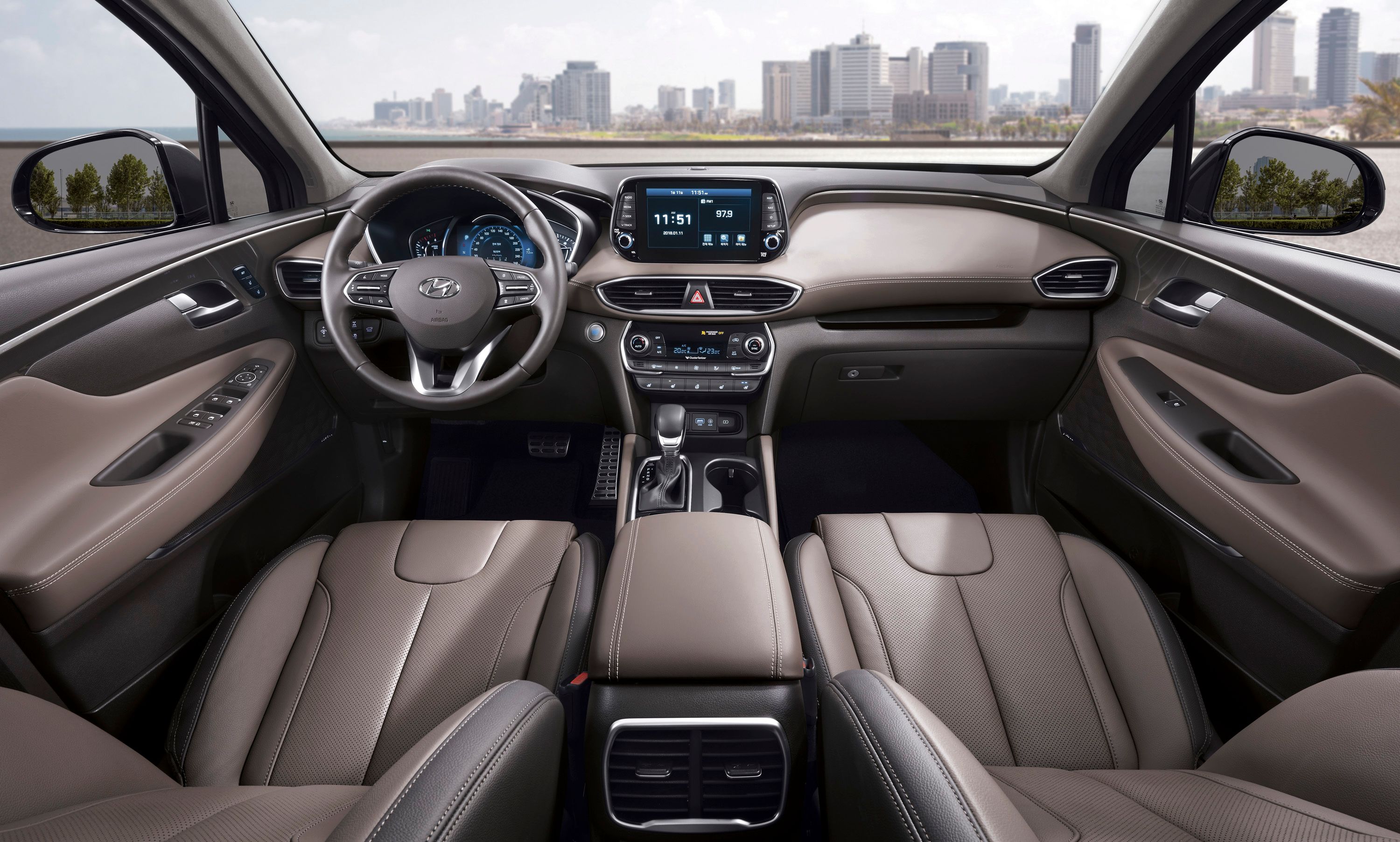
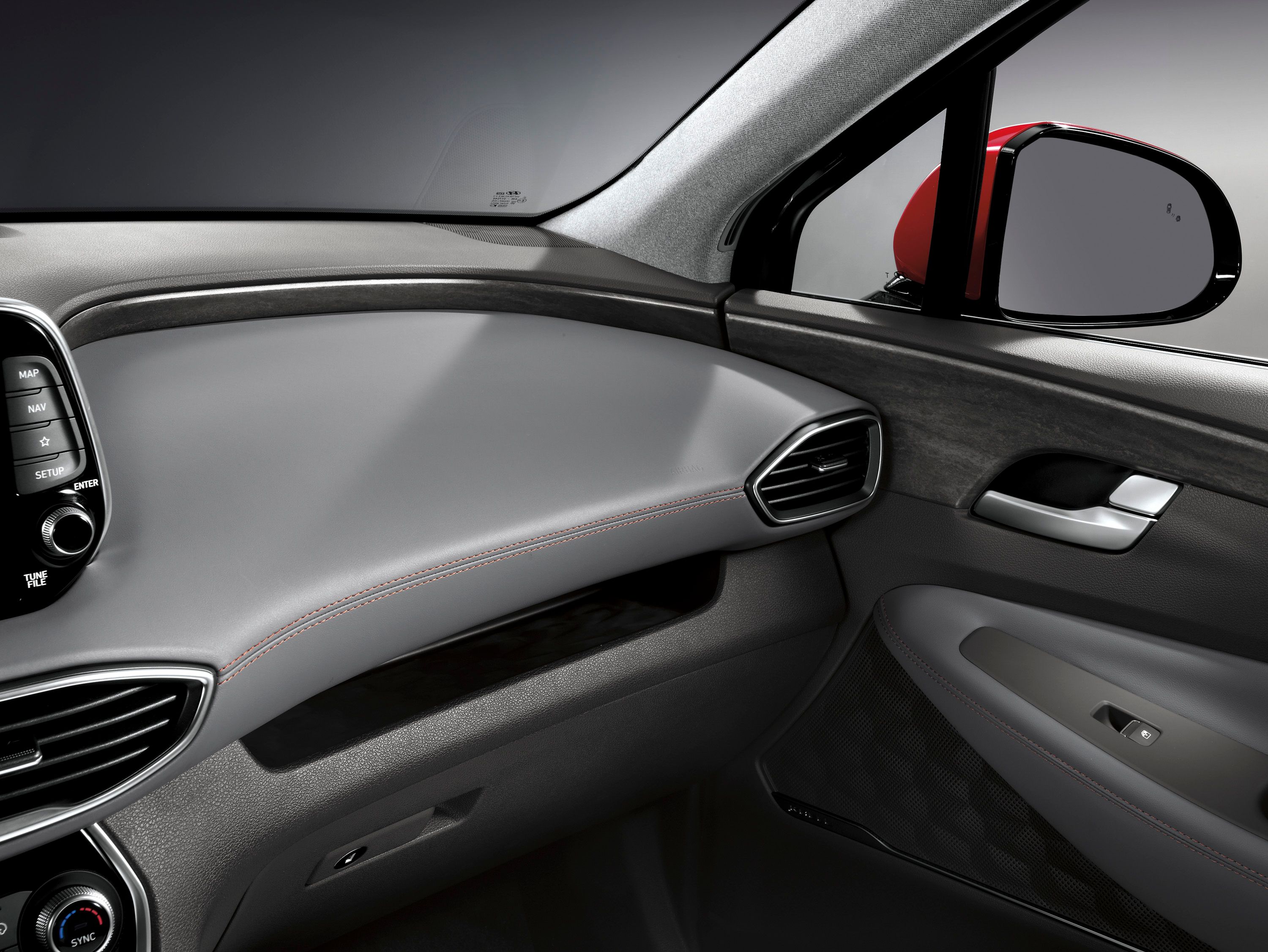
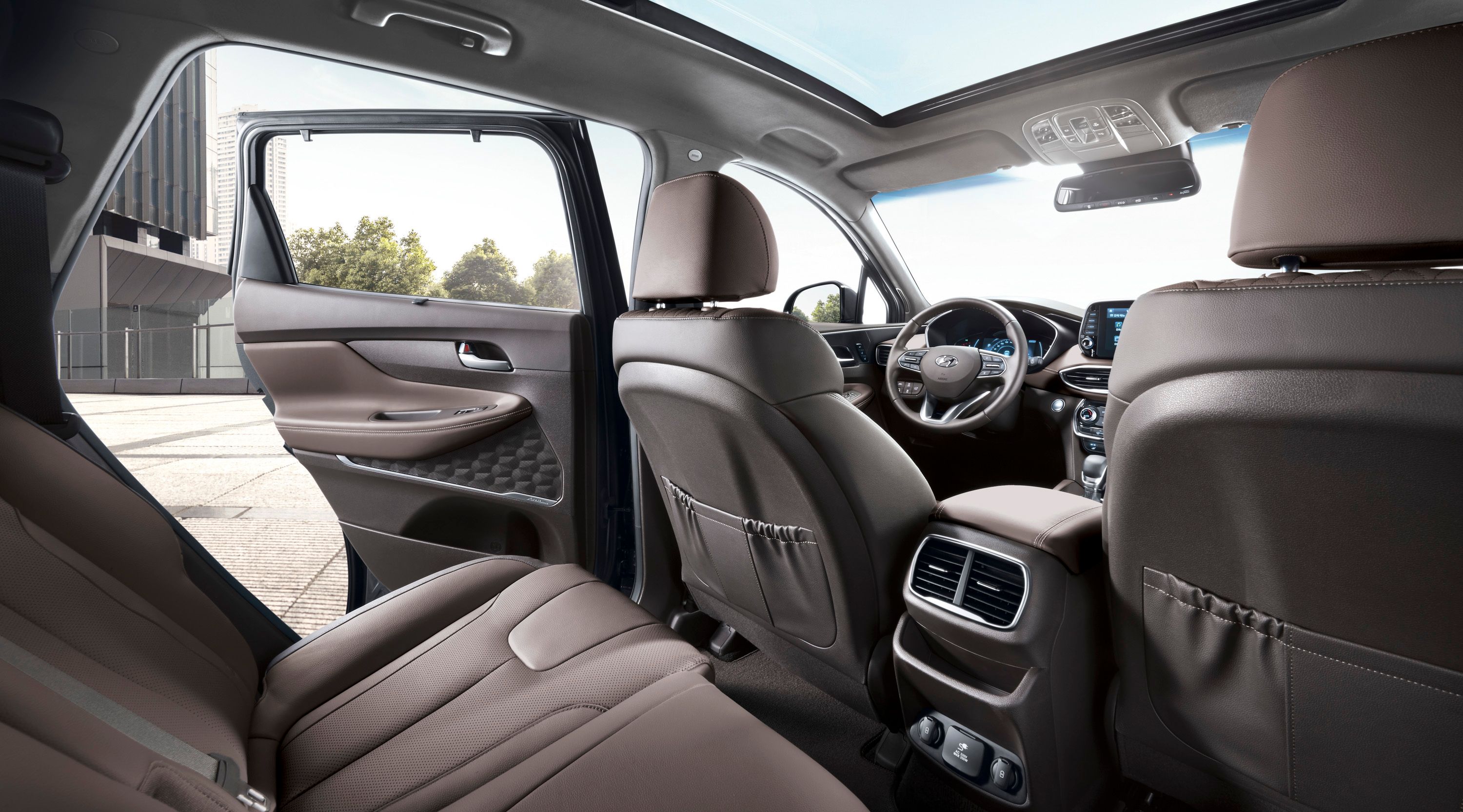
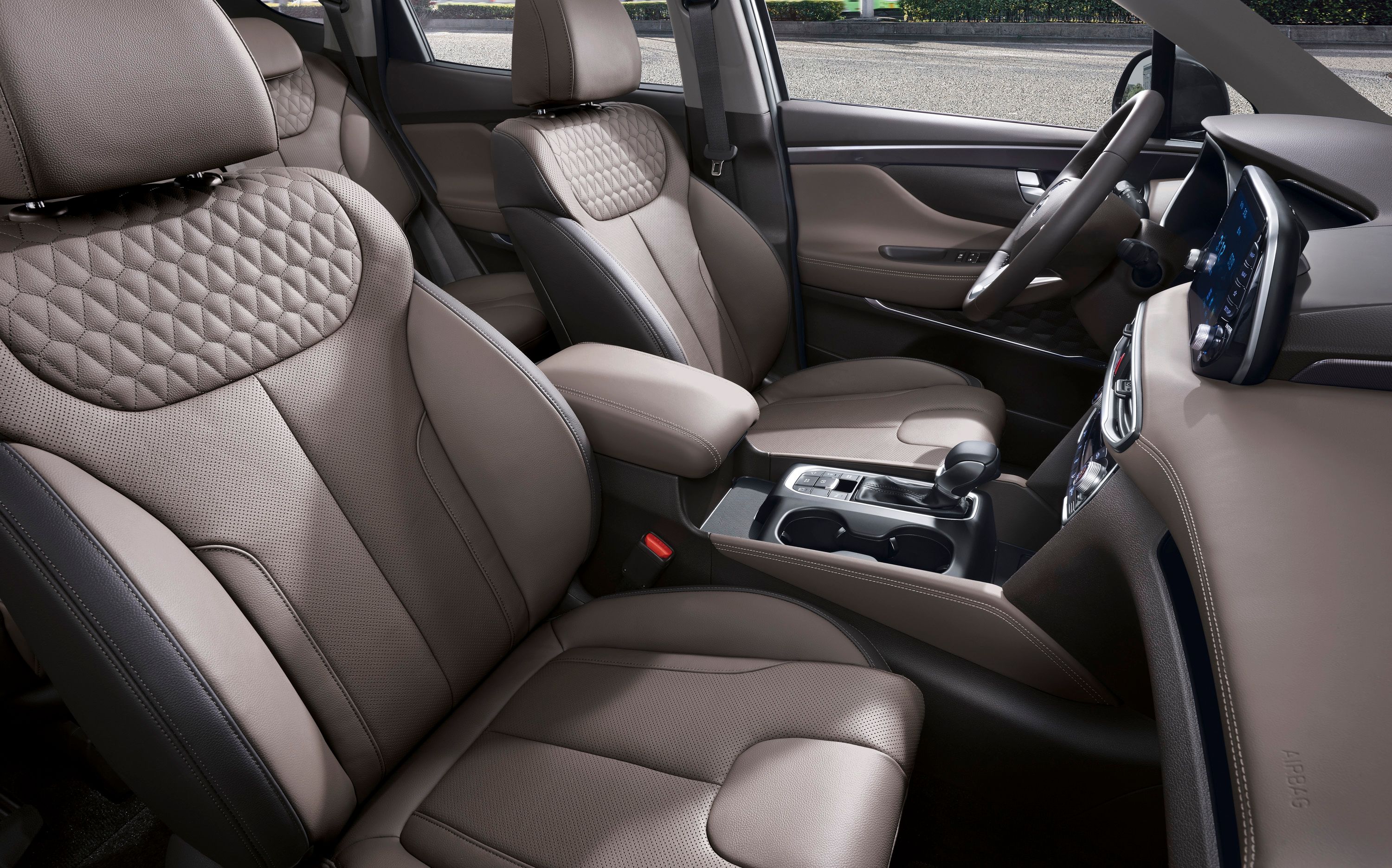
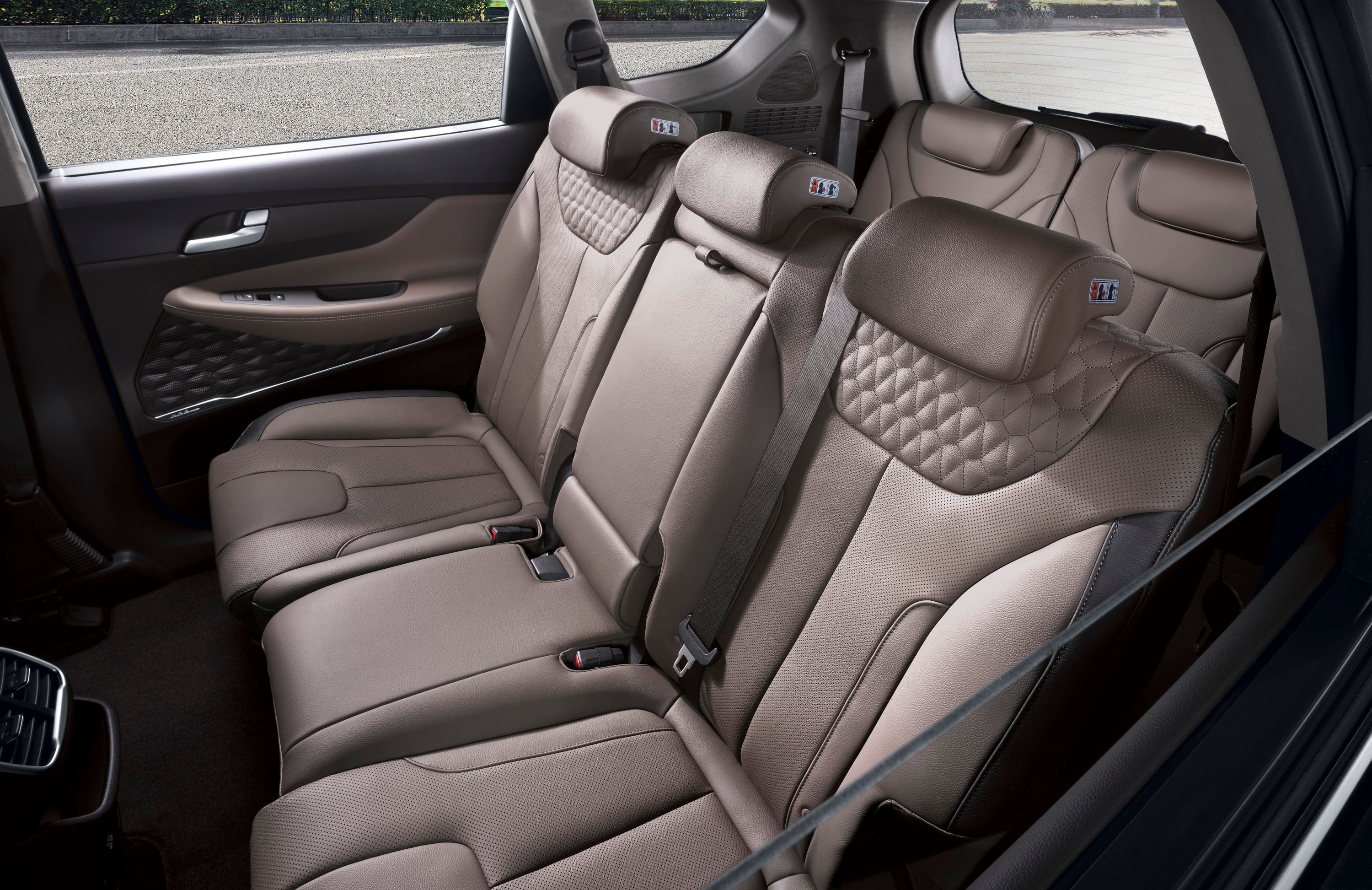
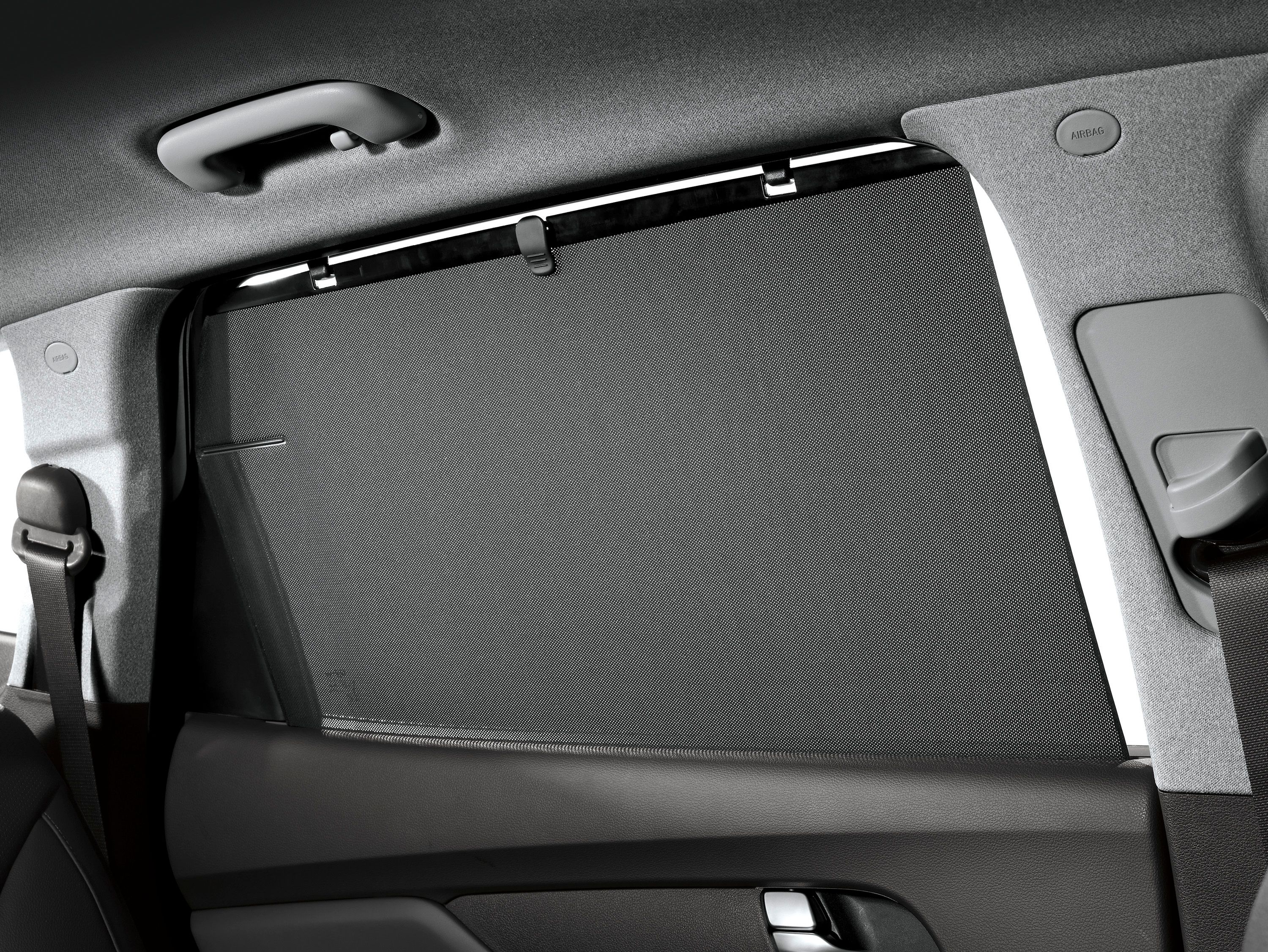
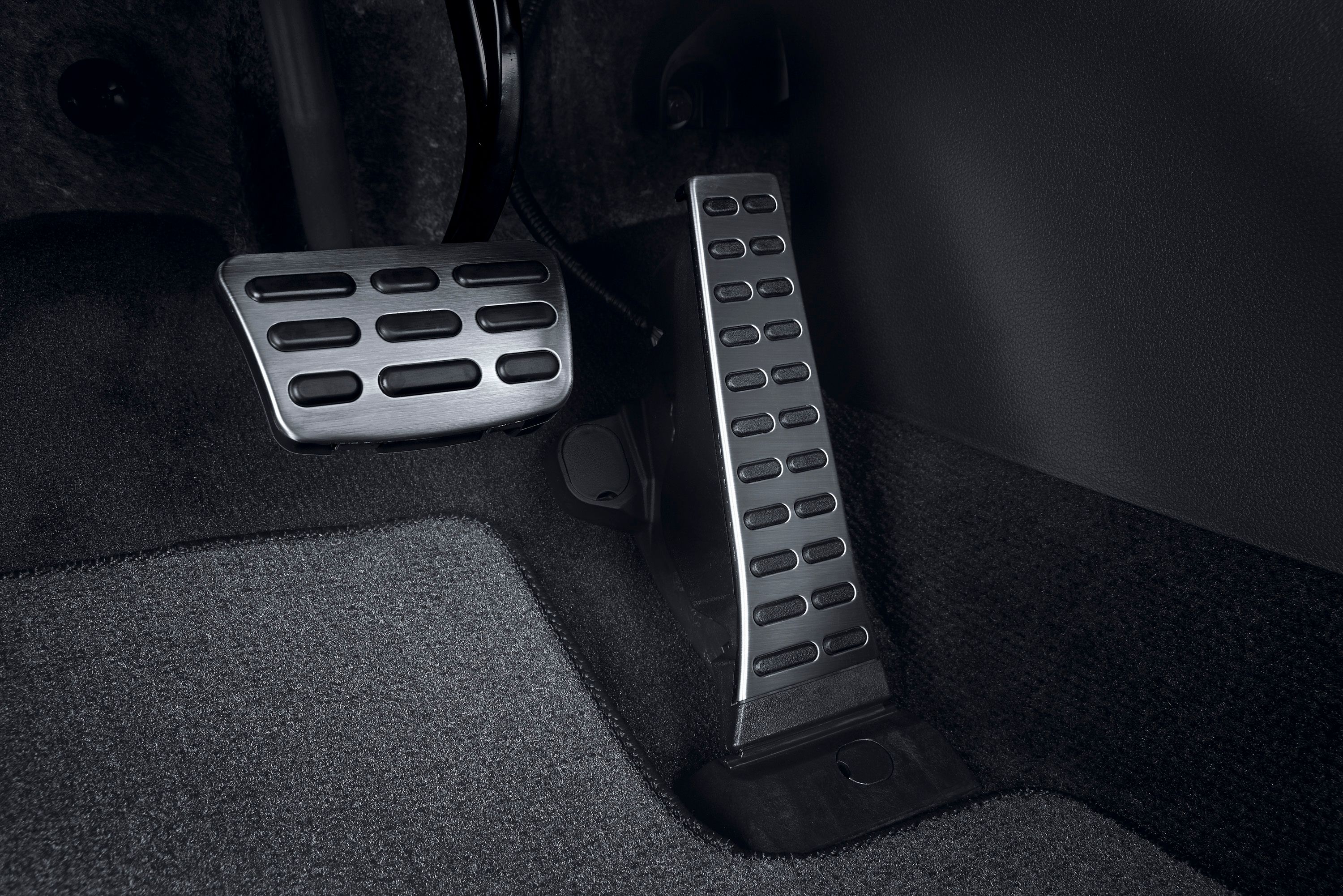
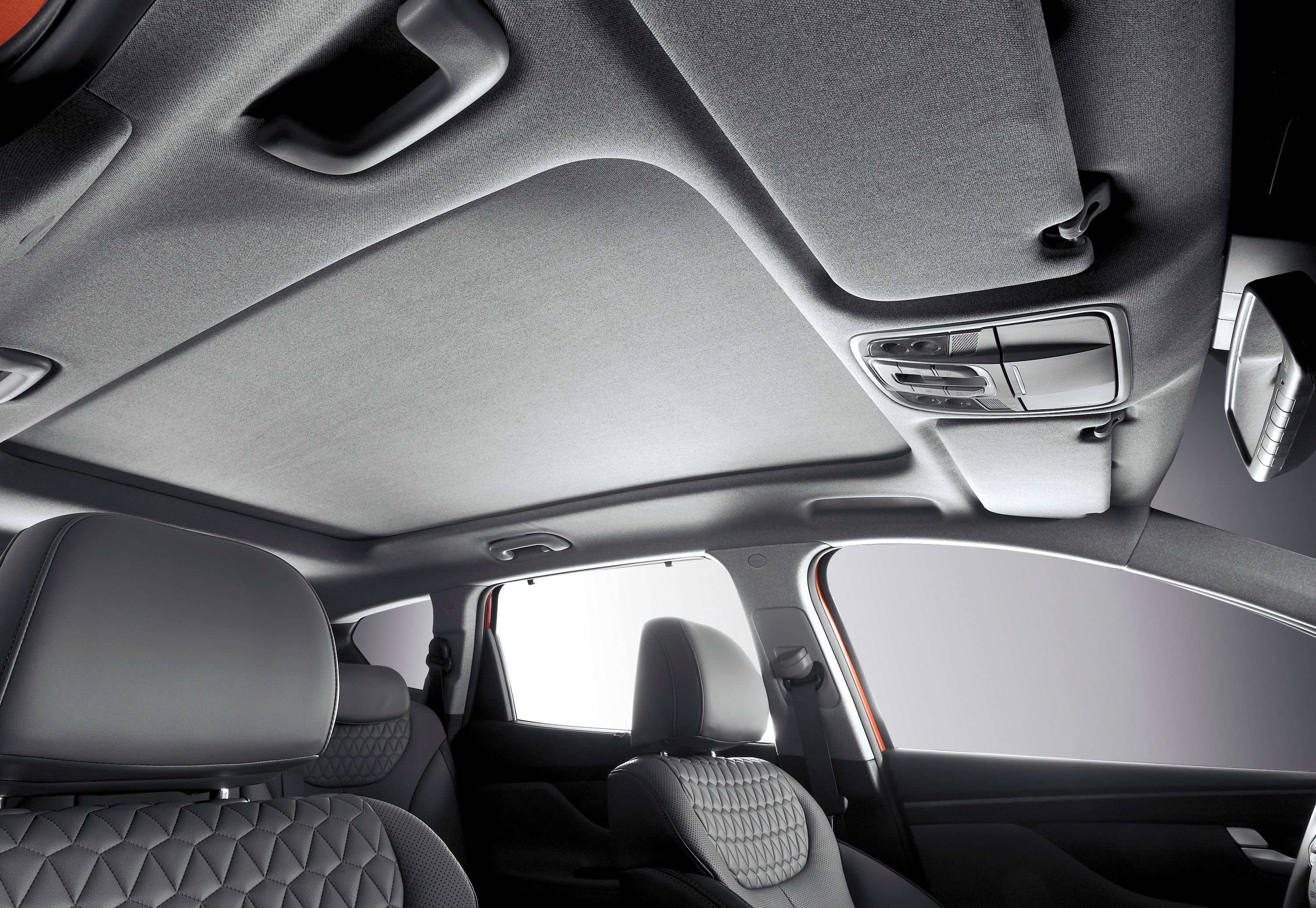
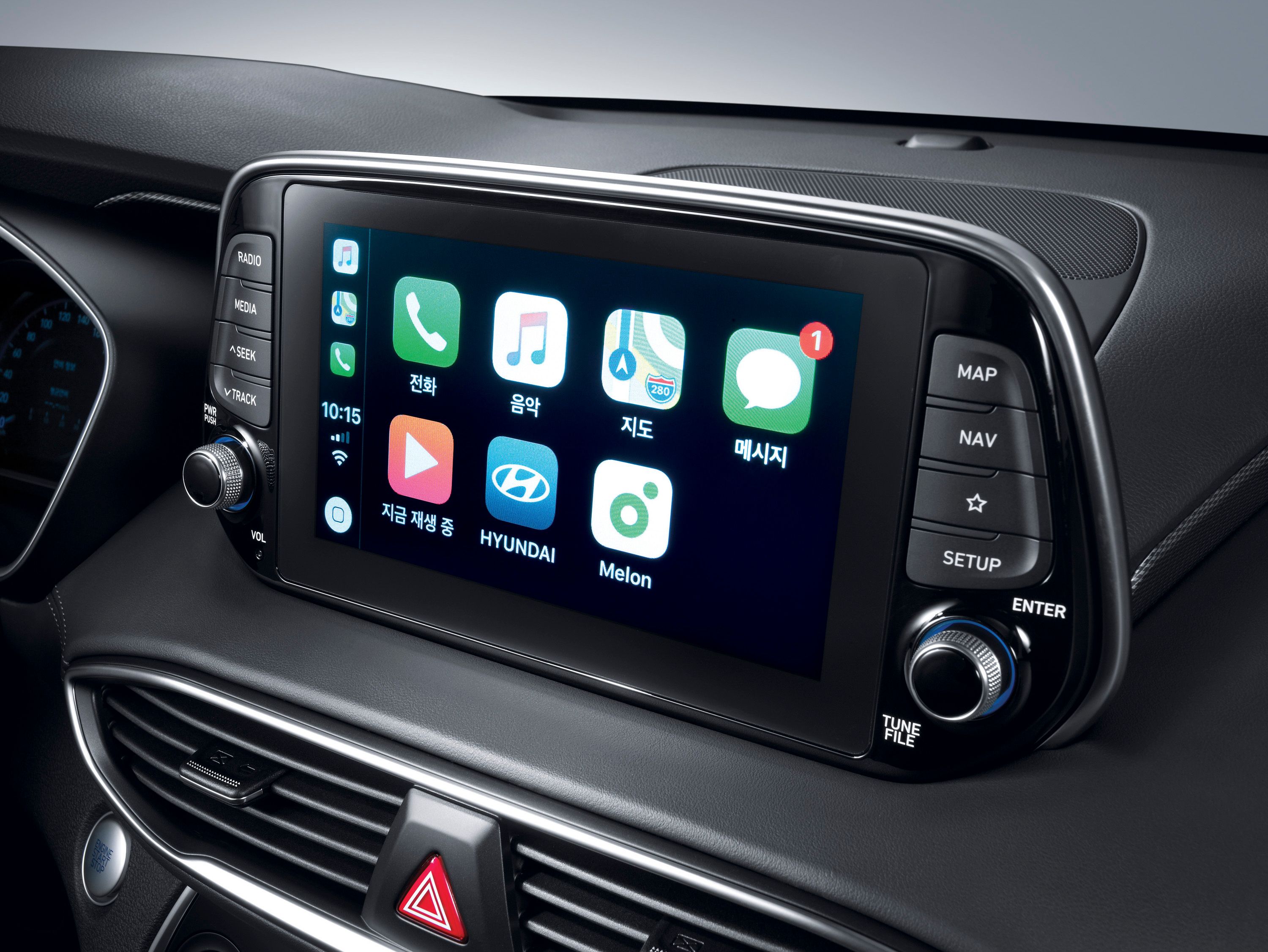
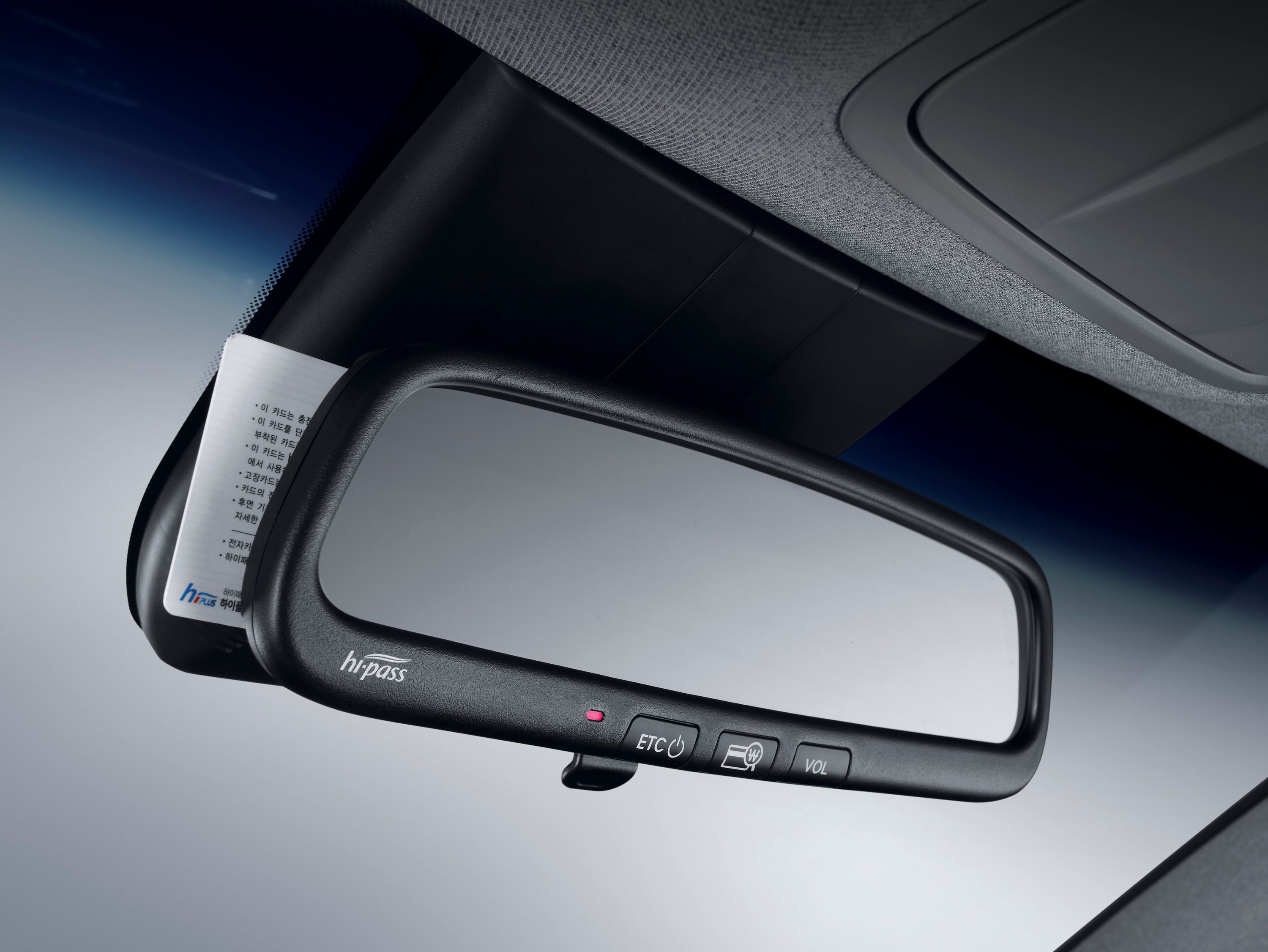
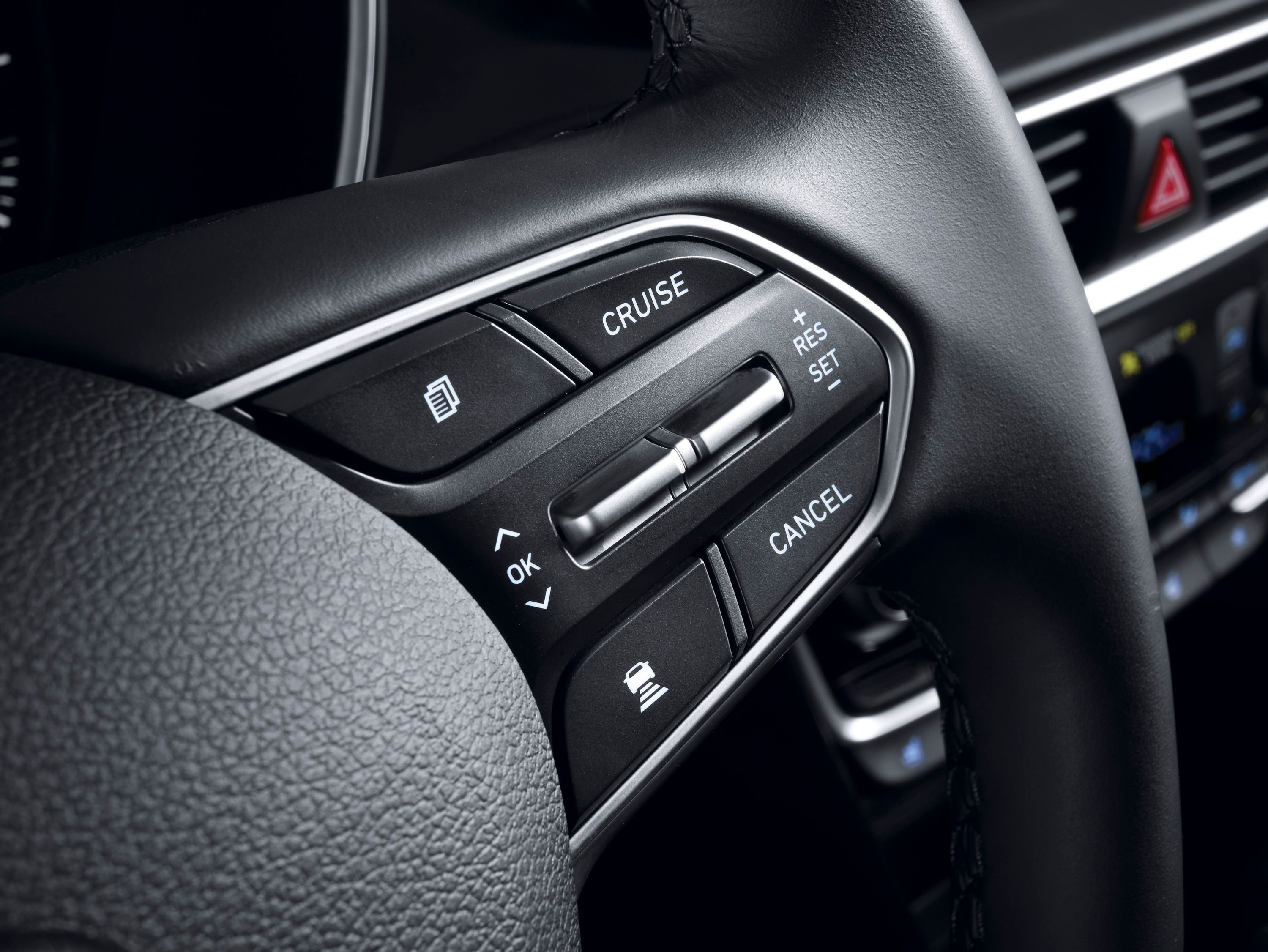
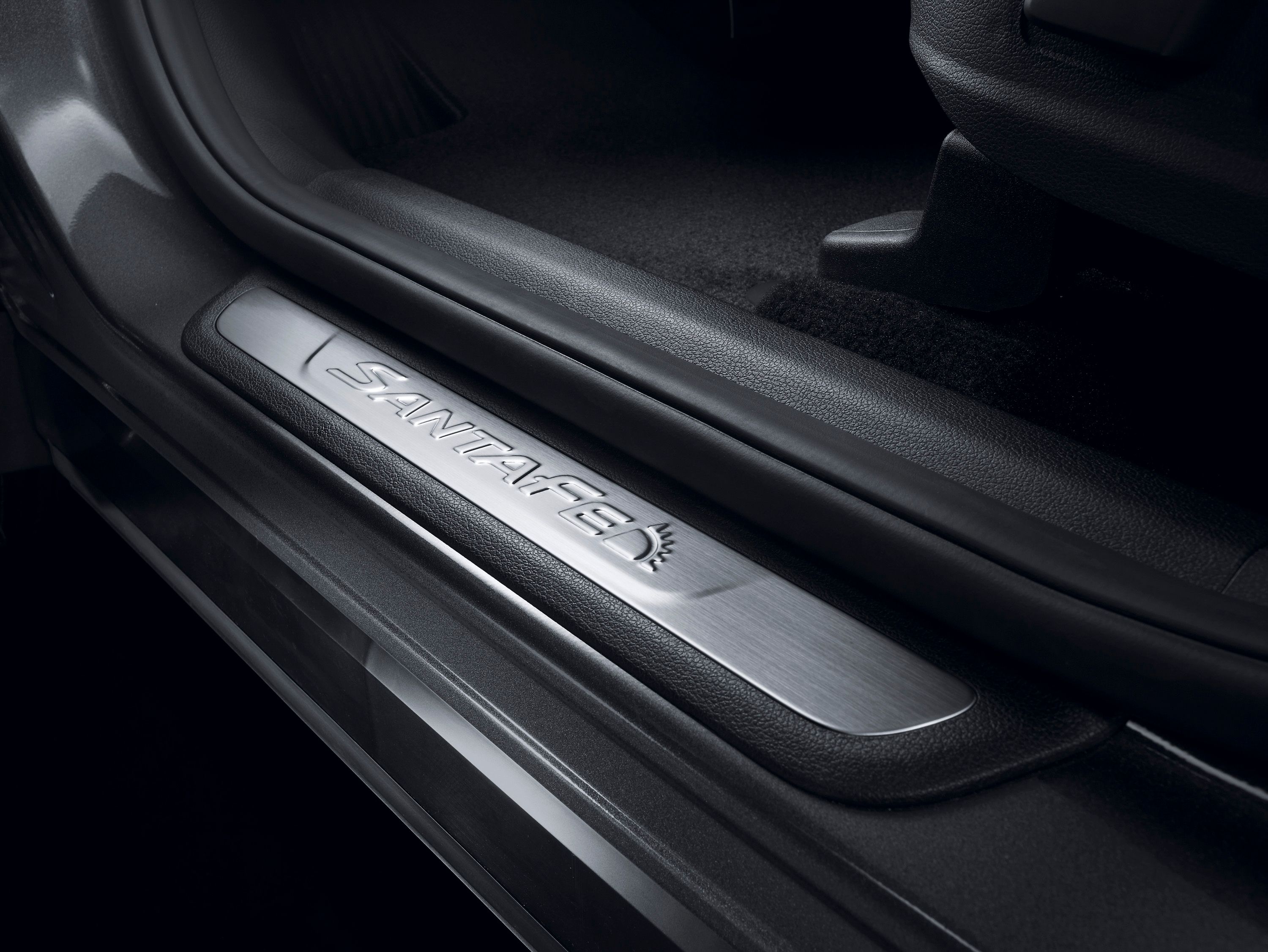
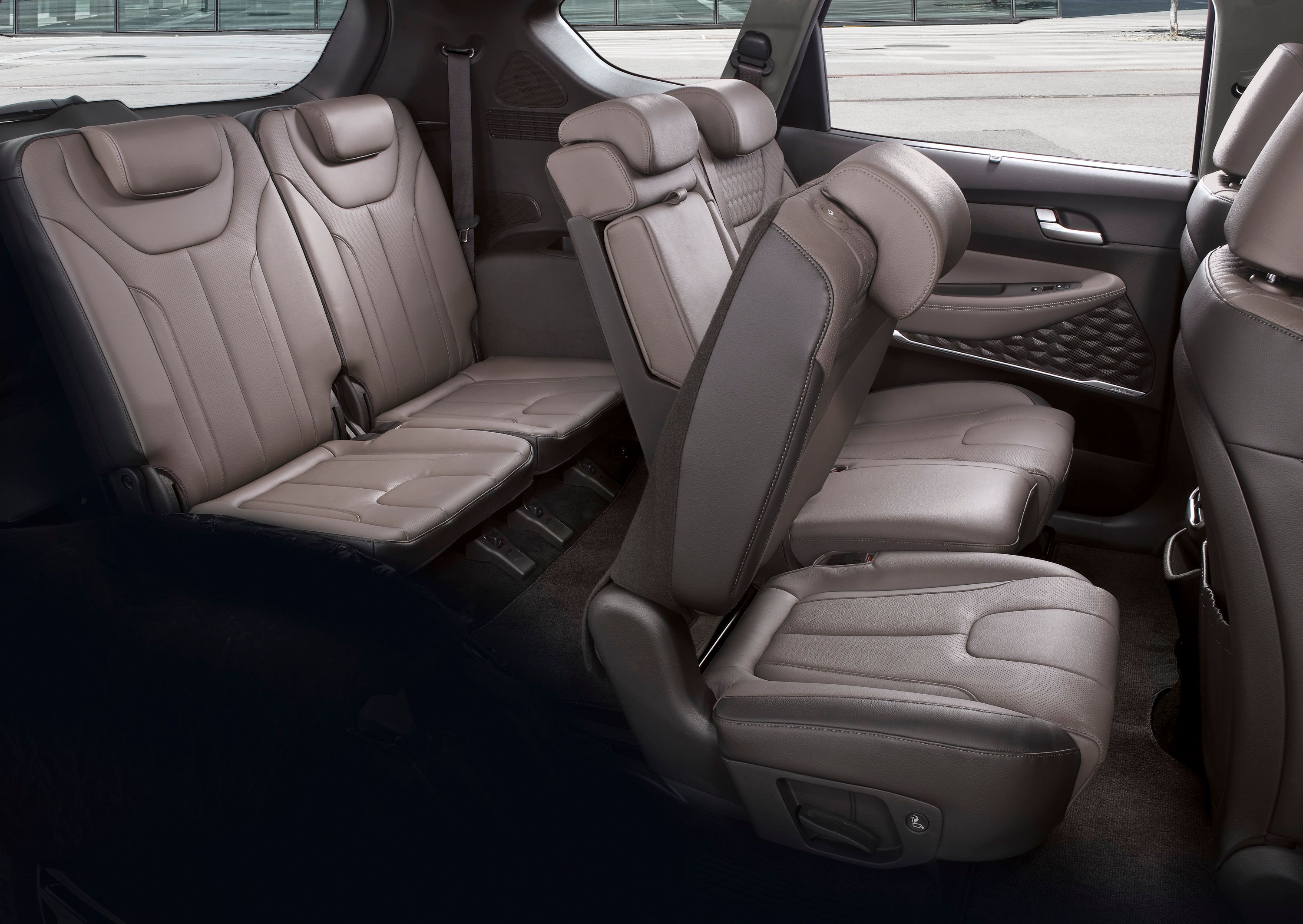
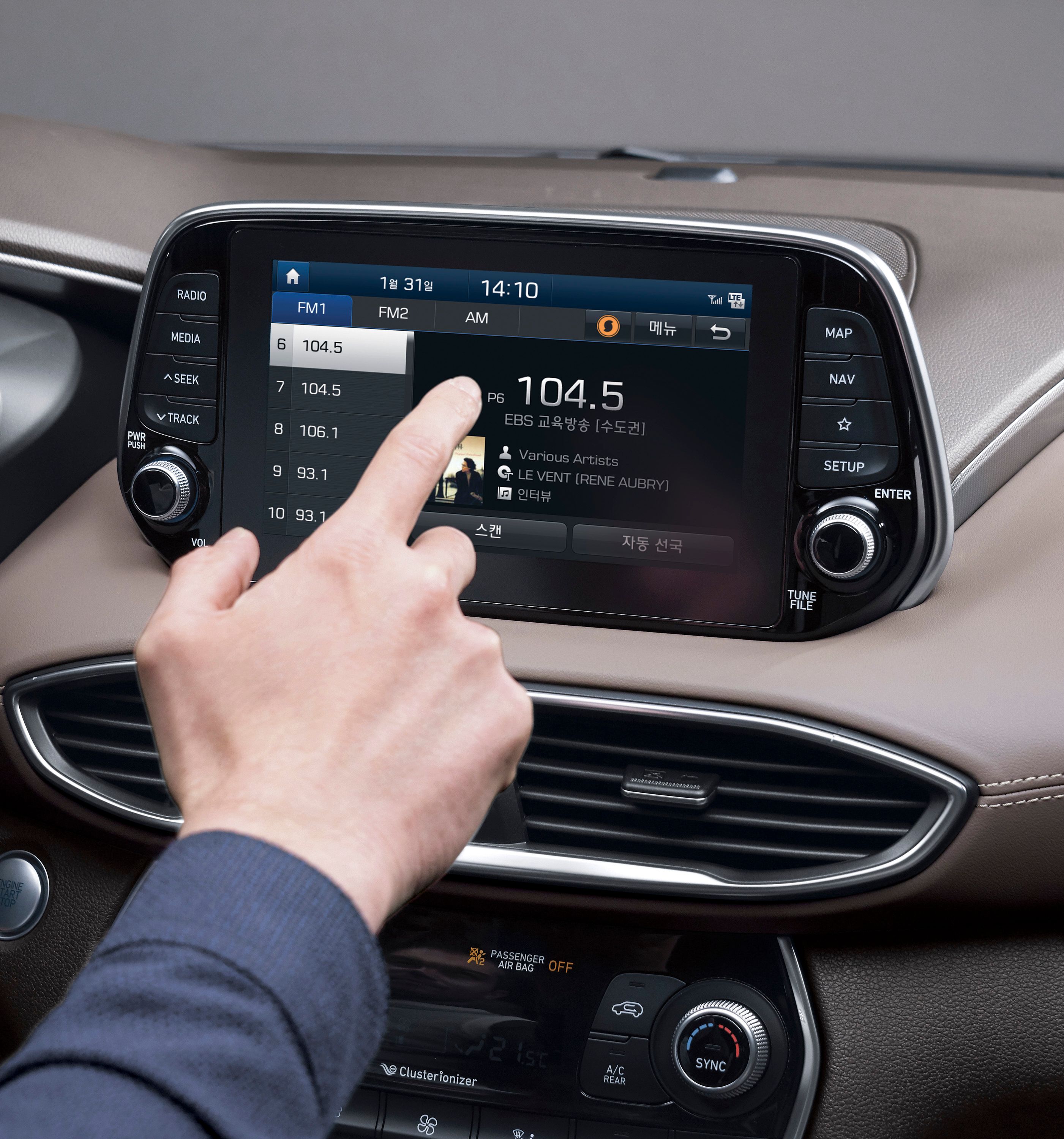
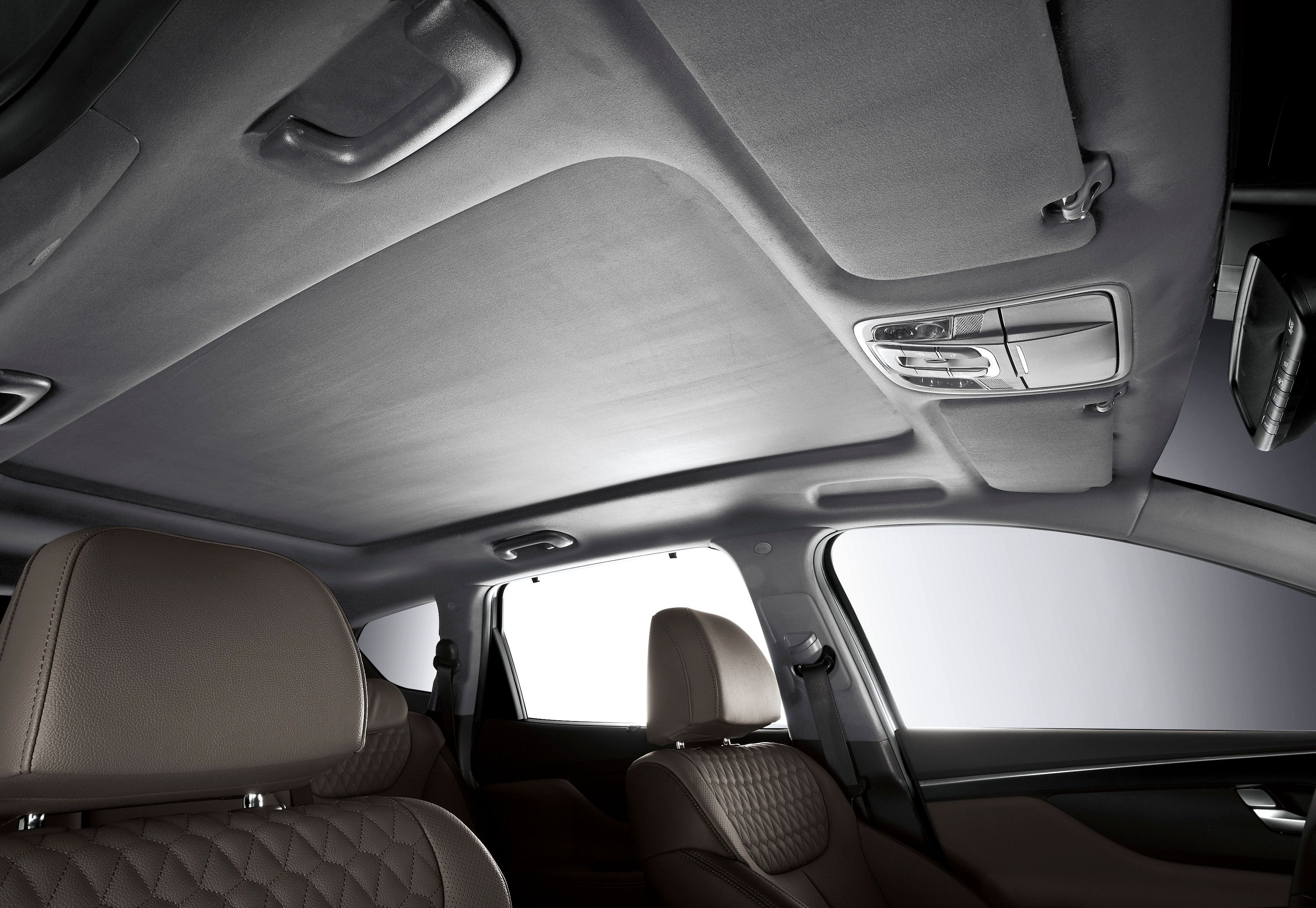
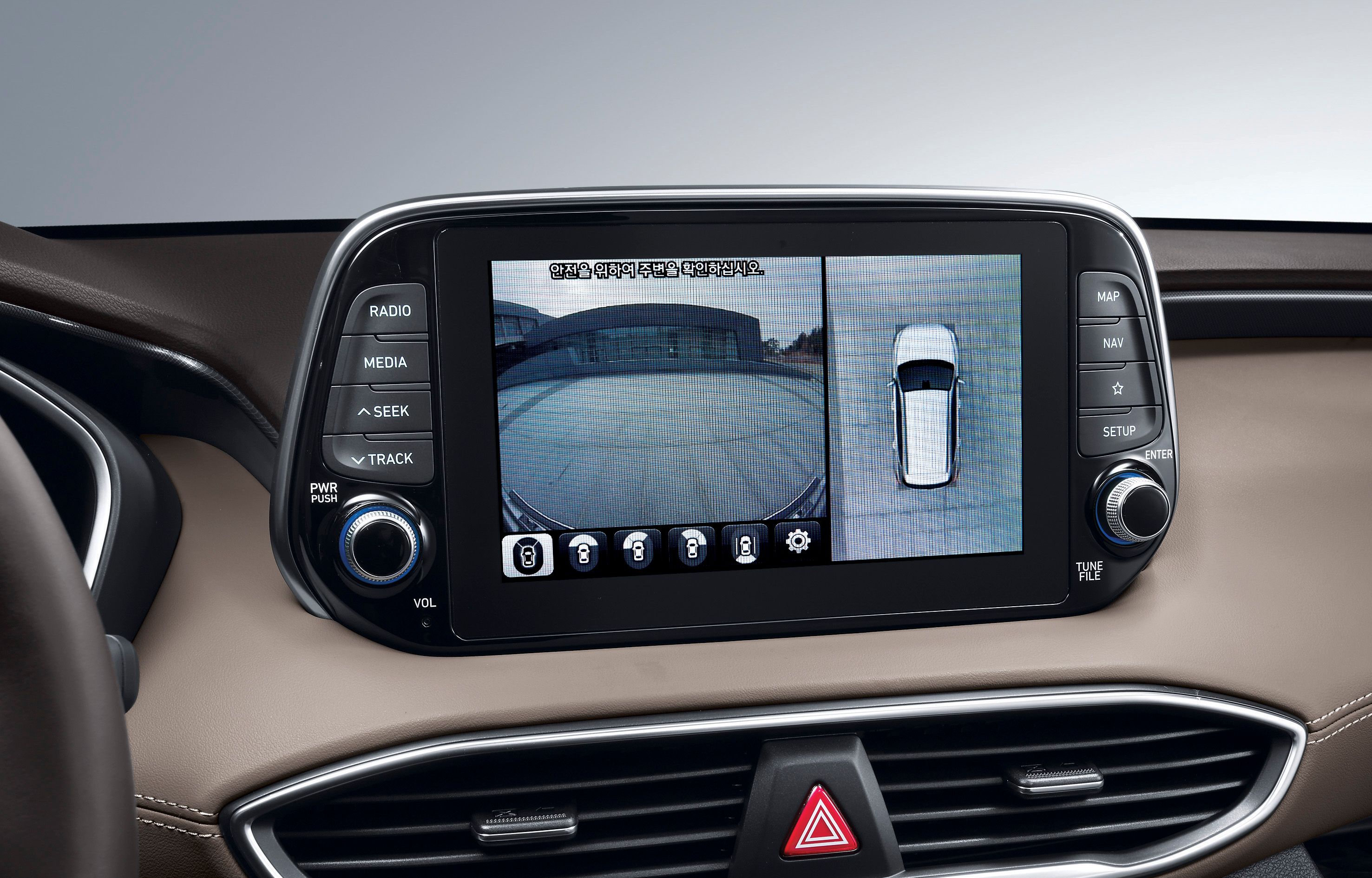
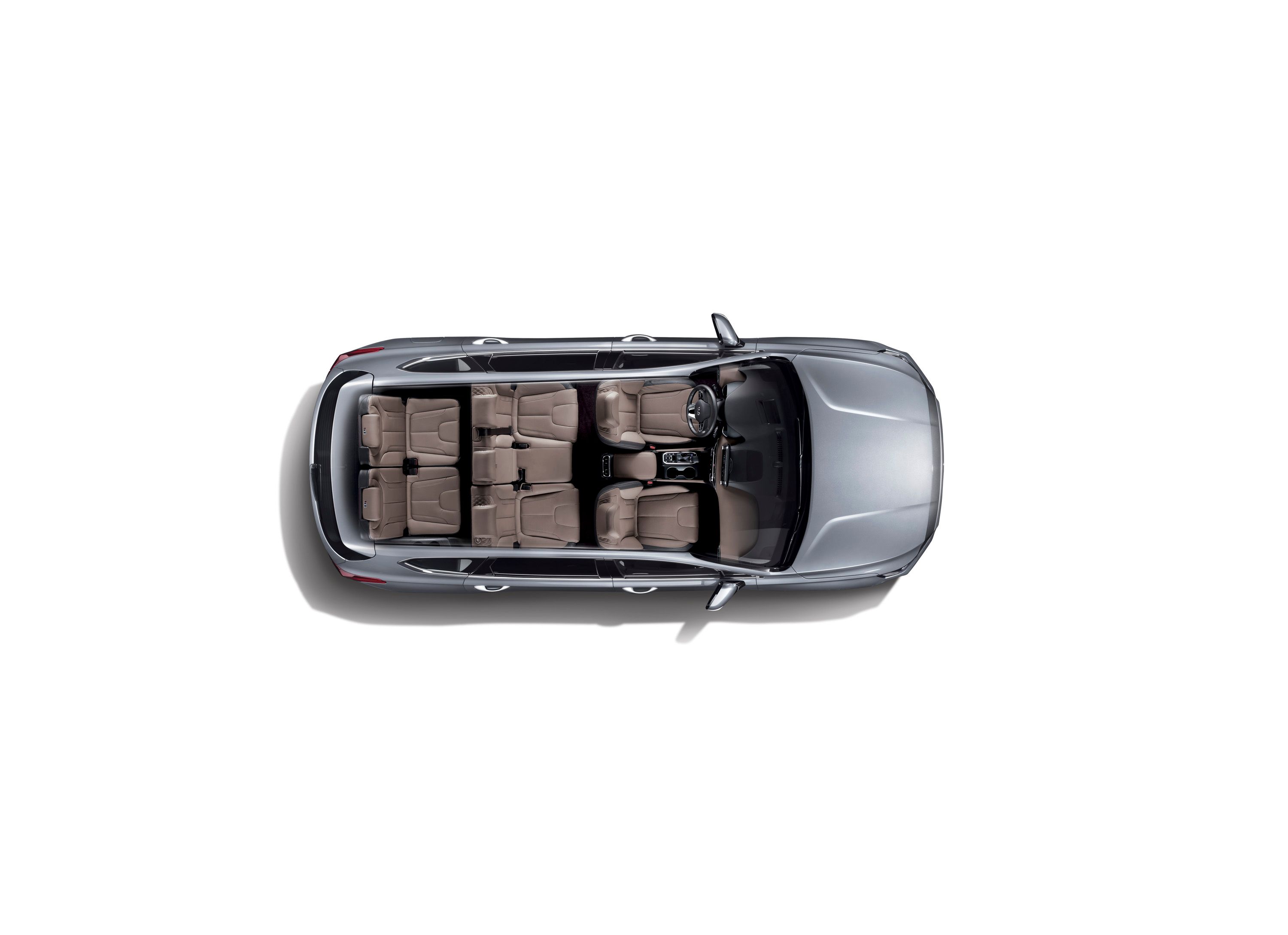
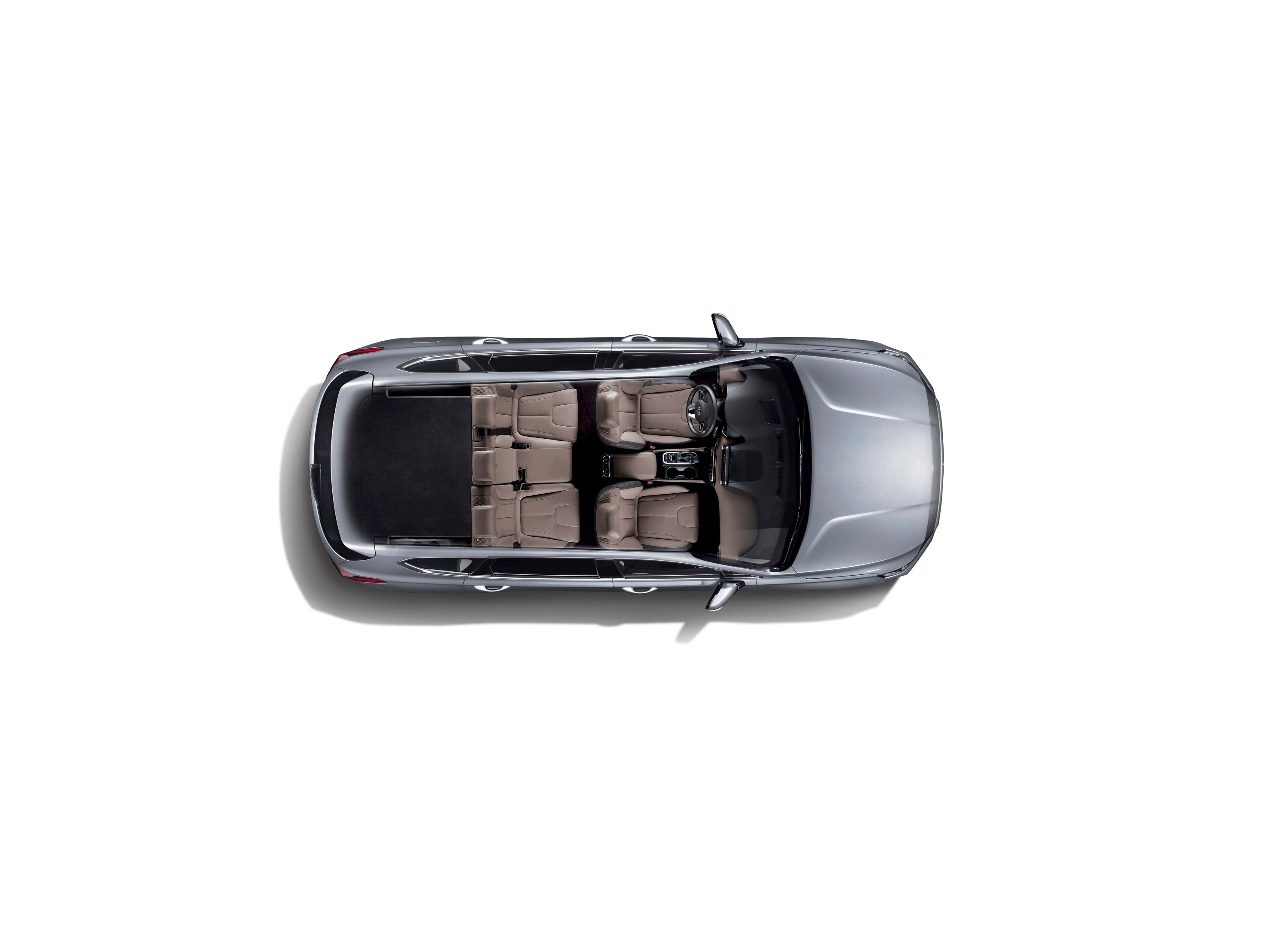
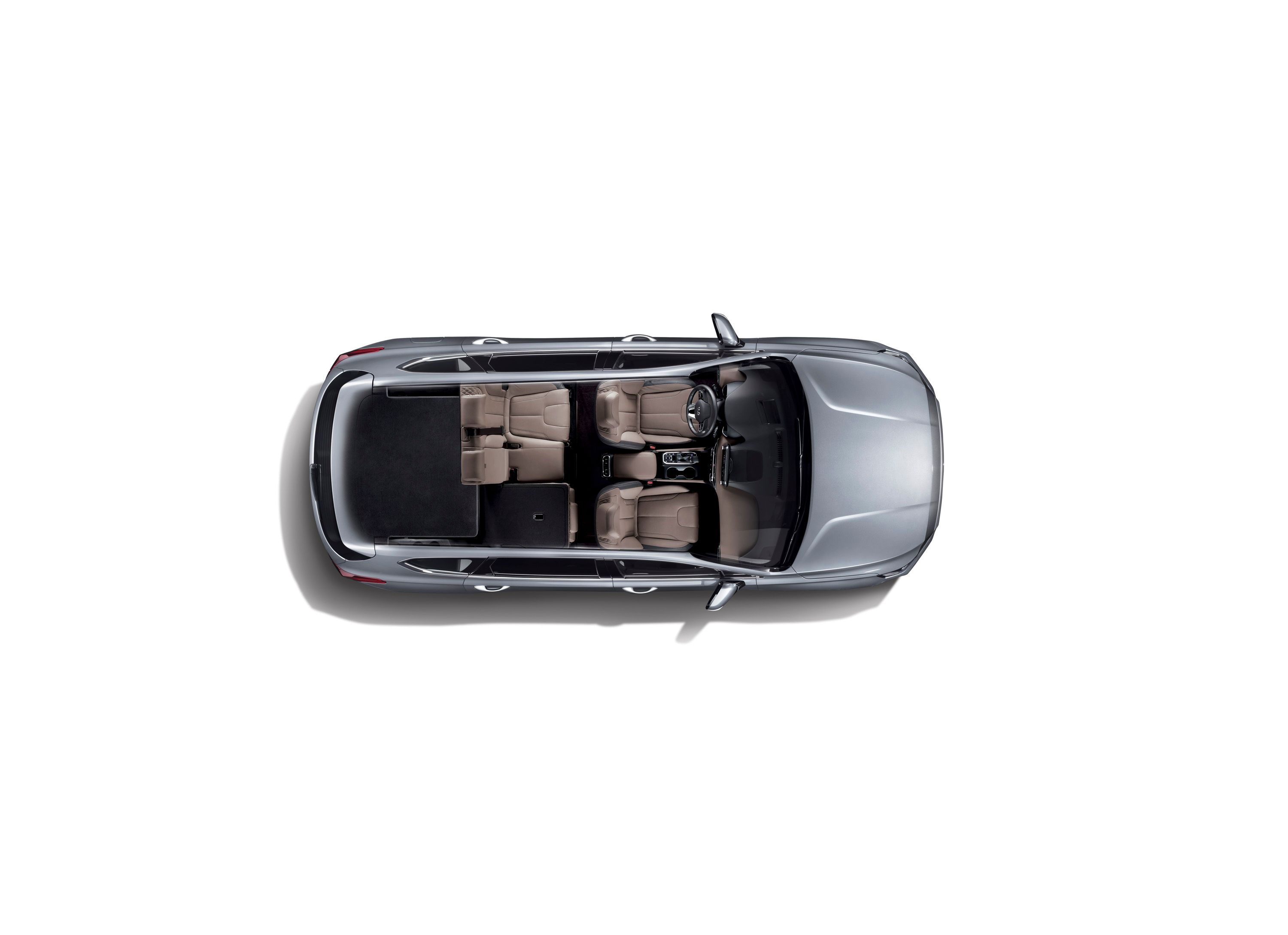
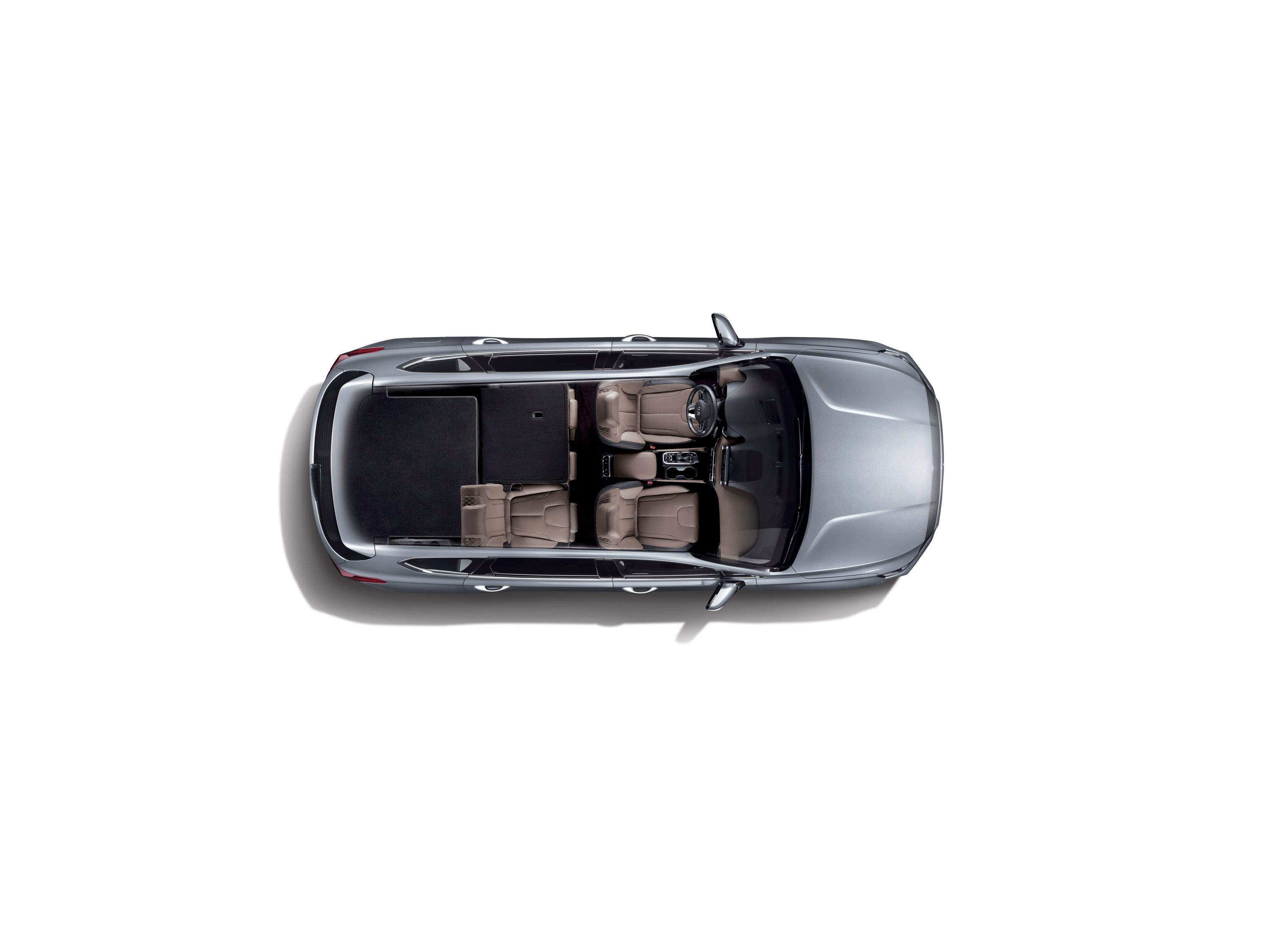
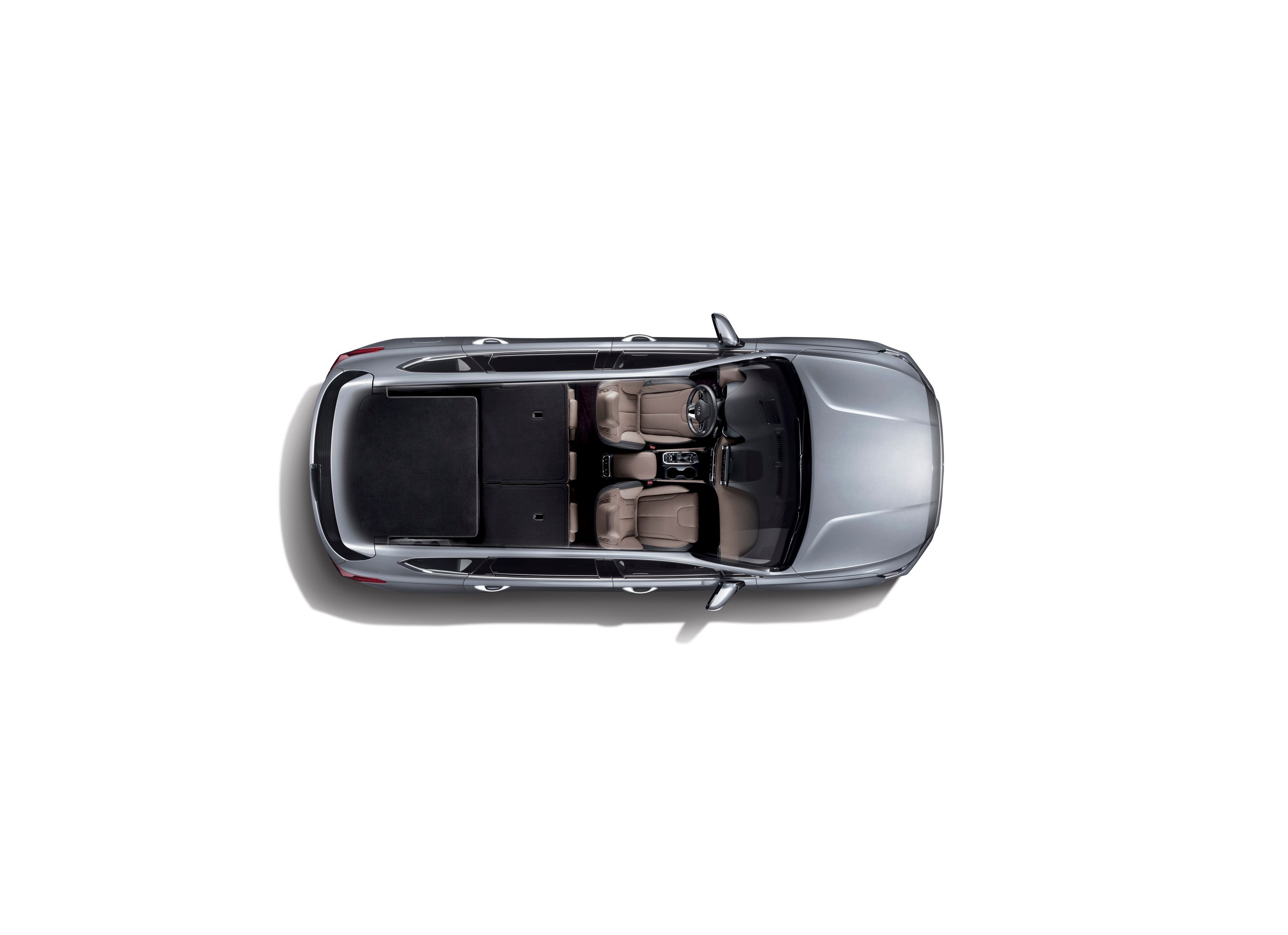
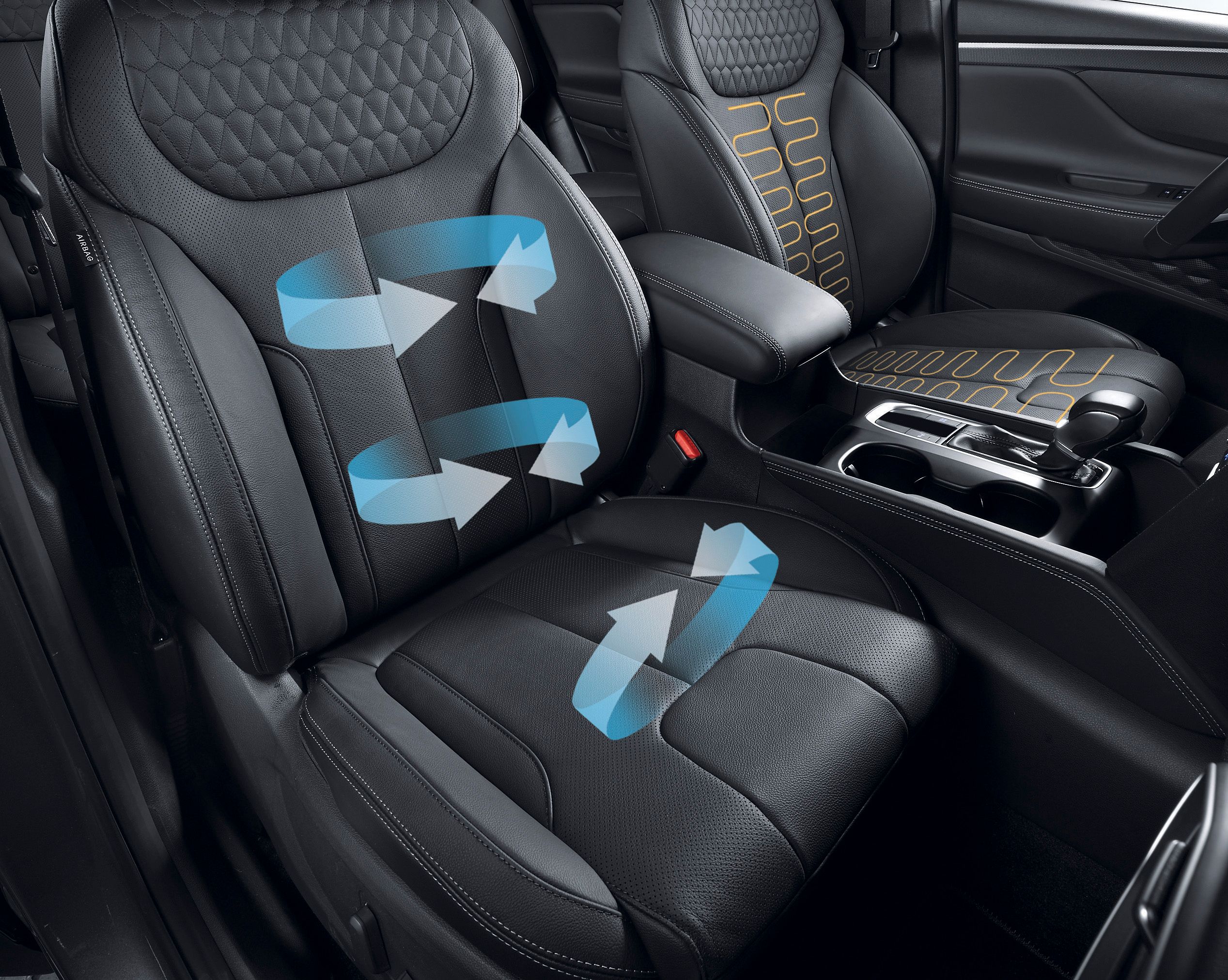
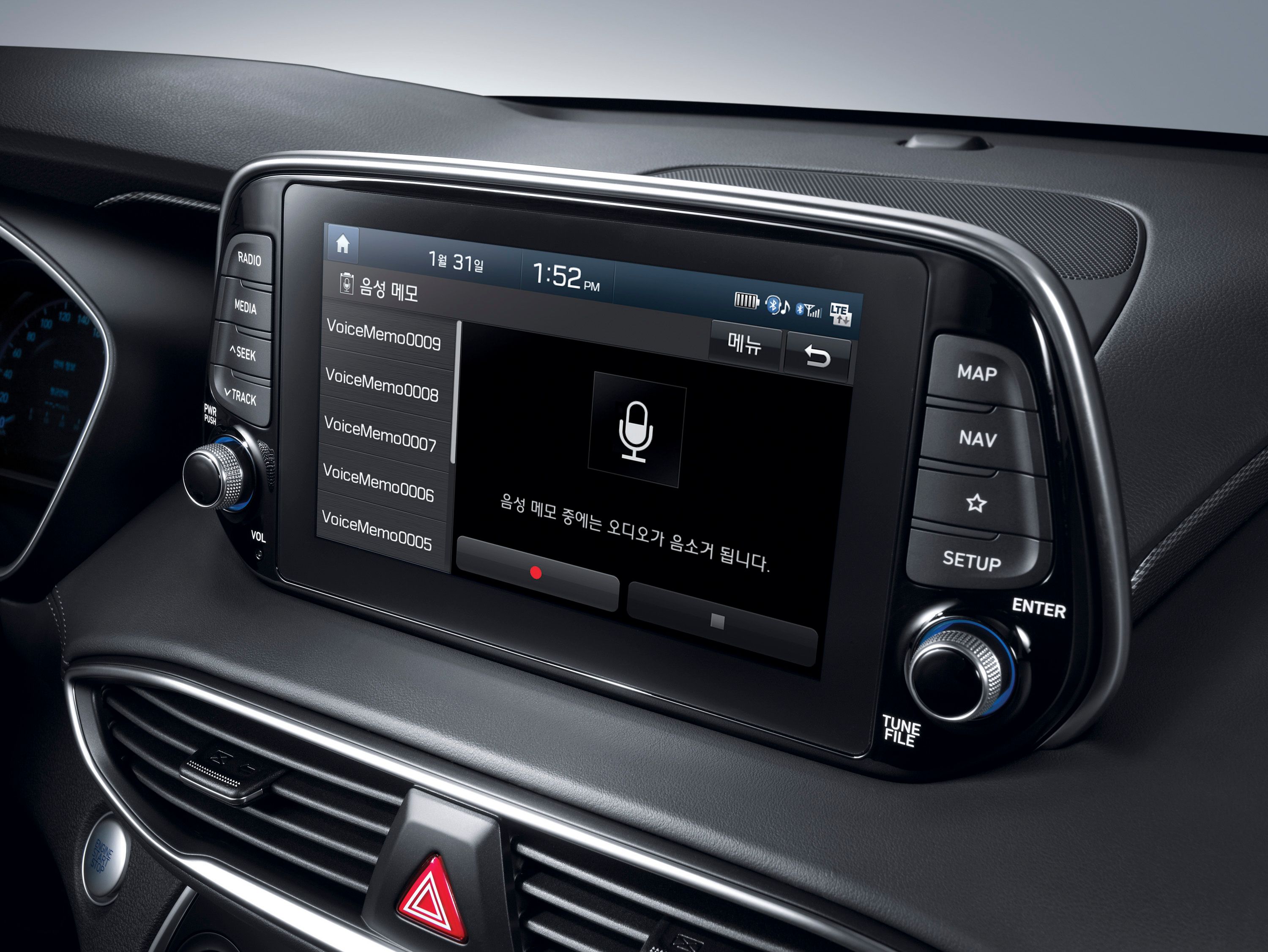
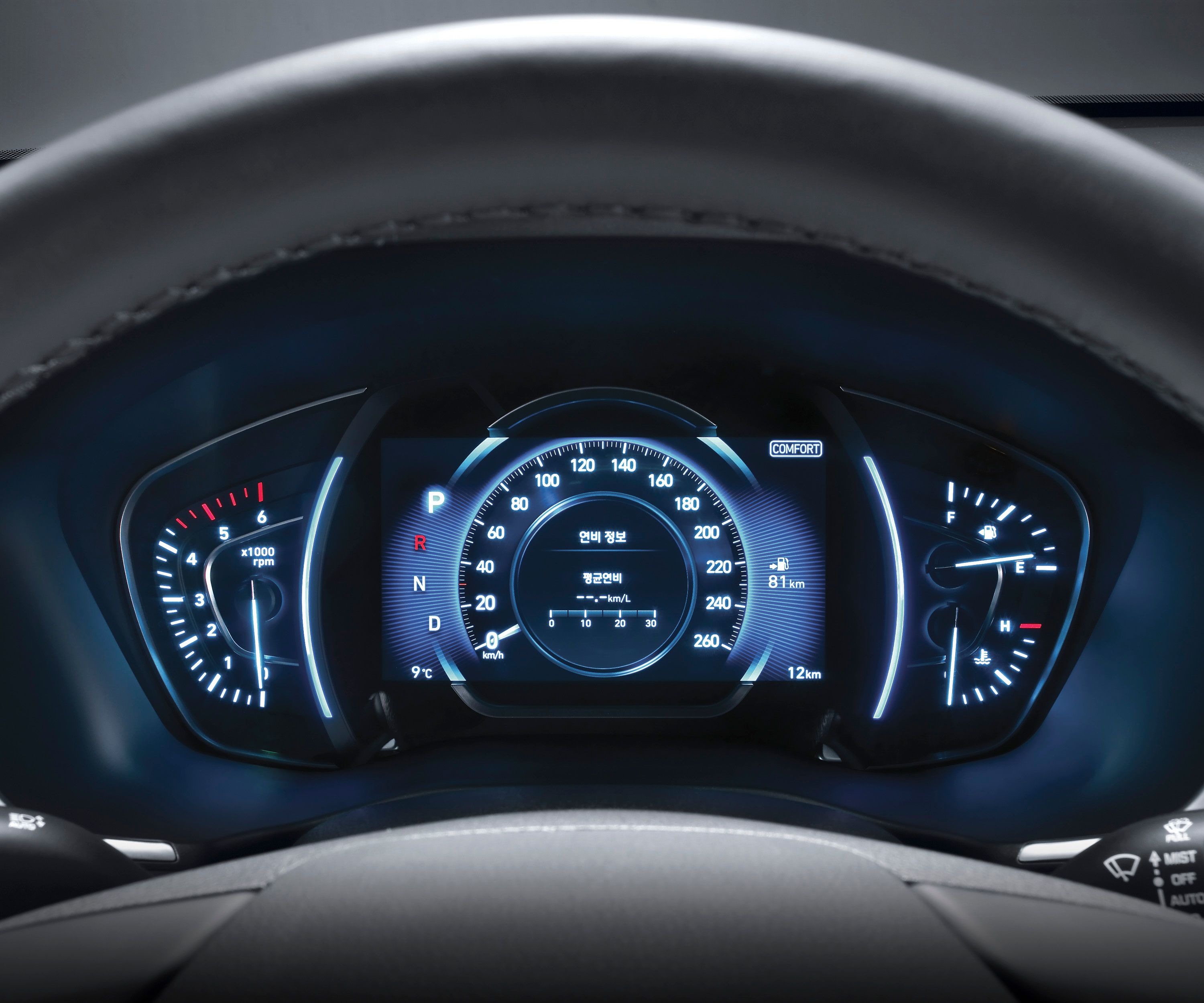
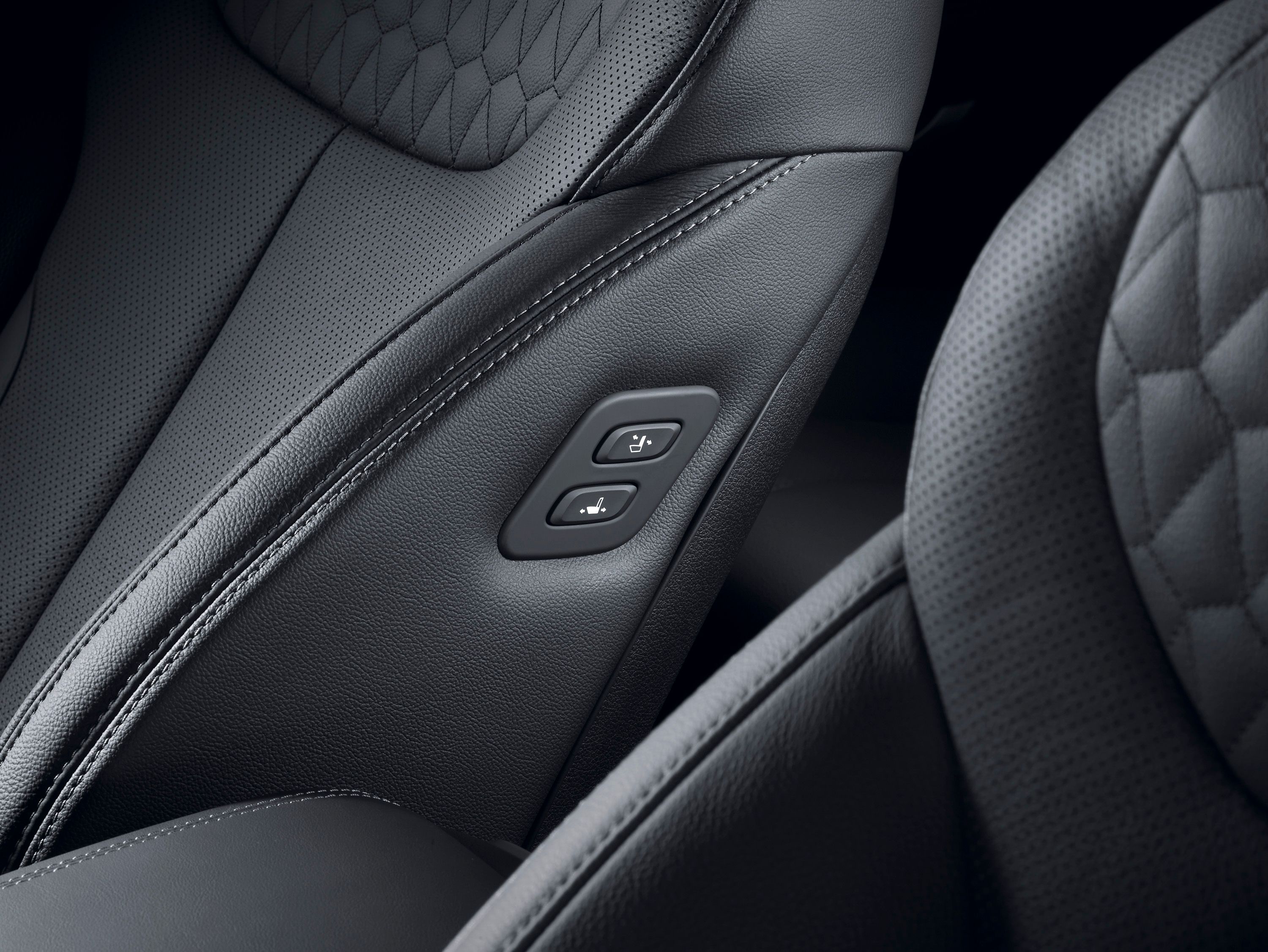
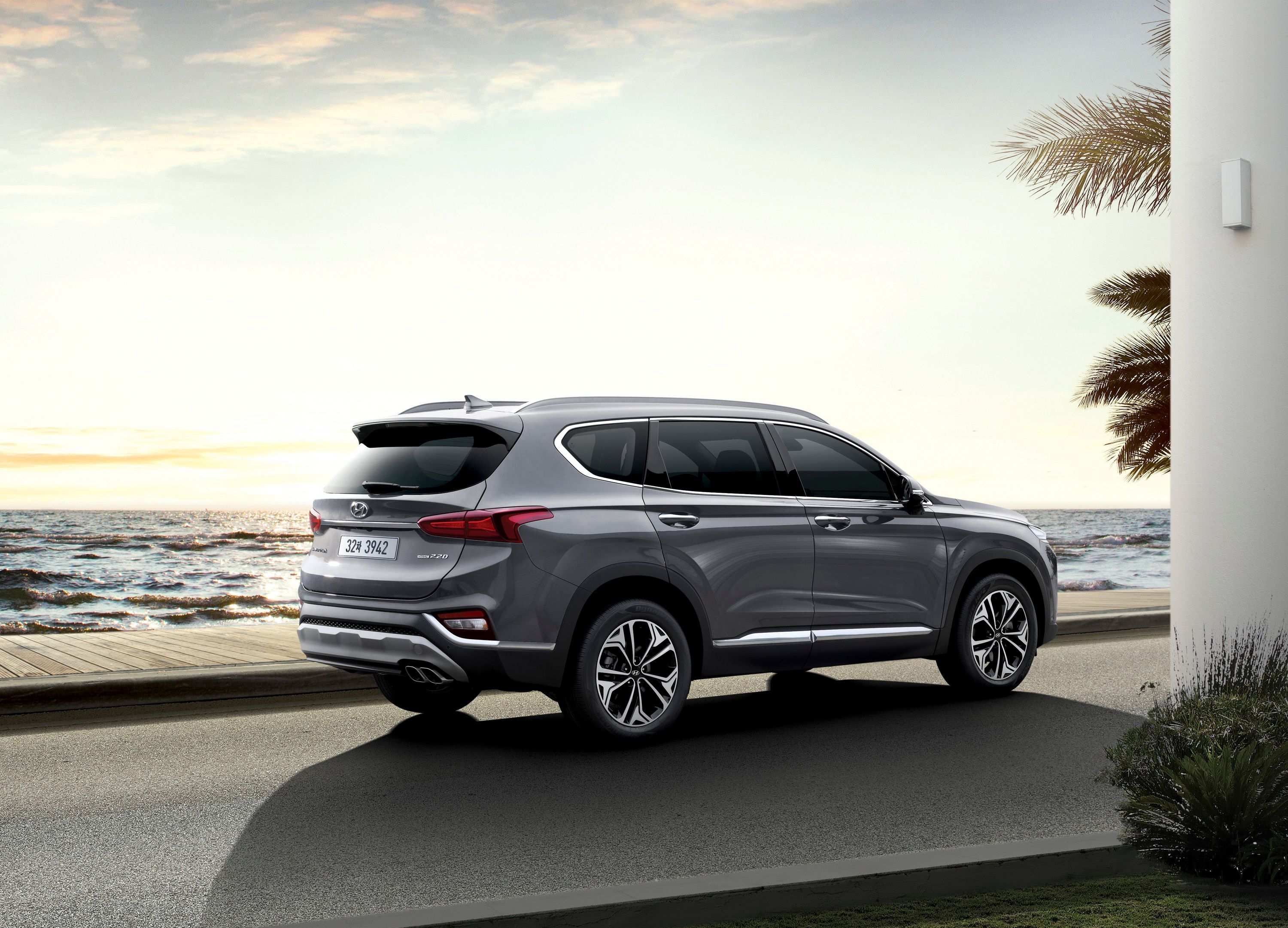
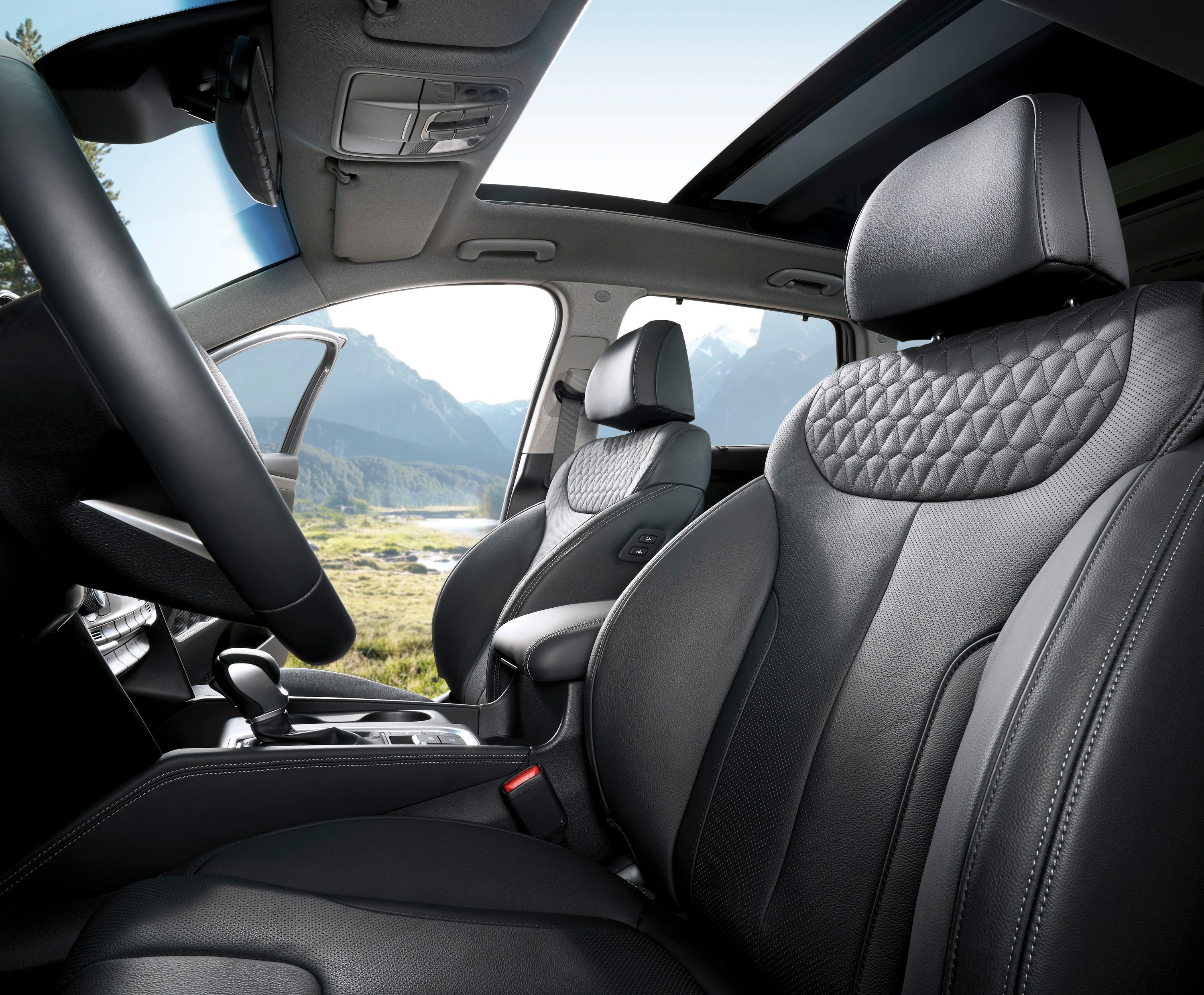
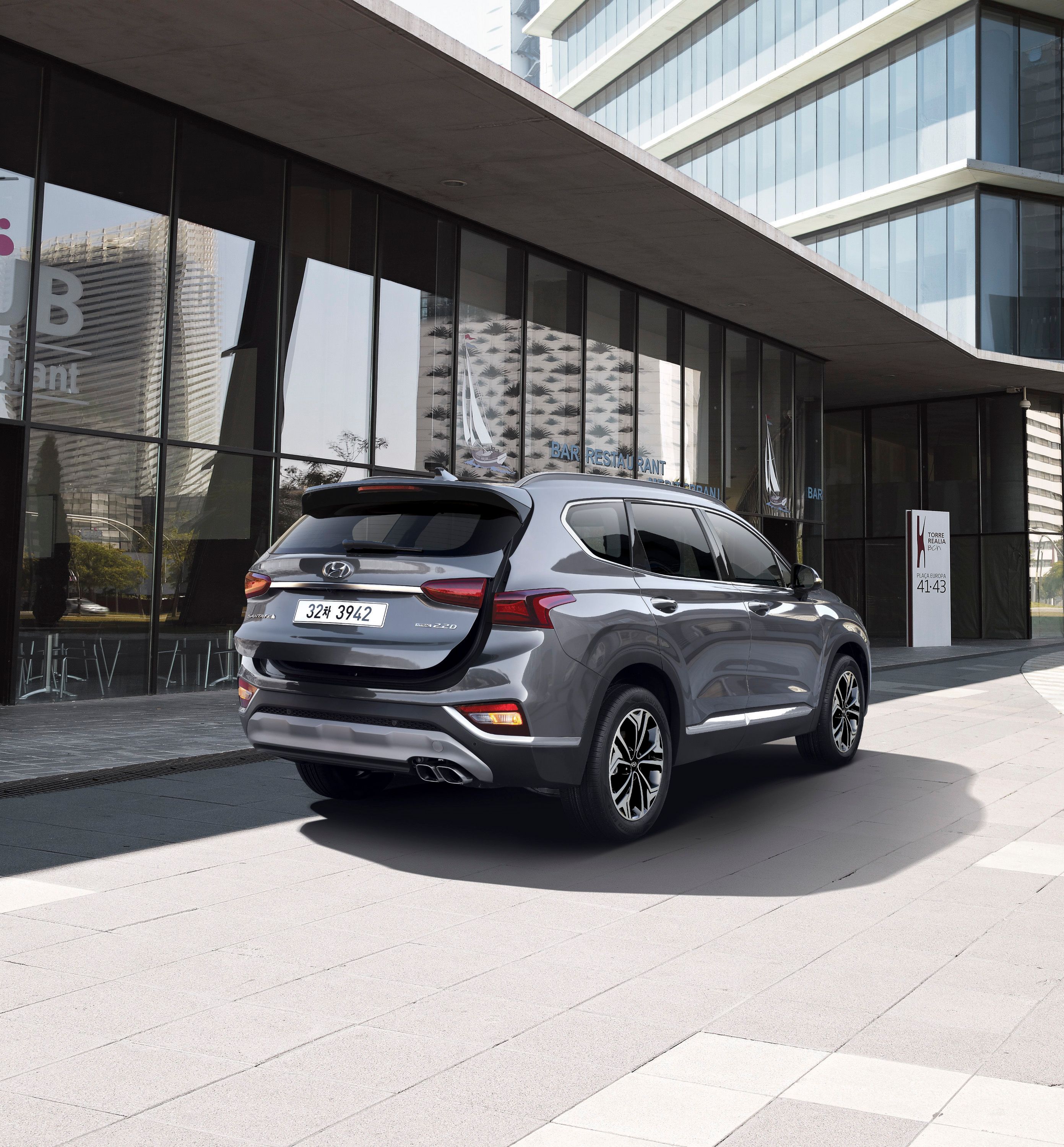
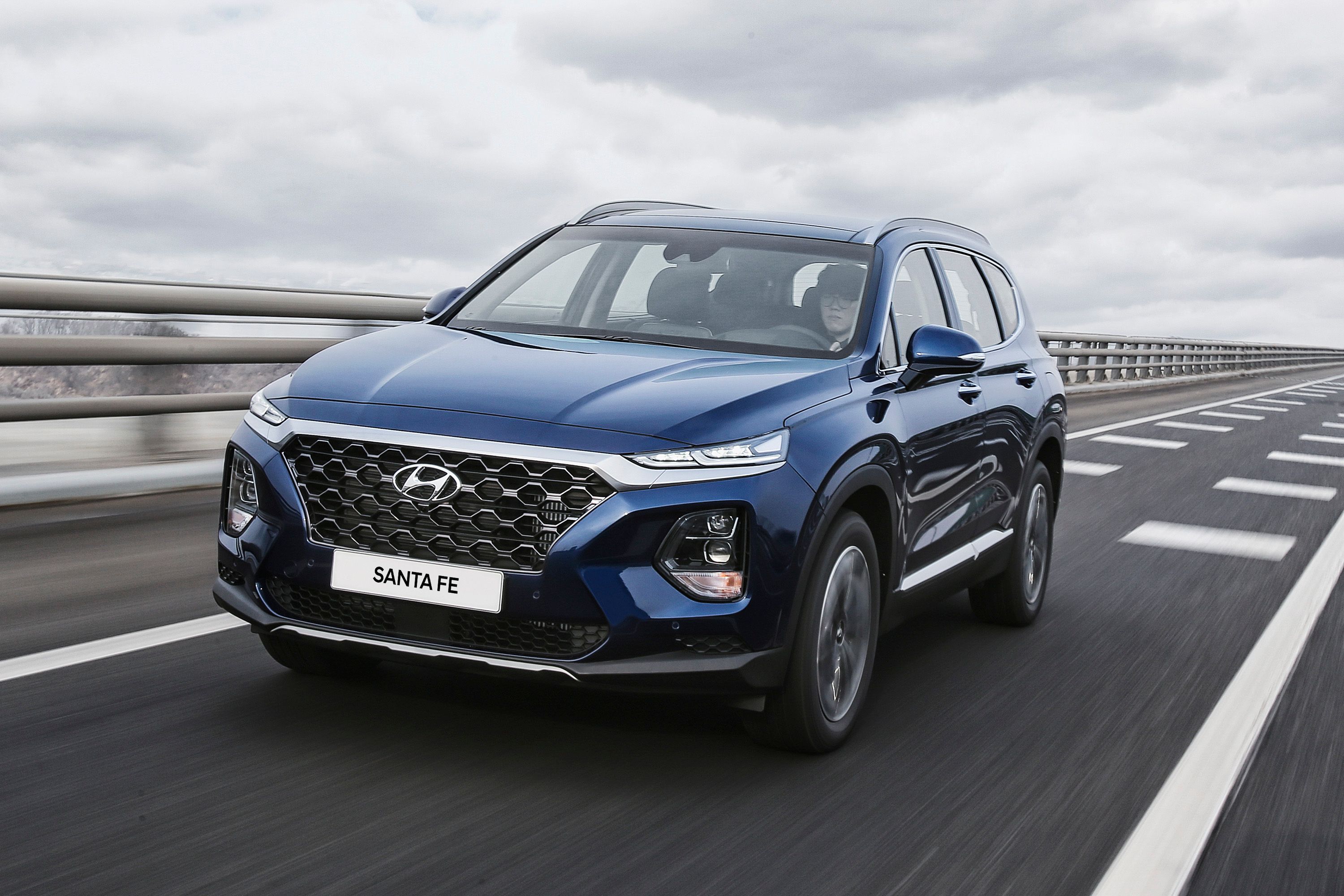
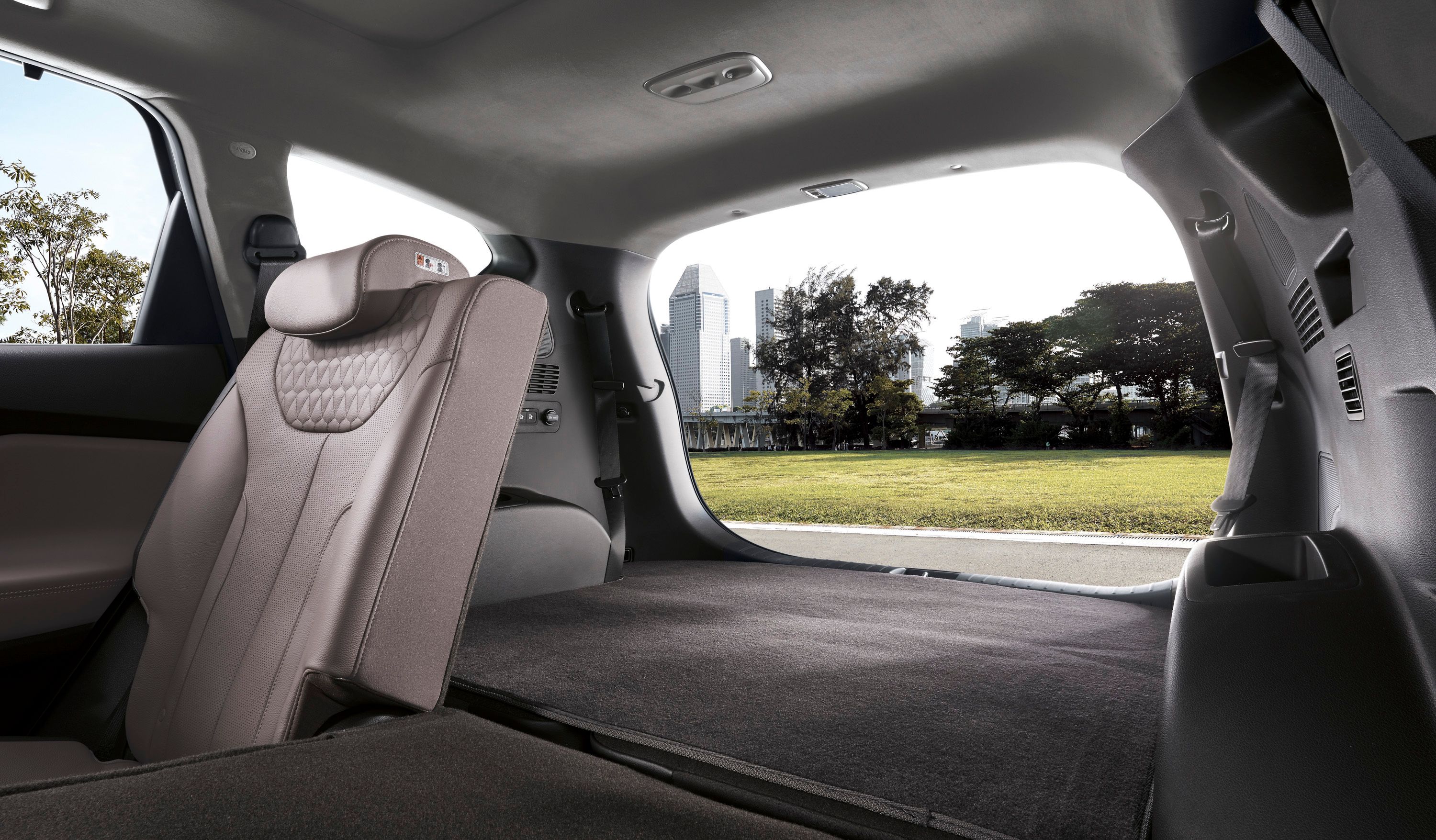
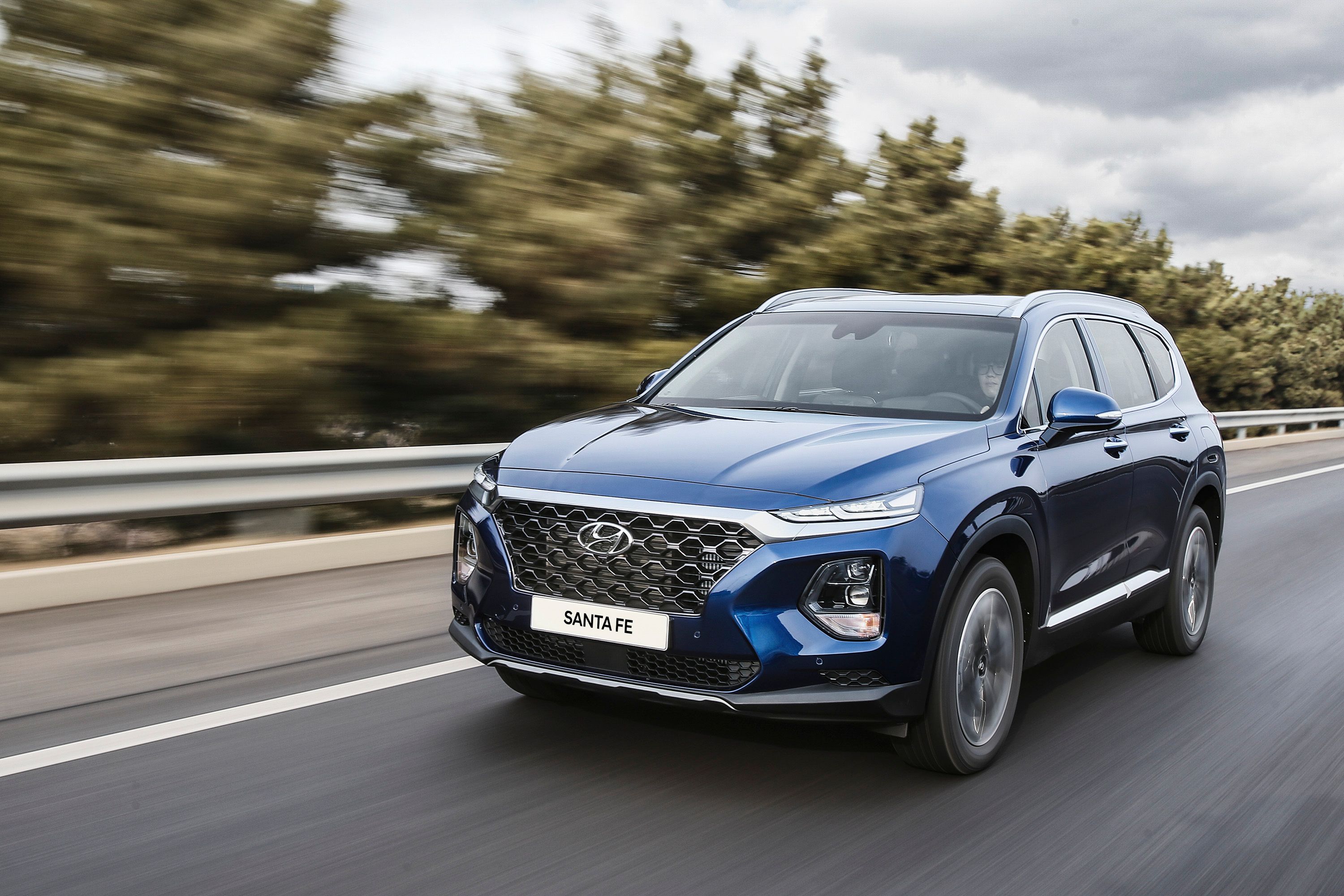
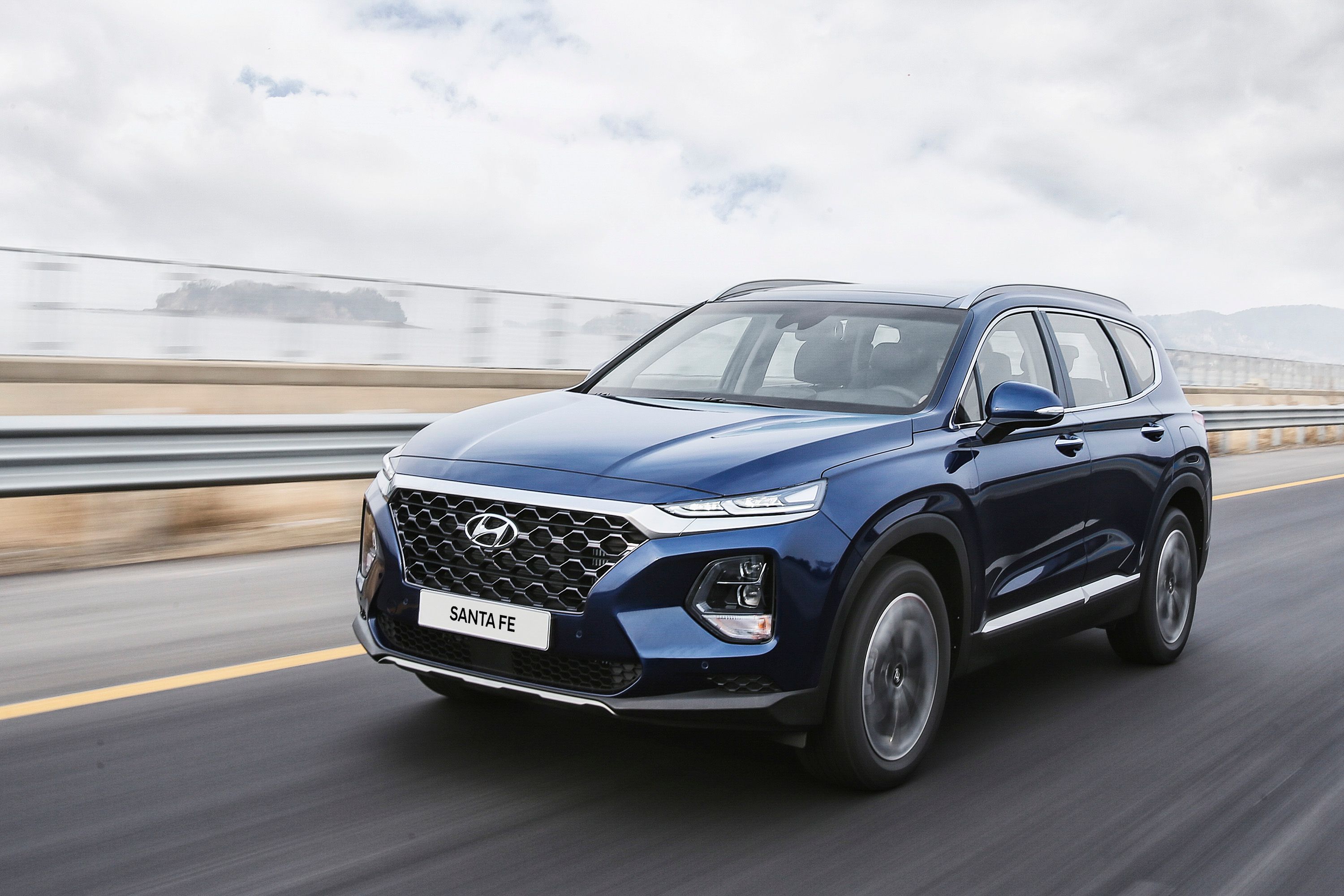
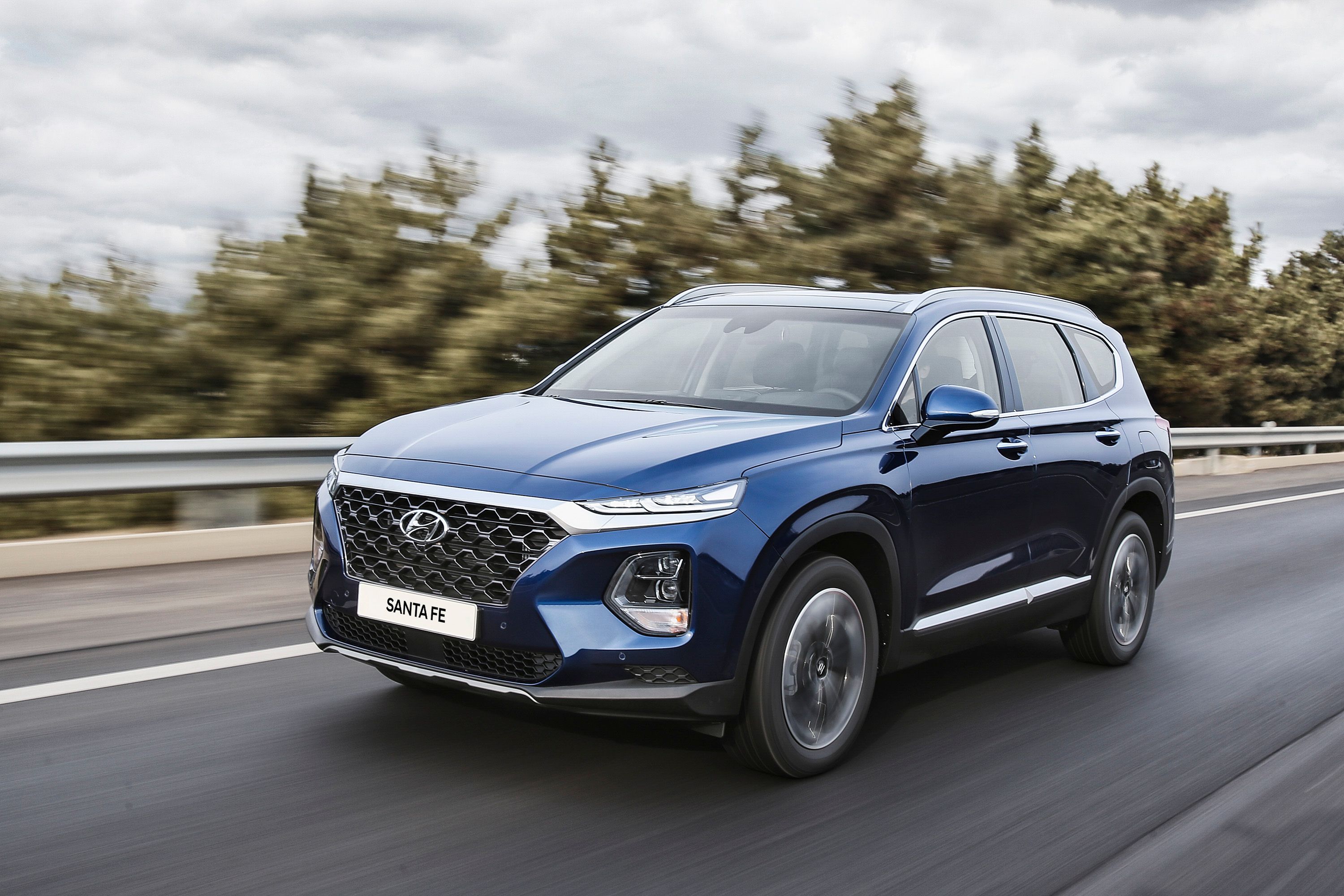
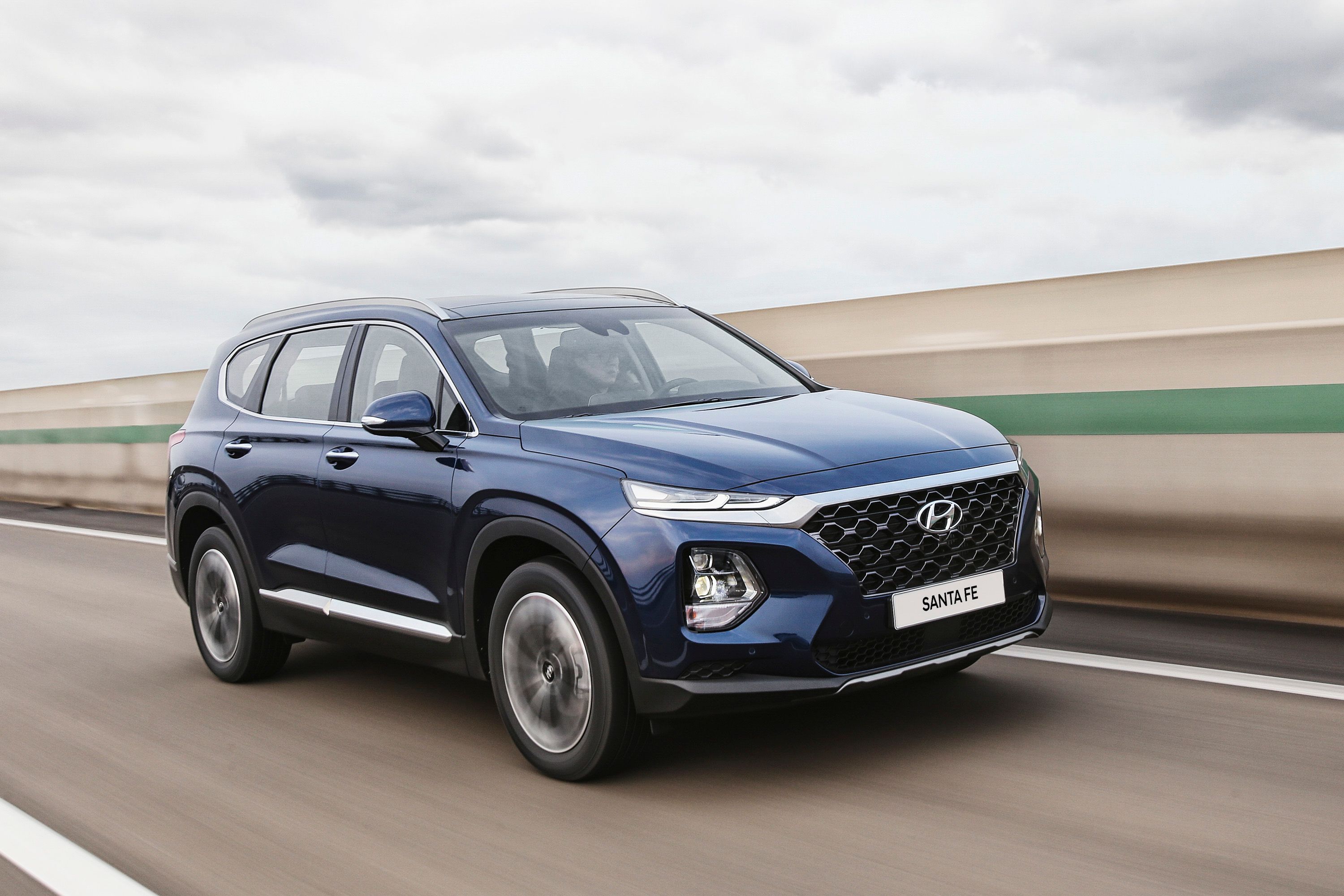
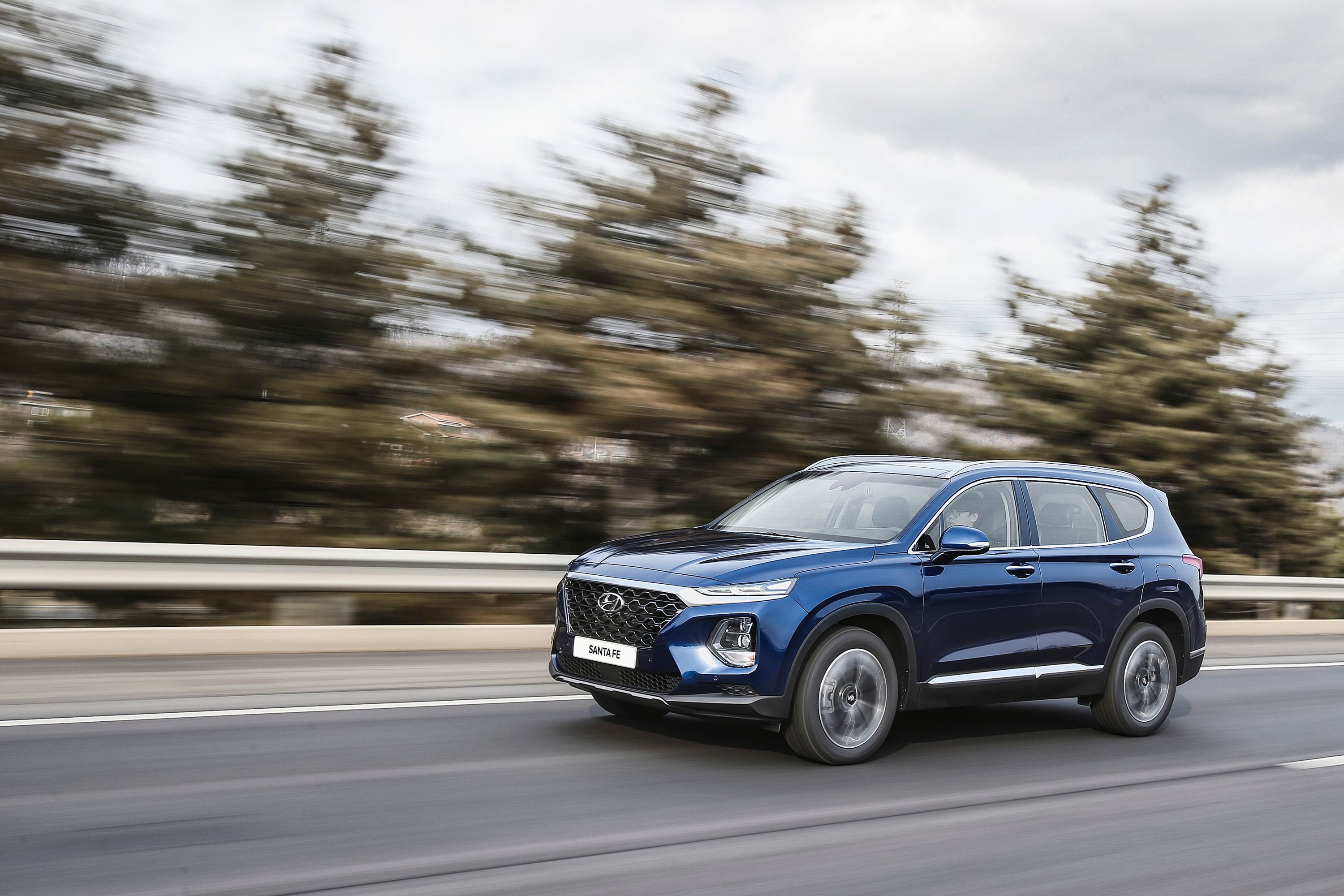
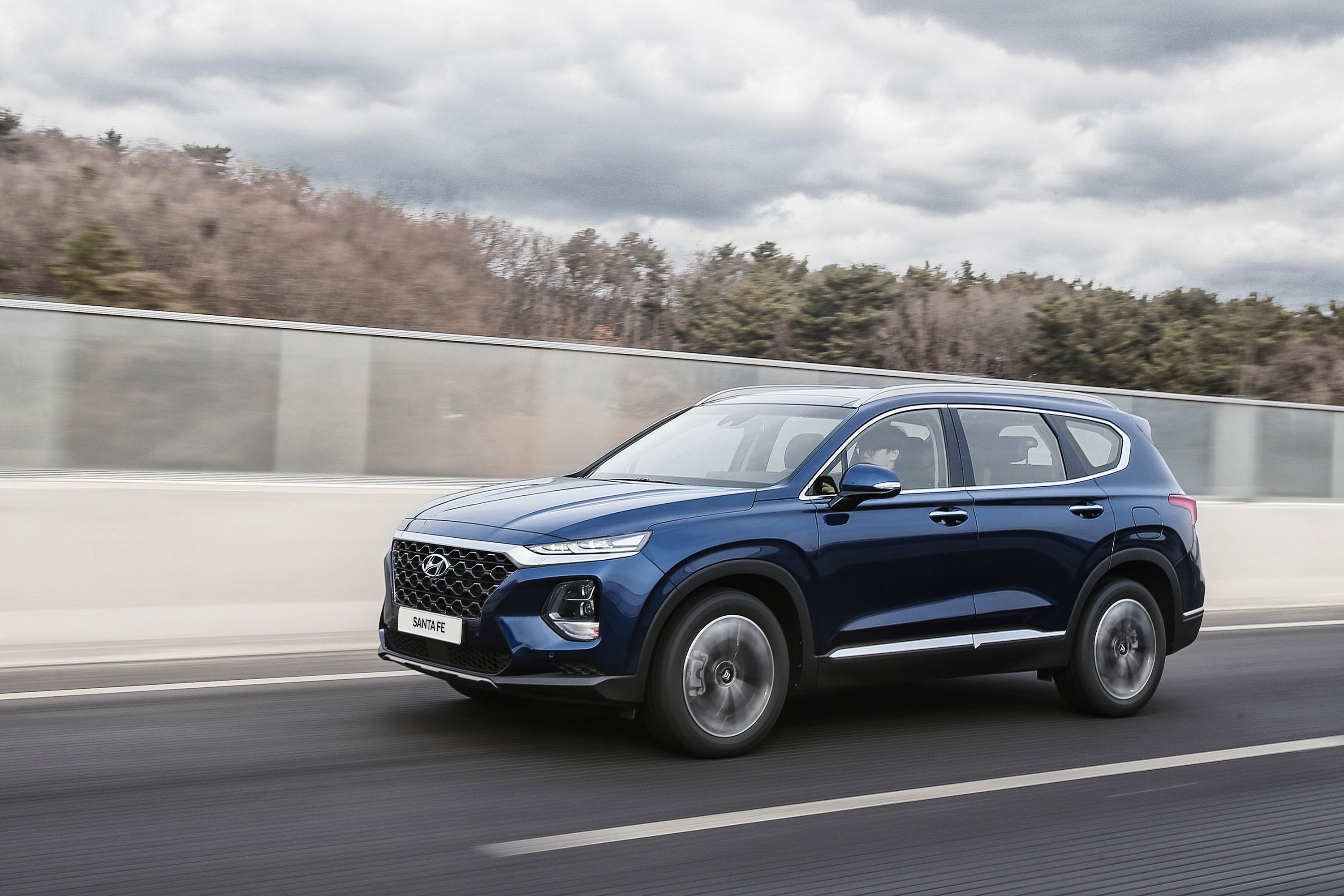
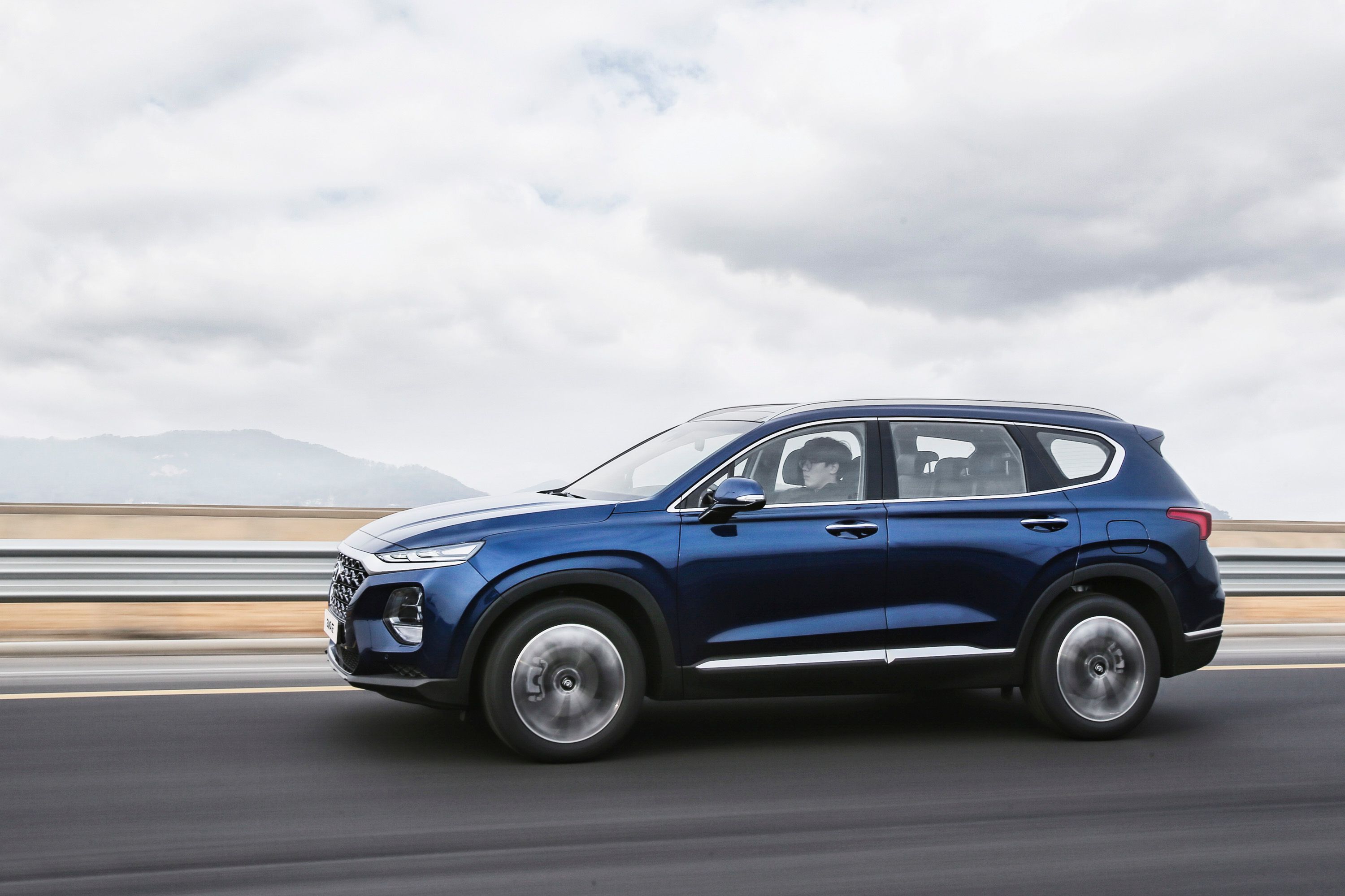
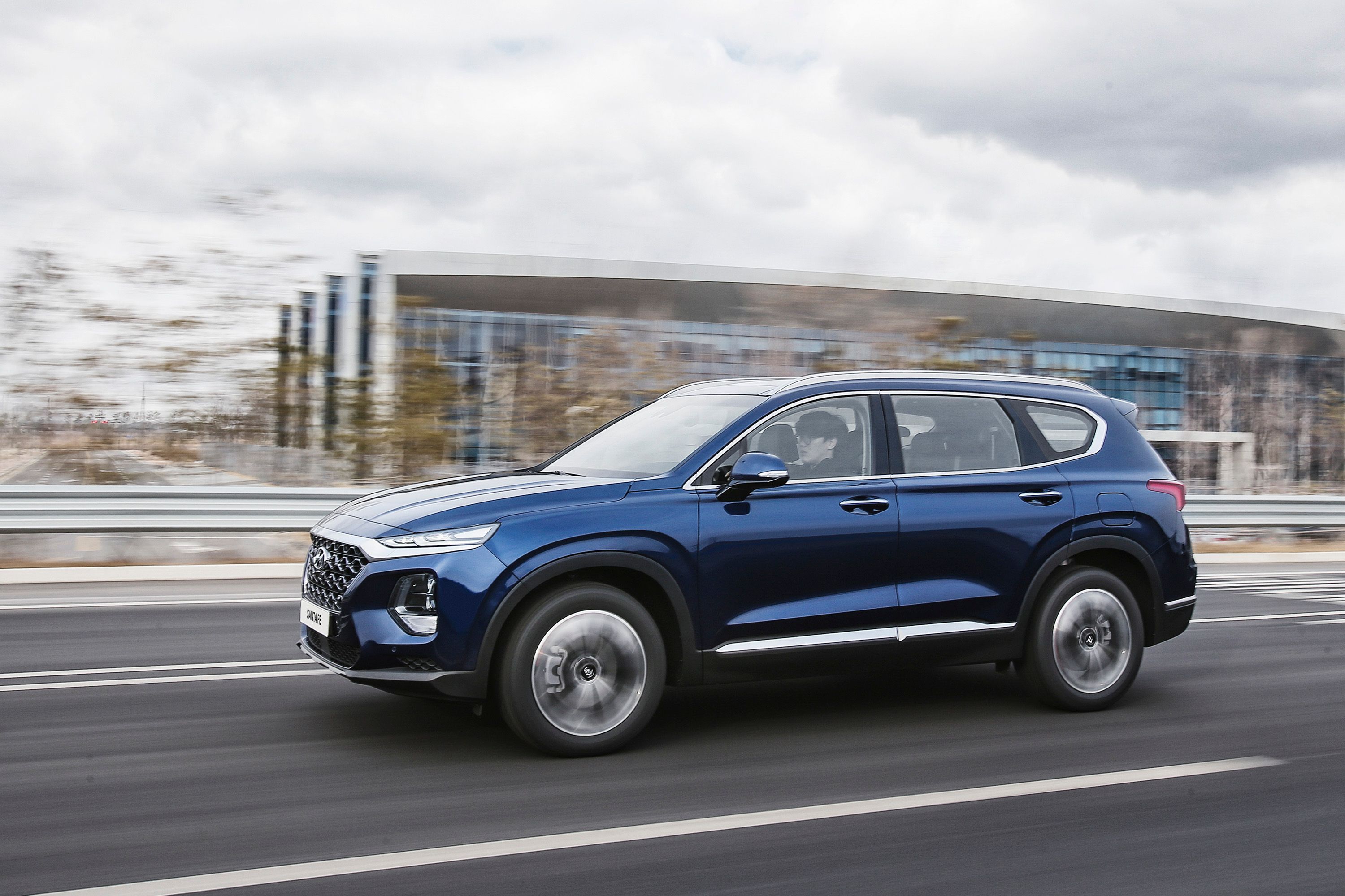
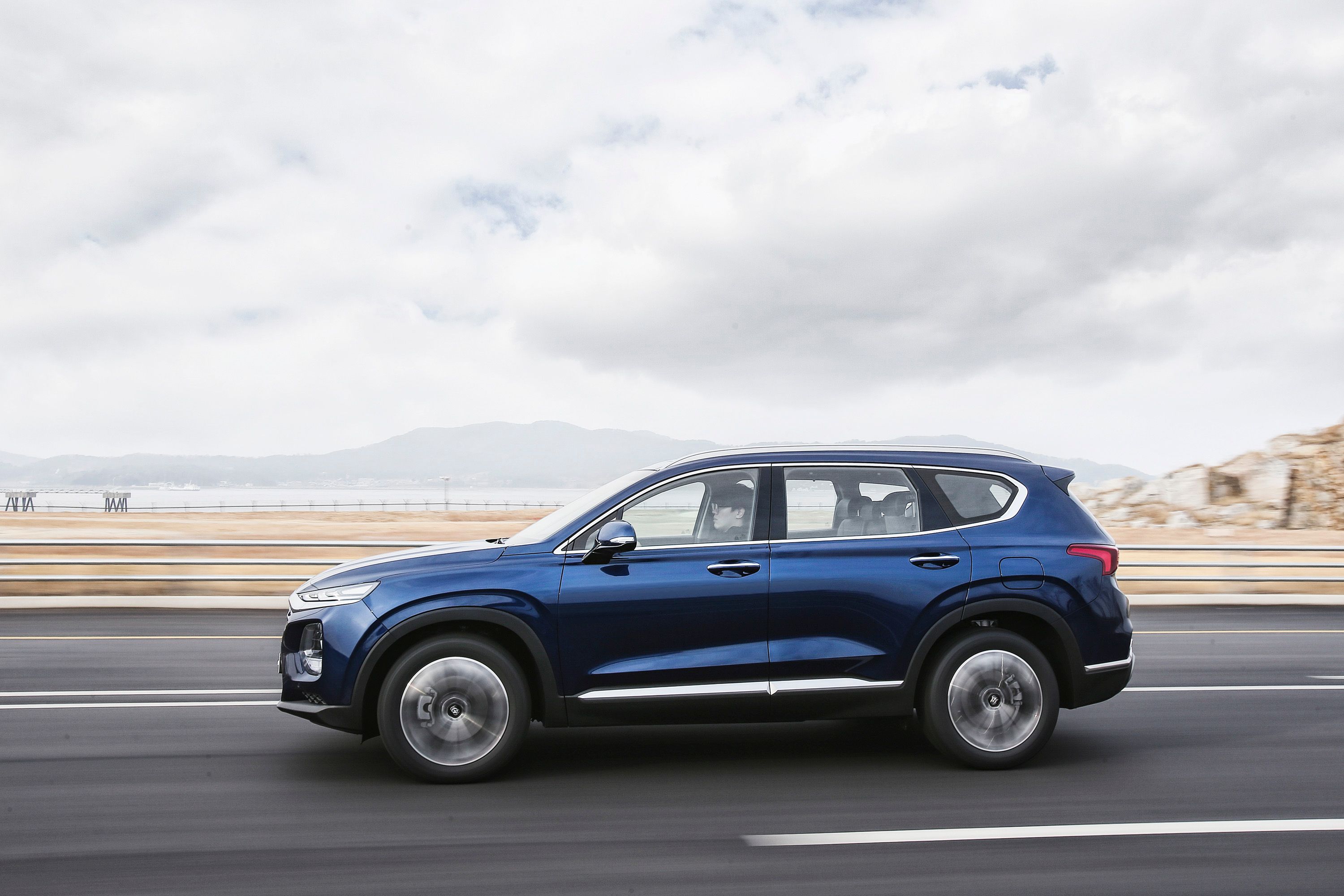
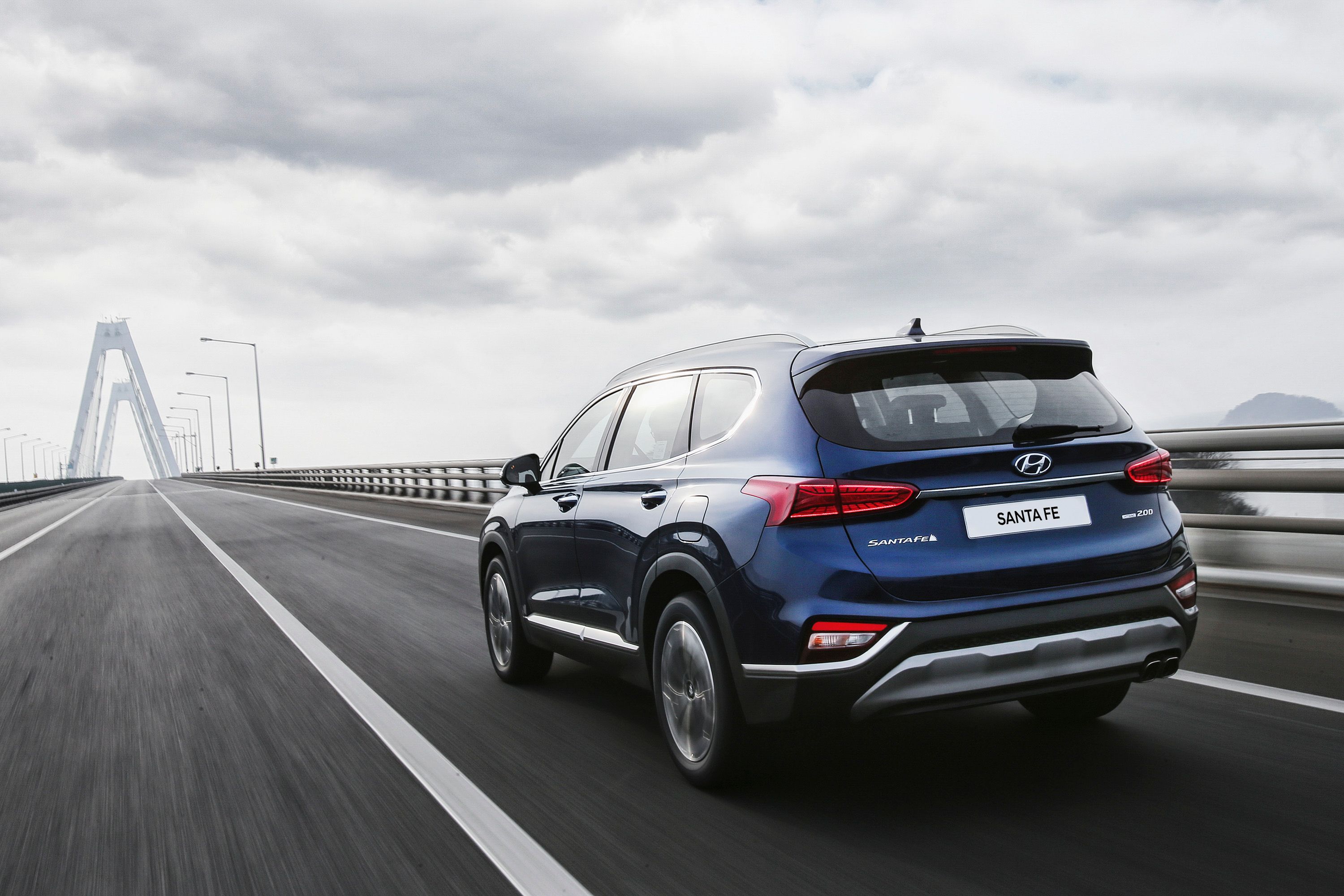
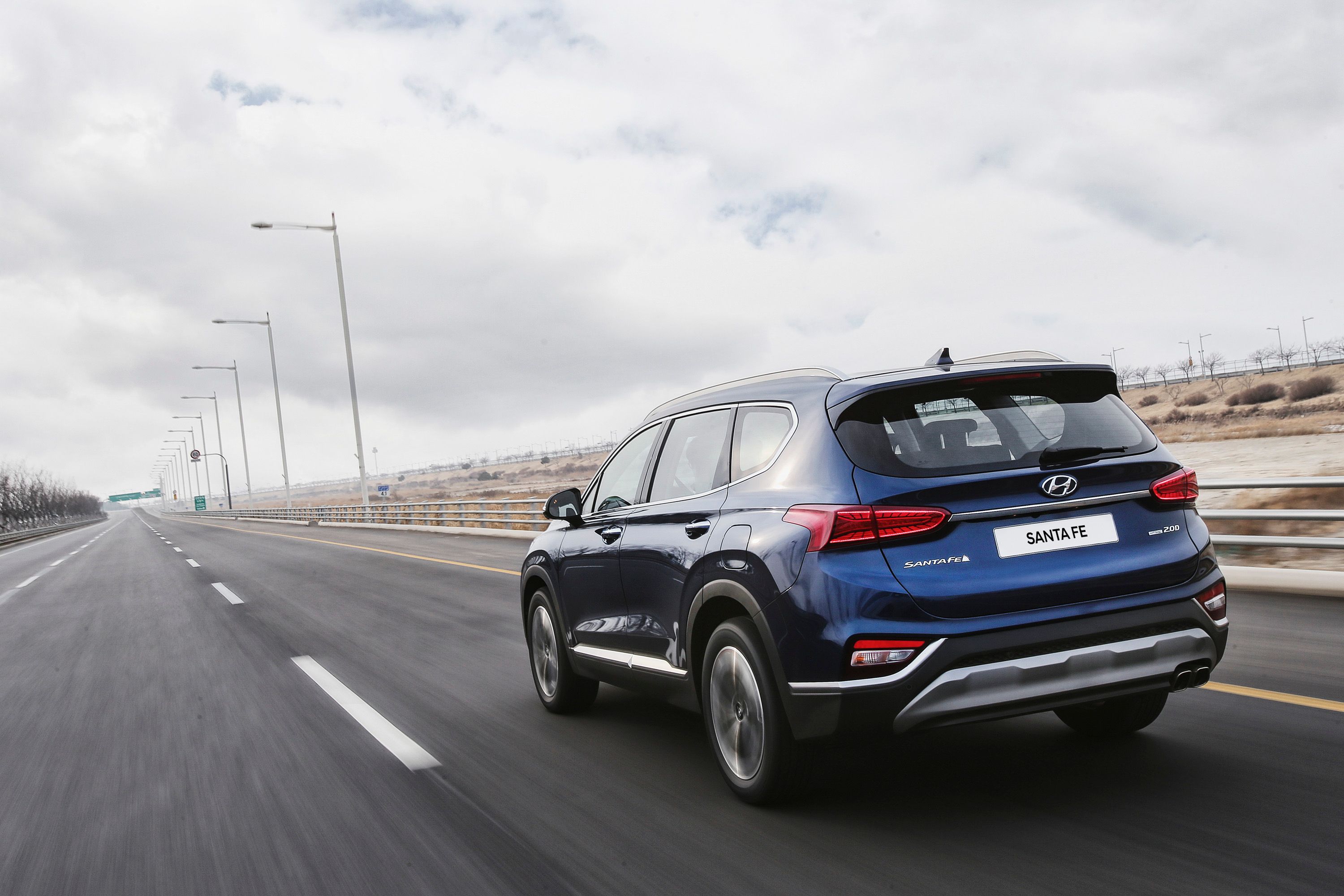
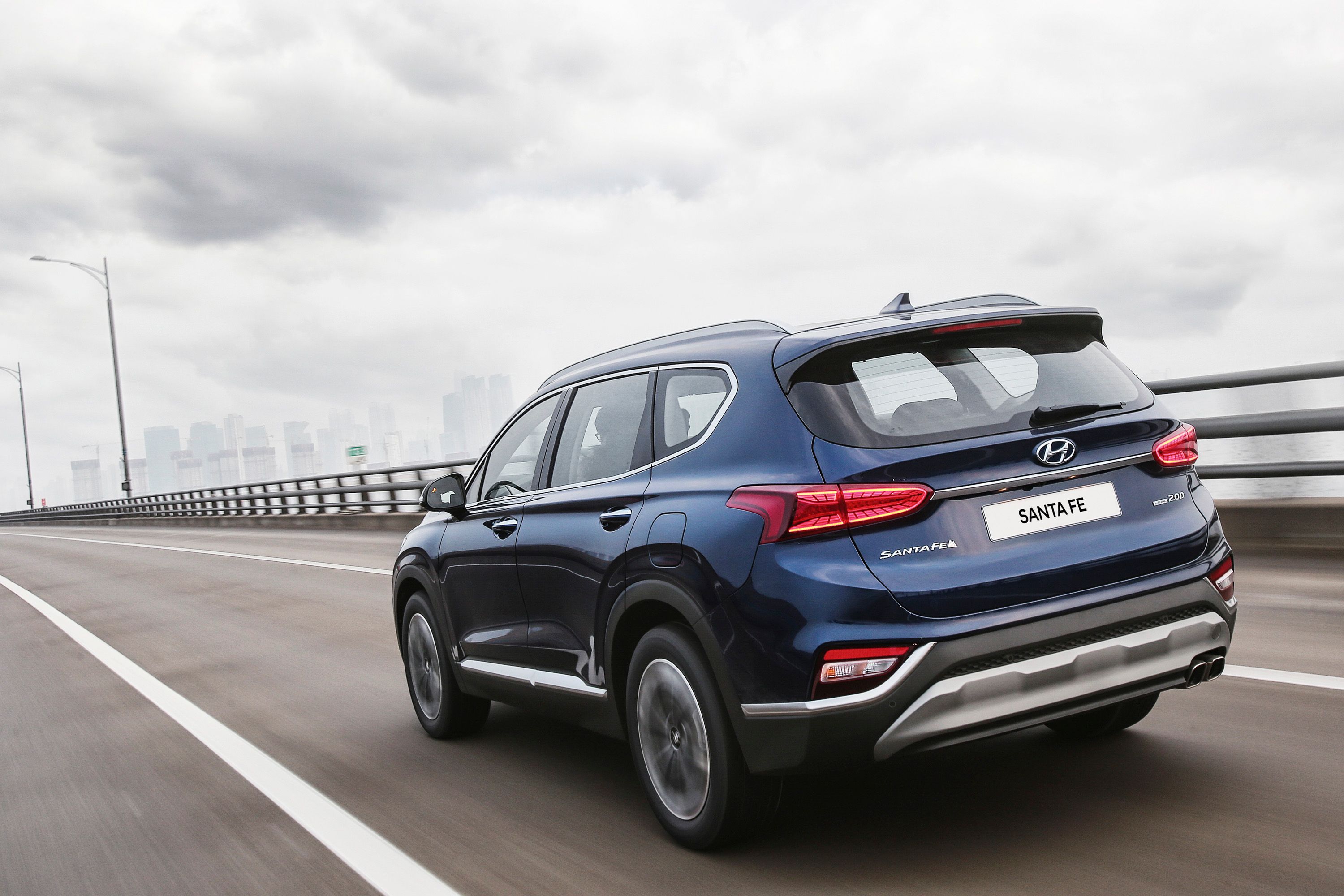
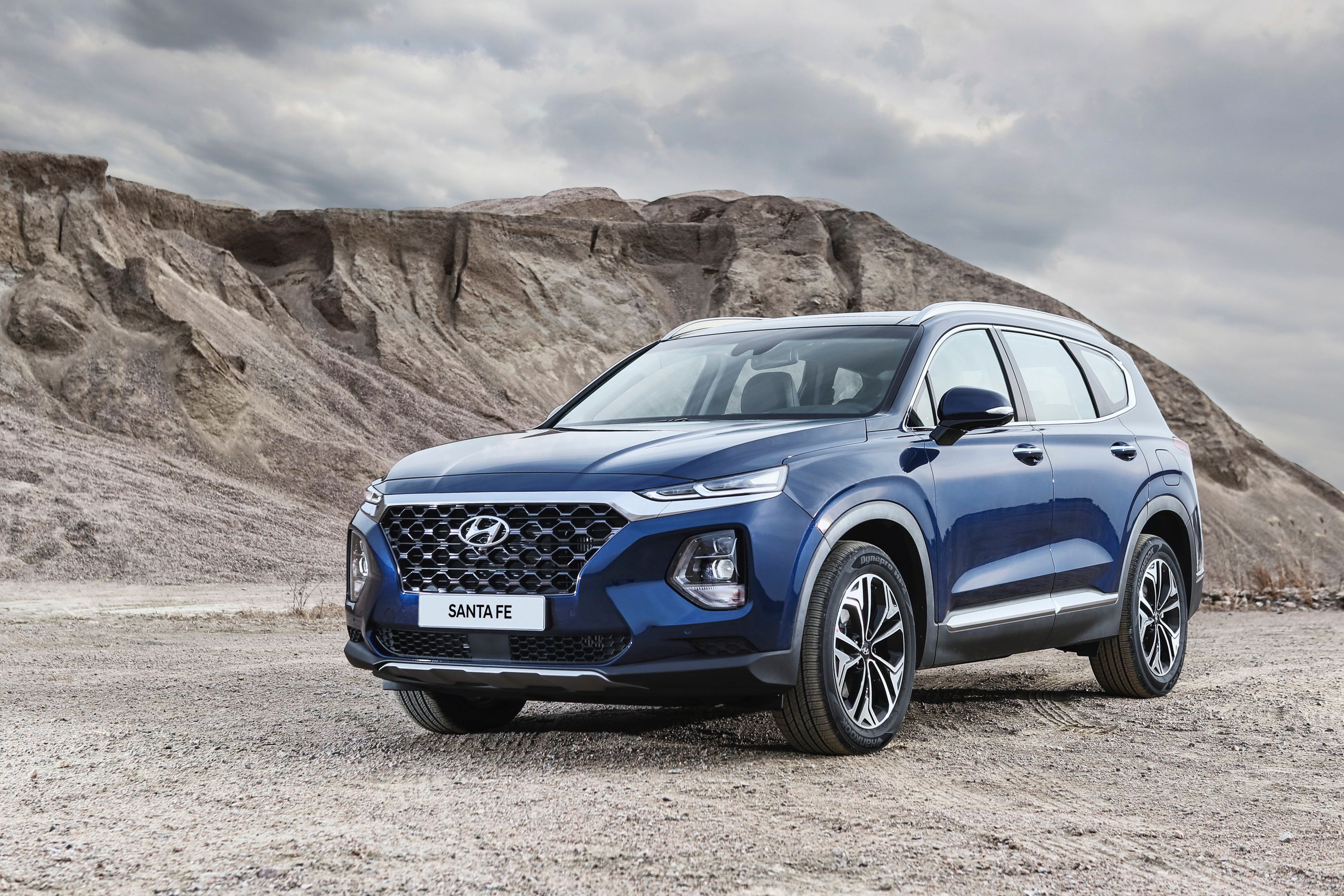
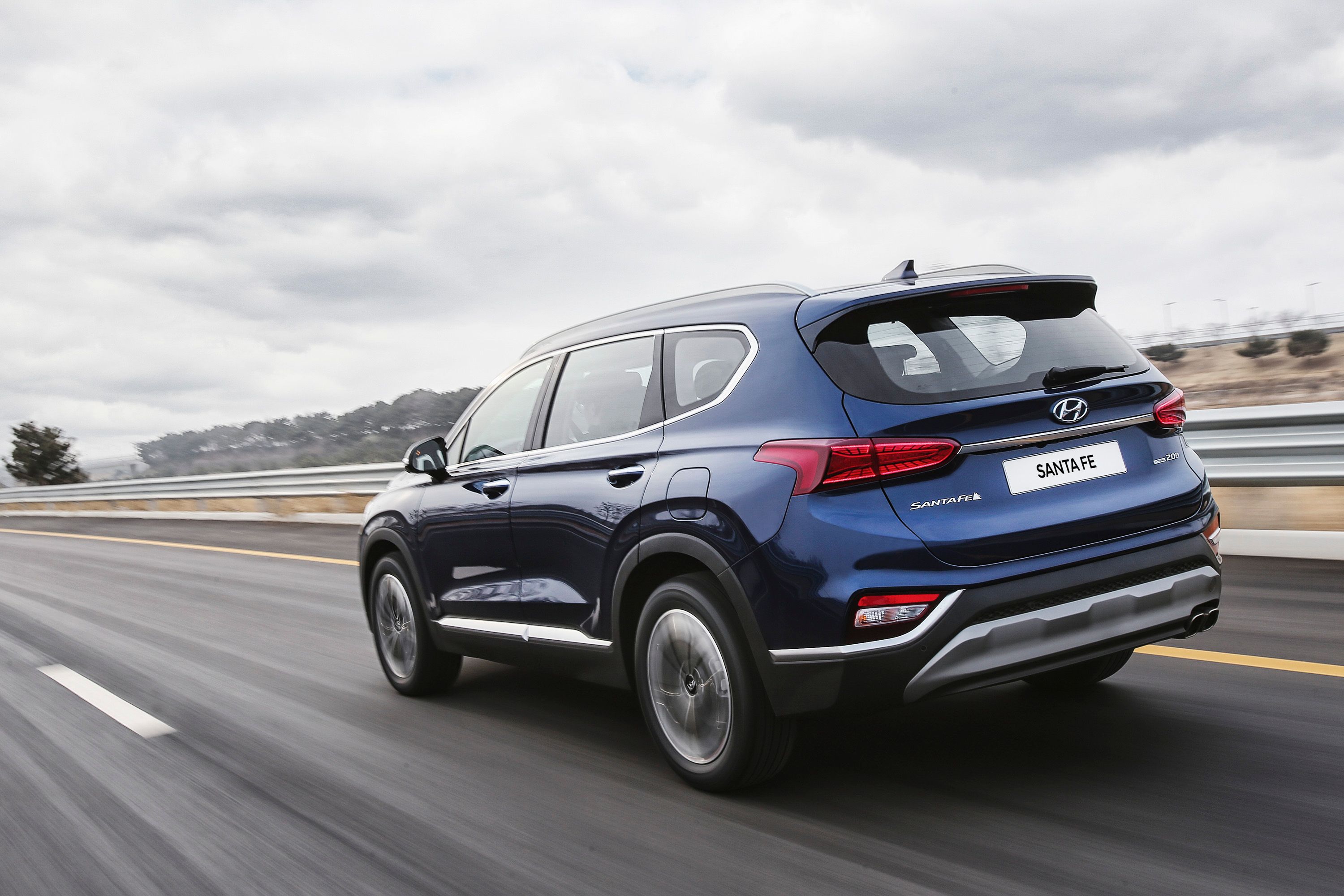
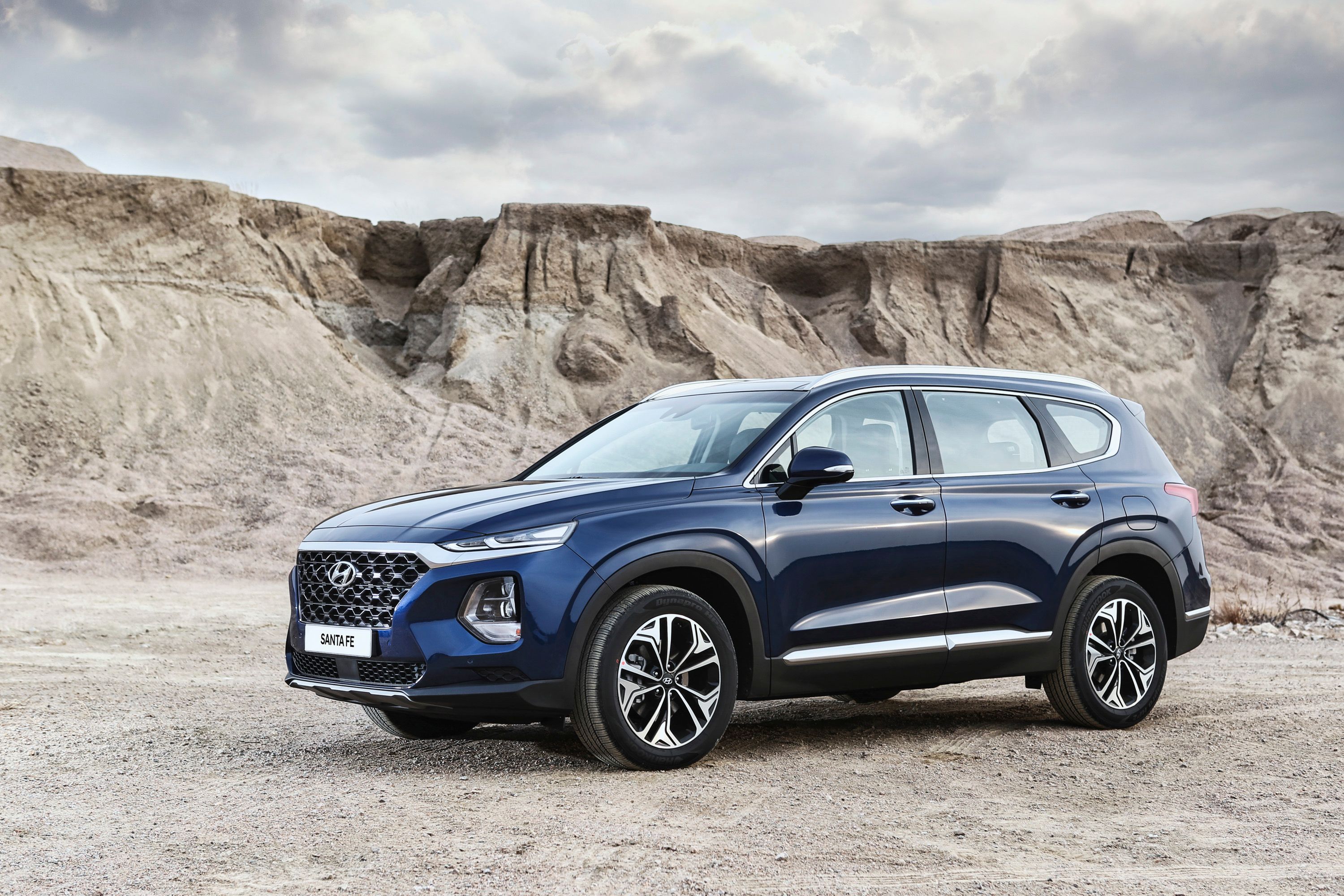
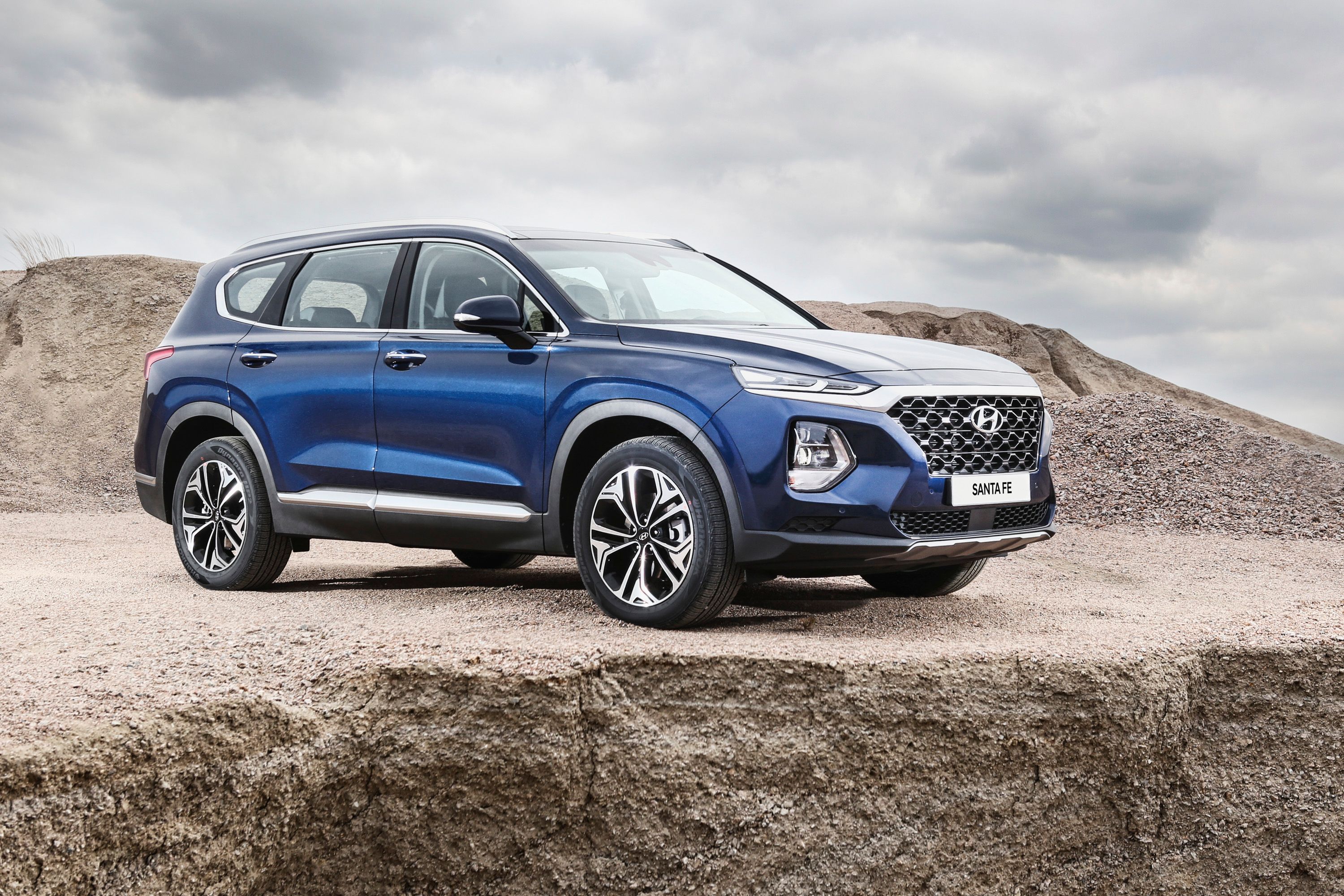
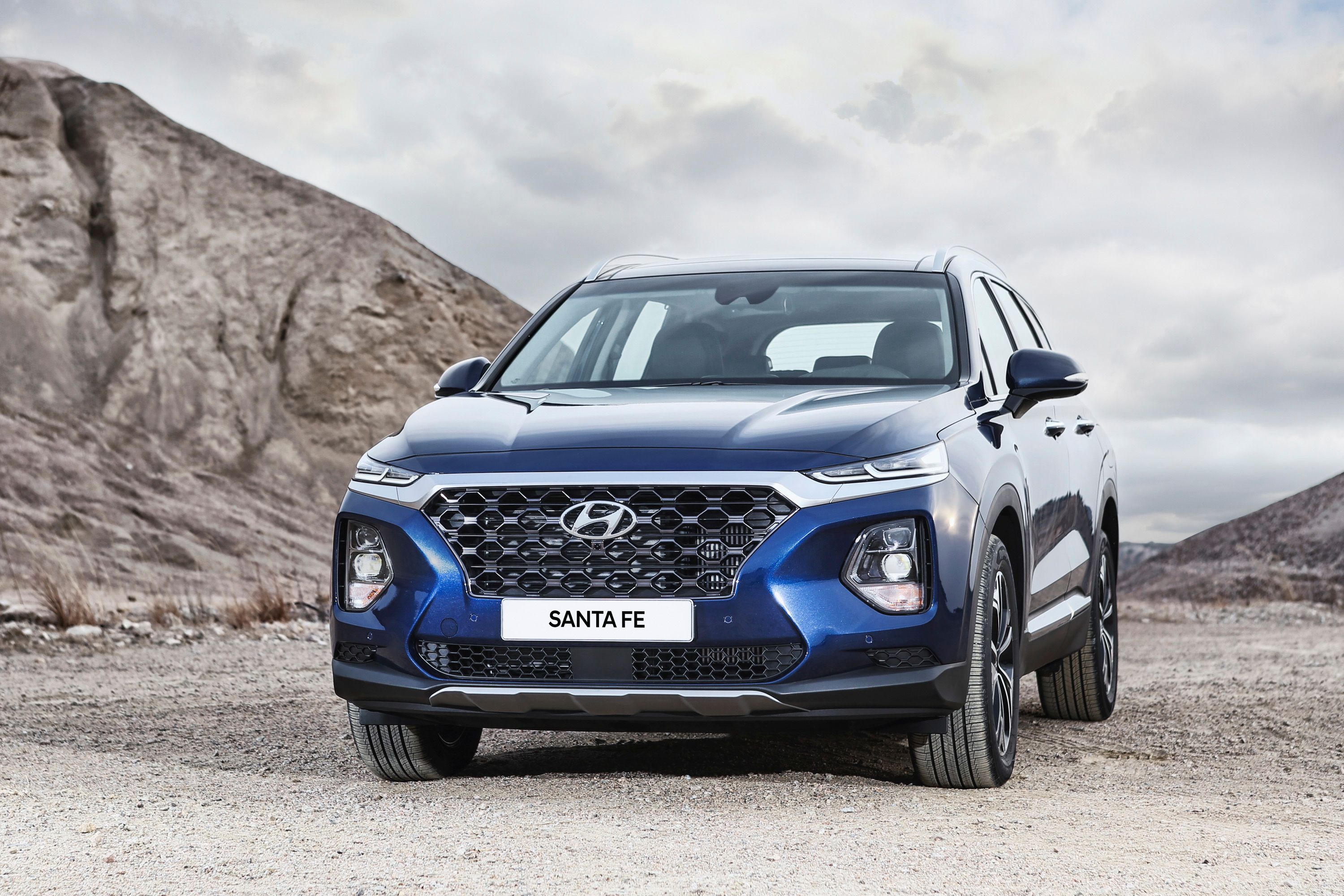
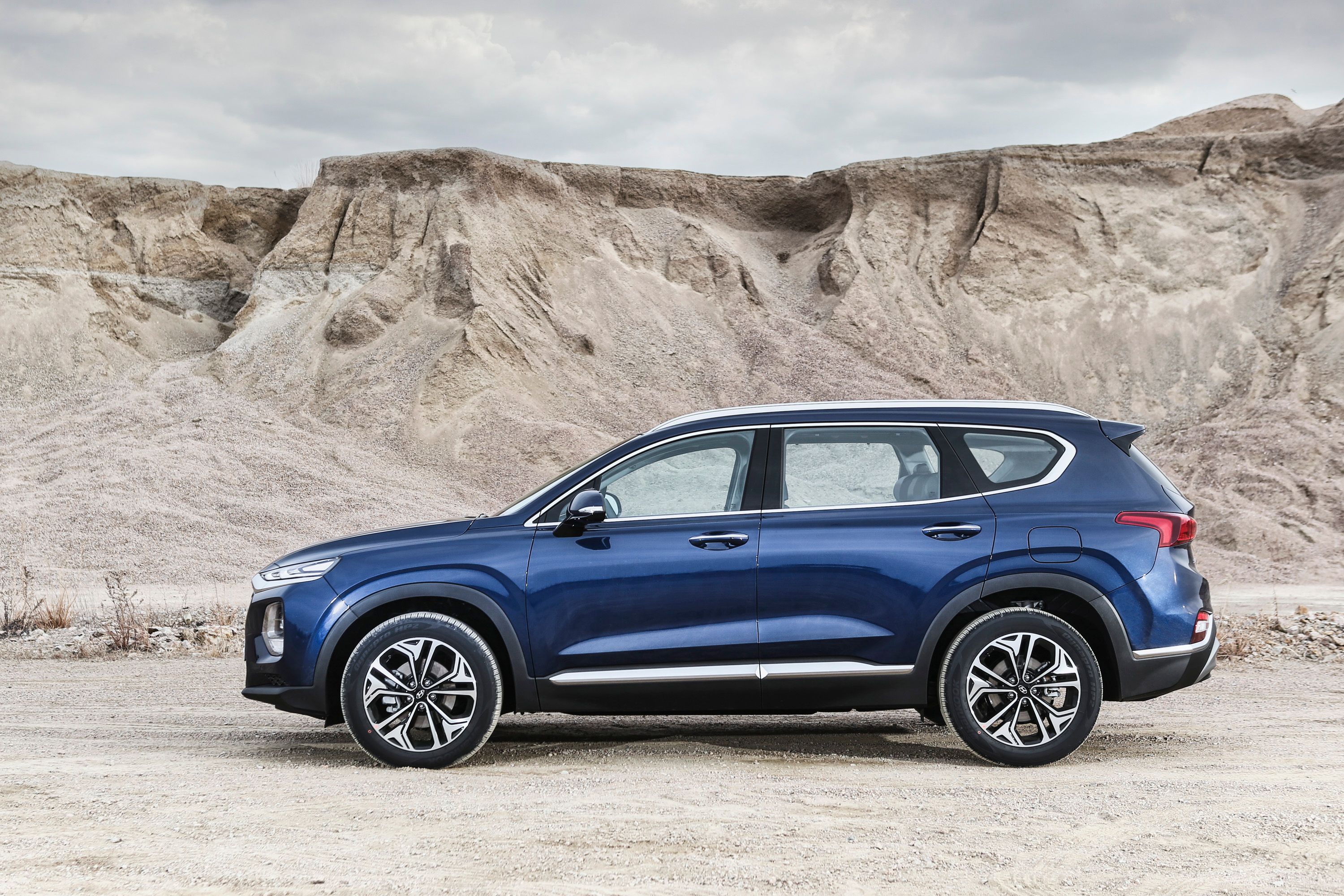
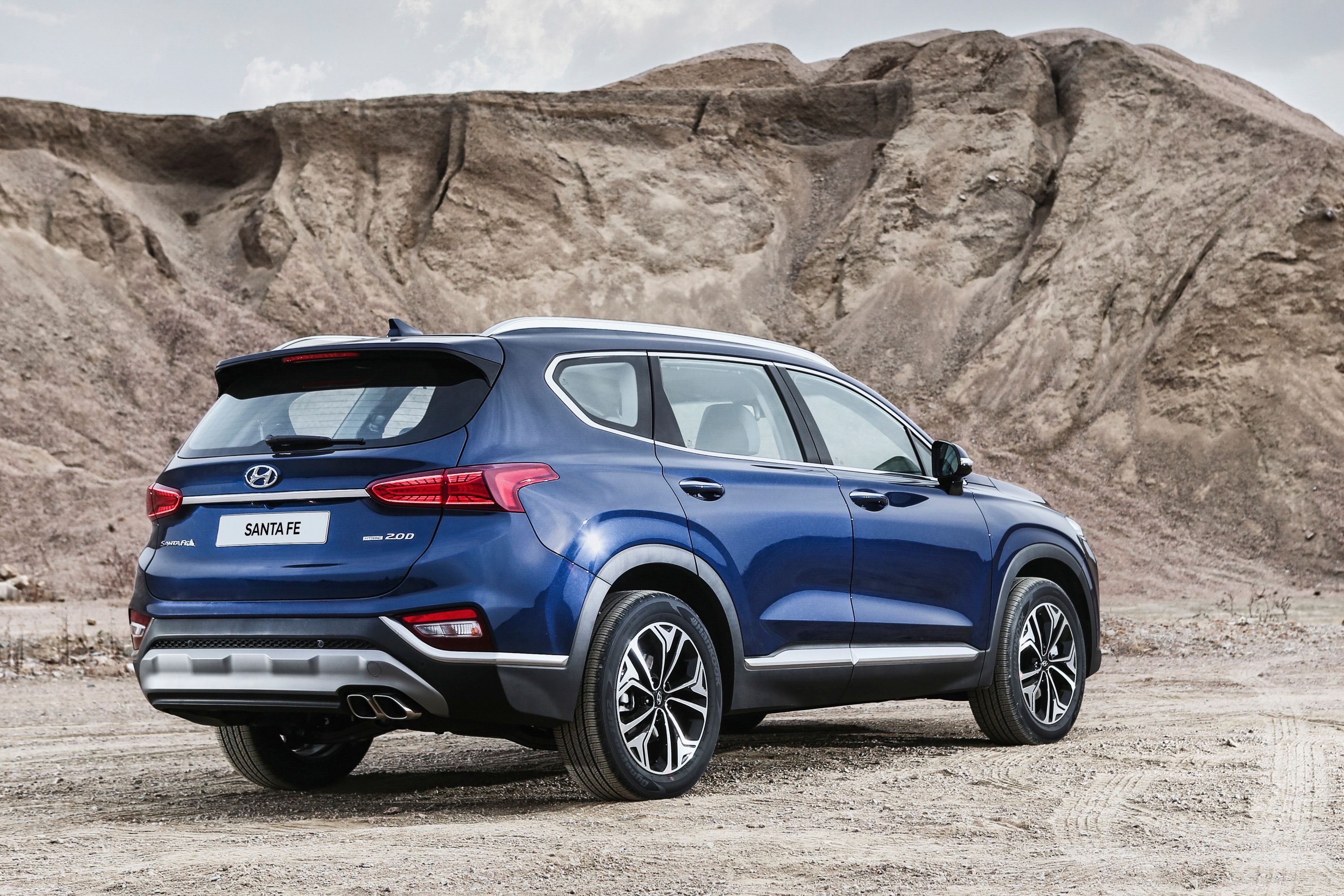
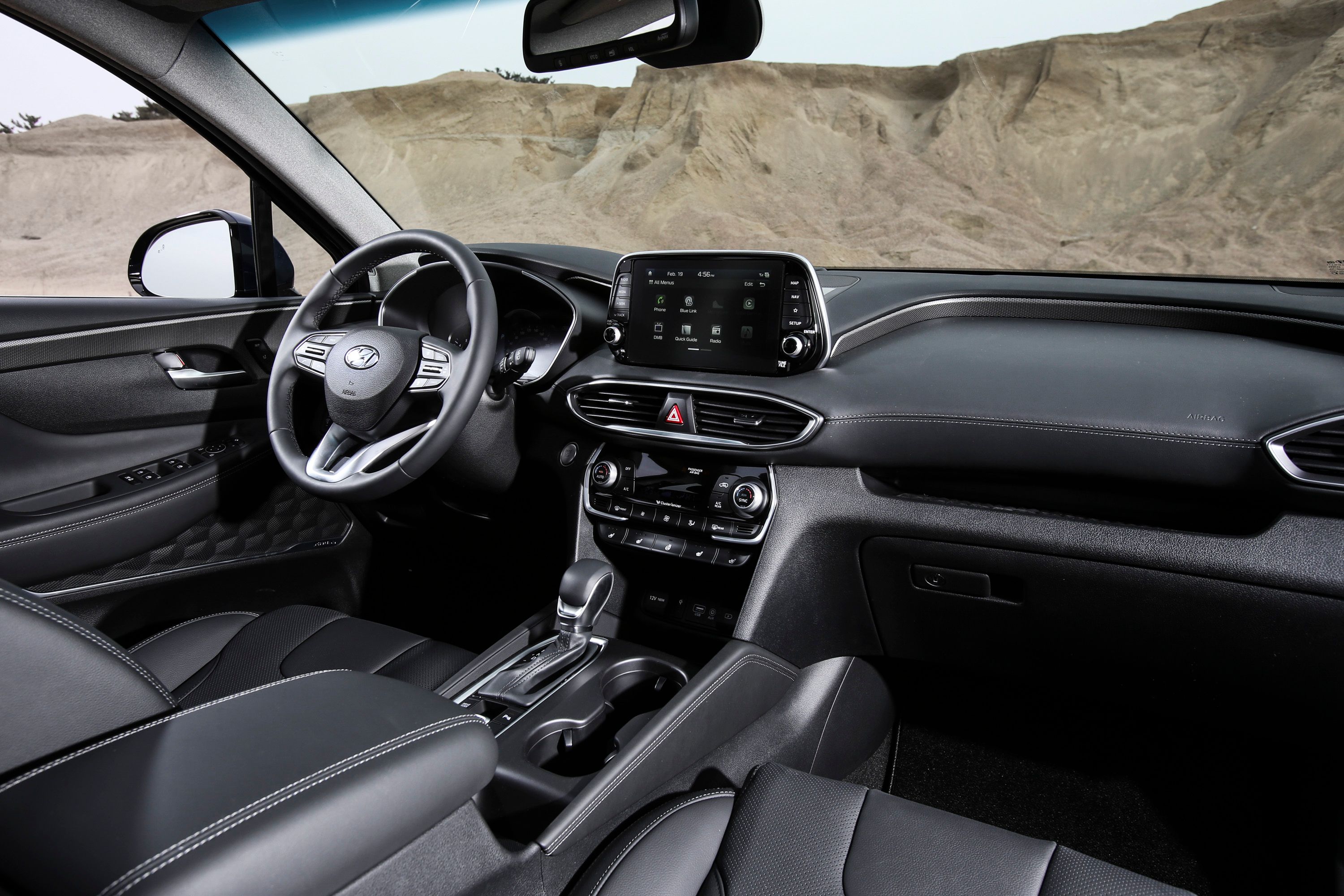
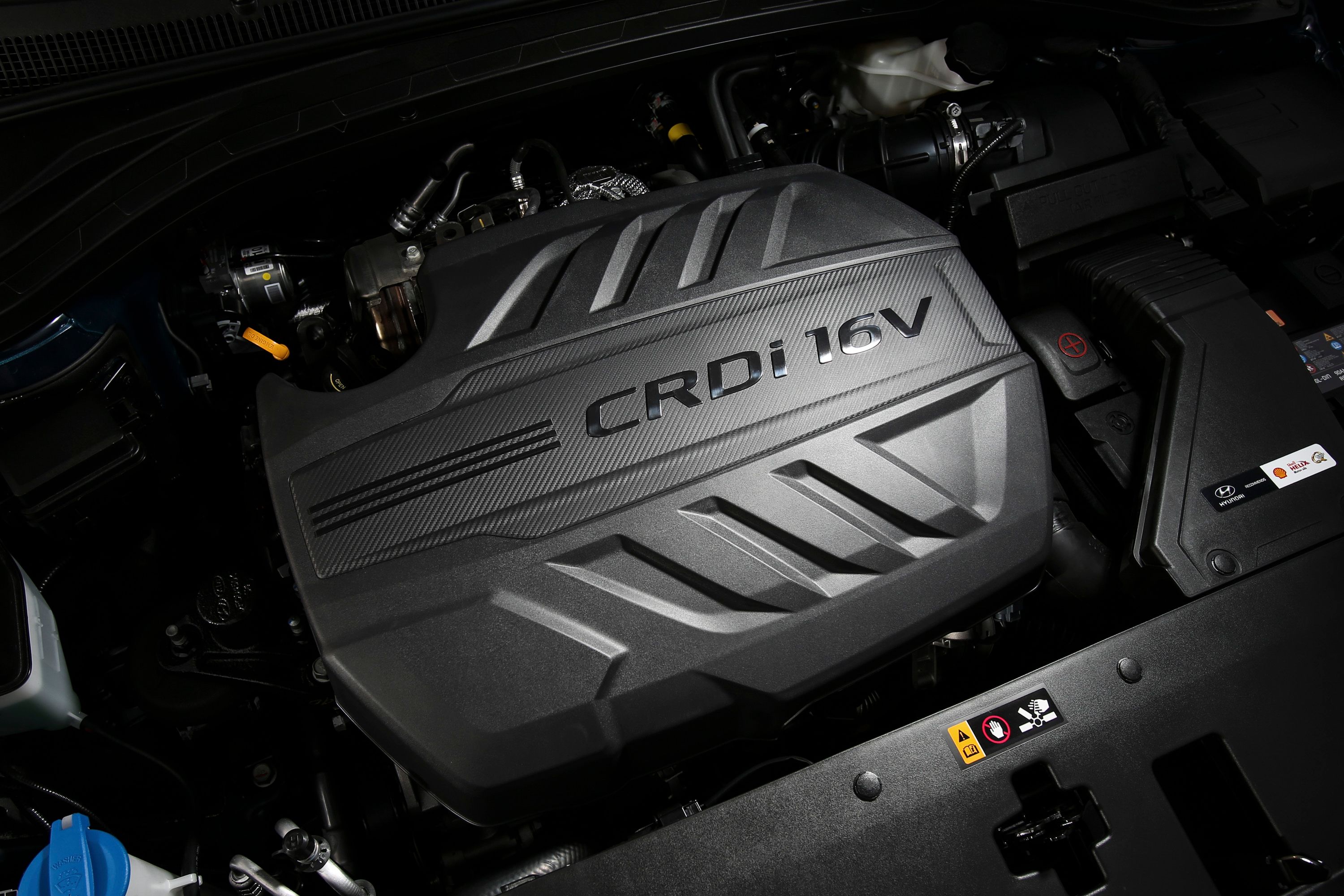
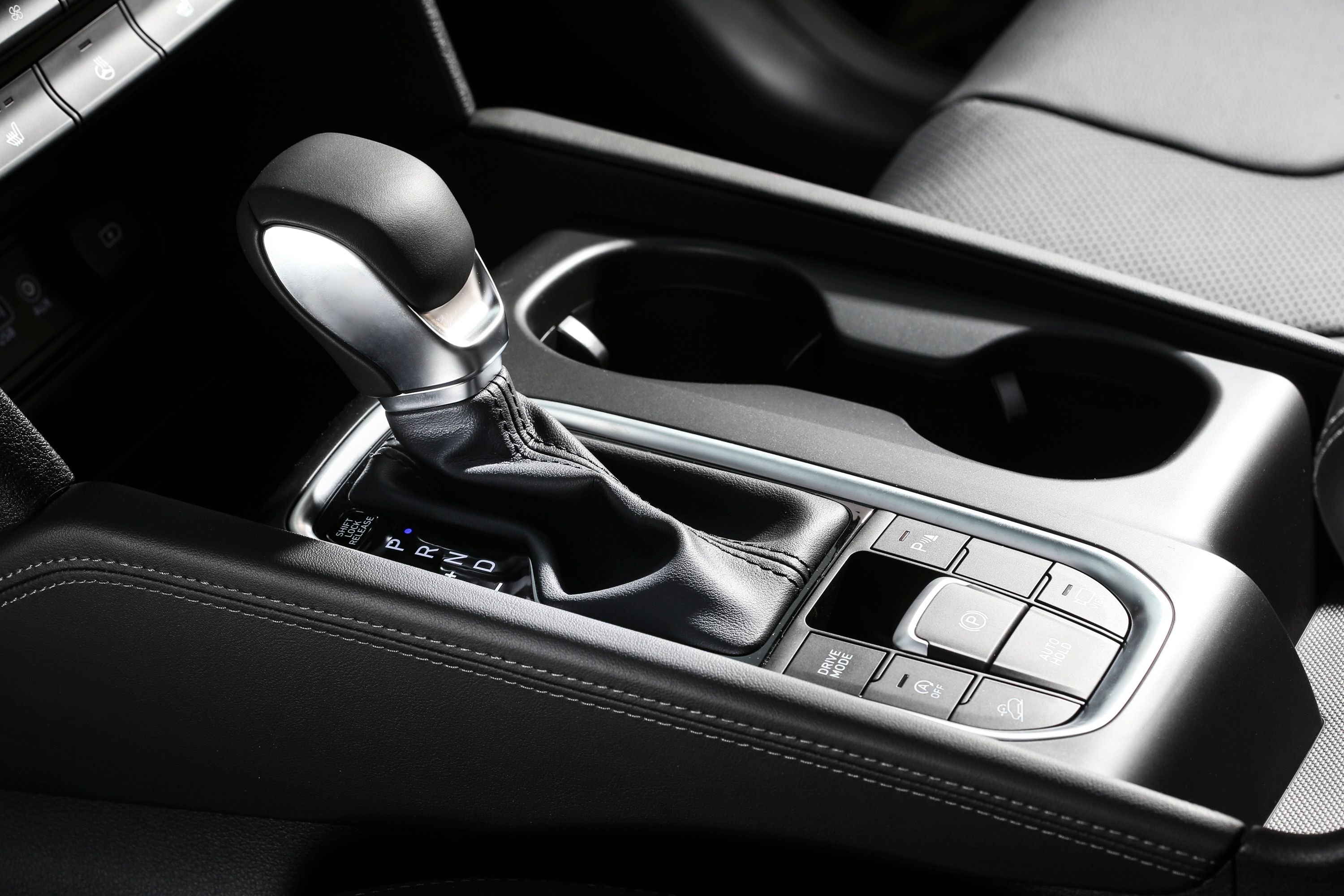
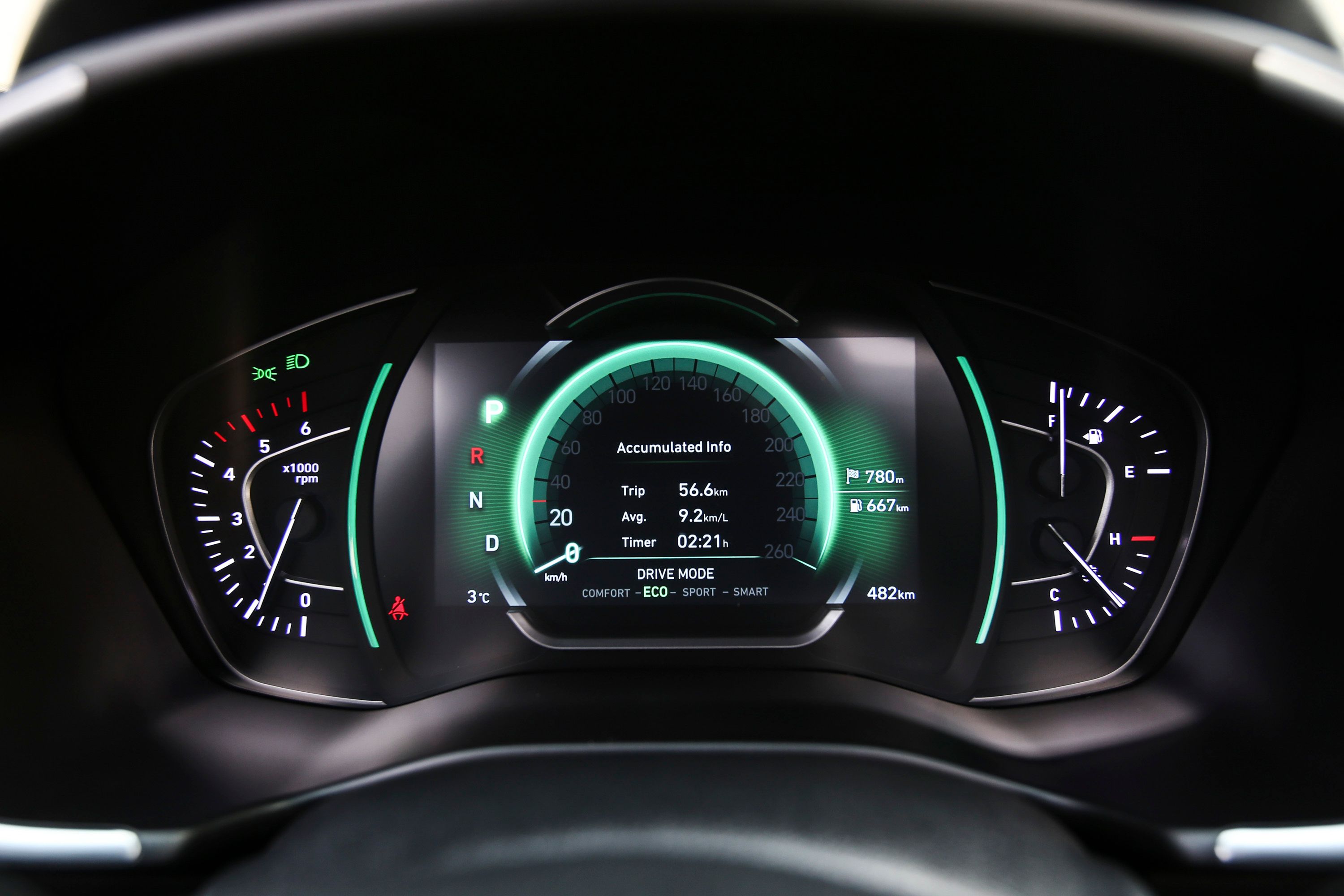
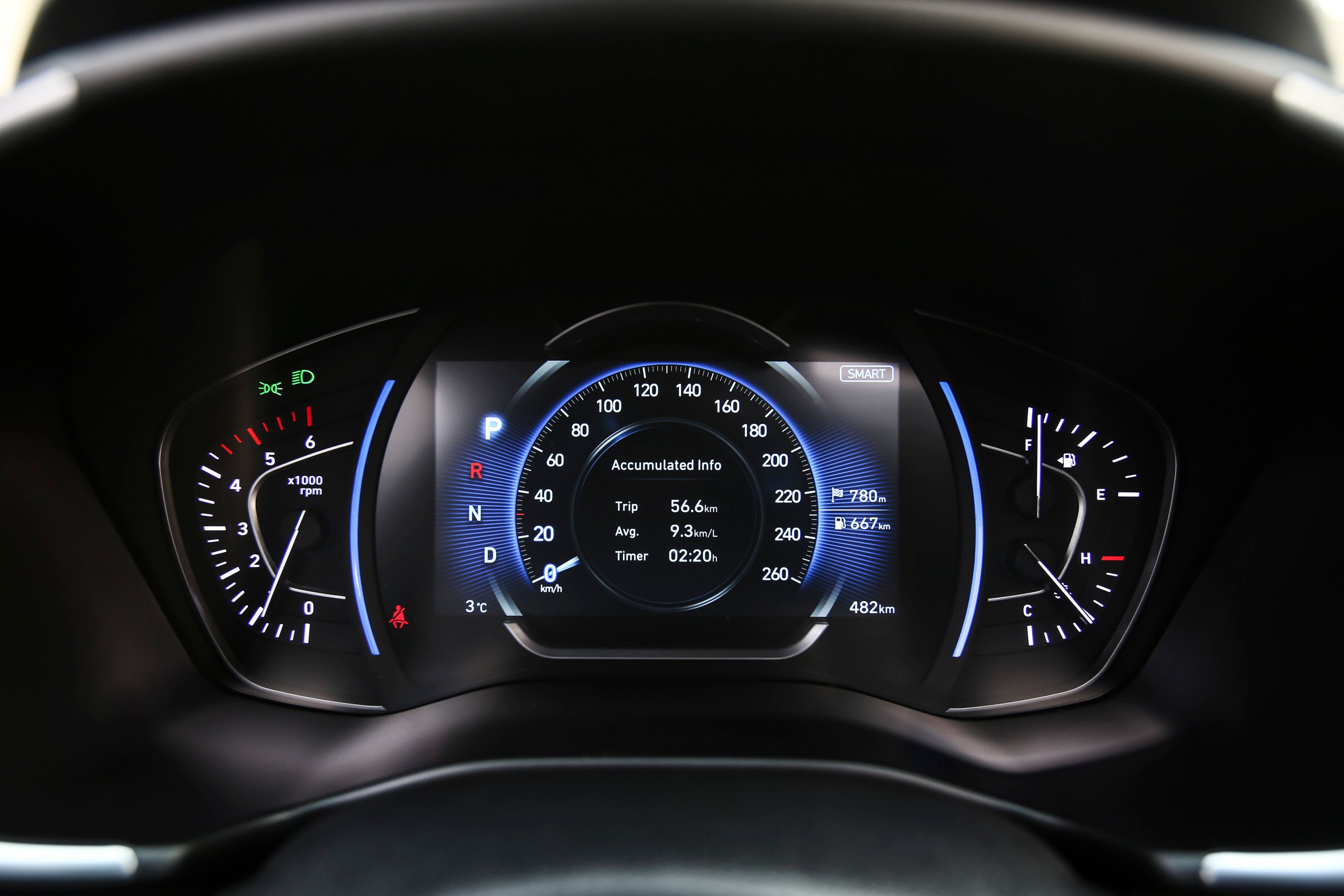
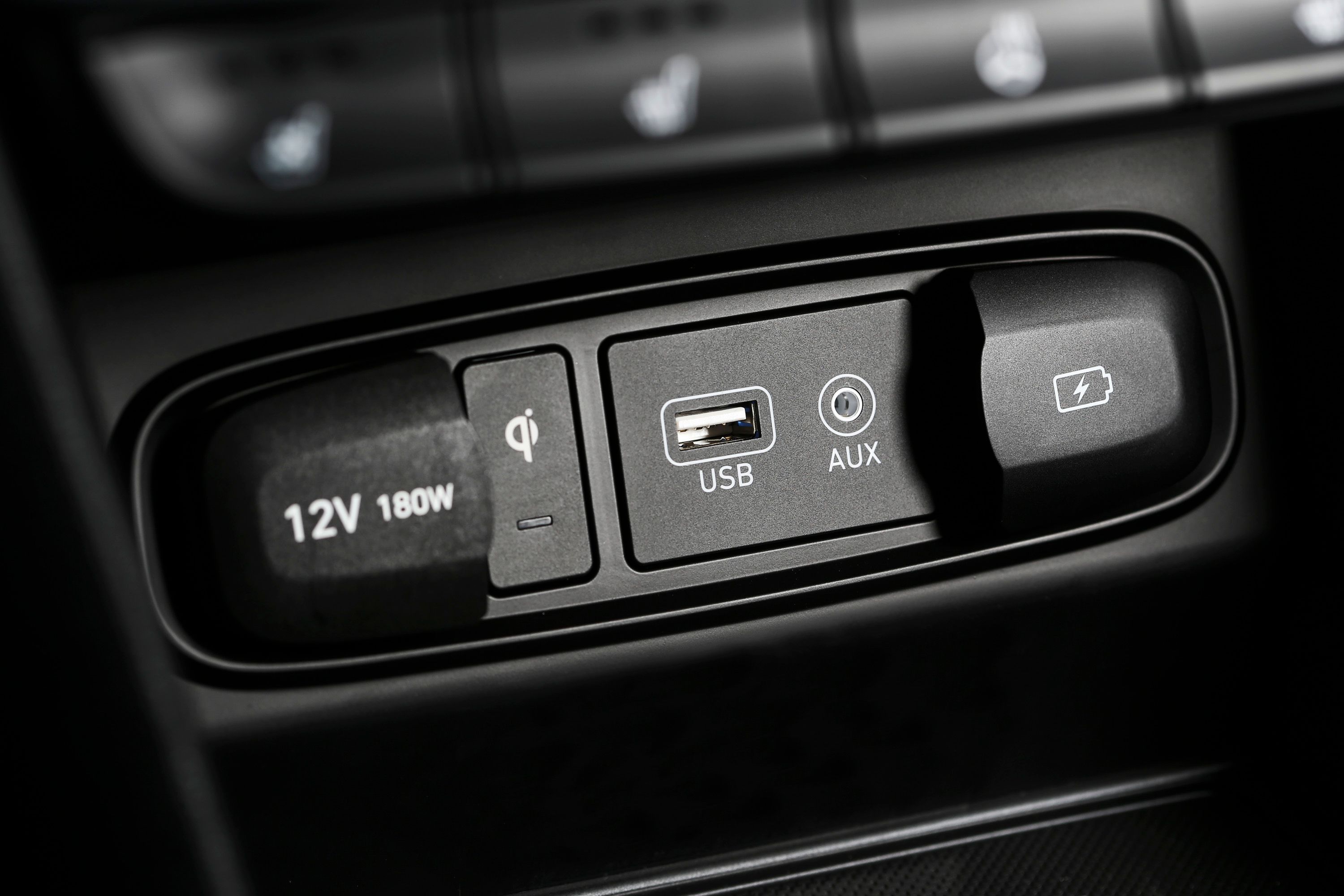
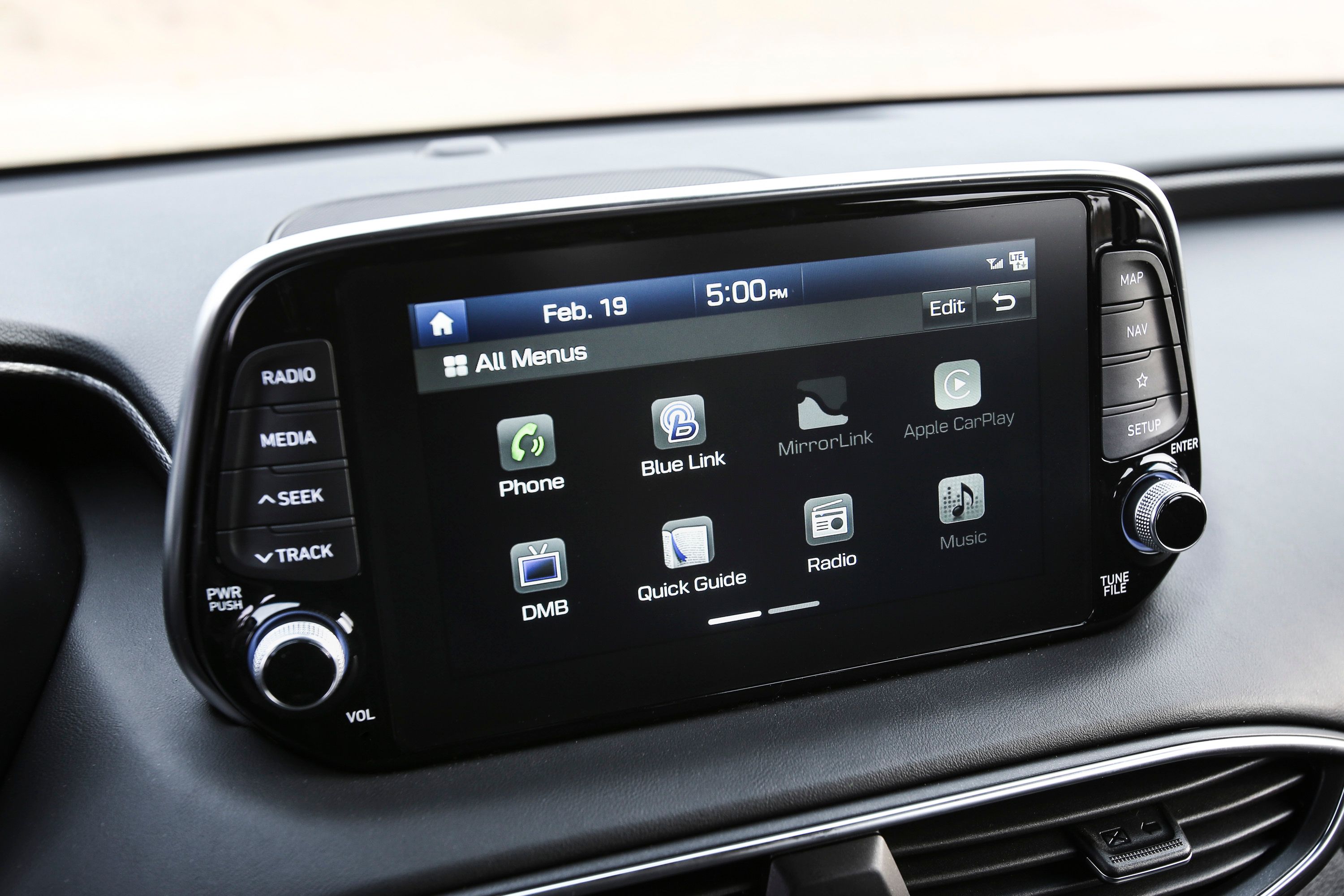
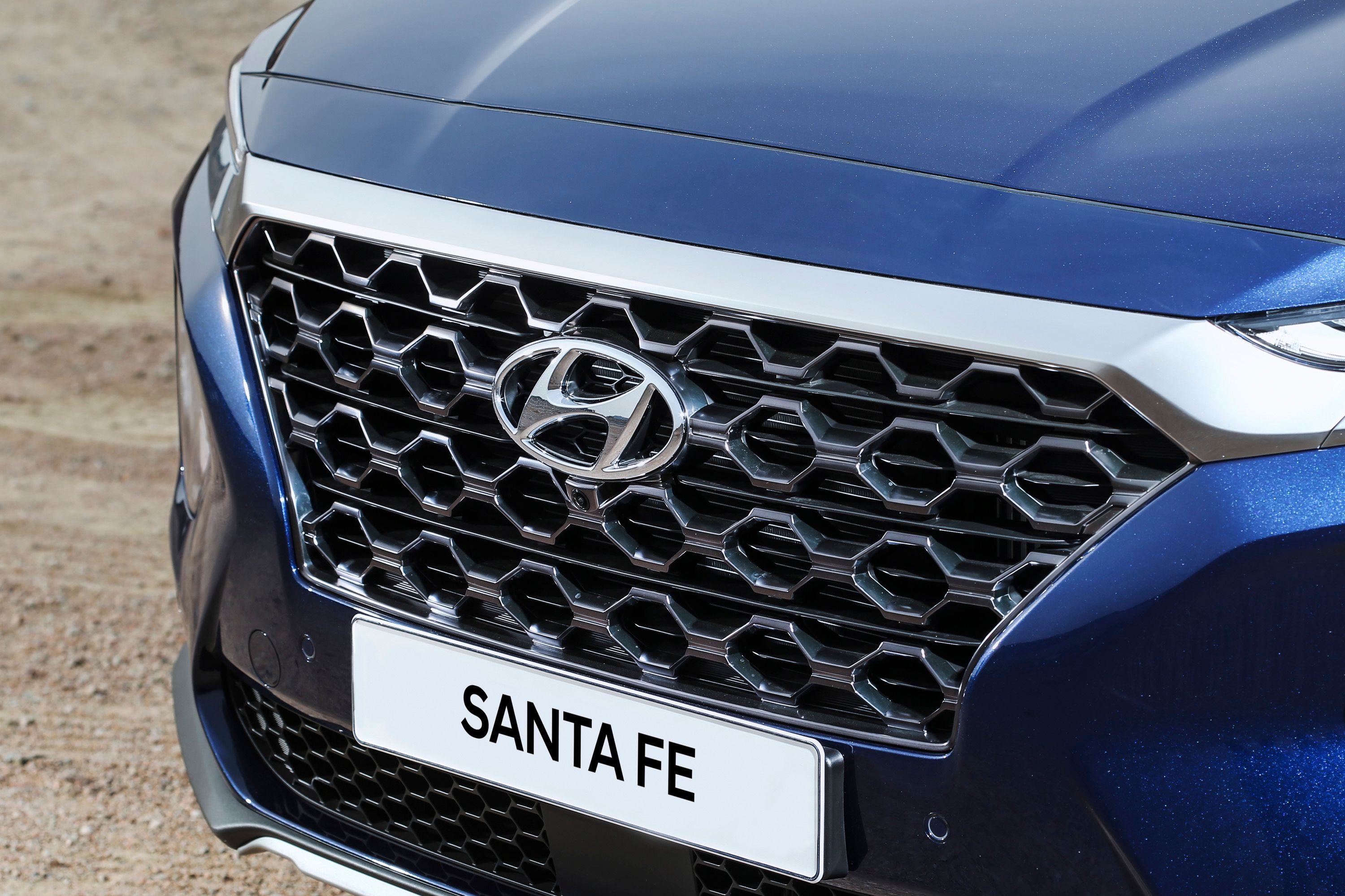
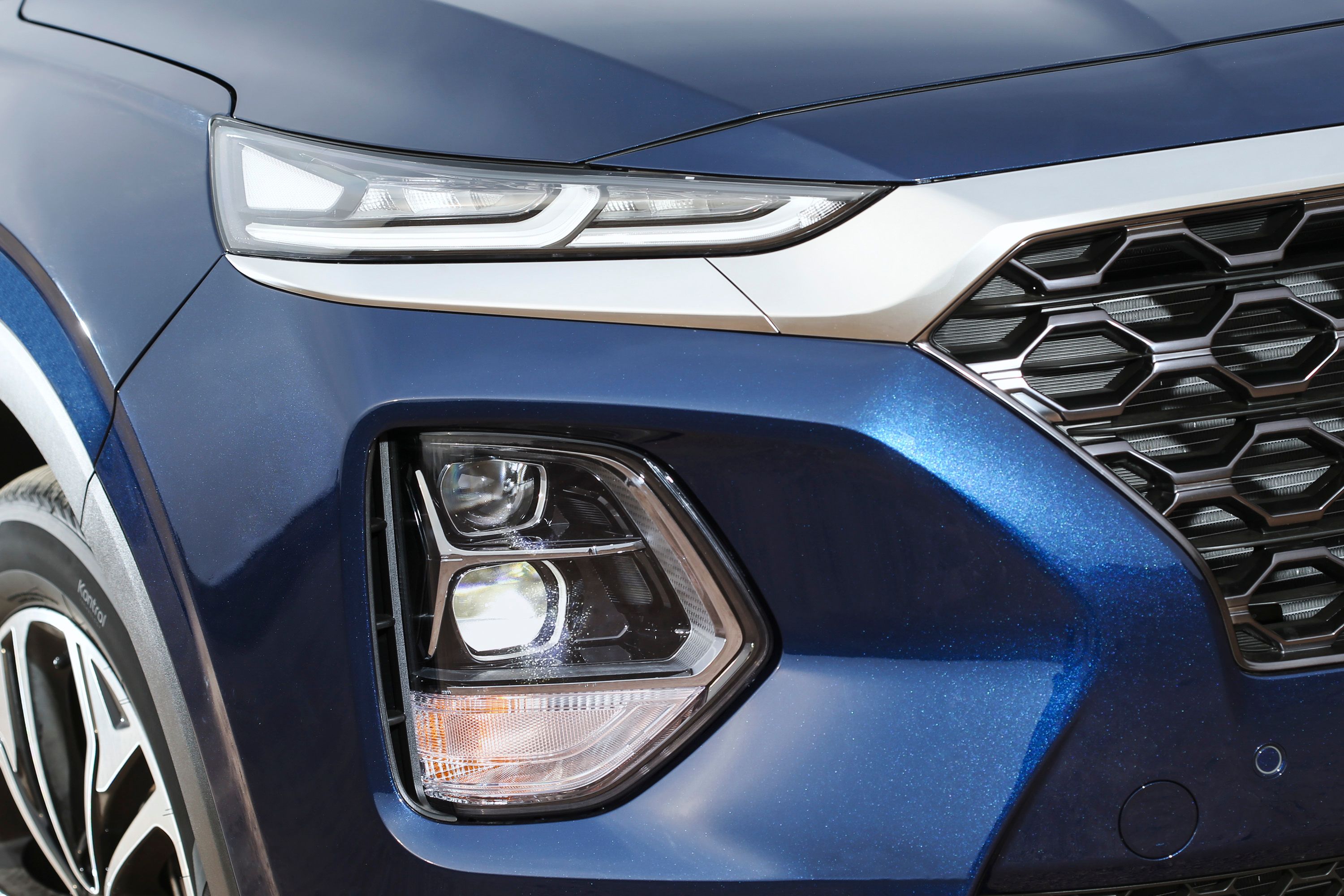
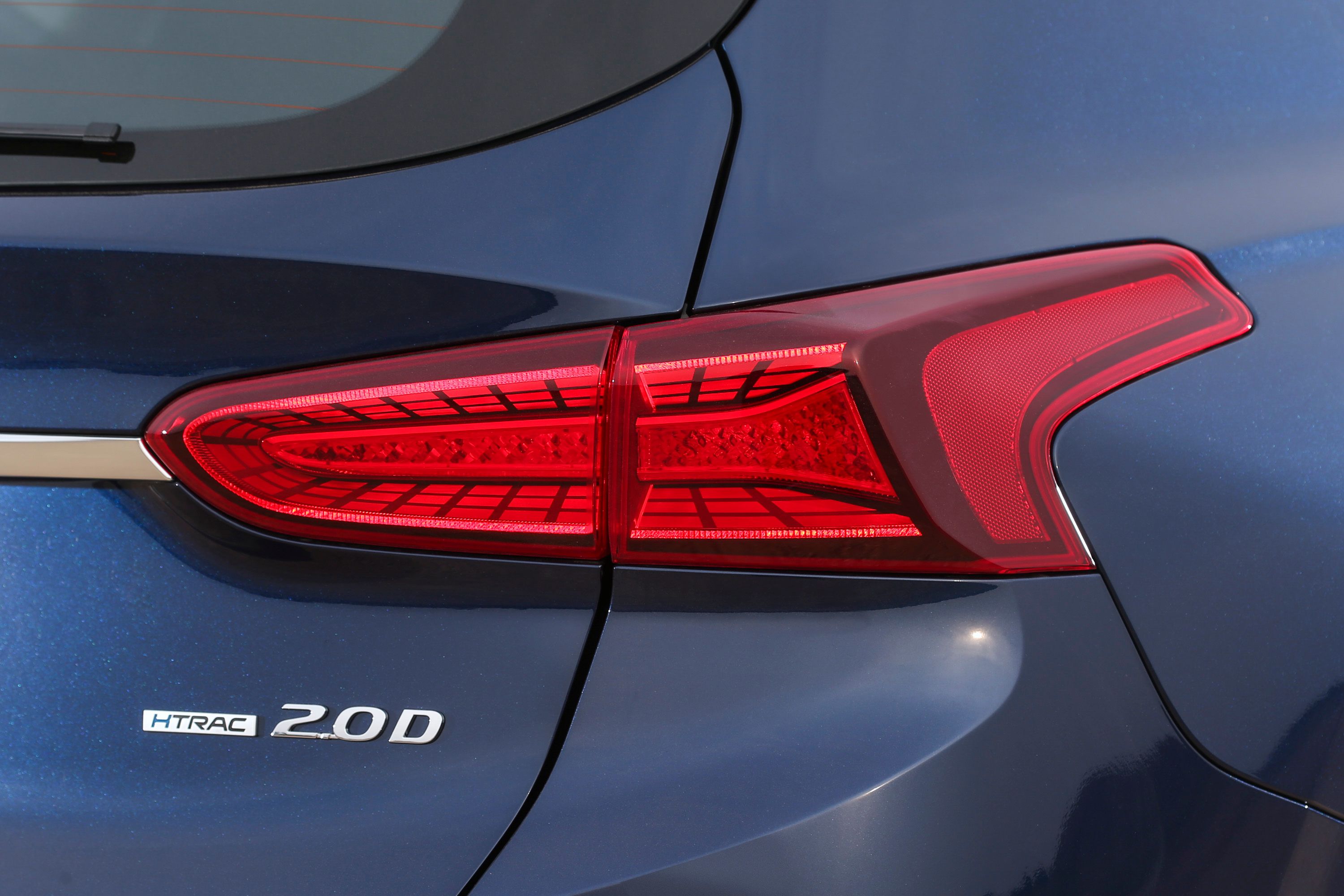
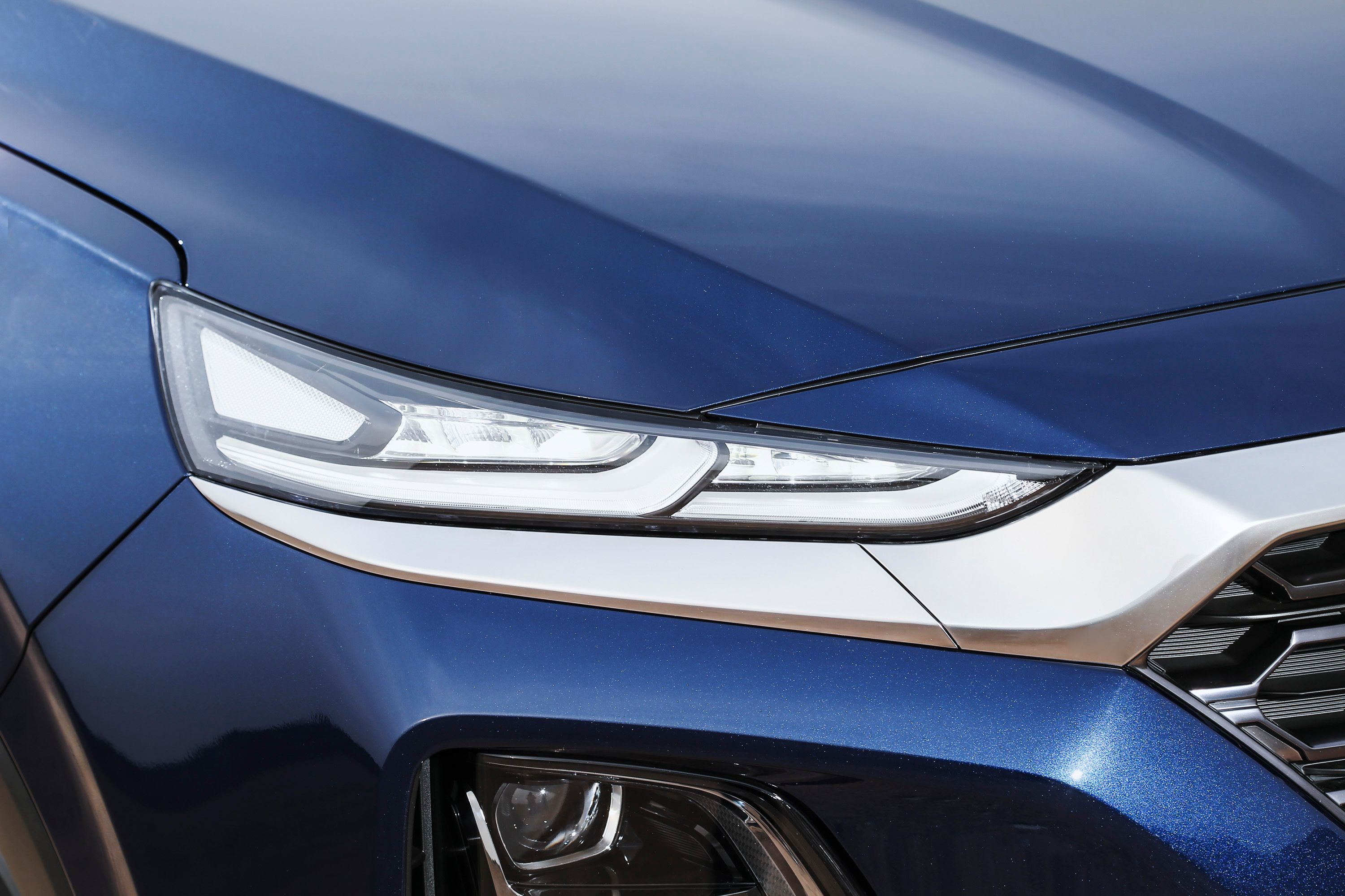
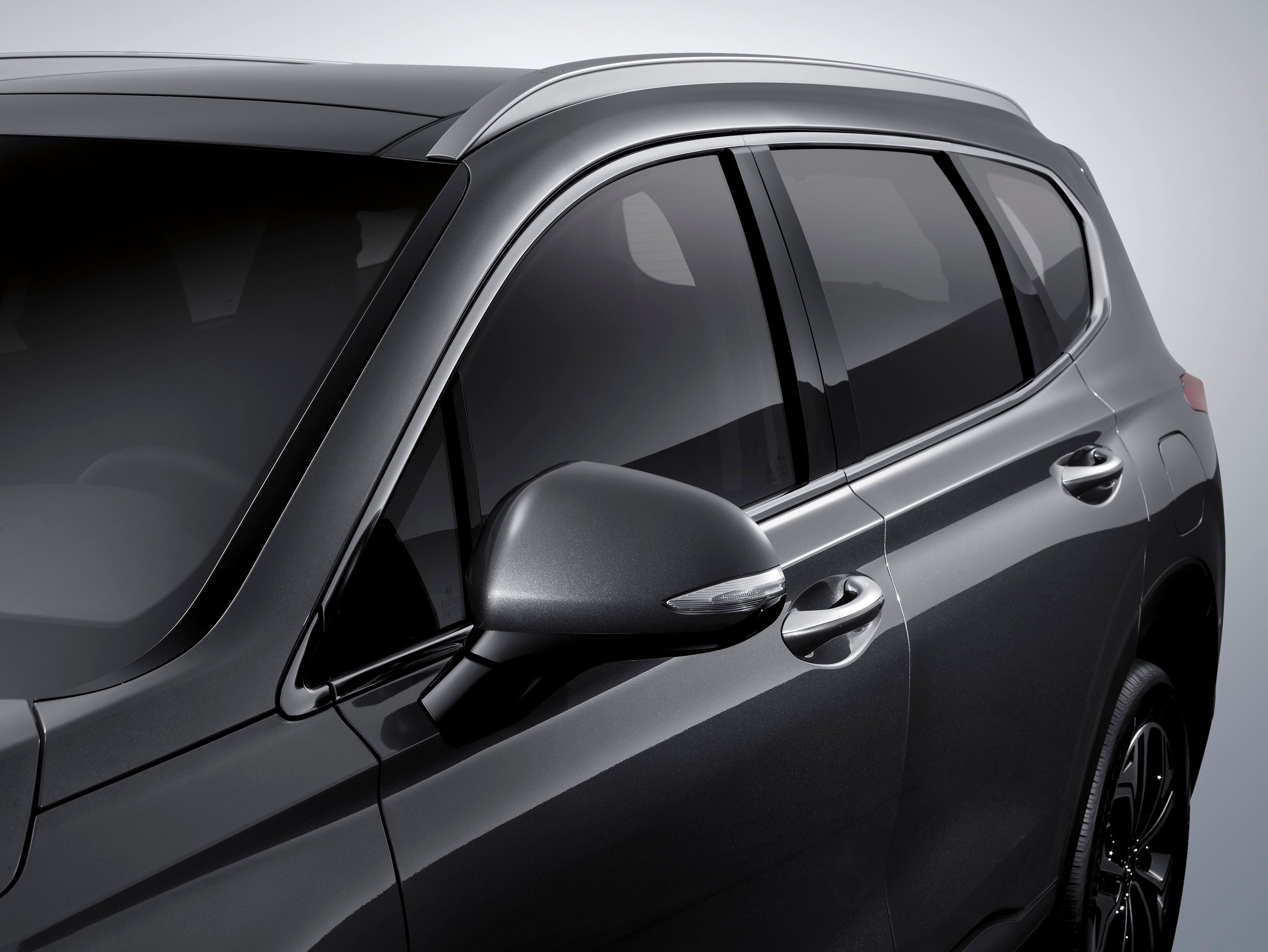
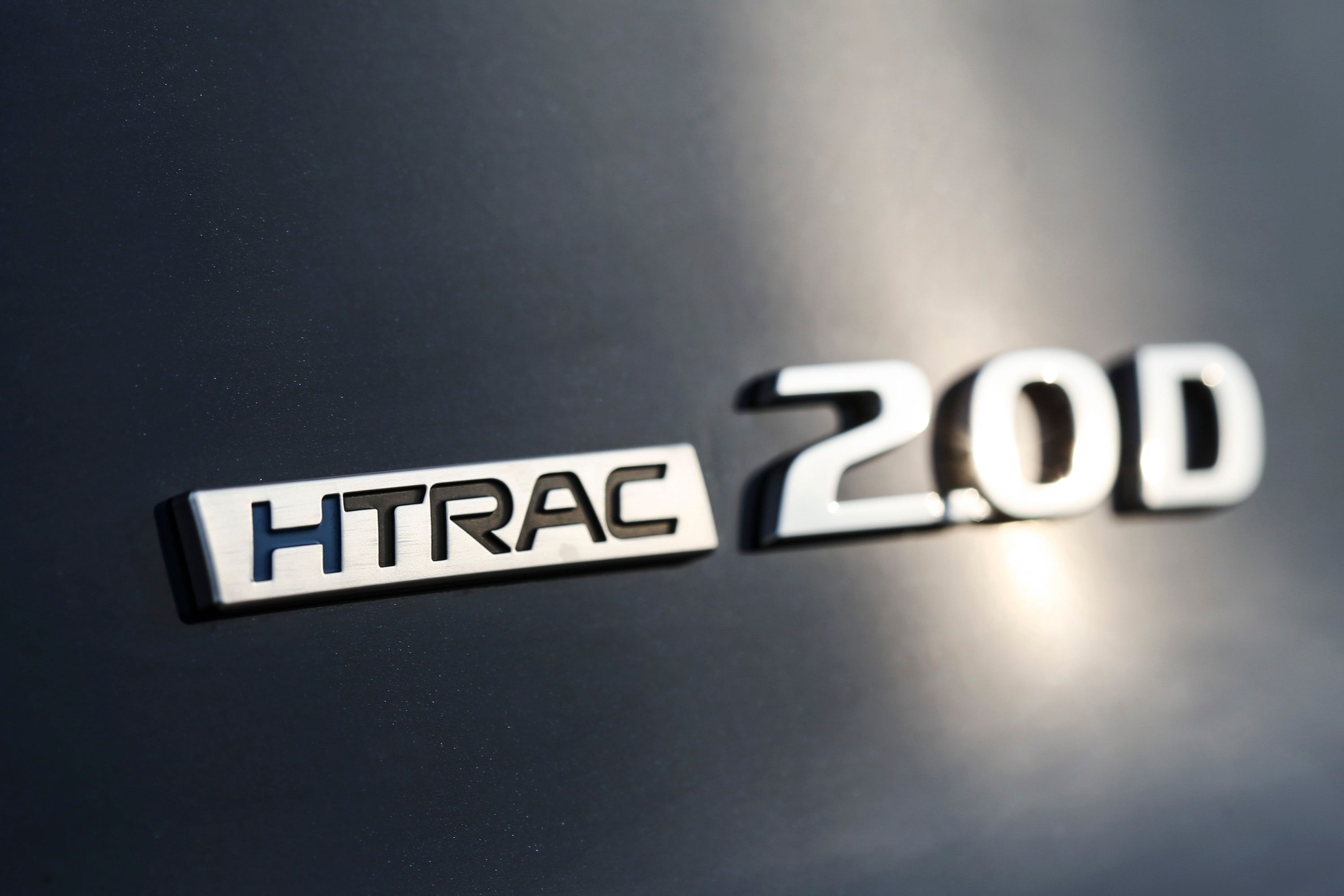
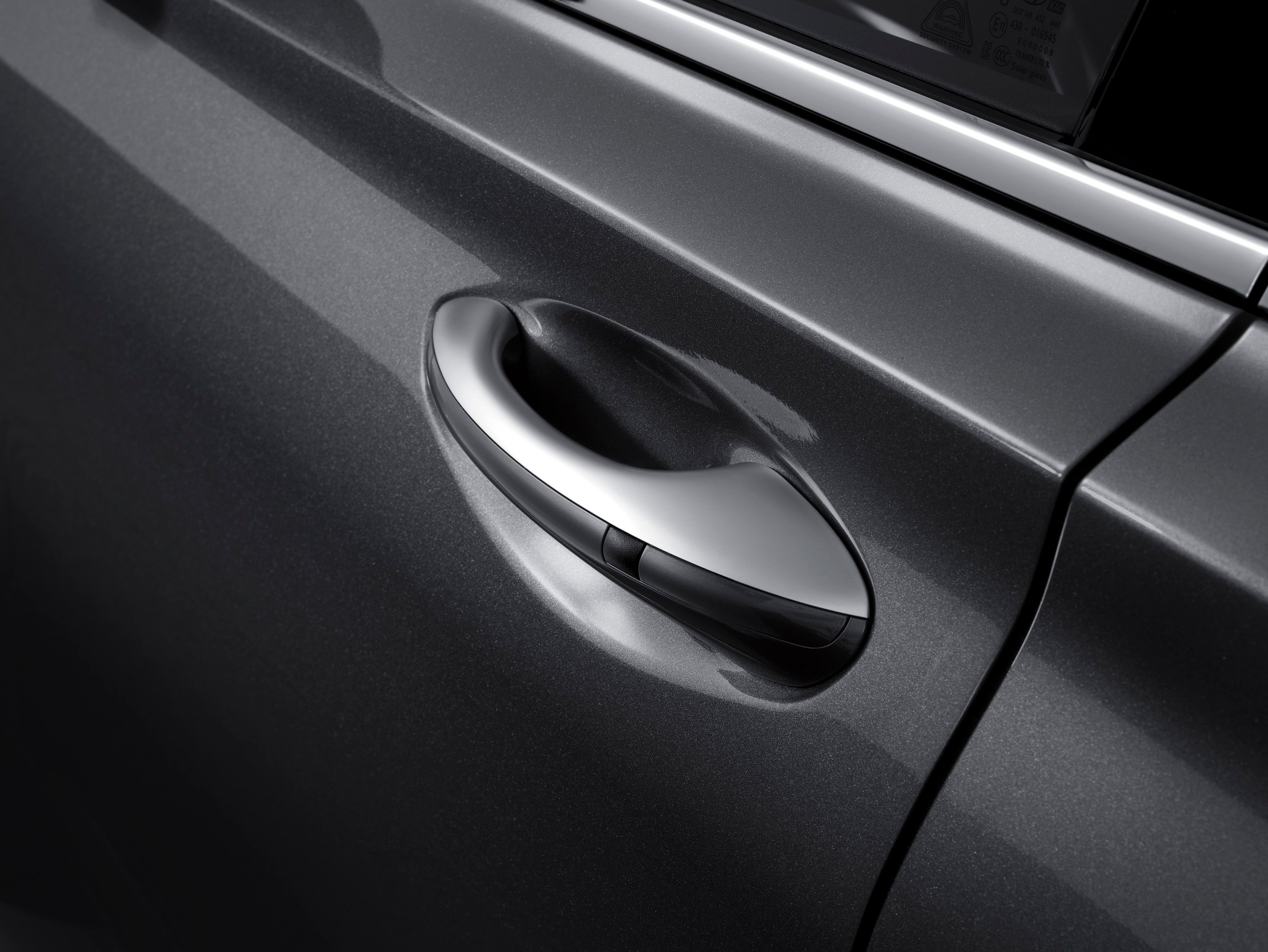
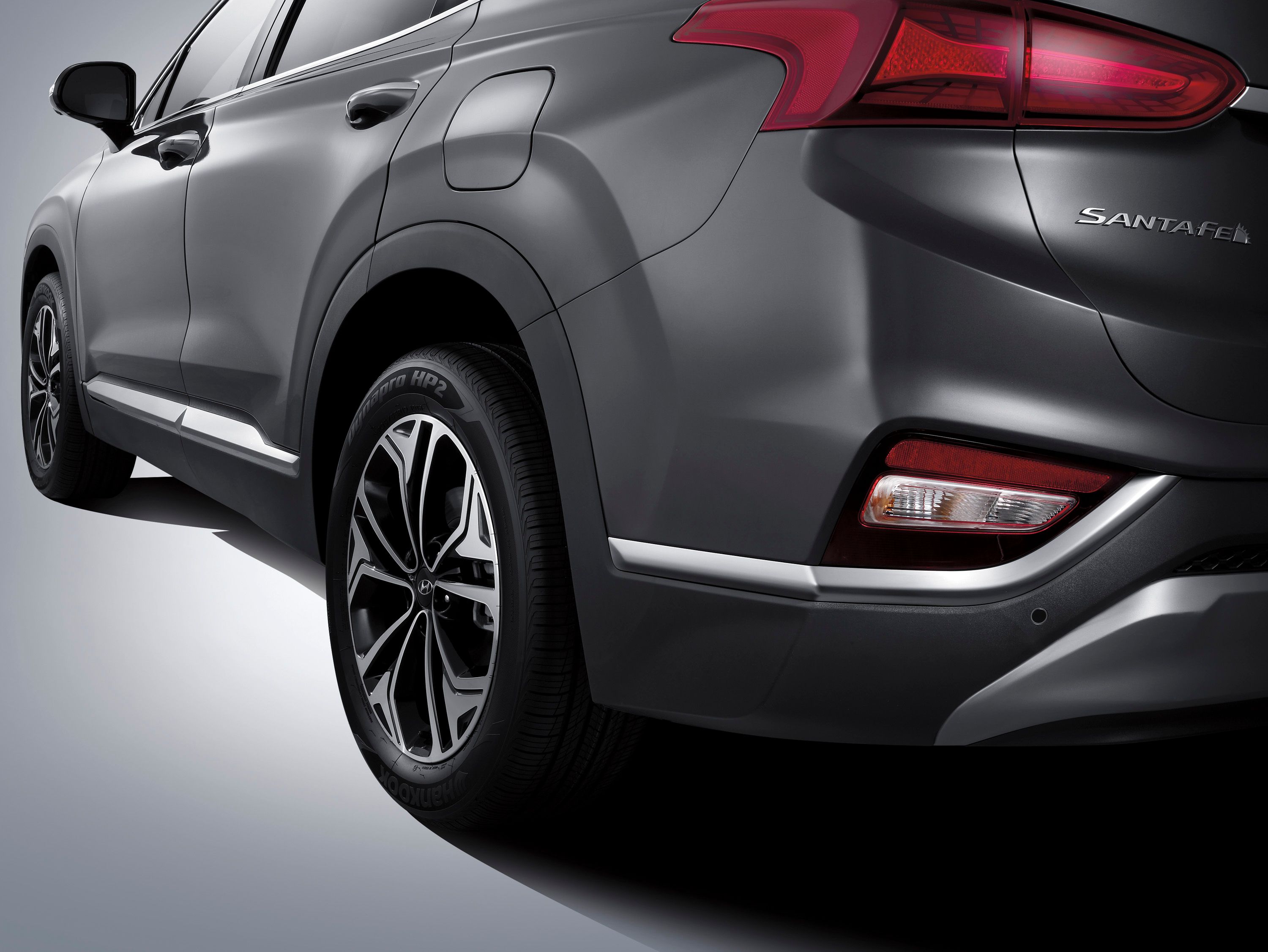
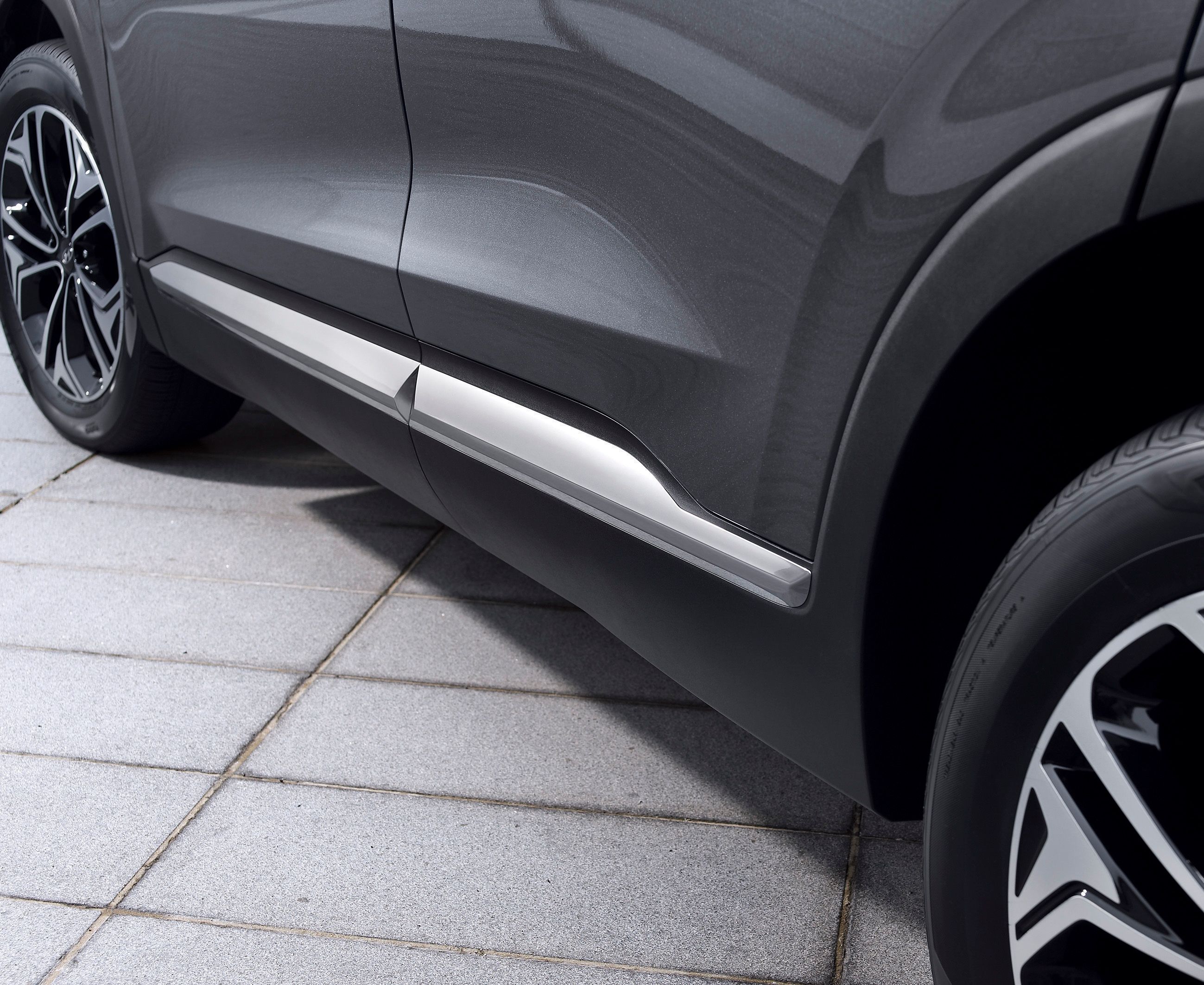
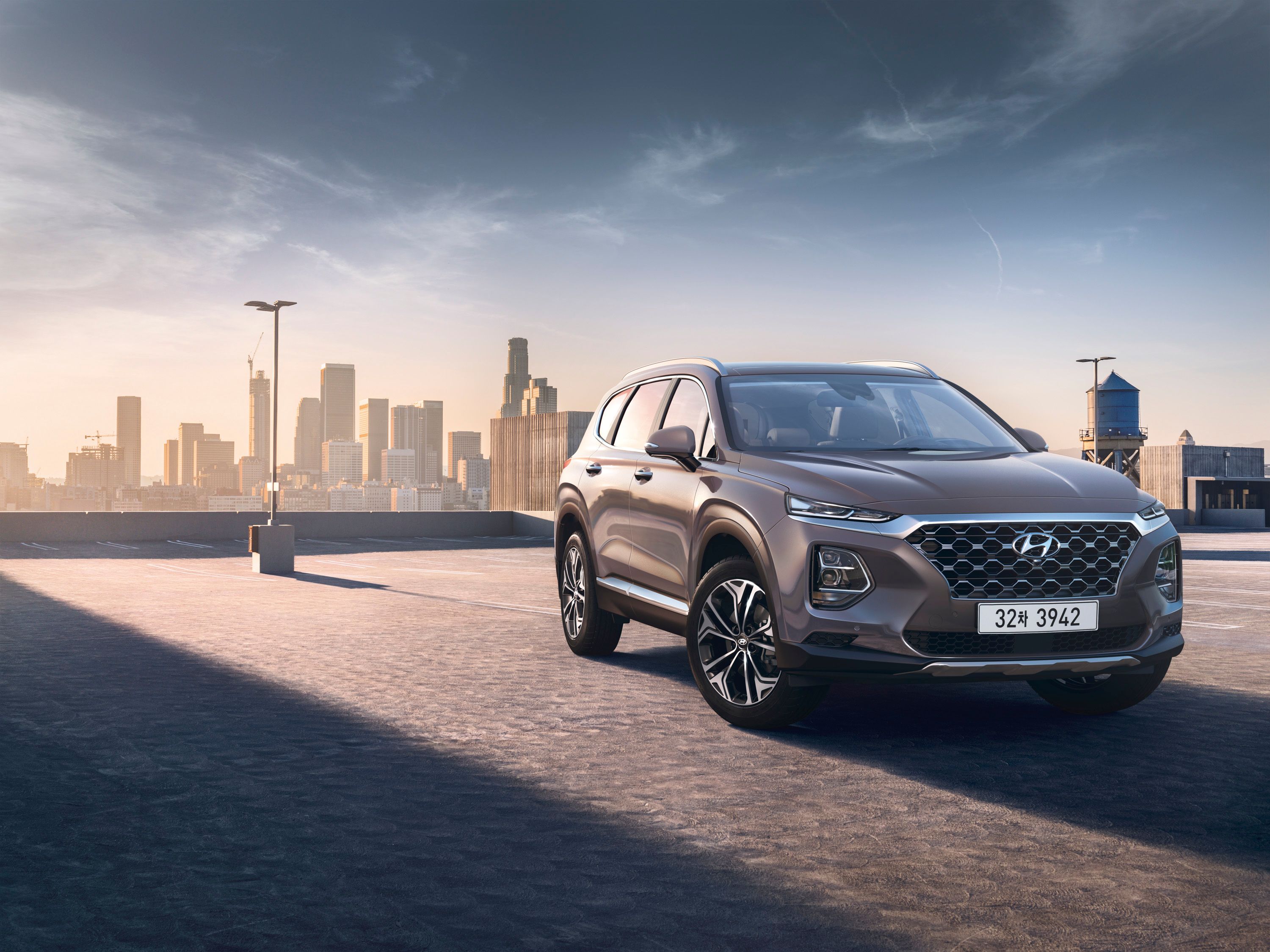
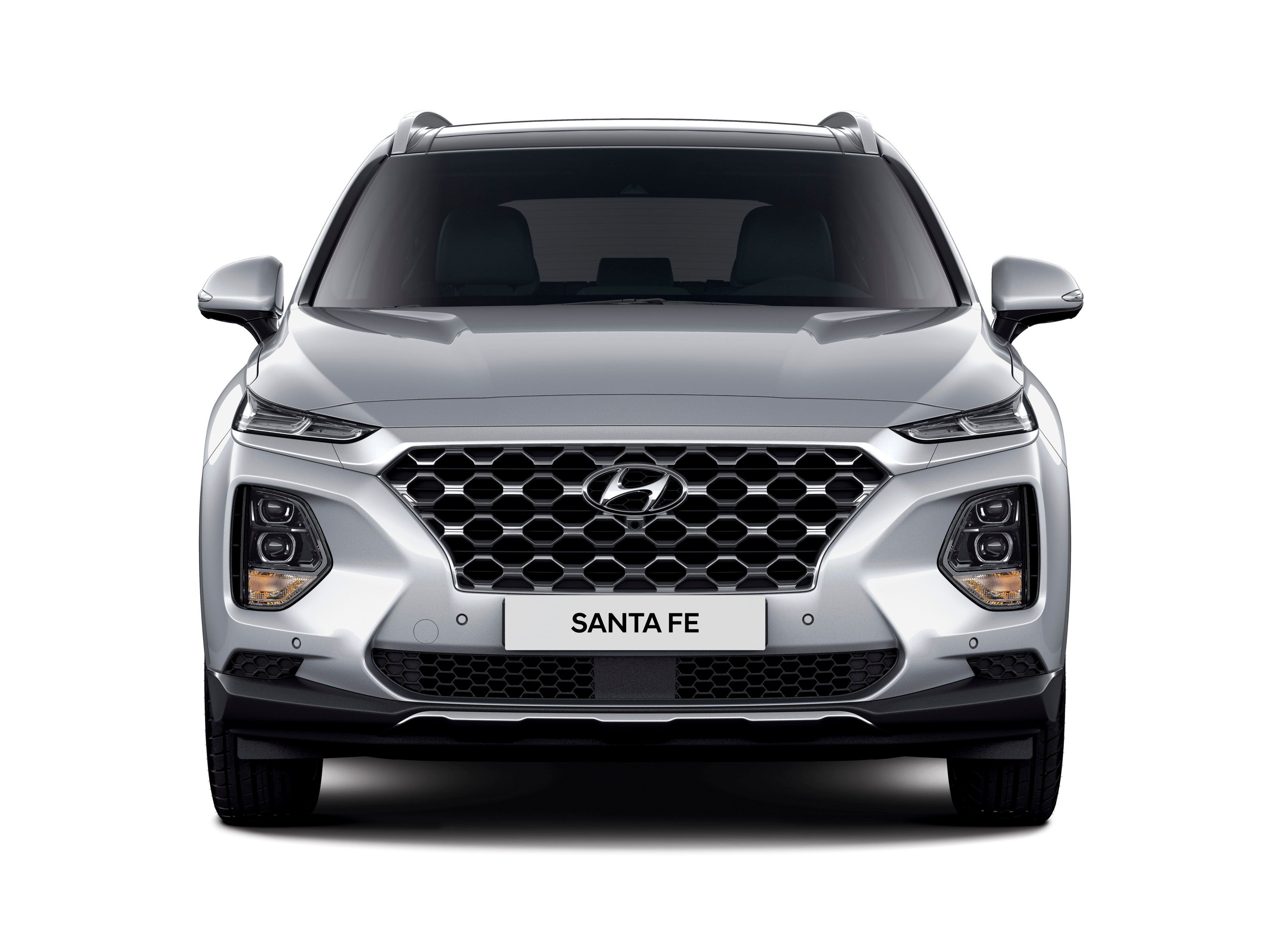
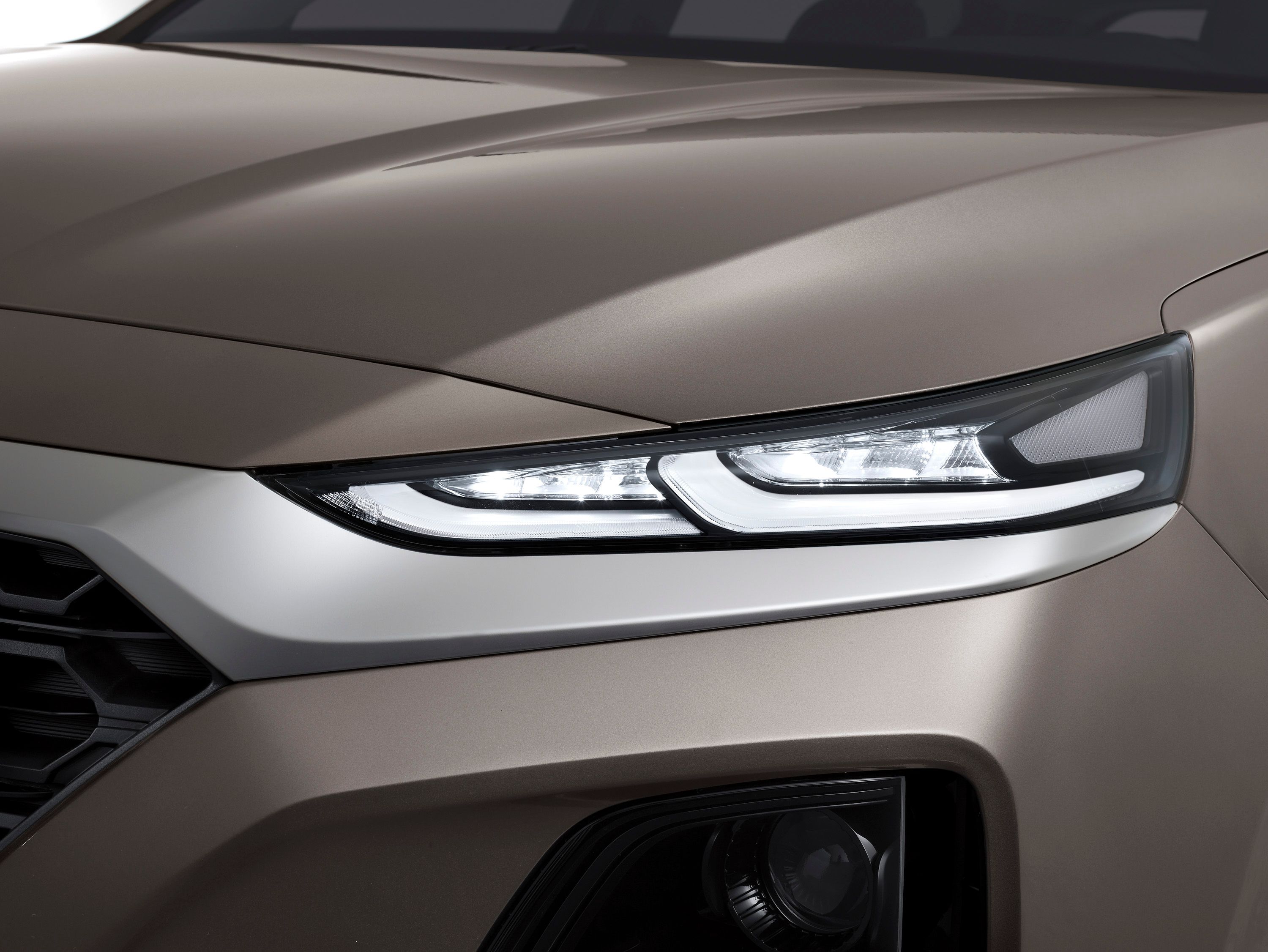
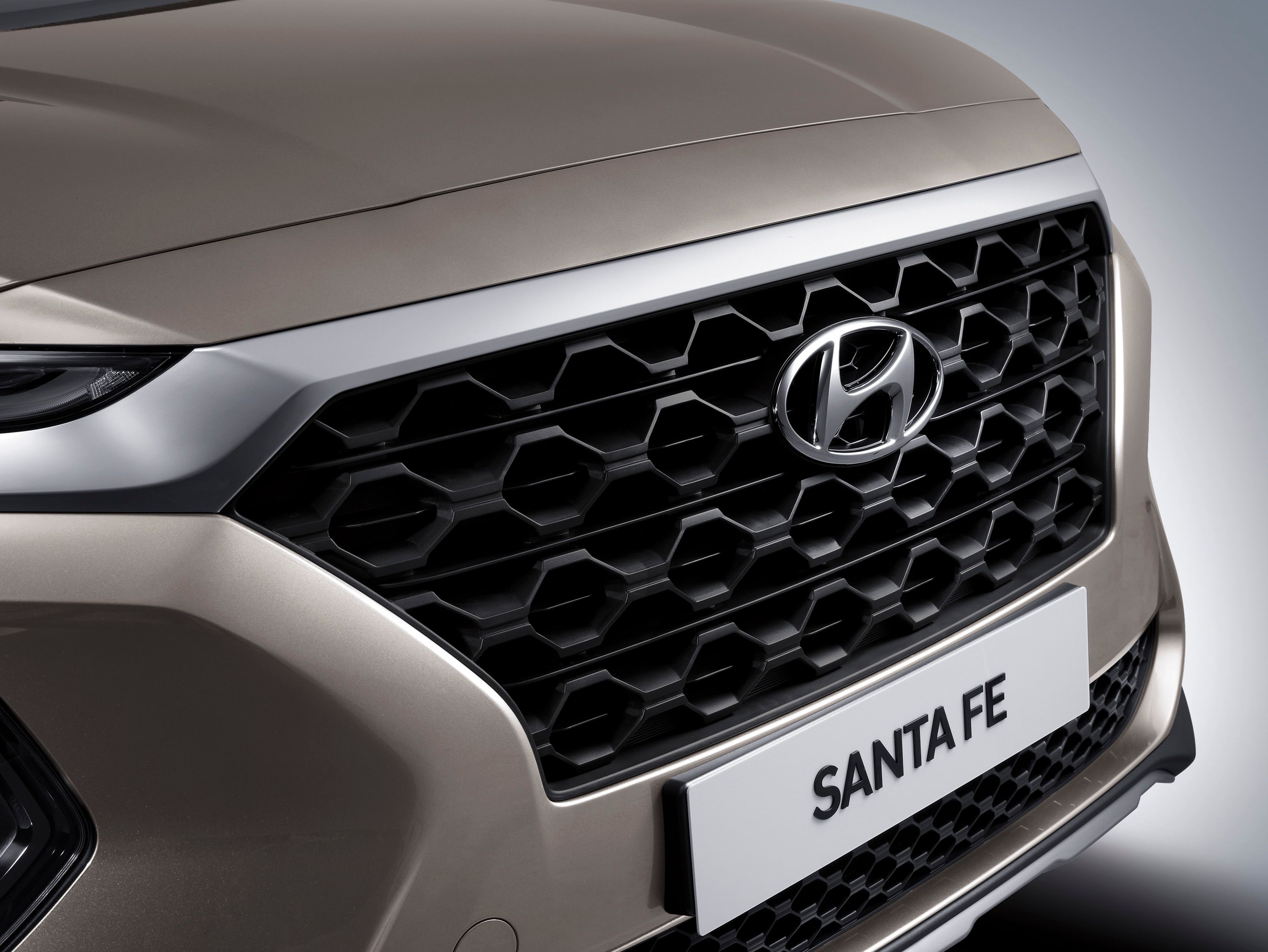
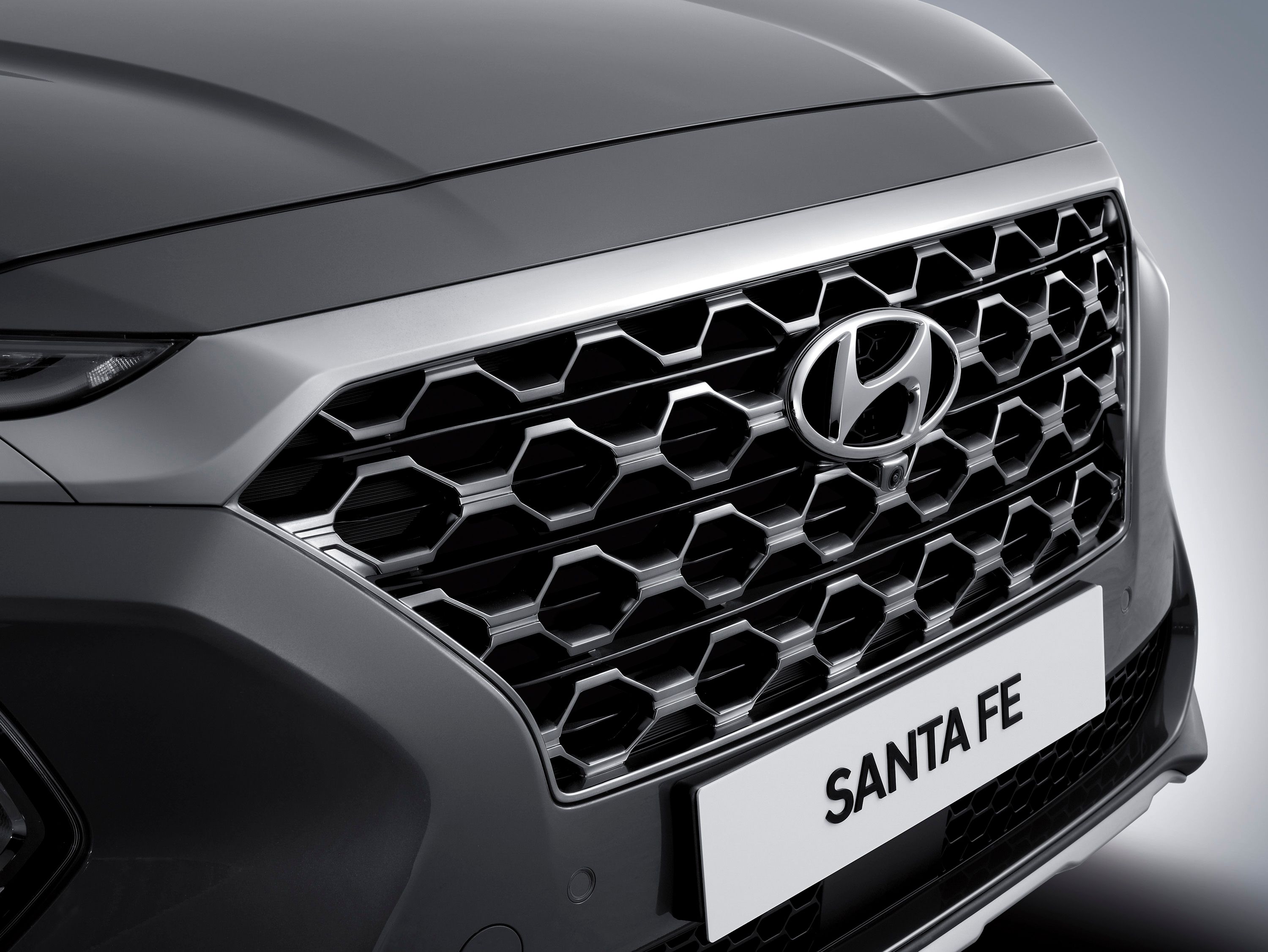
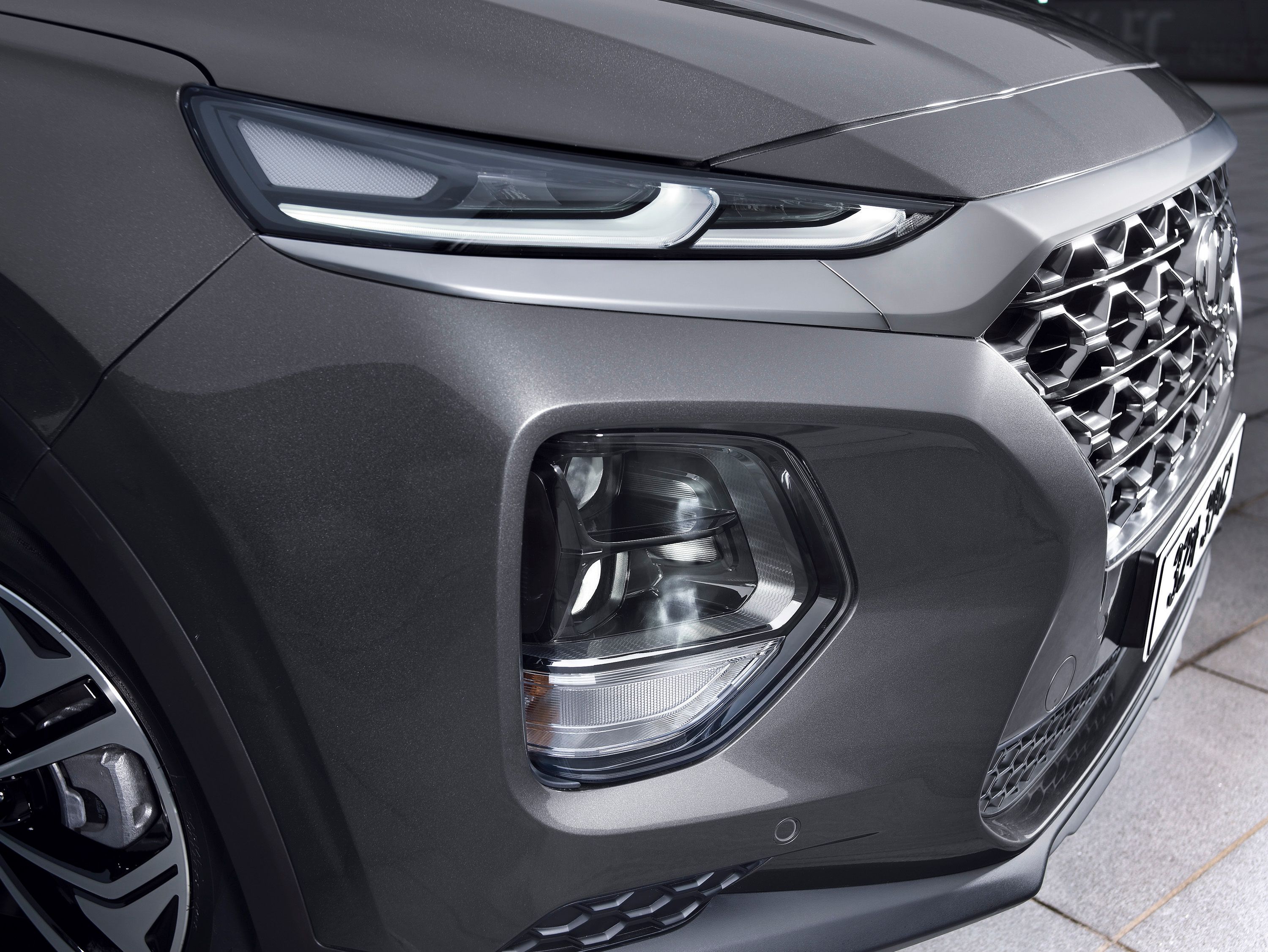
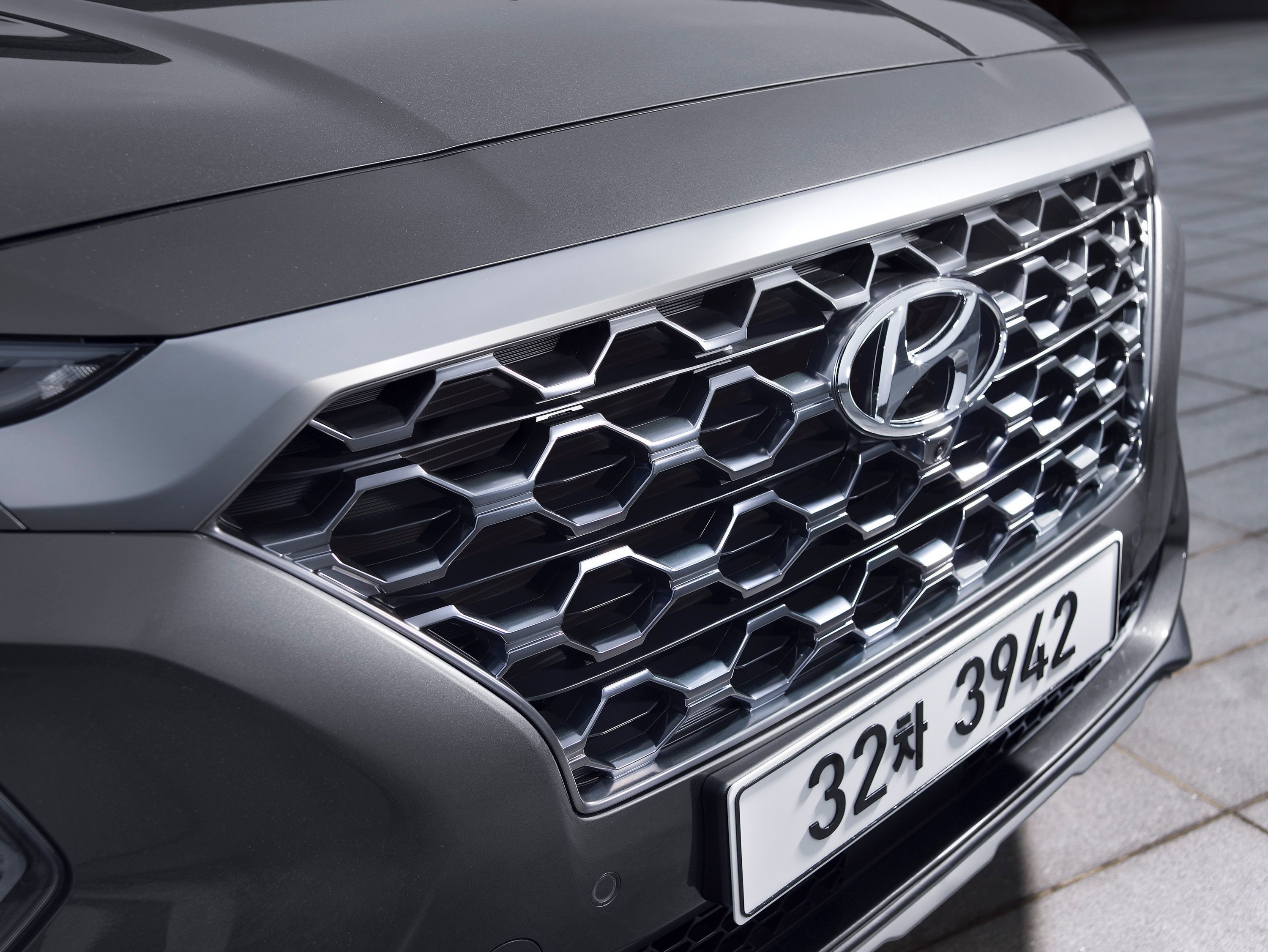
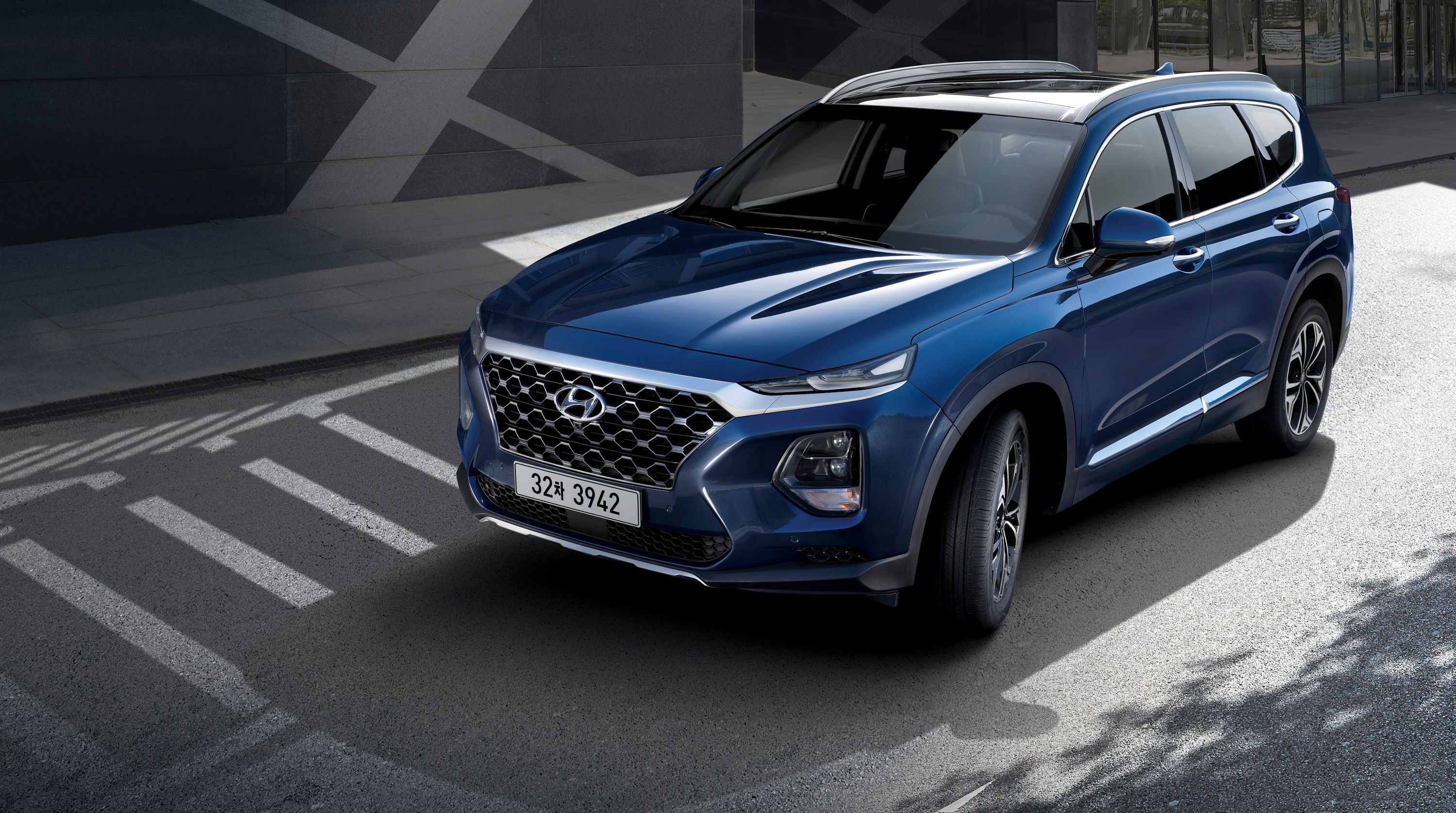
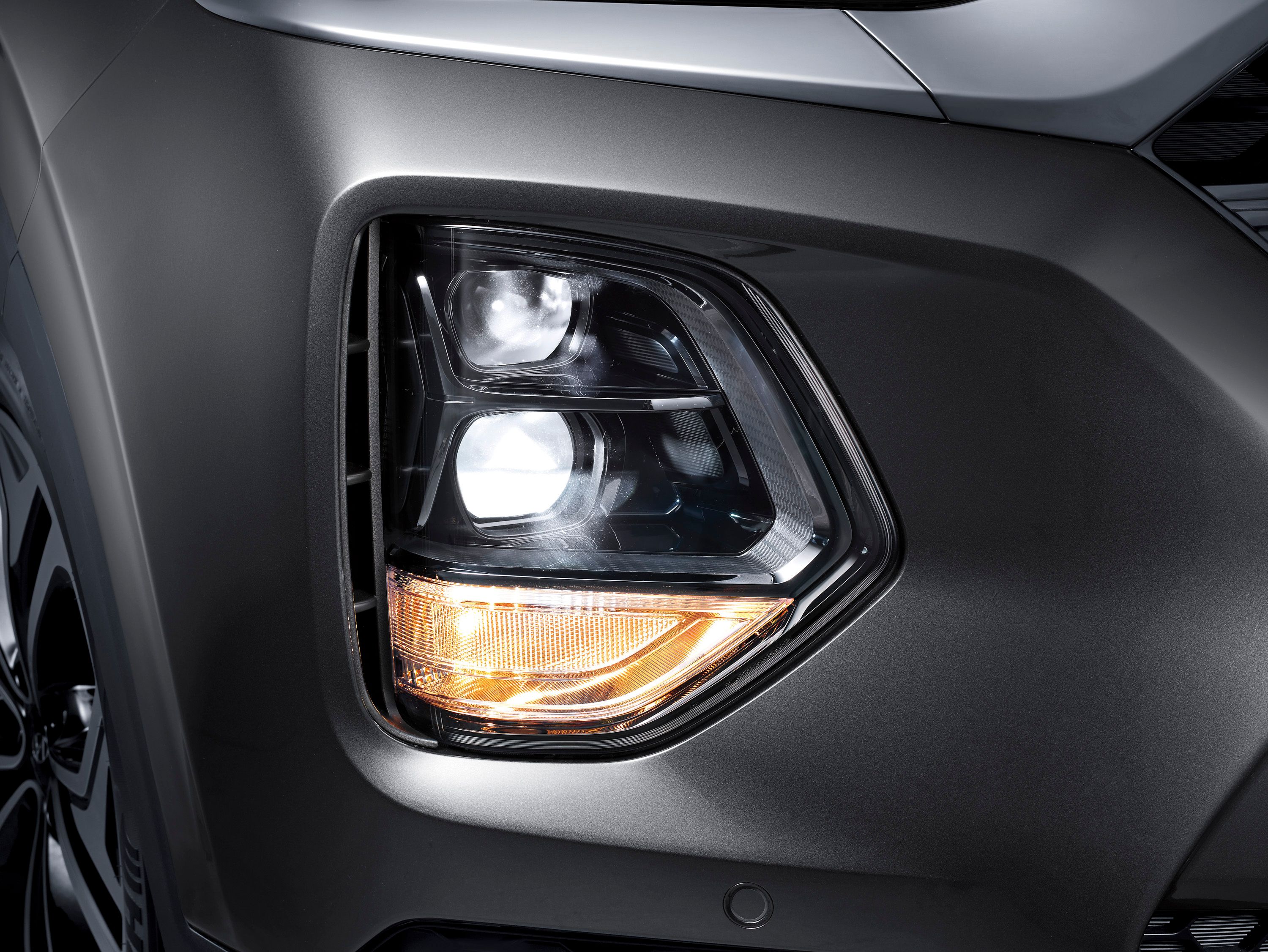
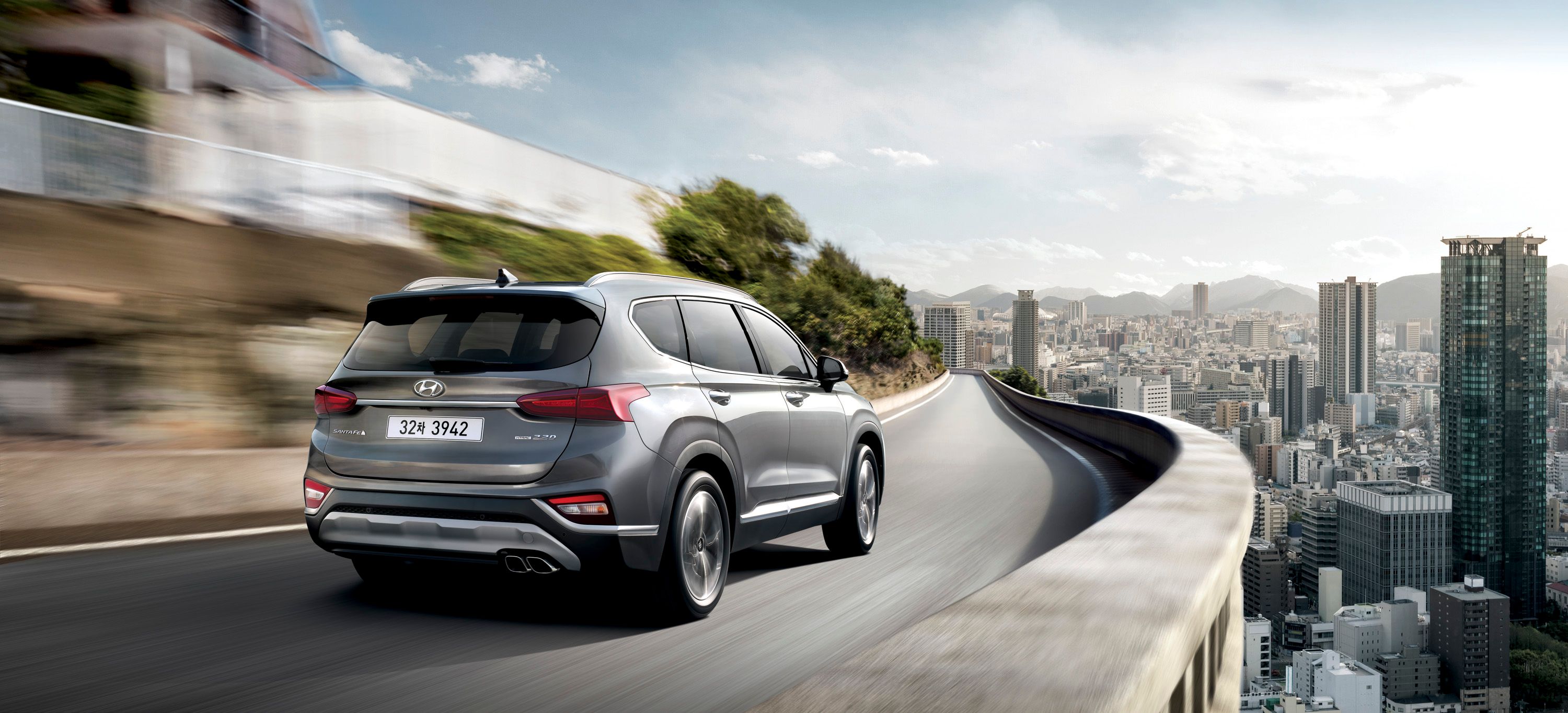
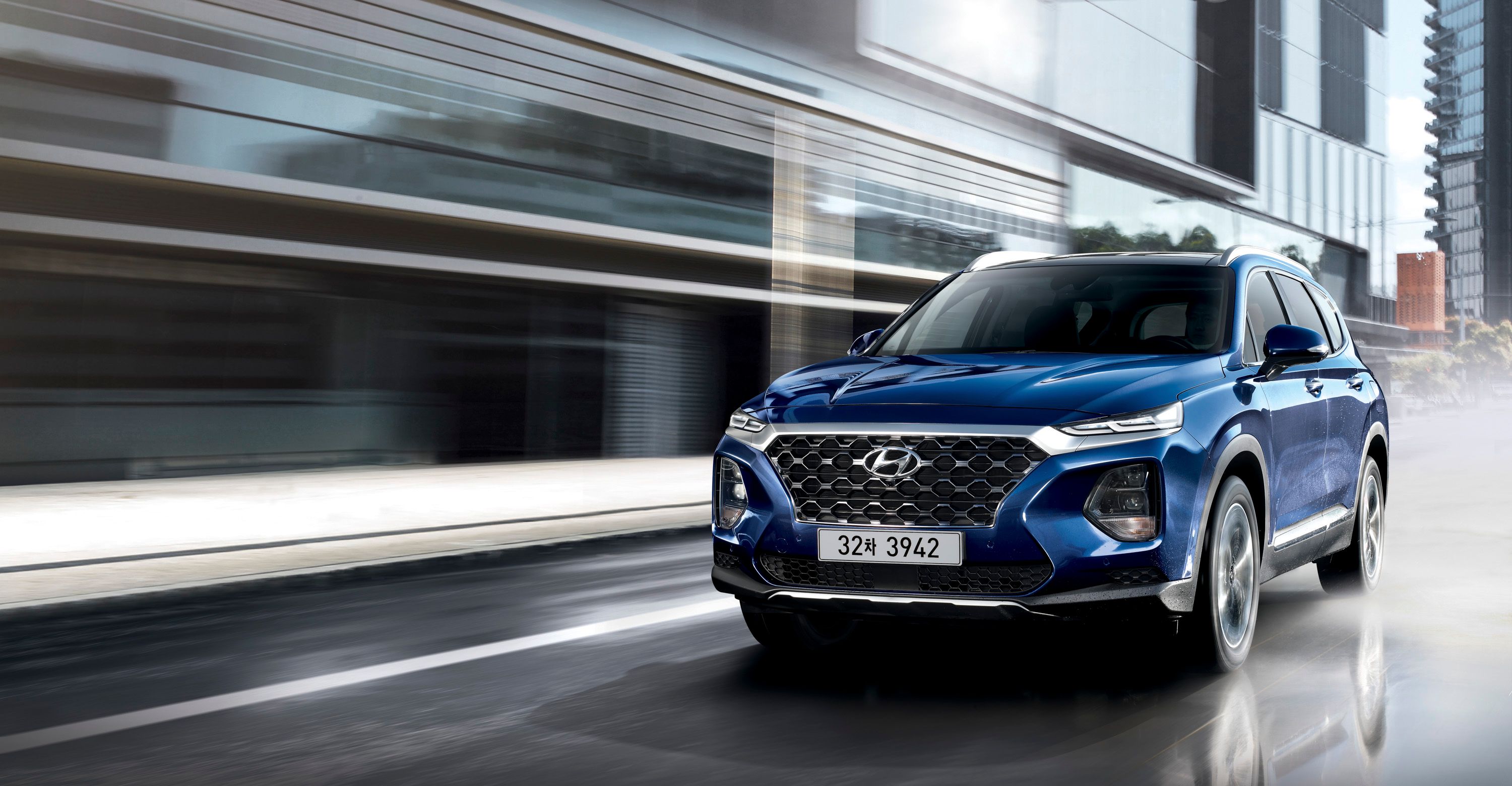
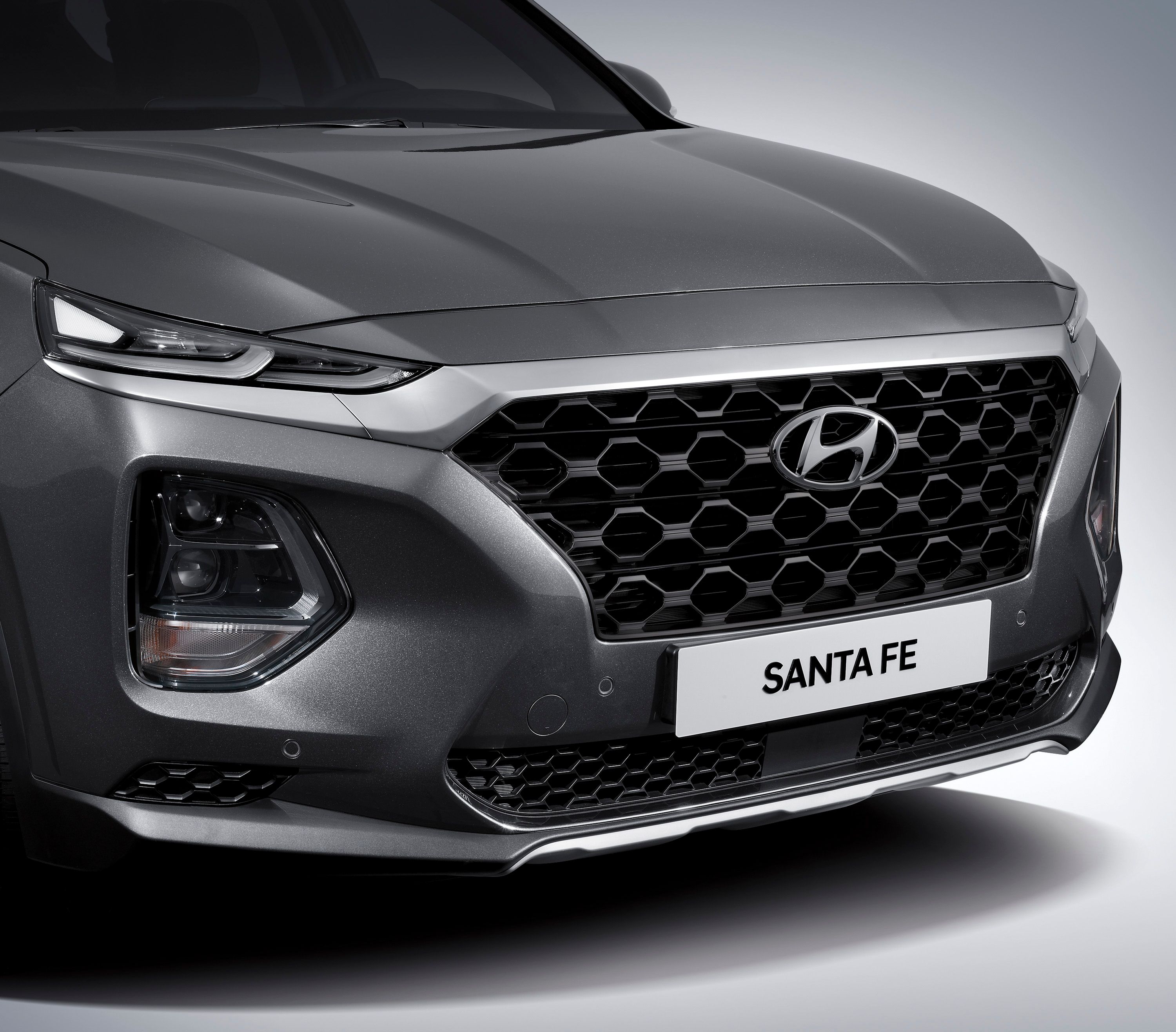
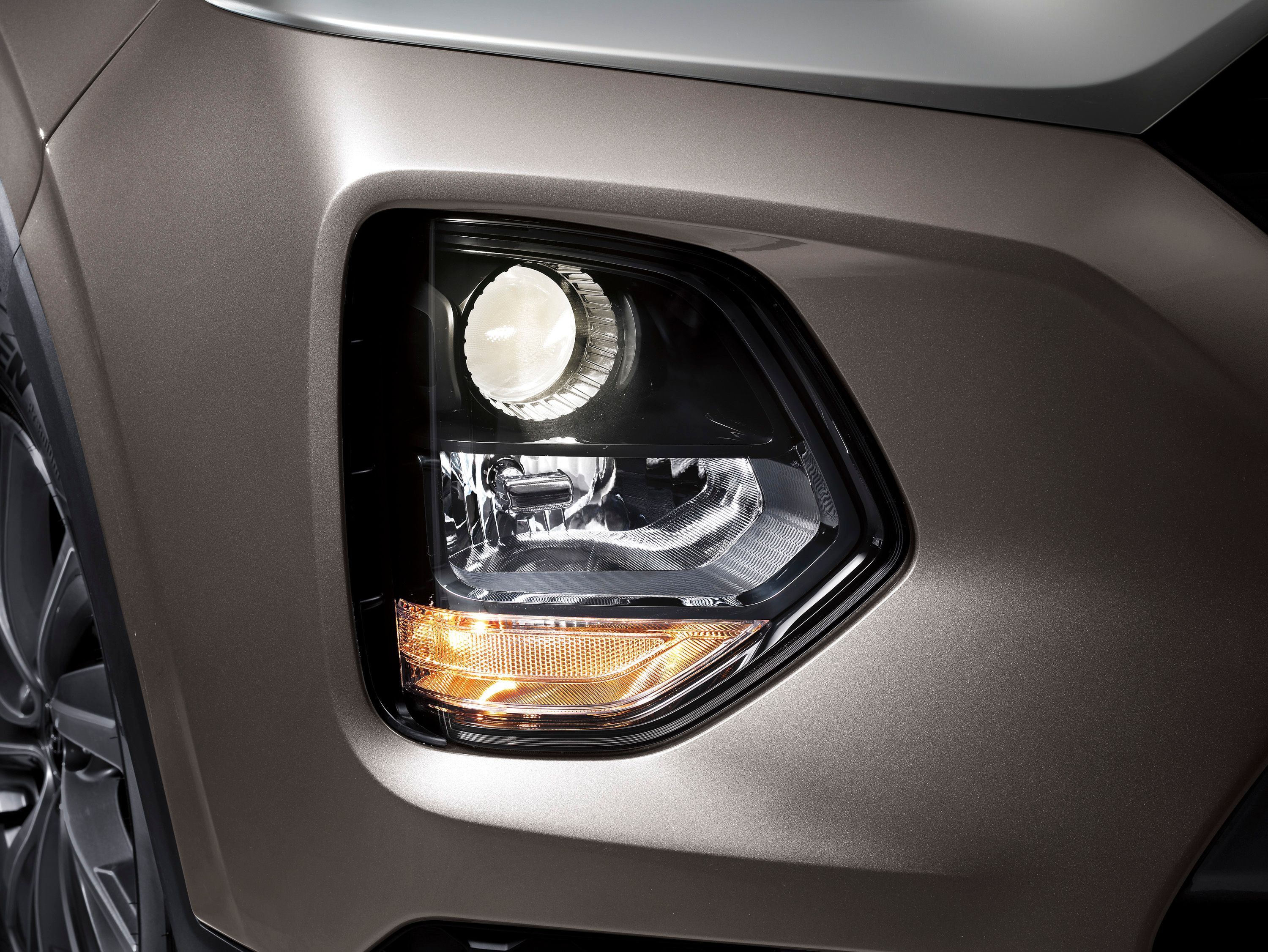
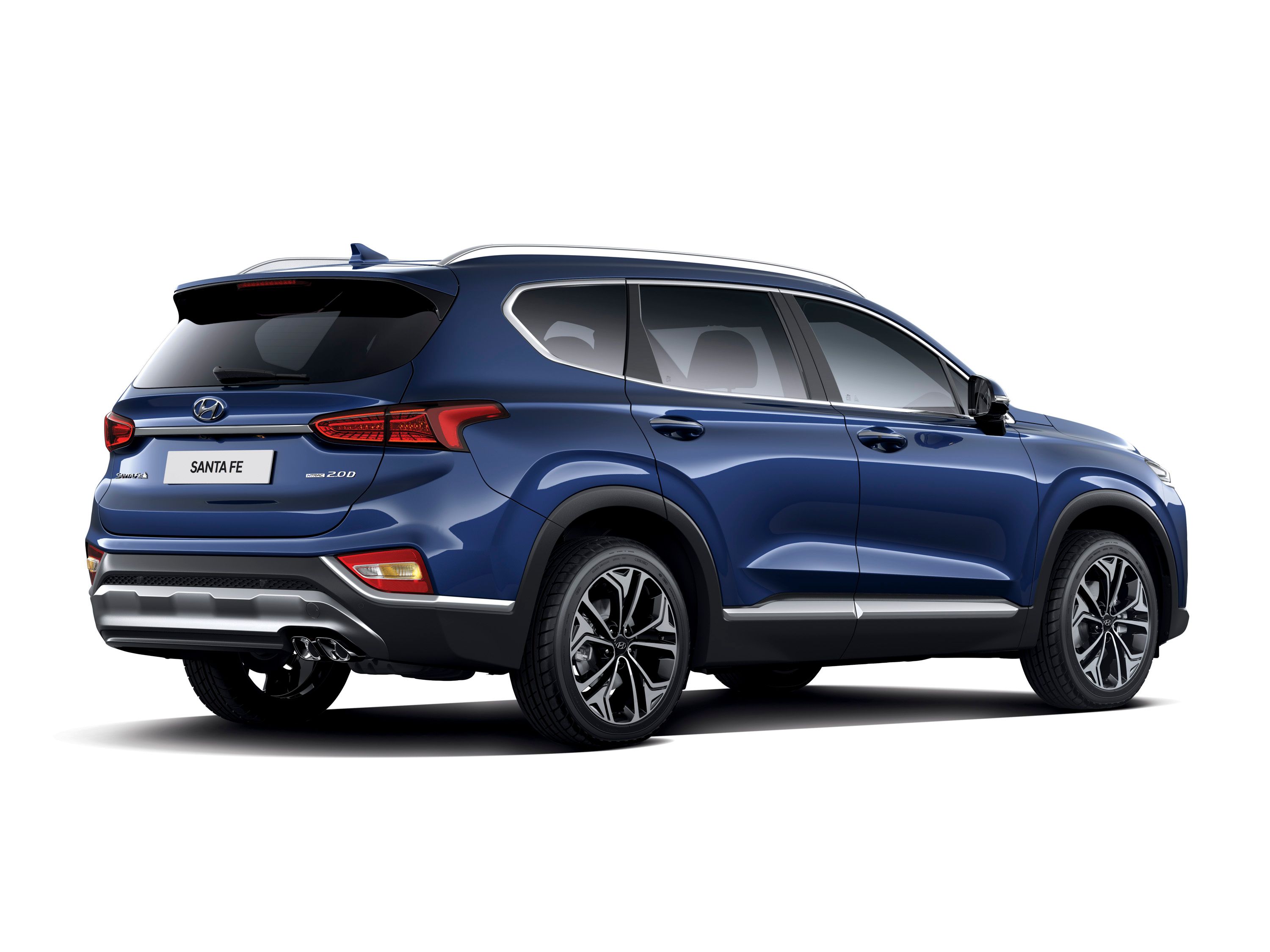
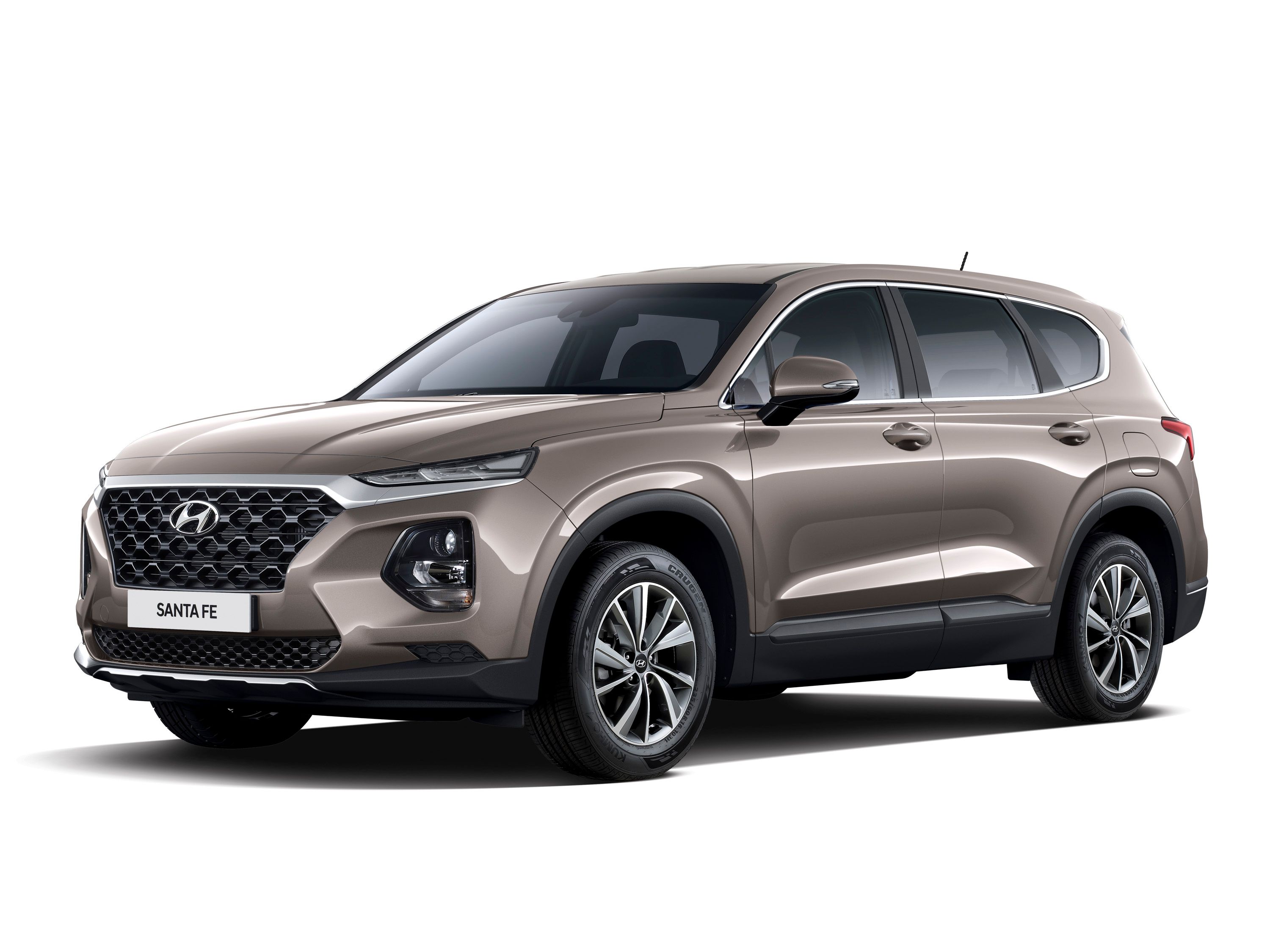
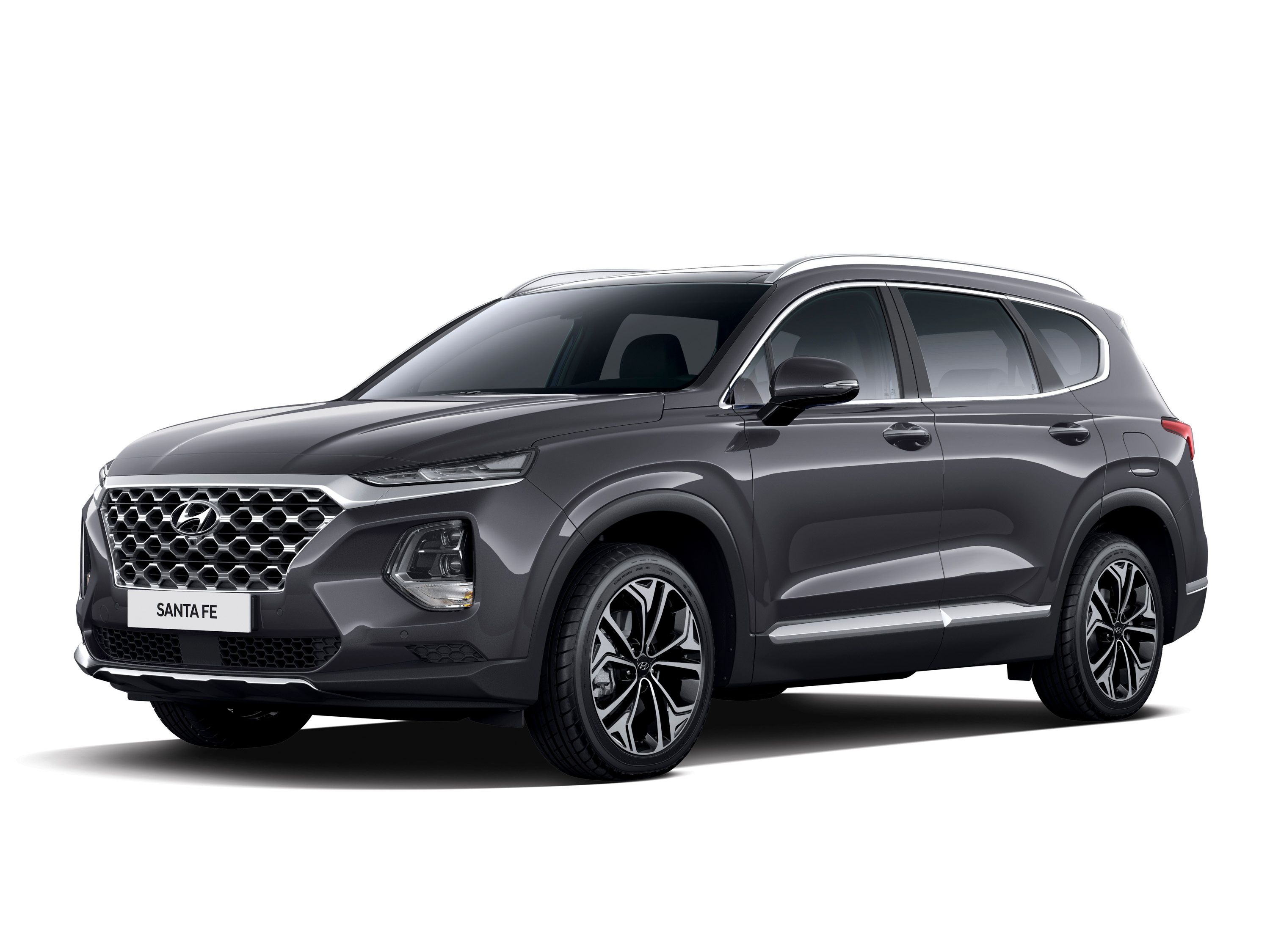
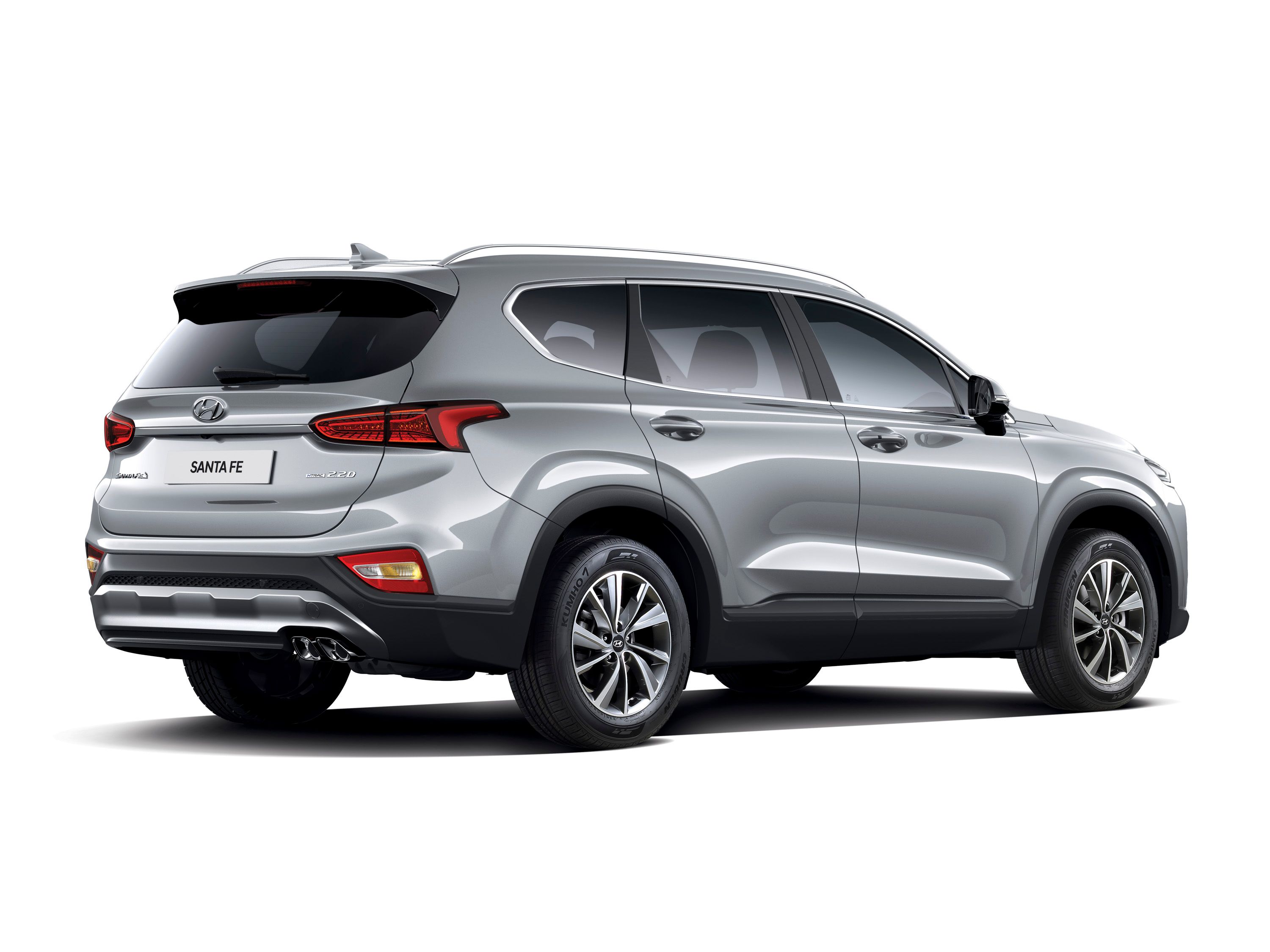
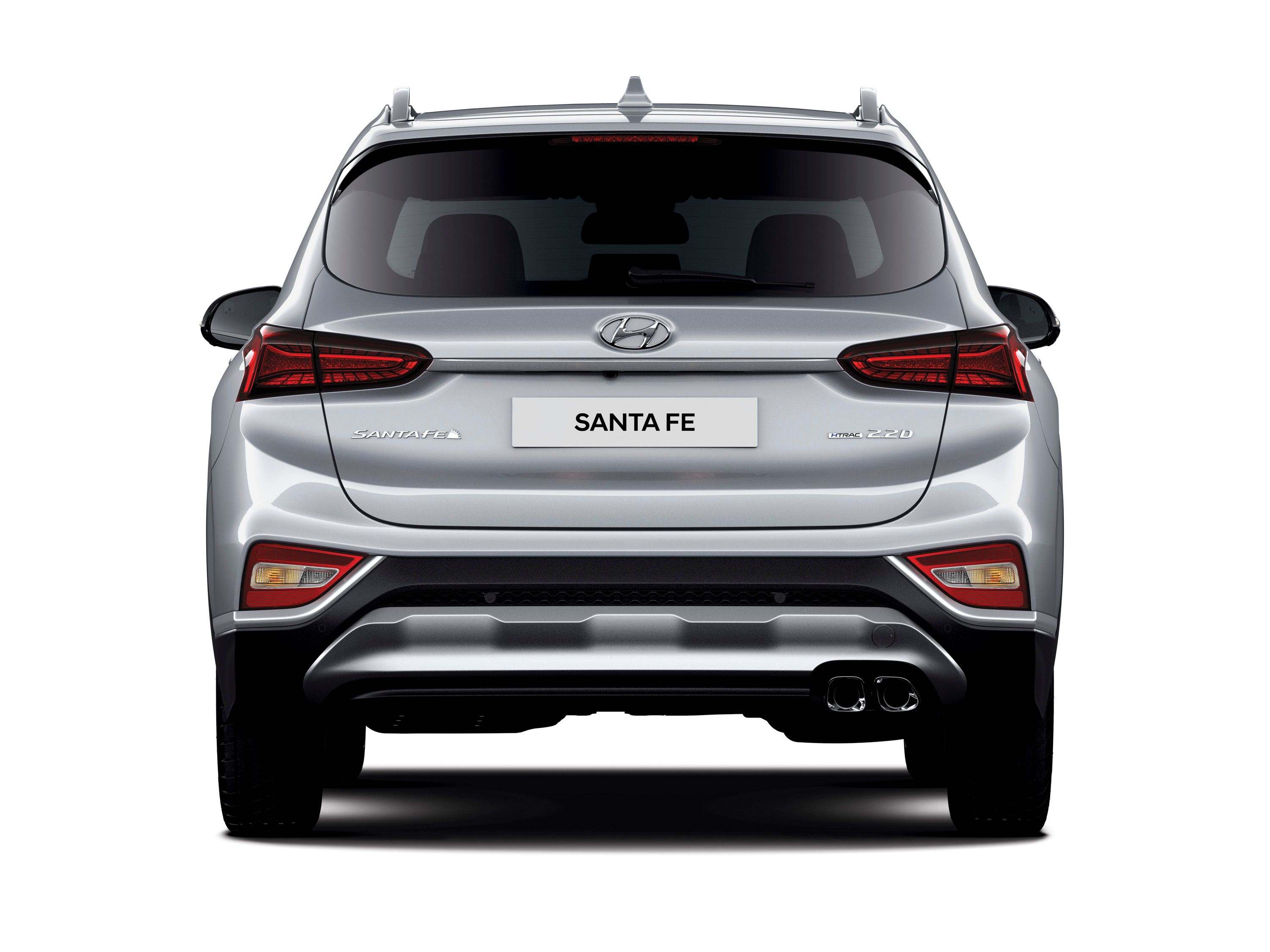
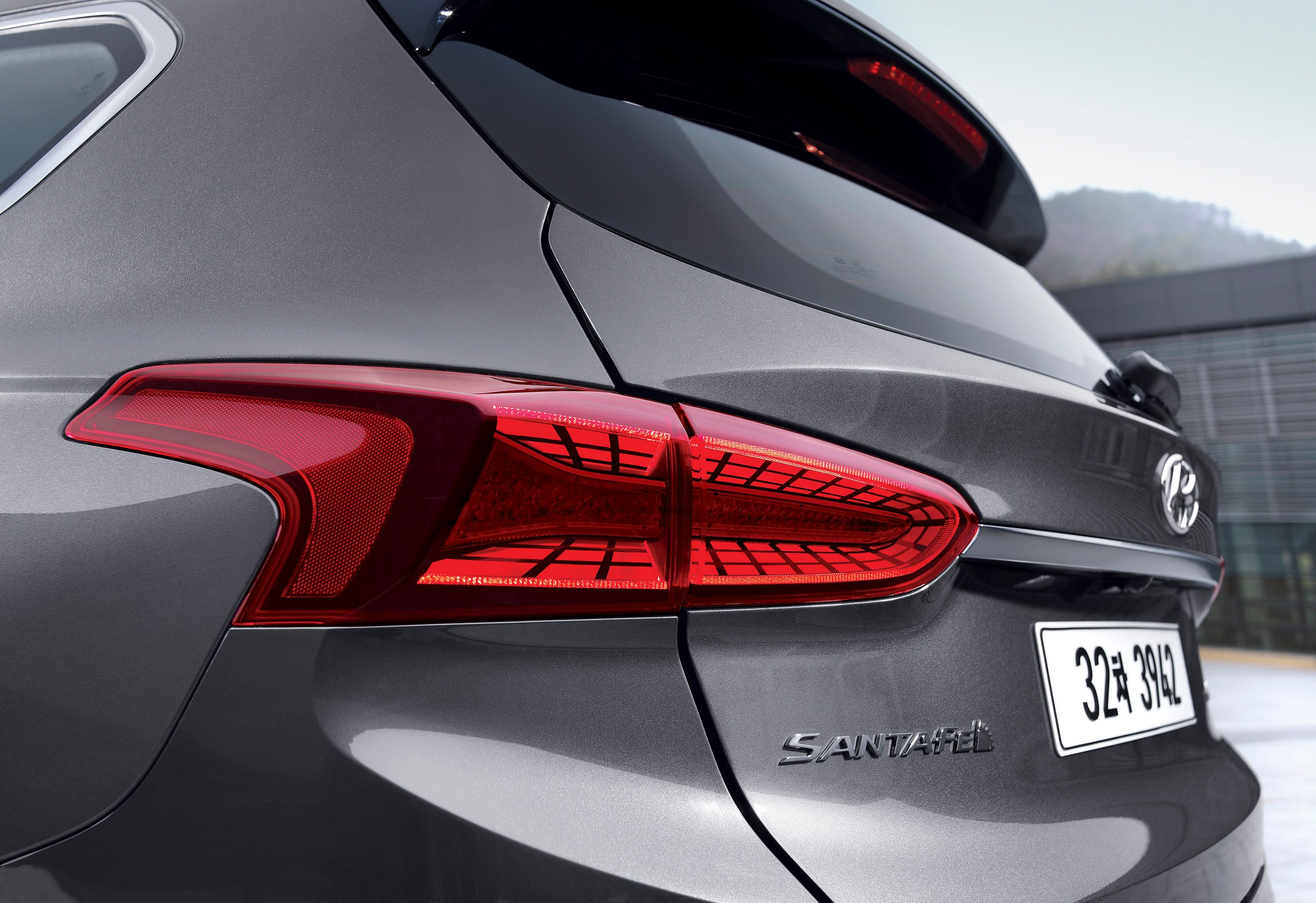
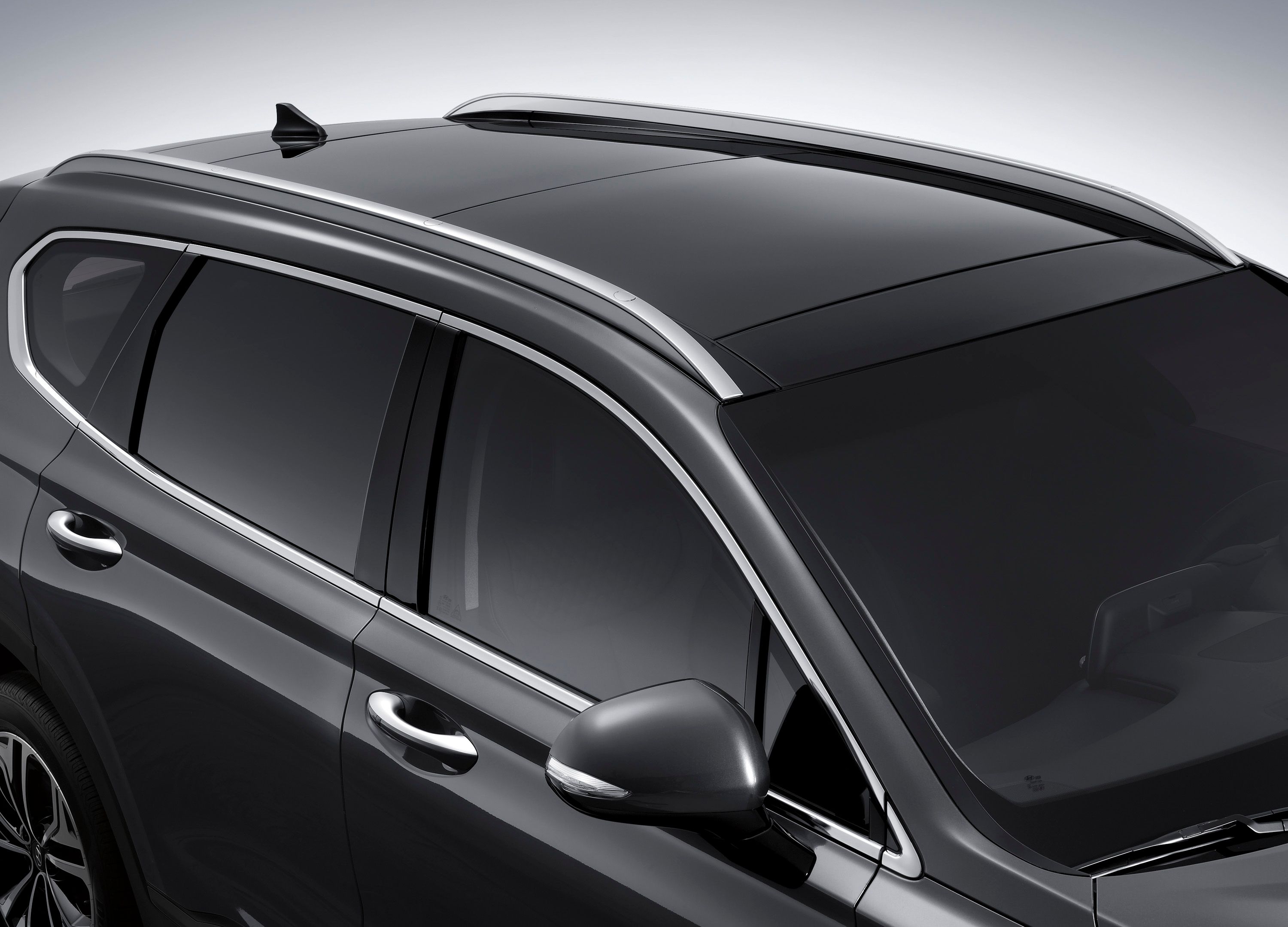
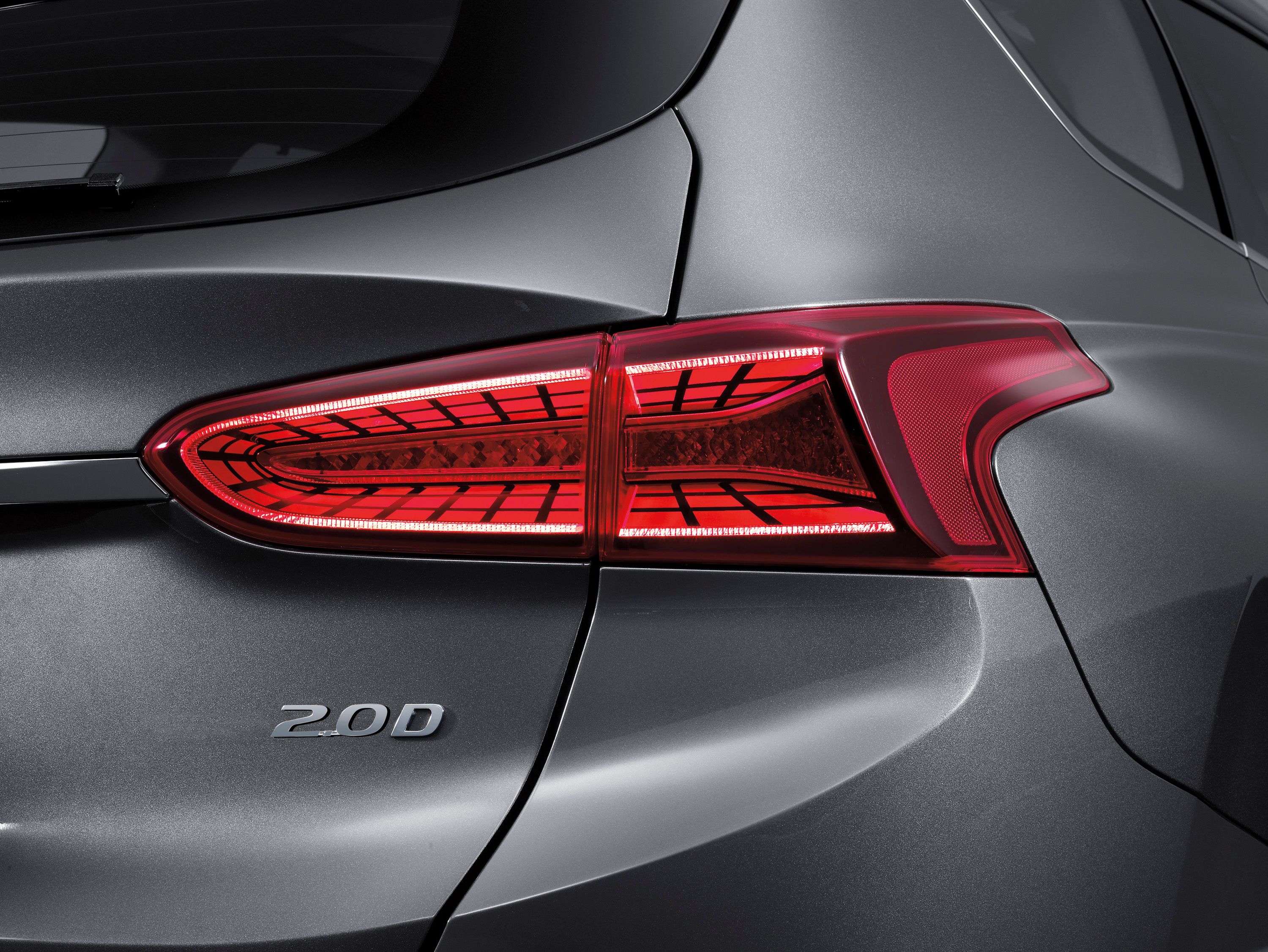
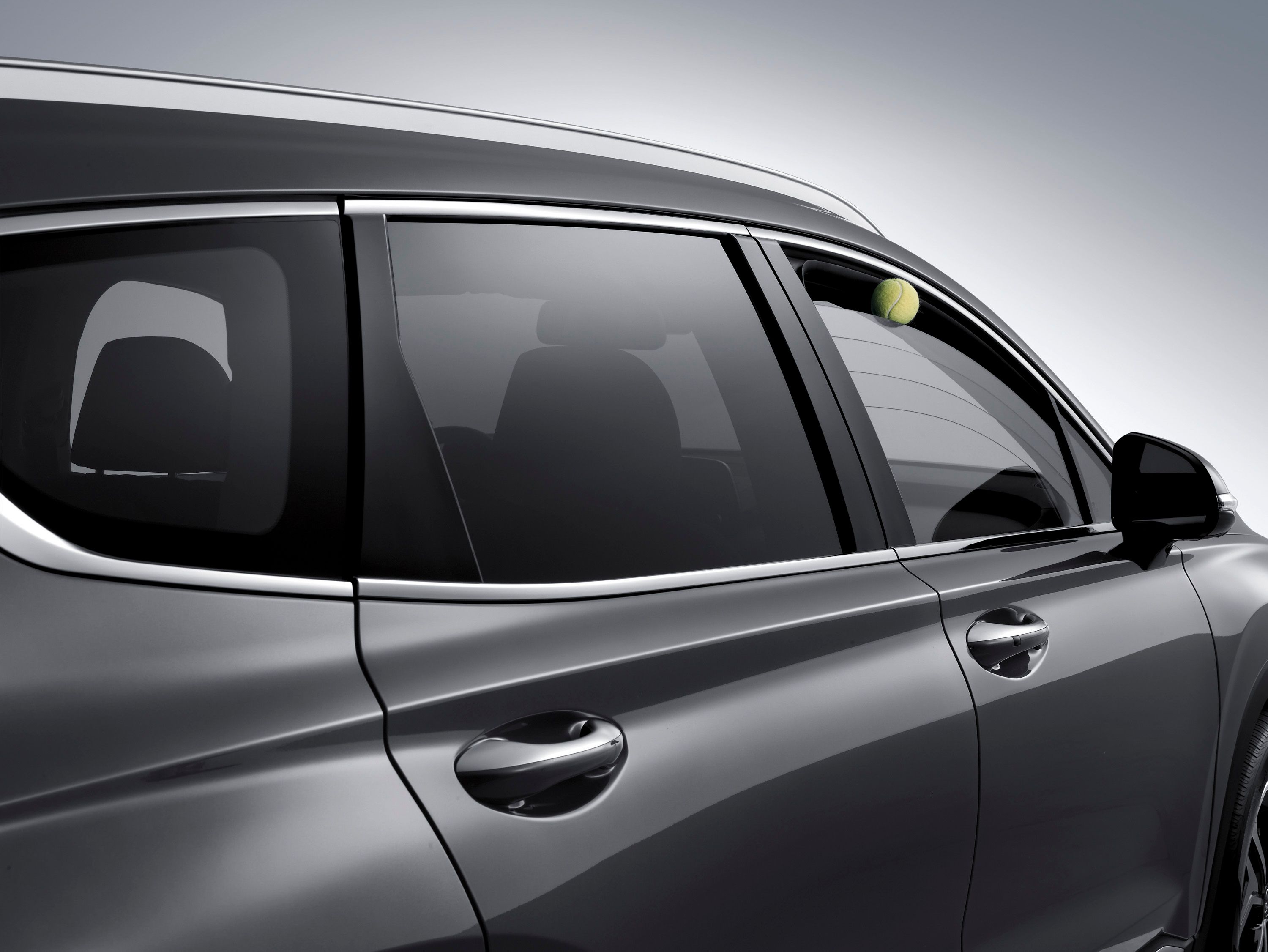
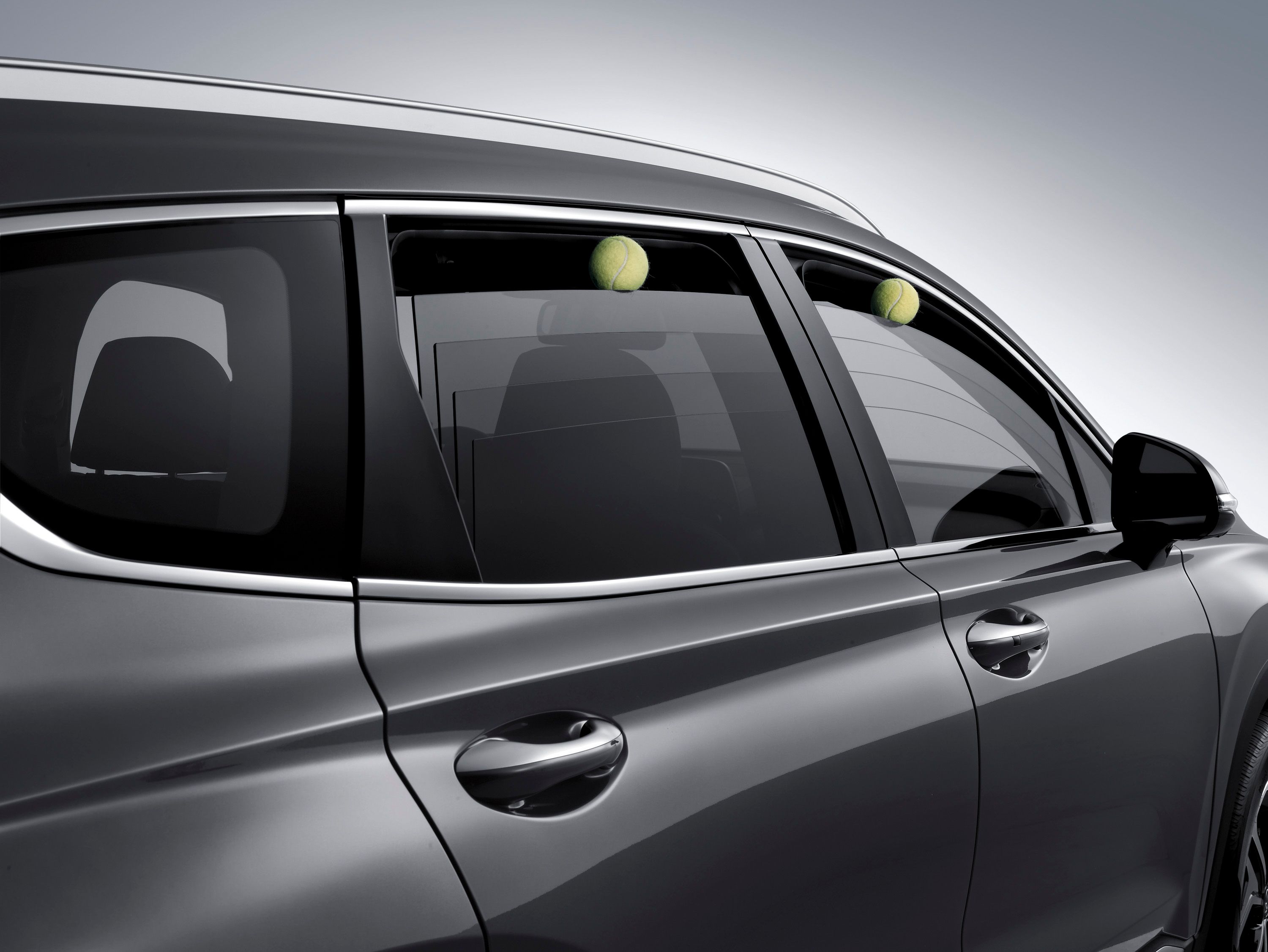
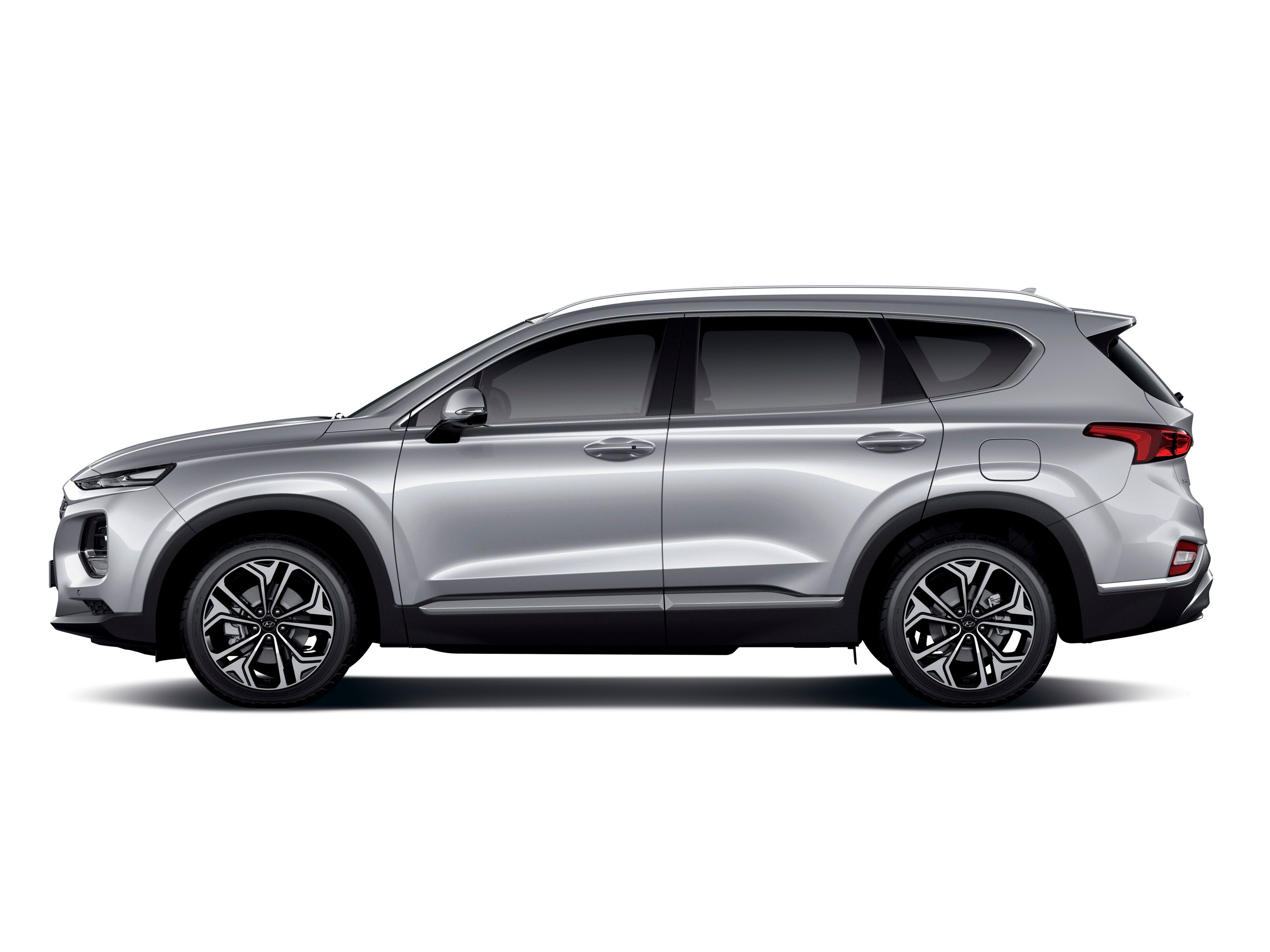
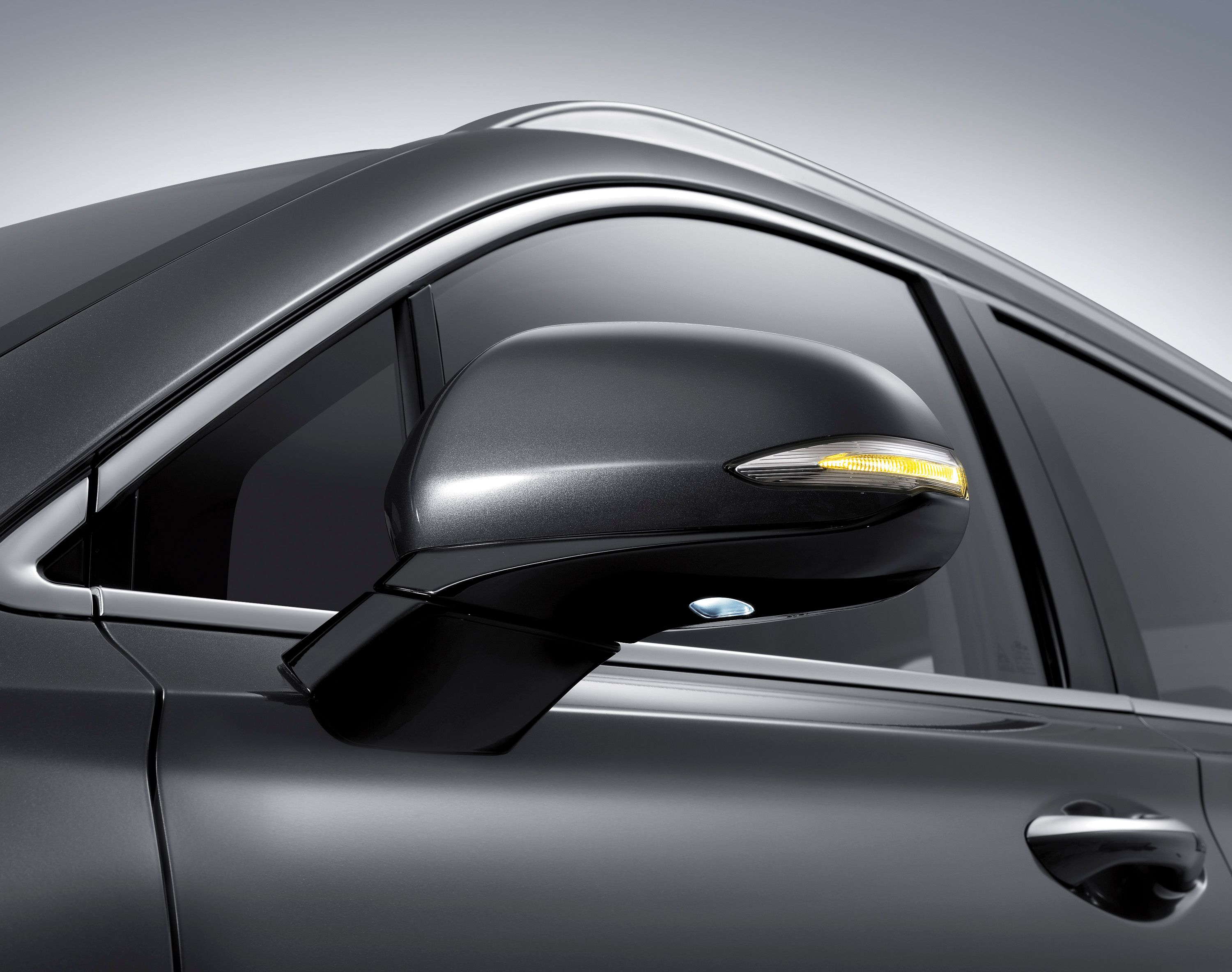

- Make: Array
- Model: 2019 Hyundai Santa Fe
- Engine/Motor: inline-4
- Horsepower: 185 @ 6000
- Torque: 178 @ 4000
- Transmission: six-speed automatic
- [do not use] Vehicle Model: Array
2019 Hyundai Santa Fe - Exterior

The 2019 model year Hyundai Santa Fe brings a fresh exterior styling that definitely changes things up from previous model years. The aesthetic looks to take cues from the new Hyundai Kona, and overall, we're liking what we see.
Starting in front, we find the headlight housings are now reshaped into very narrow units mounted high on the fenders, stretching rearwards at an aggressive angle. These use LEDs for the daytime running lights, while additional projectors are found just below. Further LEDs are used for forward illumination. Hyundai calls it a Composite Light design, and it definitely helps the Santa Fe stand apart. The middle section of the fascia is dominated by the brand's latest Cascading Grille design, which gets a metal honeycomb insert with polished slats. A silver trim line connects the two headlight housings and adds a unique splash of design innovation to the front end. Lower in the bumper is a metal-look skidplate element and flat-black rock guard.

Moving around to the sides, the 2019 Hyundai Santa Fe gets the traditional tall and muscular stance, with a variety of creases and character lines in place to pump up the look. The fenders and lower skid skirts continue the flat-black rock guard started in front, while the fenders get rounded flares to enhance the SUV's natural beefiness. Character lines were also added higher up, stretching between the headlights to the taillights. The windows get a polished metal surround, while 19-inch diamond cut wheels reside in the corners. Hyundai also says it managed to enhance outward visibility, with the side-view mirrors moved lower and further back on the body. There are smaller A-pillars as well, while the rear quarter glass gets a 40-percent size increase.
Finally, in the rear, we find the taillights get a narrow, triangular shape much like the headlights, and the flat-black rock guard is embellished with another silver skidplate element. A subtle roof spoiler completes the look.
The 2019 Hyundai Santa Fe is also larger than the outgoing model, gaining inches in pretty much every important measurement. Check out the details in the table below.
2019 Hyundai Santa Fe - Exterior Dimensions
|
Exterior Size |
2018 Hyundai Santa Fe |
2019 Hyundai Santa Fe |
|
Length |
185 inches |
187 inches |
|
Width |
74 inches |
75 inches |
|
Wheelbase |
106.3 inches |
108.9 inches |
2019 Hyundai Santa Fe - Interior

Thanks in part to the larger exterior dimensions, the 2019 Hyundai Santa Fe offers greater interior room, including more room behind the second row. To help enhance the gains made with the larger body, Hyundai relocated the window switches and grab handles to add elbow room, while simultaneously reducing the map pocket size for greater legroom. The cup holders were moved and placed in a more convenient location, and there's a higher and longer center armrest, also in the name of greater comfort. The floor was lowered.
Hyundai describes the Santa Fe's interior as “family-oriented,” and as such, it gets all the right stuff for moving people big and small from A to B. The various cabin configurations also get a little bit of a shuffle heading into the 2019 model year. For starters, the five-passenger seating arrangement offered by the Santa Fe Sport is retained, but it drops the “Sport” nomenclature and is now simply called the “Santa Fe.” There's also a long wheelbase seven-passenger three-row version called the Santa Fe XL, and an eight-passenger version is currently under development. The diesel option also gets an “occasional-use” third-row seat that offers a one-touch folding second row “for easy entry into the third-row by children.”
Up front is a horizontal control layout, with the main infotainment screen moved higher on the dash and mounted in an upright fashion, offering greater real estate in the center console and simplifying the button layout. It was also tilted to help reduce glare. A three-dimensional instrument panel gets multiple tiers of buttons and knobs, while the upholstery is complete with color-contrast stitching for that premium appearance.
And, as we all know, any modern SUV worth its salt needs a full range of technology features to compete. The 2019 Hyundai Santa Fe certainly doesn't disappoint, as it comes packed to the gills with modern tech stuff.

The driver assists and safety tech are all on point, and include standouts like Rear Cross-Traffic Collision Avoidance, Smart Cruise Control, Forward Collision-Avoidance Assist, and Lane Departure Warning. There's also Blind Spot Detection, which uses radar to detect obstacles and will automatically apply the brakes if needed. For buyers who frequently travel with the little ones, there's Rear Seat Occupant Alert, which is new from Hyundai in the 2019 Santa Fe. This feature can detect children and pets in the rear seat and provide the driver with a reminder message in the center information screen of the gauge cluster. “If the system detects movement in the rear seats after the driver leaves the vehicle it will honk the horn, flash the lights and send a Blue Link alert to the driver's smartphone via Hyundai's Blue Link connected car system,” the automaker explains. Another Hyundai first is the Safe Exit Assist, which will keep the door locked when it detects a motorcycle, another car, or a cyclist approaching from behind, sounding an alert and displaying a warning in the center cluster as well.
Hyundai is offering the AVN 5.0 navigation system on higher trim levels, while the base model comes standard with a 7.0-inch touchscreen. Android Auto and Apple CarPlay provide the requisite smartphone support, and there's optional Qi wireless charging.

Audiophiles will want to get into the Infinity premium sound system, which offers 630 watts of power pumped through 12 speakers, plus an 11-channel amp, Clari-Fi digital sound processing, and the QuantumLogic Surround Sound tech. The speed-sensitive volume automatically controls the gain for clearer sound while on the move.
If you really wanna get techy with it, go for the optional heads-up display, which projects an 8.5-inch virtual image onto the windshield, providing the driver with info like vehicle assist system status and the current posted speed limit.
Finally, the 2019 Hyundai Santa Fe gets Blue Link with three yeas of complimentary service, providing users with features like Remote Start and Remote Climate Control, Remote Door Lock and Unlock, Car Finder, Enhanced Roadside Assistance, and Stolen Vehicle Recovery. Users can operate Blue Link via buttons on the rear-view mirror, an online web portal, a smartphone app, Amazon Alexa, or Google Assistant.
2019 Hyundai Santa Fe - Interior Dimensions
|
Passenger Volume |
110.7 (2-row) |
|
Total Interior Volume |
147.3 (2-row) |
|
Cargo – Behind FR Seat |
71.3 (2-row) |
|
Cargo – Behind 2nd Row |
36.6 (2-row) |
|
Cargo – Behind 3rd Row |
11.6 (2019 diesel only) |
|
Head Room (front/middle/back) |
40.0 / 39.2 / 36.1 |
|
Leg Room (7P) (front/middle/back) |
44.1 / 40.4 (39.4) / 29.4 |
|
Shoulder Room (front/middle/back) |
59.1 / 58.3 / 52.9 |
2019 Hyundai Santa Fe - Drivetrain

The 2019 Hyundai Santa Fe will come with three unique engine options to choose from, including a single diesel option and two gas options. Let's start with the oil burner, which is a 2.2-liter CRDi turbodiesel making 200 horsepower at 3,000 rpm and 320 pound-feet of torque at 1,750 rpm. Representing the gasoline camp is a turbocharged 2.0-liter four-cylinder making 232 horsepower, and a 2.4-liter inline four-cylinder GDI making 185 horsepower.
Each of the engine configurations is connected to a new eight-speed automatic transmission, which gets the option for shift paddles mounted on the steering column. This new gearbox is lighter than the older six-speed model, and it gains a new ratio range at the top and bottom of the gears for “extra thrust off-the-line and a quieter, more fuel-efficient dash down the interstate.” Highlights include a direct control valve body and a multi-plate torque converter. It's expected that the new transmission alone will improve fuel efficiency by more than 3 percent.
Making the most of available torque is the Hyundai HTRAC AWD system. This multi-mode set-up includes an electronic variable-torque-split clutch, which provides active control over torque distribution between the front and rear. The multiple modes include Normal, Sport, and Smart, with Sport mode sending more torque rearwards for an extra aggressive handling feel.
2019 Hyundai Santa Fe - Drivetrain Dimensions
|
2.4L |
2.0L |
2.2L Diesel |
|
|
Type |
Theta-II 2.4 GDI, 16-valve, DOHC, 4-cylinder in-line |
Theta-II 2.0 T-GDI, DOHC D-CVVT (Dual Continuously Variable Valve |
|
|
Timing) 4-cylinder |
R 2.2, 16-valve MLA, DOHC, 4-cylinder in-line |
||
|
Turbo Type |
Twin Scroll |
||
|
Materials |
Aluminum block and head |
Aluminum block and head |
|
|
Bore & stroke (mm) |
88 x 97 |
86 x 86 |
85.4 x 96 |
|
Compression ratio |
11.3:1 |
10.0:1 |
16.0: 1 |
|
Displacement |
2.4 liters / 2,359 cc |
2.0 liters / 1,998 cc |
2.2 liters |
|
Horsepower |
185 HP @ 6,000 RPM (est.) |
235 HP @ 6,000 RPM |
190 HP @ 3,800 RPM |
|
Torque |
178 LB-FT @ 4,000 RPM (est.) |
260 LB-FT @ 1,450~3,500 RPM |
322 LB-FT @ 1,750 - 2,500 RPM |
|
Valves per cylinder |
4 |
4 |
4 |
2019 Hyundai Santa Fe - Chassis And Handling

With extra space in the cabin and the latest tech features to coddle and ease your mind, it makes sense that Hyundai also got into making the Santa Fe more refined in terms of ride quality and handling. To that end, the 2019 model year includes fresh suspension geometry changes, with the rear shock now mounted upright. Buyers can also get into the optional self-leveling suspension, which is particularly helpful if you frequently carry loads of stuff or haul a trailer. Basically, the suspension offers comfort when you're not hauling stuff, plus stiffer settings when you are hauling stuff.
2019 Hyundai Santa Fe - Prices

The 2019 Hyundai Santa Fe will arrive in dealers this summer. An official MSRP has not yet been announced, but we don't expect any major deviations from the current pricing structure. Check back here for official figures when they are announced, but in the meantime, check out the pricing table below for the 2018 mode year to get an idea where the 2019 model year will land.
|
Model |
Drivetrain |
MSRP* |
|
SE 2.4 |
Front-Wheel Drive |
$25,500 |
|
SE 2.4 |
All-Wheel Drive |
$27,200 |
|
SEL 2.4 |
Front-Wheel Drive |
$27,600 |
|
SEL 2.4 |
All-Wheel Drive |
$29,300 |
|
SEL Plus 2.4 |
Front-Wheel Drive |
$29,800 |
|
SEL Plus 2.4 |
All-Wheel Drive |
$31,500 |
|
Limited 2.4 |
Front-Wheel Drive |
$32,600 |
|
Limited 2.4 |
All-Wheel Drive |
$34,300 |
|
Ultimate 2.4 |
Front-Wheel Drive |
$35,450 |
|
Ultimate 2.4 |
All-Wheel Drive |
$37,150 |
|
Limited 2.0T |
Front-Wheel Drive |
$34,200 |
|
Limited 2.0T |
All-Wheel Drive |
$35,900 |
|
Ultimate 2.0T |
Front-Wheel Drive |
$37,100 |
|
Ultimate 2.0T |
All-Wheel Drive |
$38,800 |
2019 Hyundai Santa Fe - Competition
Honda CR-V
Honda just introduced the fifth-gen CR-V for the 2017 model year, which makes it a relatively fresh offering against the brand-new Santa Fe. Chrome detailing and an upright stance characterize the exterior styling for the Honda, while soft-touch surfaces and a floating touchscreen make up the interior goods. Under the hood, you'll find a 2.4-liter four-cylinder engine making 184 horsepower and 180 pound-feet of torque, while higher up, a turbo is added to a 1.5-liter 'four, making upwards of 190 horsepower and 179 pound-feet of torque. Pricing starts at $24,045.
Read our full review on the 2017 Honda CR-V.
Toyota RAV4
The Rav-4 is undoubtedly one of Toyota's hottest sellers, and for good reason – it's got tons of equipment, it's extremely safe, and it represents good value for the money. The latest face lift looks pretty good too, with a sporty, aggressive design that's loaded with details. While parts of it are a bit outdated (the interior, for example, is a bit reminiscent of the early 2000's), the rest of it does well for the segment, especially with its numerous convenience and safety features. Making the go is a 2.5-liter four-cylinder that creates 176 horsepower and 172 pound-feet of torque, but there's a hybrid on the table as well, which makes upwards of 194 horsepower. Pricing starts at $24,910.
Read our full review on the 2016 Toyota RAV4.
Conclusion

With the crossover segment still dominating sales in the U.S., a fresh Santa Fe is very much appreciated from the South Korean brand. Overall, we're quite excited to see these updates, as they seem to address each of the previous Santa Fe's weaknesses. The exterior styling, while polarizing, is definitely more attention-grabbing than it was before, while the interior design is unarguably a step forward. We also really like the wide range of technology features offered this time around, and the extra passenger room is always a plus.
In terms of the engine offerings, we're surprised to see Hyundai digging into the diesel parts bin, but not unpleasantly so. With so many other automakers exiting the fuel, Hyundai may be able to snag a few new customers.
Overall, this is definitely one SUV that's worth checking out.
References
Read our full review on the 2017 Hyundai Santa Fe.
Read our full driven review on the 2017 Hyundai Santa Fe.
Read more Hyundai news.
Update History
Update 8/18/2017: It’s only been two months since the fourth-gen Santa Fe was caught stretching its wheels on the Nurburgring, and now it’s back out on public roads with less camo and a big smile. Check out the latest spy shots and what we can spot in the Spy Shots section below.
Updated 06/20/2017: Our spy photographers caught the upcoming Hyundai Santa Fe out for a new testing session around the famous Nurburgring race track.
Spy Shots
August 18, 2017 – The Santa Fe hits the road with a smile on its face


The next-gen Santa Fe has eluded since the last time we saw it, but we finally caught it while it was out putting in more work. This time around, it’s lost all of the padding up front, which is exactly what we needed to see what the next-gen SUV will be working with in the style department. As expected, its resemblance to the Hyundai Kona is uncanny. The next-gen Santa Fe will get the same general design cues up front, including the thin LED strips up top, well above the headlights that are positioned in the middle of the front corners. A small air passage can be found in the lower corner on each side which could ultimately be used as a mounting point for the fog lights. The air dam in the middle actually looks to be functional, sporting an almost all open design with the exception of the very center that will likely serve as a home for a radar sensor or front-facing camera.
But, let’s not ignore the elephant in the room – that radiator grille. Previously, we couldn’t make out more than a general shape and, with all of the padding, there was no way to know for sure just what the grille would look like. It rocks the same honeycomb mesh as the air dam and the Konda SUV and has that big Hyundai emblem in the middle – even if we can’t see it quite yet. The shape of the grille itself is quite similar to that of the Kona, but it’s unique in its own way with the side edges being more curved and more defined. The upper corners also feature a bit more of a curve while the grille itself is actually a bit shorter and wider in comparison.
With the padding gone from the hood and the roof, we can also make out a couple of other design credentials that prove Hyundai favors this design language. First off, the edges of the hood are elevated quite dramatically with these mountainous creases that feed from the A-pillars forward, toward the nose. As far as the roof goes, we can now see the side rails and the general design of the rear overhang, at least from the front anyway. Unfortunately, only the front end dropped its padding and camo, so that’s all we have to go by now, but check out how the front end compares to the Kona:

|
2019 Hyundai Santa Fe |
Let us know what you think in the comments section below and stay tuned for updates in the future!
June 20, 2017 - Hyundai Santa Fe caught testing at Nurburgring



